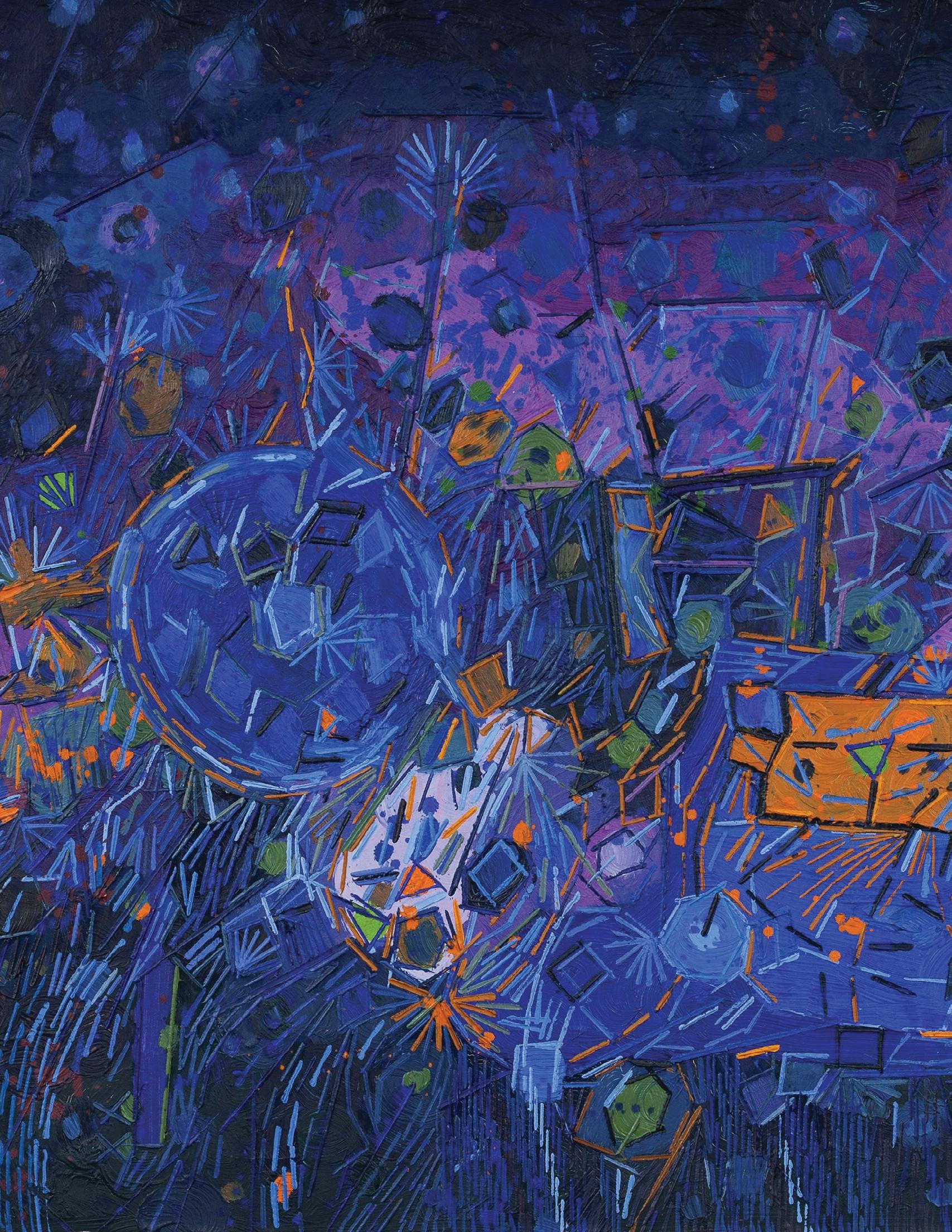
JULY 28–AUGUST 26, 2023


JULY 28–AUGUST 26, 2023
30 SUNDAY
PERFORMANCE
COACHING WORKSHOP
ENCOUNTER
OPEN REHEARSAL
PRELUDE ARTIST LOUNGE
PRELUDE · 2 PM · The JAI Lecture by Michael Gerdes
A SONG TO REMEMBER • 3 PM
31 MONDAY AUG 1 TUESDAY
COACHING WORKSHOPS
10 AM–12 PM · The JAI
ARTIST LOUNGE with Erin Keefe hosted by Leah Rosenthal
1 PM • The Atkinson Room
LA JOLLA MUSIC SOCIETY THE CONRAD PREBYS
PERFORMING ARTS CENTER
7600 FAY AVENUE LA JOLLA, CA 92037
For parking information please visit TheConrad.org
6 SUNDAY MYTHS AND RITES · 3 PM
TAKEOVER @ THE JAI WITH THOMAS ADÈS
7 PM · The JAI
13 SUNDAY
PRELUDE · 2 PM · The JAI Lecture by Karen Koner PROMISES, PROMISES 3 PM
7 MONDAY
8 TUESDAY
COACHING WORKSHOPS
10 AM–12 PM · The JAI
ARTIST LOUNGE BOOK CLUB with Edward Dusinberre hosted by Leah Rosenthal
1 PM • The Atkinson Room
OPEN REHEARSAL 2:30-3:30 PM Beach’s Piano Quintet in F-sharp Minor, Op. 67
14 MONDAY
ENCOUNTER · 2 PM
Fellowship Artist Spotlight I with Rose Lombardo

15 TUESDAY
COACHING WORKSHOPS
10 AM–12 PM · The JAI
ARTIST LOUNGE withMichael Thurber and Tessa Lark hosted by Leah Rosenthal
1 PM • The Atkinson Room
20 SUNDAY
21 MONDAY
ENCOUNTER 2 PM
Fellowship Artist Spotlight II with Sterling Elliott
22 TUESDAY
COACHING WORKSHOPS
10 AM–12 PM · The JAI
ARTIST LOUNGE with Anthony McGill hosted by Leah Rosenthal
1 PM • The Atkinson Room
OPEN REHEARSAL · 3–4 PM Tchaikovsky’s Souvenir de Florence
27 THURSDAY
OPEN REHEARSAL
11:30 AM-12:30 PM
Mozart’s String Quintet No. 2 in C Minor, K.406
28 FRIDAY
29 SATURDAY
PRELUDE · 6:30 PM · The JAI
Interview with Inon Barnatan hosted by Leah Rosenthal
OPENING NIGHT: EXPECT THE UNEXPECTED • 7:30 PM
2 WEDNESDAY
COACHING WORKSHOPS
10 AM–12 PM · The JAI
PRELUDE · 6 PM · The JAI
Interview with Thomas Adès hosted by Inon Barnatan
FANTASTIC TALES · 7 PM

9 WEDNESDAY
COACHING WORKSHOPS
10 AM–12 PM · The JAI
PRELUDE · 6 PM
Performance by Quartet Integra
THE GREAT AMERICANS
7 PM
16 WEDNESDAY
COACHING WORKSHOPS
10 AM–12 PM · The JAI
ENCOUNTER · 2 PM · The JAI
Reimagining Carnival of the Animals
PRELUDE · 6 PM
Performance by trioJEM
SLAVONIC DANCES 7 PM
23 WEDNESDAY
COACHING WORKSHOPS
10 AM–12 PM · The JAI
PRELUDE · 6 PM
Performance by trioJEM
SOUVENIRS · 7 PM
3 THURSDAY
COACHING WORKSHOPS
10 AM–12 PM · The JAI
JAZZ @ THE JAI WITH LUCY YEGHIAZARYAN & VANISHA GOULD
6 & 8:30 PM · The JAI
10 THURSDAY
COACHING WORKSHOPS
10 AM–12 PM · The JAI
COMMUNITY CONCERT
7:30 PM · First Unitarian Universalist Church of San Diego
17 THURSDAY
COACHING WORKSHOPS
10 AM–12 PM · The JAI
4 FRIDAY
ENCOUNTER · 2 PM · The JAI
Exploring the Music of Thomas Adès with Alex Ross
PRELUDE · 6:30 PM
Performance by Quartet Integra
DREAMS AND PRAYERS • 7:30 PM
11 FRIDAY
PRELUDE · 6:30 PM
Lecture by Michael Gerdes
NEW GROUND · 7:30 PM
18 FRIDAY
PRELUDE · 6:30 PM · The JAI Interview with Francesca Harper hosted by Molly Puryear
JAZZ @ THE JAI WITH THE LOUIS CATO TRIO • 6 & 8:30 PM · The JAI
24 THURSDAY
COACHING WORKSHOPS
10 AM–12 PM · The JAI
ENCOUNTER · 2 PM · The JAI
A Room of Her Own with Ara Guzelimian
SYNERGY: CARNIVAL OF THE ANIMALS 7:30 PM
25 FRIDAY
PRELUDE · 6:30 PM · The JAI
Lecture by Kristi Brown Montesano
JOURNEY IN LIGHT • 7:30 PM
5 SATURDAY
OPEN REHEARSAL
1:30-2:30 PM
Stravinsky’s The Rite of Spring
PRELUDE · 6:30 PM
Performance by trioJEM
MAGIC AND ALCHEMY 7:30 PM
12 SATURDAY
5 PM · The Conrad
19 SATURDAY
PRELUDE · 6:30 PM · The JAI Interview with the Artists hosted by Allison Boles
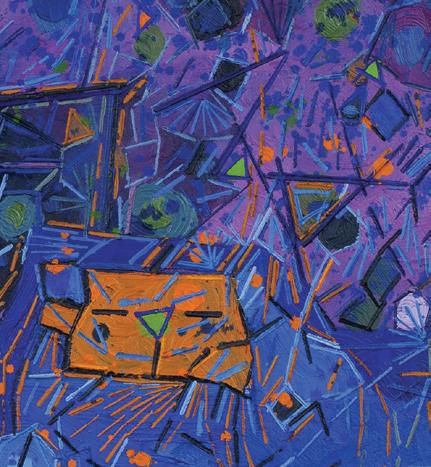
SYNERGY: AMERICAN CLASSIC CATO/ DOVER/LARK/THURBER · 7:30 PM
26 SATURDAY
PRELUDE · 6:30 PM · The JAI Lecture by Ara Guzelimian
UNSILENCED VOICES • 7:30 PM
PRELUDE · 6:30 PM
Performance by Quartet Integra
SUMMERFEST FINALE: SERENADES 7:30 PM
Free On-Demand Viewing
Free In-Person Admission with Purchased Concert Ticket
Find more information about pre-concert Prelude lectures, interviews, and performances on each concert program.
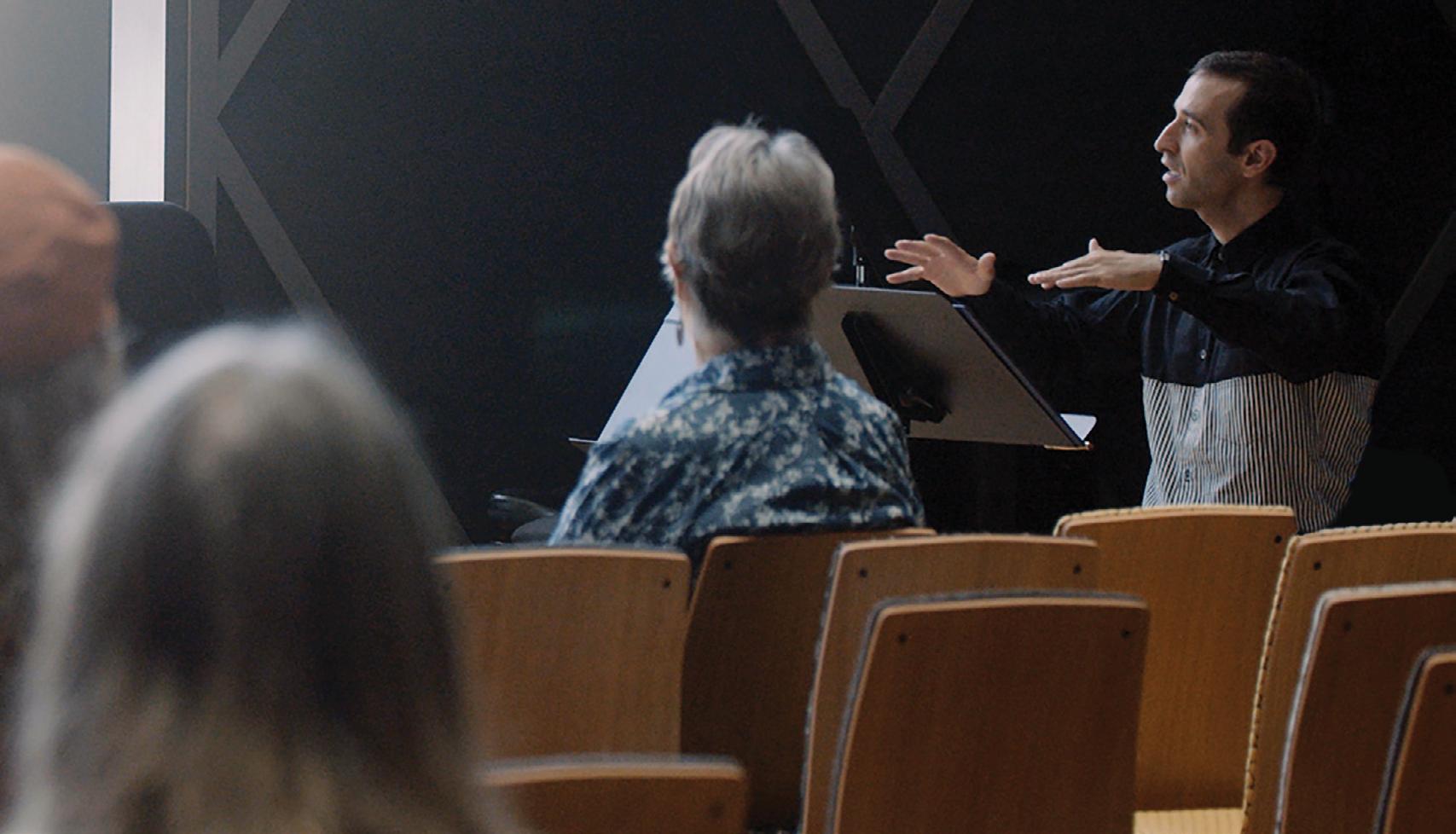
Free Admission · Limited Seating
Free Admission · Limited Seating
Open Rehearsals provide audience members with the rare opportunity to observe the intricate rehearsal process before the stage lights shine.
La Jolla Music Society’s Fellowship Artist Program is one of the longest-running SummerFest traditions. Follow these musicians as they prepare for their SummerFest performances with a series of master classes.
This year we welcome Fellowship Artists Quartet Integra: Kyoka Misawa, Rintaro Kikuno, violins ; Itsuki Yamamoto, viola ; Anri Tsukji, cello ; and trioJEM: Elliot Wuu, piano ; Max Tan, violin ; Julia Lee, cello .
Free Admission · Limited Seating
Featuring intriguing discussions, performance, and diverse perspectives, SummerFest Encounters reveal fascinating insights into the ways in which music is created, influenced, interpreted, and performed. To attend, register online at TheConrad.org.
THURSDAY
Free Admission · Limited Seating
The spark of creativity is unique for every individual. The Artist Lounge is an intimate, in-depth conversation hosted by Artistic Director Leah Rosenthal. To attend, register online at TheConrad.org.

11:30 AM–12:30 PM
* These events will also be recorded and available for free on-demand viewing.
† These events will also be live streamed and available for free on-demand viewing. Visit
Erin Keefe, Steven Copes, Rebecca Albers, Maiya Papach, and Oliver Herbert rehearse Mozart’s String Quintet in C Minor, K.406 (K.516b)
Inon Barnatan coaches trioJEM on Beethoven’s Piano Trio in E-flat Major Op. 1, No. 1
TUESDAY
1–2 PM
Efe Baltacigil coaches Quartet Integra on Brahms’ String Quartet in C Minor, Op. 51, No. 1
Artist Lounge with violinist Erin Keefe hosted by Artistic Director Leah Rosenthal. Registration required.
WEDNESDAY
THURSDAY
10–10:50 AM
11–11:50 AM
2–3:30 PM
Masumi Per Rostad coaches Quartet Integra on Brahms’ String Quartet in C Minor, Op. 51, No. 1
Zoltán Fejérvári coaches trioJEM Beethoven’s Piano Trio in E-flat Major Op. 1, No. 1
Blake Pouliot coaches Quartet Integra on Smetana’s String Quartet No. 1 in E Minor “From My Life”
Erin Keefe coaches trioJEM on Beethoven’s Piano Trio in E-flat Major Op. 1, No. 1
FRIDAY AUGUST 4 Encounter* The JAI
Exploring the Music of Thomas Adès: Alex Ross, award-winning author and music critic for The New Yorker, has been following the music of Thomas Adès since he first encountered it at the Aldeburgh Festival in 1995. Join Ross for a deep dive into the life and music of SummerFest 2023’s Composer-in-Residence. Registration required.
SATURDAY AUGUST 5
1:30–2:30 PM
Zoltán Fejérvári and Inon Barnatan rehearse Stravinsky’s The Rite of Spring for Two Pianos
Paul Wiancko coaches Quartet Integra on Smetana’s String Quartet No. 1 in E Minor “From My Life”
A member of trioJEM coaches a local student
TUESDAY
1–2 PM Special Artist Lounge Book Club exploring Distant Melodies: Music in Search of Home with author and violinist Edward Dusinberre hosted by Artistic Director Leah Rosenthal. Registration required.
2:30–3:30 PM Takács Quartet and Inon Barnatan rehearse Beach’s Piano Quintet in F-sharp Minor, Op. 67
WEDNESDAY
THURSDAY
10–10:50 AM 11–11:50 AM
A member of trioJEM coaches a local student Harumi Rhodes coaches trioJEM on Babajanian’s Piano Trio
Richard O’Neill coaches Quartet Integra on Shostakovich’s String Quartet No. 6 in G Major, Op. 101

Noah Bendix-Balgley coaches trioJEM on Brahms’ Piano Trio No. 1 in B Major
7:30–9 PM Fellowship artists trioJEM and Quartet Integra perform in the second annual free Community Concert presented in partnership with Front Street Productions. Registration required.
MONDAY
2–3:30 PM Fellowship Artist Spotlight I: Fellowship Artist Ensembles trioJEM and Quartet Integra perform with flutist Rose Lombardo. Registration required.
Tessa Lark coaches Quartet Integra on Mozart’s String Quartet in B-flat Major, K.458
“The Hunt” or Donatoni’s La souris sans sourire
MONDAY
WEDNESDAY
THURSDAY
MONDAY
Coaching
Lounge
The Atkinson Room
Joyce Yang coaches trioJEM on Babajanian’s Piano Trio
1–2 PM Artist Lounge with violinist Tessa Lark and bassist Michael Thurber hosted by Artistic Director Leah Rosenthal. Registration required.
Teng Li coaches Quartet Integra on Mozart’s String Quartet in B-flat Major, K.458
“The Hunt” or Donatoni’s La souris sans sourire
A member of Quartet Integra coaches a local student
2–3:30 PM
Reimagining Carnival of the Animals: Panel Discussion with the creatives behind this summer’s reimagination of Carnival of the Animals come together with by Allison Boles to discuss the project’s development. Registration required.
Inon Barnatan coaches trioJEM on Ravel’s Piano Trio in A Minor
Michael Thurber coaches a local student
2–3:30 PM
10–10:50 AM 11–11:50 AM
Fellowship Artist Spotlight II: Fellowship Artist Ensembles trioJEM and Quartet Integra perform with cellist Sterling Elliott. Registration required.
Stefan Jackiw coaches trioJEM on Ravel’s Piano Trio in A Minor
Open
Rehearsal† The Baker-Baum Concert Hall
AUGUST 23 Coaching Workshops
The
The
11–11:50 AM
Stefan Jackiw, Andrew Wan, Jonathan Vinocour, Matthew Lipman, Julie Albers, and Sterling Elliott rehearse Tchaikovsky’s Sextet for Strings in D Minor, Op. 70 “Souvenir de Florence”
Julie Albers coaches trioJEM on Ravel’s Piano Trio in A Minor
Andrew Wan coaches Quartet Integra on Shostakovich’s String Quartet No. 6 in G Major, Op. 101
THURSDAY AUGUST 24
2–3:30 PM
Encounter* The JAI
Table of Contents
A Room of Her Own: The Careers of Fanny Mendelssohn and Clara Schumann Ara Guzelimian celebrates Fanny Mendelssohn and Clara Schumann with an exploration of their life and work, along with performances by Fellowship Artists Max Tan and Elliot Wuu. Registration required.
Quick notes excerpted from program notes by Eric Bromberger, except where indicated.
Friday, August 4 · 6:30 PM
BRAHMS String Quartet in C Minor, Opus 51, No. 1 (1833–1897)
Allegro brillante
Romanze: Poco Adagio
Allegretto molto moderato e comodo
Allegro
Quartet Integra
Kyoka Misawa, Rinato Kikuno, violins; Itsuki Yamamoto, viola; Anri Tsukiji, cello
Saturday, August 5 · 6:30 PM
BEETHOVEN Piano Trio in E-flat Major, Opus 1, No. 1 (1770–1827)
Allegro
Adagio cantabile
Scherzo: Allegro assai – trio
Finale: Presto trioJEM
Elliot Wuu, piano; Max Tan, violin; Julia Lee, cello
Wednesday, August 9 · 6 PM
SMETANA String Quartet No. 1 in E Minor “From My Life” (1824-1884)
Allegro vivo appassionato
Allegro moderato à la Polka
Largo sostenuto
Vivace Quartet Integra
QUICK NOTE:
There is something very Beethoven-like about Brahms’ Quartet in C Minor This is not music that sets out to charm the heart or please the ear. Rather, it impresses by its fierce logic and the economy of its means: the entire quartet is unified around a central musical idea. The opening Allegro takes character and much of its shape from this theme, heard at the very opening. Brahms marks the second movement Romanze, which suggests music of a lyric or gentle nature, and here he alternates two ideas that—in the aftermath of the first movement—do seem gentle. Brahms presents two themes simultaneously at the beginning of the Allegretto as the first violin’s chain of sixteenths pulses steadily above the viola’s wistful tune. The trio section brings the quartet’s one moment of sunshine as the first violin sings a little waltz-tune. The finale brings back the furies and the concentration of the first movement.
Listeners should not be deceived by this trio’s opus number, for this is by no means Beethoven’s first composition. When he arrived in Vienna in 1792, he had already written many works under the supervision of his teachers in Bonn. He chose for this first official publication a set of three piano trios on which he had worked for several years. The piano trio of Mozart and Haydn’s day was typically a brief work in three movements in a fast-slow-fast sequence. While Beethoven’s first trios are by no means revolutionary, one feels that he has already taken over the earlier form and tried to make it his own. He adds an extra movement—a scherzo —to each of these trios, and he expands the scope and development of the other movements to the point that they become large-scale works.
QUICK NOTE:
Smetana’s life is a story of triumph and tragedy. Written in 1876, shortly after he had resigned all of his musical positions because of his deafness, the first of Smetana’s two string quartets is autobiographical, as its subtitle “From My Life” makes explicit. Smetana supplied an elaborate program for this music, and it is clear he intended that this quartet should tell the story of his life. The Allegro vivo appassionato opens with a long viola theme that Smetana identified with the “love of art in my youth, my romantic mood, the unspoken longing for something which I could not name or imagine clearly.” If the first movement is “about” the composer’s love of music and art, the second tells of another of his loves—dancing. Smetana said that the Largo sostenuto recalled “the happiness of my first love for the girl who later became my faithful wife.” The finale, marked Vivace, is astonishing. It’s full of folk-like tunes and high spirits and is a stunning conclusion to one of the most moving quartets ever written.
Wednesday, August 16 · 6 PM
BABAJANIAN Piano Trio in F-sharp Minor (1921–1983) Largo – Allegro espressivo
Andante
Allegro vivace
trioJEM
Wednesday, August 23 · 6 PM
RAVEL Piano Trio in A Minor (1874-1951) Modéré
Pantoum (Assez vite)
Passacaille (Très large)
Finale (Animé)
trioJEM
Saturday, August 26 · 6:30 PM
SHOSTAKOVICH String Quartet No. 6 in G Major, Opus 101 (1875-1937)
Allegretto
Moderato con moto
Lento
Allegretto Quartet Integra
QUICK NOTE:
A national hero in his native Armenia, Arno Babajanian is an unfamiliar name in the West. Babajanian was teaching at the conservatory in Yerevan, the capital of Armenia, in 1952 when he wrote his Piano Trio. This piece— considered one of his most important works—is full of passion with rich lines for all three instruments. The first movement begins in a subdued and somber tone with the strings playing the main theme in unison. This theme reappears in each of the following movements. The second movement begins softly with the violin sweetly introducing the main theme high in its range. The cello joins and the theme intertwines and soars between the instruments. The finale, Allegro vivace, is mostly in 5/8 time and full of energy. It features two themes which stand in stark contrast to each other. The trio ends with the appearance of the opening theme and leads to a short stormy coda.
—Allison BolesQUICK NOTE:
In February 1914, Ravel went to Saint-Jean-de-Luz, a small village on the French coast near the Spanish border to work on two projects he had planned for some time: a piano concerto using Basque themes and a piano trio. He soon abandoned plans for the concerto, but the Piano Trio is one of Ravel’s finest chamber works, featuring brilliant writing for all three performers and a range of instrumental color rare in a piano trio.
QUICK NOTE:
Along with the First, the Sixth is the most light-hearted of the cycle of Shostakovich quartets. Despite some moments of stridency in the development sections of its outer movements, this quartet has an almost divertimento-like character. It is melodic and relaxed, and while based on rigorous forms—sonata-form outer movements, scherzo, and passacaglia— the music does not depend on conflict and resolution. Beneath its genial surfaces, however, the Sixth is constructed with a remarkable degree of unity, a unity that grows out of its cyclic treatment of themes.

All concerts begin promptly at the time stated on admission tickets. Latecomers will be seated after the first work has been performed or at the first full pause in the program as designated by the performing artists. Patrons leaving the hall while a performance is in progress will not be readmitted until the conclusion of the piece. Those who must leave before the end of a concert are requested to do so between complete works and not while a performance is in progress. If you require special seating or other assistance please notify the House Manager.
Unauthorized photography (with or without flash), audio and video recordings are strictly prohibited. Please silence all electronic devices during the performance. SummerFest concerts are recorded for archival and broadcast use, and we ask for your assistance in assuring high quality sound on these recordings.
We encourage any patron who is unable to attend a performance to return tickets to La Jolla Music Society Ticket Office so that someone else may use them. In order to ensure that returned tickets can be allocated
appropriately, La Jolla Music Society Ticket Office must receive notification and proof of destroyed tickets no later than 24 hours prior to the performance.
Children under the age of 6 (six) are not permitted in the concert hall.
All of La Jolla Music Society’s program notes are protected under copyright by the authors. For permission and information on use of contents of this publication contact Mktg@TheConrad.org.

To enhance cultural life and engagement by presenting and producing a wide range of programming of the highest artistic quality, and to make The Conrad Prebys Performing Arts Center a vibrant and inclusive hub.

7600 Fay Avenue
La Jolla, California 92037
Administration: 858.459.3724
La Jolla Music Society at The Conrad is delighted to renew our longstanding relationship with the Museum of Contemporary Art San Diego, whose stunning La Jolla campus recently reopened after a lengthy renovation. Following the longstanding tradition of featuring artworks from the MCASD collection on our SummerFest posters and programs, we invite you to visit the Museum to see Lee Mullican’s Electric Night in person, on display through the summer.

Surprise is indeed a powerful weapon. It can make us delighted, giddy, uneasy, shocked, amused… but it rarely fails to evoke an emotion, and it is the opposite of predictable. Through this summer’s theme, “The Great Unknown,” we will be exploring the joy of discovery and rediscovery, the delight in the unexpected, and the mystery of the exotic. We will discover fantastical and otherworldly pieces, myths, fairy tales, dreams, and memories.
In that spirit, I’m particularly excited to take the audience on a journey into the unknown on opening night: I invite you all to embrace the unexpected, “trust the chef,” and experience a musical menu that will be announced from the stage and will be a mix of the familiar and the surprising—music that will delight and inspire.
The rest of the season has a lot to be excited about too. I’m thrilled to welcome the incomparable Thomas Adès as this year’s Composer-in-Residence and as performer and guest curator, in his LJMS debut. I’m also happy to introduce a new series on Wednesday nights: Midweek Masterworks: intermission-free concerts, each focusing on one of the most celebrated pieces in the chamber music repertoire, putting it into musical context.

This year also sees the return of the Synergy Initiative, which helps originate exciting collaborations between creators from different art forms. This year during Synergy Weekend we present a special preview performance of a sensational reimagination of Carnival of the Animals, which you will get to see first before it goes to Lincoln Center and around the country. Another Synergy event will feature a musical combustion between four spectacular musicians from the worlds of classical music, jazz, bluegrass, and soul.
There is much more of the program to talk about, but as usual the beating heart of the festival is the unparalleled roster of fabulous musicians that will be on stage for these four weeks.
I look forward to leading you all on this adventure—and seeing you at the Conrad!
Inon Barnatan SummerFest Music Director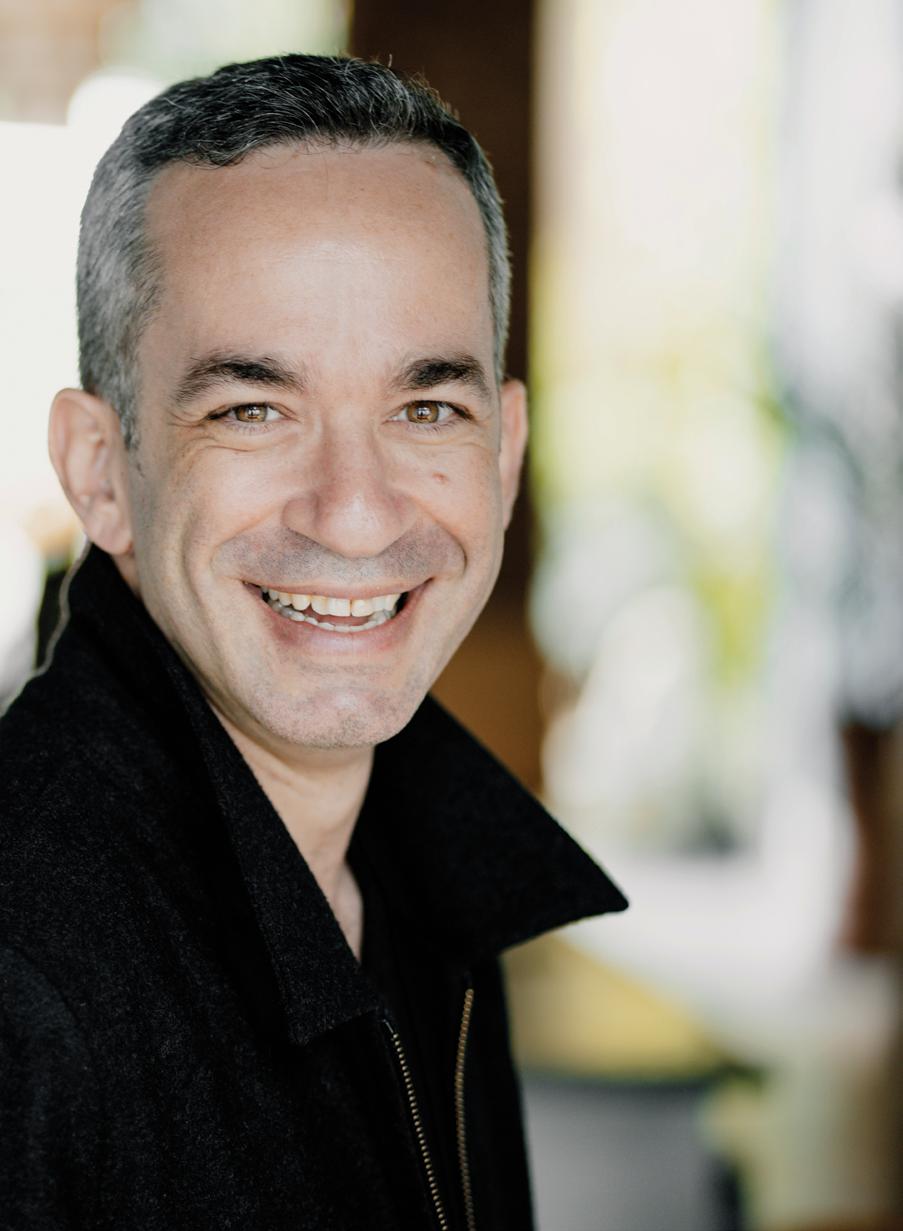
VIOLIN
Noah Bendix-Balgley*
Diana Cohen
Steven Copes
Alan Gilbert
Augustin Hadelich
Kathryn Hatmaker
Stefan Jackiw
Erin Keefe
Alexi Kenney
Tessa Lark
Geneva Lewis*
Anthony Marwood
Blake Pouliot
Jeff Thayer
Andrew Wan
VIOLA
Rebecca Albers*
Chi-Yuan Chen
Teng Li
Matthew Lipman*
Maiya Papach*
Masumi Per Rostad
Jonathan Vinocour
CELLO
Julie Albers
Efe Baltacigil
Sterling Elliott
Clive Greensmith
Oliver Herbert
Coleman Itzkoff
Gabriel Martins*
Alisa Weilerstein

Paul Wiancko*
Kajsa William-Olsson*
BASS
Timothy Cobb
Samuel Hager
Michael Thurber
PIANO
Thomas Adès*
Inon Barnatan
Zoltán Fejérvári*
Roman Rabinovich
Sonya Schumann*
Conrad Tao
Joyce Yang
FLUTE
Rose Lombardo
CLARINET
Mark Dover*
Anthony McGill
Anton Rist*
Mark Simpson*
OBOE
Marc Lachat*
BASSOON
Eleni Katz*
HORN
Stefan Dohr*
Kaylet Torrez*
TRUMPET
Brandon Ridenour*
Eduardo Ruiz
TROMBONE
Kyle Mendiguchia*
Eric Starr
PERCUSSION
Dustin Donahue
Sidney Hopson*
GUITAR
Louis Cato*
HARP
Julie Smith-Phillips
VOICE
Sasha Cooke
Paul Groves*
CONDUCTOR
Alan Gilbert
COMPOSER-IN-RESIDENCE
Thomas Adès*
ENSEMBLES
Calder Quartet
Benjamin Jacobson, Tereza Stanislav, violins; Jonathan Moerschel, viola; Eric Byers, cello
Carnival of the Animals
Marc Bamuthi Joseph*, spoken word; Wendy Whelan*, dancer; Francesca Harper*, choreographer
Louis Cato Trio*
Lucy Yehiazaryan* & Vanisha Gould*
Takács Quartet
Edward Dusinberre, Harumi Rhodes, violins; Richard O’Neill, viola; András Fejér, cello
FELLOWSHIP ARTIST ENSEMBLES
Quartet Integra*
Kyoka Misawa, Rinato Kikuno, violins; Itsuki Yamamoto, viola; Anri Tsukiji, cello
TrioJEM*
Elliot Wuu, piano; Max Tan, violin; Julia Lee, cello
FILMMAKER-IN-RESIDENCE
Tristan Cook
LECTURERS & GUEST SPEAKERS
Inon Barnatan
Allison Boles
Kristi Brown Montesano
Michael Gerdes
Ara Guzelimian
Karen Koner*
Molly Puryear*
Leah Rosenthal
Alex Ross
*Debut
PRELUDE · 6:30 PM
THE JAI
Interview with SummerFest Music Director Inon Barnatan hosted by Leah Rosenthal
Support for this program is provided by: Monarch Cottage
FRIDAY, JULY 28, 2023 · 7:30 PM
THE BAKER-BAUM CONCERT HALL
Works to be announced from stage. There will be one 20-minute intermission.
OPENING NIGHT ROSTER
Alan Gilbert, conductor

La Jolla Music Society’s Season is supported by The City of San Diego Commission for Arts and Culture, The Lodge at Torrey Pines, ProtoStar Foundation, Vail Memorial Fund, Banc of California, JP Morgan Chase, ResMed Foundation, Bright Events Rentals, Café Coyote, Rancho Coyote Vineyards, Ace Parking, Brenda Baker and Steve Baum, Raffaella and John Belanich, Gordon Brodfuehrer, Ric and Eleanor Charlton, Mary Ellen Clark, Julie and Bert Cornelison, Elaine Galinson and Herbert Solomon, Teresa and Harry Hixson, Joan and Irwin Jacobs, Angel and Fred Kleinbub, Vivian Lim and Joseph Wong, Jeanette Stevens, Debra Turner, Sue and Peter Wagener, and Bebe and Marvin Zigman.
Violin I
Steven Copes, concertmaster
Alan Gilbert, concertmaster
Blake Pouliot
Kyoka Misawa*
Rintaro Kikuno*
Violin II
Diana Cohen
Kathryn Hatmaker
Max Tan*
Viola
Masumi Per Rostad
Itsuki Yamamoto*
Cello
Oliver Herbert
Kajsa William-Olsson
Julia Lee*
Bass
Samuel Hager
Timothy Cobb
Flute
Rose Lombardo
Oboe
Marc Lachat
Clarinet
Anton Rist
Bassoon
Eleni Katz
Horn
Kaylet Torrez
Trumpet
Brandon Ridenour
Eduardo Ruiz
*2023 SummerFest Fellowship Artist
Trombone
Eric Starr
Kyle Mendiguchia
Timpani
Sidney Hopson
Percussion
Dustin Donahue
Harp
Julie Smith Phillips
Piano
Roman Rabinovich
Celeste
Elliot Wuu*
Harmonium
Sonya Schumman
PRELUDE · 6:30 PM
THE JAI
SATURDAY, JULY 29, 2023 · 7:30 PM
THE BAKER-BAUM CONCERT HALL
SUNRISE TO NOON
YSAŸE L’Aurore from Sonata in G Major for Solo Violin, Opus 27, No. 5 (1858–1931)
BONIS Matin
(1858–1937)
L. BOULANGER D’un matin de printemps (1893–1918)
HAYDN Finale from Symphony No. 7 in C Major, “Le midi” (1732–1809)
NOON TO NIGHT
DEBUSSY Prelude to the Afternoon of a Faun (arr. Graeme Steele Johnson) (1862–1918)
TURINA Crépuscule du Soir from Scène Andalouse (1882–1949)
NIGHT
CHAUSSON Chanson pérpetuelle, Opus 37 (1855–1899)
DEBUSSY Clair de lune
GUILLAUME Toccata-Nocturne for Flute and Cello CONNESSON (b. 1970)
SCHUBERT Adagio in E-flat Major, D.897 “Notturno” (1797–1828)
CRUMB Midnight Transformation from Eine Kleine Mitternacht Musik (1929–2022)
STRAUSS Morgen!, Opus 27, No. 4 (1864–1949)
Journey in Light Artists
Blake Pouliot, Erin Keefe, Kyoka Misawa*, Rintaro Kikuno*, violins; Masumi Per Rostad, Itsuki Yamamoto*, viola; Oliver Herbert, cello; Timothy Cobb, bass; Rose Lombardo, flute; Anton Rist, clarinet; Julie Smith Philips, harp; Roman Rabinovich, piano; Sasha Cooke, mezzo-soprano

La Jolla Music Society’s Season is supported by The City of San Diego Commission for Arts and Culture, The Lodge at Torrey Pines, ProtoStar Foundation, Vail Memorial Fund, Banc of California, JP Morgan Chase, ResMed Foundation, Bright Events Rentals, Café Coyote, Rancho Coyote Vineyards, Ace Parking, Brenda Baker and Steve Baum, Raffaella and John Belanich, Gordon Brodfuehrer, Ric and Eleanor Charlton, Mary Ellen Clark, Julie and Bert Cornelison, Elaine Galinson and Herbert Solomon, Teresa and Harry Hixson, Joan and Irwin Jacobs, Angel and Fred Kleinbub, Vivian Lim and Joseph Wong, Jeanette Stevens, Debra Turner, Sue and Peter Wagener, and Bebe and Marvin Zigman.
MOZART
String Quintet in C Minor, K.406 (K.516b)
(1756–1791) Allegro
Andante
Menuetto in canone; Trio in canone al rovercio
Allegro
Erin Keefe, Steven Copes, violins; Rebecca Albers, Maiya Papach, violas; Oliver Herbert, cello
*2023 SummerFest Fellowship Artist
Program notes by Eric Bromberger
Born July 16, 1858, Liège, Belgium
Died May 12, 1931, Brussels
Composed: 1923
Approximate Duration: 5 minutes
Eugène Ysaÿe was one of the finest violinists of all time, famed for his profound (and original) musical intelligence, consummate technique, and rich sound. A student of Vieuxtemps and Wieniawski, Ysaÿe was a true champion of new music: he gave the premières of the Franck Sonata and the Chausson Poème (both of which were dedicated to him), and his string quartet gave the first performance of the Debussy Quartet. So greatly admired was Ysaÿe as man and artist that his funeral in 1931 became the occasion for national mourning in Belgium.
Ysaÿe’s set of six sonatas for unaccompanied violin dates from 1924. Ysaÿe had two purposes in this music: he wanted to write a cycle of six works for unaccompanied violin in the manner of Bach’s music for solo violin, and he dedicated each sonata to a different violin virtuoso, trying to capture something of that performer’s style in “his” sonata. The list of dedicatees includes some very distinguished names—Szigeti, Kreisler, Enesco, and Thibaud—as well as two whose fame has not survived: Matthew Crickboom and Manuel Quiroga. So fascinated was Ysaÿe by the idea of adapting these pieces to individual performers that he composed this music almost overnight: he went up to his room with instructions that he was not be disturbed (meals were sent up to him), and when he came down twenty-four hours later he had sketched all six sonatas.
Ysaÿe dedicated the fifth sonata of his cycle to a violinist almost forgotten today, Matthew (or Mathieu) Crickboom. A longtime friend and associate of Ysaÿe, Crickboom was the second violinist in the string quartet Ysaÿe founded in 1886—this was the quartet that gave the first performance of the Debussy String Quartet. Ysaÿe’s Sonata in G Major is in two very brief movements, both rhapsodic in character and both requiring extensive use of left-handed pizzicato. The opening movement, titled “Dawn,” begins quietly: in the score Ysaÿe stresses that the rhythm here should be very free and that the opening melody should be played “simply.” Enlivened by tremolandi doublestops and artificial harmonics, the music gathers force and drives to an animated climax full of the sound of swirling arpeggios—the very ending requires that violinists stretch their left hand to reach the interval of a ninth.
Born January 21, 1858, Paris
Died March 18, 1937, Sarcelles
Composed: 1907
Approximate Duration: 4 minutes
Mélanie Bonis showed extraordinary musical promise as a girl—she taught herself to play the piano—but her parents discouraged any thought of a career in music. Fortunately, she was able to play for Cesar Franck, who arranged for her admission to the Paris Conservatory. At the Conservatory, where she was a fellow student of Debussy, she studied piano (with Franck) and composition. She had great success at the Conservatory, where she was awarded prizes in both harmony and piano, but her parents forced her into an arranged marriage with a successful businessman 22 years her senior. This brought her a very comfortable lifestyle, but it also threw up hurdles: her husband did not like music, and he already had five sons. Bonis, who had three children with him, was forced to give up any thought of a musical career, and she devoted the next twenty years to her domestic responsibilities.
In 1894, at age 36, she returned to composition and quickly achieved success. After hearing one of Bonis’ piano quartets, Saint-Saëns remarked: “I never thought a woman could write something such as this. She knows all the clever tricks of the composer’s trade.” Faced with such attitudes, Bonis adopted a shortened version of her first name (Mel), feeling that its gender neutrality would let her music be judged more fairly. She composed over 300 works, including chamber music, songs and other vocal music, works for piano, and a handful of orchestral compositions. The period of World War I was difficult for her (one of her sons was a POW, though he returned safely after the war), and she contracted debilitating arthritis. During the 1920s music headed in entirely new directions, and Bonis’ music, rooted in the romantic idiom of the nineteenth century, fell out fashion. When she died in 1937 at age 79, she had been almost entirely forgotten.
In 1907 Bonis composed a short work for piano trio titled Soir-Matin (“Evening-Morning”) and published it as her Opus 76; this concert offers Matin. Bonis’ sense of morning here is not some radiant depiction of a sunrise but rather music full of expectancy. A flowing, rippling pulse in the piano continues throughout the three-minute span of this piece (the tempo marking is Andantino), and above that steady pulse the strings sing and exchange different themes, often chromatic in their inflection. This is music of both energy and restraint, and its ending is particularly understated.
Born August 21, 1893, Paris
Died March 15, 1918, Mézy, France
Composed: 1917
Approximate Duration: 5 minutes
The younger sister of the great teacher Nadia Boulanger, Lili Boulanger was a musician of extraordinary talent. A student of Fauré, Lili was the first woman ever to win the Prix de Rome, but that promise was cut short by perpetually poor health and by an early death: she was only 24 when she died, ten days before the death of Debussy. So short a life inevitably means that one’s output is small, and today Lili is remembered for her vocal settings and a small amount of instrumental music. As might be expected from the sister of Nadia Boulanger, Lili’s music is beautifully crafted. She has been described as an impressionist, but more striking are her instinctive sense of form and an expressive control of what is at times a surprisingly chromatic harmonic language.
In 1917, late in her brief life, Lili composed two moodpieces, each inspired by a different time of day: the subdued D’un soir triste (“Of a Sad Evening”) and the lively D’un matin de printemps (“Of a Spring Morning”). She composed the latter first as a duo for violin (or flute) and piano, then arranged the music for string trio (the version heard on this concert), and finally arranged it for full orchestra.
Marked Assez animé (“Very lively”), the opening section bursts to life on the work’s dancing, dotted main theme. D’un matin de printemps is in three-part form, and it slows slightly for its central episode. Though slower, the mood remains upbeat (the performance marking here is ardent, heureux: “ardent, happy”), and one senses the influence of Debussy in both expression and instrumentation. The music returns to the opening material, but that return is not literal, and tempos and colors shift subtly before the music reaches its lively conclusion on a great, happy swoop of sound.
Finale from Symphony No. 7 in C Major “Le midi”
Born March 31, 1732, Rohrau, Austria
Died May 31, 1809, Vienna
Composed: 1761
Approximate Duration: 4 minutes
Prince Paul Anton Esterhazy hired Haydn as his ViceKapellmeister in May 1761, and the composer immediately took up his duties at the Esterhazy palace in the small town of Eisenstadt, about thirty miles south of Vienna. There
the 29-year-old Haydn was charged with revitalizing the court orchestra. He auditioned players and assembled an orchestra of about seventeen members: flute, two oboes, bassoon, two horns, and a small string section.
The story has it that Prince Paul Anton himself suggested that Haydn compose a trilogy of symphonies that would take as their subject morning, noon, and night. Haydn was not attracted to the idea of writing descriptive music, but he was alert enough to take the prince’s suggestion. His real intention in writing these three symphonies, however, may have been to show off his own talents and the orchestra he had helped to create. Haydn himself gave the three symphonies their French nicknames—Le matin, Le midi, and Le soir—perhaps as a nod to the taste for things French in Vienna at that time.
These three symphonies, Nos. 6–8, date from 1761, during Haydn’s first months in his new position. Certain features distinguish the Symphony No. 7 from its two companions in this symphonic triptych. First, it is in five movements rather than the four movements of the other two. Second, the Seventh contains no musical scene-painting at all. Instead, it is full of white-hot energy—perhaps Haydn was trying to suggest the blaze of the midday sun here. And finally the writing for the solo instruments is unusually brilliant in this symphony—it is as if Haydn were writing not a symphony but a concerto for orchestra. Perhaps he was giving the players in his newly refurbished orchestra a chance to shine individually.
This concert offers the symphony’s concluding movement. In this Allegro the writing for the string soloists is brilliant, and now Haydn includes a prominent part for the solo flute.
Born August 22, 1862, Saint-Germain-en-Laye
Died March 25, 1918, Paris
Composed: 1891
Approximate Duration: 10 minutes
This shimmering, endlessly beautiful music is so familiar to us—and so loved—that it is difficult to comprehend how assaultive it was to audiences in the years after its première in December 1894. Saint-Saëns was outraged: “[It] is pretty sound, but it contains not the slightest musical idea in the real sense of the word. It’s as much a piece of music as the palette a painter has worked from is a painting.” Later his outrage at Debussy took a more emphatic direction: “the doors of the Institute must at all costs be barred against a man capable of such atrocities.”
We smile, but Saint-Saëns had a point. Though it lacks the savagery of The Rite of Spring, the Prelude to the Afternoon of a Faun may be an even more revolutionary piece of music, for it does away with musical form altogether—this is not music to be grasped intellectually, but simply to be heard and felt. Pierre Boulez has said that “just as modern poetry surely took root in certain of Baudelaire’s poems, so one is justified in saying that modern music was awakened by L’après-midi d’un faune.”
Debussy based this music on the poem “L’aprèsmidi d’un faune” by his close friend, the Symbolist poet Stephane Mallarmé. The poem itself is dreamlike, a series of impressions and sensations rather than a narrative. It tells of the languorous memories of a faun on a sleepy afternoon as he recalls an amorous encounter the previous day with two passing forest nymphs. This encounter may or may not have taken place, and the faun’s memories—subject to drowsiness, warm sunlight, forgetting, and drink—grow vague and finally blur into sleep.
Like the faun’s dream, Debussy’s music is directionless, and Saint-Saëns was right to feel assaulted. In the words of Ferruccio Busoni, this music “is like a beautiful sunset; it fades as one looks at it.” The famous opening flute solo (the sound of the faun’s pipe?) draws us into this soft and sensual world, and while the key signature may say E major, Debussy’s music obliterates any sense of a stable tonality from the start. The middle section, introduced by woodwinds in octaves, may be a subtle variation of the opening flute melody—it is a measure of this dreamy music that we cannot be sure. The opening section returns to lead the music to its glowing close, finally in uncomplicated E major.
Audiences have come to love this music precisely for its sunlit mists and glowing sound, but it is easy to understand why it troubled early listeners. Beneath its shimmering and gentle beauties lies an entirely new conception of what music might be.
This concert presents the Prelude in an arrangement by Graeme Steele Johnson for flute, clarinet, harp, and string quartet.
Born December 9, 1882, Seville
Died January 14, 1949, Madrid
Composed: 1911
Approximate Duration: 6 minutes
Turina arrived in Paris in 1905 at age 23 and studied composition with Vincent D’Indy. Under D’Indy’s supervision Turina composed a number of chamber works
in classical forms, and these were well received, but after a performance of one of them Turina was invited out to a café by Albéniz and Falla, who encouraged him to make use of specifically Spanish music, subjects, and forms in his own compositions. Turina recalled that on that occasion “I realized that music should be an art, and not a diversion for the frivolity of women and the dissipation of men. We were three Spaniards gathered together in that corner of Paris, and it was our duty to fight bravely for the national music of our country.” One of the first results of this new enthusiasm was Scène Andalouse (Scenes of Andalusia), which Turina composed in Paris in 1911 for the unique combination of piano, solo viola, and string quartet.
Scène Andalouse is in two brief movements, each of which has an evocative title: Crépuscule du Soir (“Evening Twilight”) and À la Fenêtre (“At the Window”). Listeners have been quick to come up with a program for Scène Andalouse : they hear the first movement as a mood-piece that establishes a twilight atmosphere and introduces the voice of the lover in the solo viola and the second as a dialogue between that lover and his inamorata at her window. Turina did not specifically endorse this scenario, but he did not discourage it. This concert offers the first movement only.
Piano alone introduces Crépuscule du Soir, setting the lilting, sensual mood of the entire composition, and it is soon joined by the viola. Solo viola leads the way at the next episode in this movement, titled Serenata. Here the viola is often accompanied by the quartet playing pizzicato, a sound invariably compared to that of an accompanying guitar. Along the way, Turina introduces a further episode, set at what he calls mouvement de Habanera, with its characteristic 3+2 rhythm. The episodes alternate before the movement reaches its firm conclusion on a sforzando final chord.
Born January 20, 1855, Paris
Died June 20, 1899, Limay
Composed: 1898
Approximate Duration: 7 minutes
Chanson perpétuelle was the final completed work of Chausson’s much too brief life. He finished the score on December 17, 1898, and was present when the music was premièred—and acclaimed—in Le Havre the following month. The following spring, he took his wife and five small children for a stay in Limay, a tiny village twenty miles northwest of Paris. One evening, his family was returning from a day trip to Paris and Chausson climbed on his bike
to ride down to meet them at the train station. At the base of the hill below his house he lost control, was thrown headfirst into a stone wall, and—in those days before bicycle helmets—killed instantly. He was 44 years old.
Chanson perpétuelle is a poem by the French writer and scientist Charles Cros in which a betrayed woman recounts the story of her doomed love as she prepares— like Ophelia—to plunge into a lonely pool to drown herself. This grim subject is rescued by the beauty of Cros’ language and Chausson’s music. Chausson’s setting is based on the dark rising-and-falling theme heard at the very beginning, but this theme recurs explicitly only once more, at the seventh stanza when the woman tells of the man’s leaving. Chausson, however, uses fragments of this theme in the accompaniment throughout, so that it seems to be present even when it is not actually being stated.
Chausson made several versions of the accompaniment for Chanson perpétuelle: first for piano and then for full orchestra. Realizing that orchestral performances might be rare, he made a third version, for piano quintet. This chamber setting preserves some of the flavor of the orchestral version, particularly in the richness of the lyric writing and the string tremolos that help drive toward the climax on the poem’s final line. Whatever the version, Chausson’s little-known Chanson perpétuelle is moving music, one critic going to far as to describe it as “the most beautiful lied with orchestra . . . in French music.”
Composed: 1890
Approximate Duration: 5 minutes
Clair de lune, Debussy’s seductive invitation into a world of moonlit possibility, has become one of his most famous compositions, so it may come as a surprise to learn that in its earliest version this music had nothing at all to do with moonlight. Debussy originally composed it around 1890 under the title Promenade sentimentale, and the 28-year-old composer intended it as one of the movements of a suite of pieces for piano. Debussy sketched that suite in 1890, but he was in no hurry to finish it—not until fifteen years later, in 1905, did he come back to these pieces, revise them, and publish the set under the title Suite bergamasque.
But there had been some important changes along the way. The movement originally titled Promenade sentimentale now had a new name, Clair de lune, which Debussy had taken from the title of a poem by Paul Verlaine. Verlaine (1844–1896) is remembered as one of the symbolist poets,
that school of poetry centered in France at the end of the nineteenth century that reacted against realism and in favor of an exploration of the internal consciousness—a setting suffused with the half-tones of soft moonlight was perfect for that imagination.
Debussy’s Clair de lune fully deserves its popularity. No matter how over-familiar this music may have become, Debussy’s fluid rhythms, haunting melodies, and muted, silvery colors continue to work their hold on listeners (and performers). Clair de lune has been arranged for many different instrumental combinations; it is heard at this concert in an arrangement for flute, clarinet, string quartet, and harp.
Born May 5, 1970, Boulogne-Billancourt, France
Composed: 2002
Approximate Duration: 3 minutes
Guillaume Connesson studied piano, composition, and conducting as a young man and won the Nadia and Lili Boulanger Prize in 1999. He has served as composer-inresidence with several orchestras, and his music has been widely performed in Europe and more recently in the United States. Connesson has had works commissioned by the Concertgebouw Orchestra, Philadelphia Orchestra, Chicago Symphony, BBC Symphony, and others. Since 2017 he has taught at the Aubervilliers-La Courneuve. Composed in 2002, Toccata-Nocturne was premièred on January 5, 2003, at the Petit Palais Museum of Avignon by Antoine Lederlin (cello) and Sarah Louvion (flute). The composer has provided a brief introduction:
Toccata-Nocturne for flute and cello is a dance of the shadows, at times jubilant, often disquieting. A theme in irregular values is superimposed upon a regular pulse, yielding a polyrhythmic pattern that undergoes permutations between the flute and the cello. Outcries in the night, murmurs, muffled noises—all these pervade the piece up until the final shriek in which the theme is screamed forth by the flute under the cavernous harmonies in the cello.
—Guillaume ConnessonBorn January 31, 1797, Vienna
Died November 19, 1828, Vienna
Composed: 1827
Approximate Duration: 9 minutes
Schubert’s Adagio in E-flat Major, D.897 was published in 1846, eighteen years after the composer’s death, under the name Notturno. Schubert scholars now believe it to be a rejected slow movement for the Piano Trio in B-flat Major, D.898. The name Notturno, or “nocturne,” did not originate with Schubert (his manuscript simply says Adagio) and was probably the invention of that first publisher, but it has remained part of the way we think of this music.
Schubert’s sense of this brief movement may be seen in his complex markings: though the dynamic of the opening is pianissimo, Schubert stresses that it should also be appassionato. Over softly-arpeggiated piano chords, violin and cello sing a long duet in thirds. Suddenly the roles reverse: the piano has that gentle melody while the strings frame it with pizzicato accompaniment. The shimmering, subdued atmosphere of this music earned it the nickname Notturno, and while not authentic, that name is apt. The central episode moves into E major and grows more energetic, the music proceeding along sharply-dotted rhythms. Schubert brings back his opening string duet (the piano’s accompaniment has now grown more ornate) and weaves material from the trio section into the coda before the Notturno draws to a very quiet close.
Born October 24, 1929, Charleston, West Virginia
Died February 6, 2022, Media, Pennsylvania
Composed: 1944
Approximate Duration: 3 minutes
Theolonius Monk composed his Round Midnight in 1944, when he was only 27, though there is evidence that the piece had taken shape over the previous several years. Round Midnight quickly became (and remains) one of the most popular pieces ever composed by a jazz composer, and it has had over a thousand recordings, each with its own individual take on this music (Miles Davis made one of the most famous of these, and on that recording Davis called the piece Round about Midnight—it is still sometimes known by that name). In 2001 the Italian pianist Emanuele Arciuli made Round Midnight the vehicle for a vast project: he
commissioned a number of composers—including William Bolcom, John Harbison, Frederic Rzewski, Michael Torke, Milton Babbitt, and others—to contribute a single variation on Monk’s classic music; these would be gathered to form one large set of variations.
One of those commissioned was George Crumb, but—like Beethoven in the Diabelli Variations—Crumb did not write just a single variation, but an entire set, and his variations by themselves became a separate piece, which he titled Eine Kleine Mitternacht Musik (A Little Midnight Music”). It was premièred by Arciuli in Rome on November 9, 2002, and the American première followed five days later.
This is complex music, and it is also a lot of fun. Crumb writes for what he calls “amplified piano” (some of its sounds are boosted electronically), and in addition to simply playing the piano, the performer is required to pluck or strum its strings, strike the piano’s strings and frame with a drumstick, and at one point to vocalize. This music generates a huge range of piano sounds (it is written on four staves at many points), and it creates a soundworld all its own. But Crumb adds another dimension to his “ruminations” by quoting the music of many other composers. The title, of course, fuses the worlds of Mozart and Monk, and along the way listeners will make out fragmentary quotations of famous themes.
Eine Kleine Mitternacht Musik may be thought of as a theme (already varied on its first presentation) and eight episodes, each a miniature world of its own. The piece begins in the night with a fragmentary presentation of Monk’s tune, here called Nocturnal Theme, and makes its gradual way to midnight in the final episode, titled Midnight Transformation Listeners can approach this music by listening for its incredible variety of sounds, its imaginative transformations of Round Midnight, its quite different musical styles, the many quotations, the wit of Crumb’s conception, and the beauty of his varied re-imaginings of Monk’s great music.
Born June 11, 1864, Munich
Died September 8, 1949, Garmisch-Partenkirchen, Germany
Composed: 1894
Approximate Duration: 4 minutes
It has been said that Richard Strauss had a lifelong love affair with the sound of the soprano voice, but it should also be noted that he had a lifelong love affair with a particular soprano. The young composer married the singer Pauline de Ahna on September 10, 1894, and it would prove an often stormy but very sound marriage—
it lasted until his death 55 years later, in 1949. Strauss frequently accompanied his wife in her recitals and wrote songs with her voice in mind. On the eve of the marriage, Strauss completed a set of four songs and presented them to Pauline as a wedding present. He later published the four songs as his Opus 27, and they have all become some of his best-loved songs.
The final song of Opus 27, Morgen!, sets a text by John Henry Mackay full of rapture, but here that rapture is calm and intense at the same time. In Strauss’ delicate orchestral version of this song, he gives the central melodic line to the solo violin as the soprano’s song leads to a peaceful close in a vision of unclouded love beneath a sunny sky.
Born January 27, 1756, Salzburg
Died December 5, 1791, Vienna
Composed: 1787
Approximate Duration: 22 minutes
The première of The Marriage of Figaro in May 1786 is universally regarded as the high point of Mozart’s fortunes in Vienna, and over the next year Mozart’s fortunes in his adopted city began to wane. The reasons for this are not entirely clear, but Mozart suddenly began to have financial problems. His music—always regarded as sophisticated and complex—began to slip out of fashion, he had trouble attracting audiences to his concerts, and he began to find that the revenue streams he had grown used to were now precarious. From 1787–88 come a series of painful letters to friends, asking for loans.
By the spring of 1788 Mozart needed cash, and he came up with what seemed a sensible plan. The previous year he had written the two great string quartets in C major and G minor, though they had not yet been published. Now he decided to sell manuscript copies—in his own hand—of those two quintets, which he announced would be “finely and correctly written.” These would be sold by subscription, but subscriptions usually involved three works, and now—rather than writing a new quintet— Mozart turned to music he had written six years earlier and arranged it for string quintet.
Mozart had composed his Serenade in C Minor, K.388 for two oboes, two clarinets, two bassoons, and two horns in July 1782 . Mozart’s serenades usually had a “social” function. Most often scored for strings and almost invariably in the bright key of D major, they were intended
as background music for social occasions, sometimes held outside, and as such tended to be light and attractive. It is hard to imagine how music as intense as the Serenade in C Minor could have been intended as a background to anything. Mozart reserved the key of C minor for some of his most dramatic music, and the serenade’s original nickname “Nacht Musique”—an odd fusion of German and French—suggests quite a different character. Mozart omits the march and minuets common to serenades, and the resulting four-movement structure is dark music, somber in sonority and dramatic in gesture. In a letter to his father in Salzburg on July 27, 1782, Mozart wrote: “I have had to compose in a great hurry a serenade, but only for wind instruments,” but that is all we know of its creation, and a great deal of mystery continues to surround it. No one really knows why Mozart wrote so dark a serenade, full of ingenious and tautly disciplined music.
Mozart wrote superbly for wind instruments, and the Serenade in C Minor is one of his finest works for them. For Mozart, each wind instrument had its own sound and personality, and he wrote specifically to that identity. With four pairs of quite different sounds, he could play those pairs off against each other, and he wrote specifically to the strengths of wind instruments: phrases tend to be short, and there are wide melodic skips as well as much staccato writing. When he came to arrange the Serenade for string quintet, Mozart had not only to reduce the number of voices from eight to five, he had to negotiate the loss of the distinctive tone colors and the pairings of sonorities that helped make the wind version distinctive. Mozart was Mozart, and his string quintet version is quite effective, but the two versions can feel somewhat different in their impact on listeners.
The powerful opening of the Allegro simply moves up the notes of a C-minor chord, and this fierce beginning is answered by plaintive responses—a wide emotional palette has been introduced in the first few seconds. Still, this is passionate, urgent music, full of explosive accents and often chromatic in its development.
The Andante is the odd-movement-out in an otherwise dark composition. Mozart moves to radiant E-flat major here, and this is heartfelt music, based on two themes both introduced by the first violin. These two ideas grow more complex as they are repeated, and the movement moves to a swirling climax and a gentle close.
The third movement returns to the C-minor urgency of the first movement. This minuet is in canon, with the trailing voice only a measure behind the lead. Mozart marks the trio section “in canon al rovescio,” which does not mean “in
reverse,” but upside down. It is again a simple canon, but this time the trailing voice is inverted. Despite Mozart’s taut counterpoint, the movement never sounds labored.
The final movement is in theme-and-variation form. The finale is in the home key of C minor, and the first four variations remain within that key. At the fifth, though, Mozart moves to E-flat major, and now the theme takes on a measure of breadth and repose. That calm is short-lived, however, and Mozart returns to C minor for the ensuing variations. But the very end brings a surprise: after all the dark places in this music, Mozart slips into C major for the cheerful coda and concluding fanfares.
Two notes: Mozart’s Serenade in C Minor, composed in 1782, is listed in the Koechel catalog as K.388. Mozart’s arrangement of it for string quintet was originally listed as K.406, which seriously misrepresents where it falls in the chronological sequence of Mozart’s works. The most recent revision of Koechel catalog now lists the quintet version as K.516b, or immediately following the Quintet in G Minor And the sad news is that Mozart’s plan to sell “finely and correctly written” manuscript copies of the three string quintets failed for lack of interest among the public. In June 1788 he announced: “As the number of subscribers is very small, I find myself obliged to postpone the publication of my 3 Quintets until January 1, 1789.” What would any of us today give to own Mozart’s own manuscript copies of these three quintets?
La Jolla Music Society’s Season is supported by The City of San Diego Commission for Arts and Culture, The Lodge at Torrey Pines, ProtoStar Foundation, Vail Memorial Fund, Banc of California, JP Morgan Chase, ResMed Foundation, Bright Events Rentals, Café Coyote, Rancho Coyote Vineyards, Ace Parking, Brenda Baker and Steve Baum, Raffaella and John Belanich, Gordon Brodfuehrer, Ric and Eleanor Charlton, Mary Ellen Clark, Julie and Bert Cornelison, Elaine Galinson and Herbert Solomon, Teresa and Harry Hixson, Joan and Irwin Jacobs, Angel and Fred Kleinbub, Vivian Lim and Joseph Wong, Jeanette Stevens, Debra Turner, Sue and Peter Wagener, and Bebe and Marvin Zigman.
SUNDAY, JULY 30, 2023 · 3 PM
THE BAKER-BAUM CONCERT HALL
BRAHMS Trio in E-flat Major for Piano, Violin, and French Horn, Opus 40 (1833–1897) Andante; Poco più animato
Scherzo: Allegro
Adagio mesto
Finale: Allegro con brio
Inon Barnatan, piano; Alan Gilbert, violin; Stefan Dohr, horn
MAHLER Das Lied von der Erde (arr. Schoenberg and Riehn) (1860–1911) Das Trinklied vom Jammer der Erde
Der Einsame im Herbst
Von der Jugend
Von der Schönheit
Der Trunkene im Frühling
Der Asbschied
Sasha Cooke, mezzo-soprano; Paul Groves, tenor ; Alan Gilbert, conductor

SummerFest Chamber Orchestra
Erin Keefe concertmaster; Steven Copes, Diana Cohen, Kate Hatmaker, Rintaro Kikuno*, Kyoka Misawa*, Max Tan*, violins; Rebecca Albers, Itsuki Yamamoto*, violas; Kajsa William-Olsson, Coleman Itzkoff, Anri Tsukiji*, cellos; Timothy Cobb, Samuel Hager, bass; Rose Lombardo, flute; Marc Lachat, oboe; Anton Rist, clarinet ; Eleni Katz, bassoon; Stefan Dohr, horn; Dustin Donahue, Sidney Hopson, percussion; Elliot Wuu*, piano; Sonya Schumann, harmonium
*2023 SummerFest Fellowship Artist
Program notes by Eric Bromberger
Born May 7, 1833, Hamburg
Died April 3, 1897, Vienna
Composed: 1864
Approximate Duration: 5 minutes
Brahms liked to get away from Vienna during the hot summers, and he spent the summer of 1864 in the little town of Lichtenthal in the Black Forest near Baden-Baden. Lichtenthal was home to a flourishing artists colony during the summer, and there Brahms, surrounded by congenial friends, could indulge his passion for long walks through the woods. He returned the following summer, but this time he had a special reason to seek the solitude of the forests: his mother had died on January 31st of that year and he was still coming to terms with the loss. He composed the Horn Trio that summer, and the music was intended at least in part as a memorial to his mother—the beautiful slow movement contains a quotation from the Rhenish folksong In den Weiden steht ein Haus (“In the Willows Stands a House”), an evocation of happy childhood memories.
The lovely and peaceful forest setting seems to have had a profound effect on the Horn Trio. Brahms said that the opening theme came to him during a walk along “wooded heights among fir trees,” and many have noted the calm, almost pastoral nature of this music. The Horn Trio is not so much elegiac, though, as reflective and commemorative: Brahms observes the death of his mother not by wearing his heart on his sleeve but by writing gentle and beautiful music.
The opening movement is remarkable for not being in sonata form. Aware that sonata form brings a type of musical drama alien to the spirit of this trio, Brahms instead cast it in rondo form: the opening Andante episode occurs three times, separated by a slightly quicker section marked Poco più animato. The calm beginning, the section that came to Brahms on his walk through the woods, has drawn special praise—American composer Daniel Gregory Mason called it “a sort of symbol of all that is most romantic in music.” Brahms specifies that he wants this opening section played dolce, espressivo, and it alternates with the violin’s surging, rising line of the Poco più animato before the movement comes to a quiet close. By contrast, the boisterous Scherzo flies along on resounding triplets. Its brief trio section, in the unusual key of A-flat minor, features a long duet for violin and horn.
Brahms gave the third movement the unusual marking Adagio mesto (“slow, sad”), and the piano’s rolled chords
at the very beginning set the mood for this somber and grieving music. Again, violin and horn trade expressive melodic lines, and the music rises to a climax marked passionata, where violin and horn soar high above the piano accompaniment before the music drifts into silence.
The concluding Allegro con brio has struck many as the most “horn-like” of the movements, for it is built on a brilliant 6/8 meter that inevitably evokes the calls of hunting horns; Brahms has prepared the way for this movement by quietly inserting (at a very slow tempo) the shape of its main theme into the slow movement. The finale seems never to slow down, never to lose its energy, and the Horn Trio rushes to its close in a blaze of color and excitement.
Born July 7, 1860, Kalischt, Bohemia
Died May 18, 1911, Vienna
Composed: 1908
Approximate Duration: 60 minutes
In 1907, Gustav Mahler’s world shattered around him. After ten brilliant years as director of the Vienna Staatsoper—the most powerful position in the musical world, but one that had brought him enmity, intrigue, and bitter criticism—Mahler resigned. On a family vacation that June, his five-year-old daughter Maria contracted scarlet fever and—after two agonizing weeks—died in front of the family. Mahler’s young wife collapsed, and the doctor brought in to care for her had a look at the composer and made a deadly discovery: Mahler had a serious heart lesion, the symptom of heart disease that would almost surely prove fatal. In the space of a few weeks, Mahler lost nearly everything: his position, a daughter, and his own future.
At this moment of annihilation, Mahler struggled to regain a hold on life. To the young conductor Bruno Walter, he wrote: “Let me tell you . . . that I found myself face to face with nothingness and now at the end of my life I am having to learn from the beginning how to walk and stand up.” Looking for consolation that numb summer, Mahler turned to a book he had been given called The Chinese Flute, an anthology of 83 ancient Chinese poems freely rendered in German by Hans Bethge. Mahler was entranced by these poems (all from the eighth century A.D.) and their fusion of a sharp pleasure in life with a keen sense of loss and farewell. Late that summer he began to sketch songs based on some of these poems.
Mahler’s doctors had warned that unless he slowed down the frantic pace of his life and worked to conserve his strength, he would surely die. Now Mahler made a
characteristic decision: he plunged ahead with his work, assuming the directorship of the Metropolitan Opera in January 1908 and conducting that season, then returned to Europe to guest-conduct orchestras in Germany, Austria, and France. His wife found the family a vacation house (actually a rented farmhouse) in Toblach, high in the Dolomites. There during the summer of 1908, in a high mountain valley thick with forests and ringed by rocky peaks, Mahler returned to his cycle of songs on ancient Chinese texts. He worked very fast: the cycle of six songs, scored for two singers and a huge orchestra and lasting nearly an hour, was completely sketched by September 1, a few weeks before he left for New York and his second season at the Met.
Mahler was unsure what to call his new work. At first he thought of calling it The Jade Flute, a title derived from Bethge’s anthology, and then considered a title that sprang directly from his own experience: The Song of the Earth’s Sorrow. Finally he chose a more neutral—and more encompassing—title, Das Lied von der Erde: “The Song of the Earth.” Several themes run through this cycle of six songs: mortality and the imminence of annihilating death; the beauty of the earth, which will bloom on forever, no matter what happens to individual men and women; the sensual pleasures—however fleeting—of life on that earth; and a mood of bittersweet farewell, which climaxes in the long final song, Der Abschied.
Das Lied von der Erde opens with a drinking song, but this is a bitter one: The Drinking Song of the Earth’s Sorrow. The music leaps to life with powerful horn fanfares, but these are instantly answered with jeering laughter, and the tone for the first song is set. The singer declaims what will be a central theme: the earth will live on forever, but each man’s moment is very brief. This is a strophic song, and it has a bitter refrain, repeated three times: “Dunkel ist das Leben, ist der Tod” (“Dark is life, dark is death”). The song drives to its climax as the singer is assaulted by an ugly image of mortality—an ape crawling over tombstones in the moonlight—and the opening fanfares return to drive the song to it emphatic close on a blast of dark sound.
The second song, Der Einsame im Herbst (“The Lonely One in Spring”), introduces a second theme—loneliness— and the lean textures of the orchestra’s haunting prelude (lonely winds above a bare string line) mirror this musically. The song is full of images of loneliness and death—mists over a lake, petals falling from a flower, a guttering lamp— before swelling to an appeal for love and human contact; the orchestra’s postlude draws the song to a quiet close.
The next three songs are all briefer and more relaxed.
Von der Jugend (“Of Youth”) sings of sensual pleasures. Young men sit in a sunny pavilion, drinking, talking, laughing, writing verse; beneath them, the pond inverts the image of their pavilion on its still surface. Mahler casts this song in stylized “Chinese” style, full of pentatonic melodies and the delicate ring of the triangle.
Von der Schönheit (“Of Beauty”) is a sort of companion piece to the previous song, but now told from the women’s point of view. The events are simple: young women gather blossoms in the golden sunlight by a pond and talk happily; suddenly a group of young men ride up, their horses’ hooves trampling the flowers as they pass, and the poem closes with a flash of sexual passion. This is one of the finest songs in the cycle, moving from the delicacy of the young women’s music to the swagger of the young men as they thunder past and on to the breathless response of one of the women, which is cut off in midair. The delicacy of the opening returns, and the song glides to its elegant and graceful conclusion.
The fifth song, Der Trunkene im Frühling (“The Drunk in Spring”) is a sort of comic counterpart to the grim opening song. Here is another drinking song, but this drinker finds happiness in the glass rather than bitter philosophy and chooses to stay drunk rather than think. The sound of the chirping bird draws him back to the glass one more time, and the song drives to ringing close.
Out of this sunny sound, Mahler launches the concluding song, Der Abschied (“The Farewell”), which is as long as the first five songs combined. It is a superb transition: we move from a shining A-major chord at the close of the fifth song to the deep, tolling sound of C minor at the beginning of Der Abschied, and instantly we are back in the cold mists that blew through the second song. This song, which combines two poems, brings together the themes of loneliness, beauty, and farewell. It is also a “symphonic” movement in the best sense of that term: Mahler introduces bits of theme—the oboe solo at the beginning, a falling motif in a pair of clarinets, others—at the very beginning, and these evolve across the half-hour span of Der Abschied, which includes a long symphonic interlude—almost a funeral march—at its center. Images of loneliness, travel, and farewell pervade this climactic song, which—in its content—often seems like Schubert’s songs about lonely and unfulfilled travelers. At the close, Mahler adds a few lines of his own: “The beloved earth everywhere blossoms and greens in springtime anew. Everywhere and forever the distances brighten blue…forever…forever…,” and Der Abschied fades into silence on the word “ewig” and silvery brushes of celesta sound.
Das Lied von der Erde is Mahler’s masterpiece: “face to face with nothingness,” he did indeed find a way “to walk and stand up.” Certainly he was aware the he had written music of overwhelming impact. Showing Bruno Walter the score, he asked: “Can this be endured at all? Won’t people kill themselves afterward?” Yet Mahler himself never heard a note of Das Lied. He died of heart failure in May 1911, three years after composing it and a few weeks short of his 51st birthday. Bruno Walter led the first performance six months later in November 1911.
A NOTE ON THIS EDITION: At this concert Das Lied von der Erde is performed in an edition that is in large part the creation of Arnold Schoenberg. In February 1919, Schoenberg had founded in Vienna the Society for Private Musical Performances, which gave performances for lovers of new music. People could pay for tickets according to their means, the press (and music critics) were excluded, and many orchestral works were performed either in versions for piano four-hands or for piano and chamber ensemble. The Society gave 117 concerts before it disbanded due to the financial situation after World War I.
Schoenberg was a passionate admirer of Mahler (who in turn had respected Schoenberg’s music and supported him financially), and in the spring of 1921 Schoenberg had made an arrangement of Mahler’s Songs of a Wayfarer for a Society performance. That fall he began an arrangement of Das Lied von der Erde for an ensemble of thirteen players: flute (doubling piccolo), oboe (English horn), clarinet (E-flat and bass clarinet), bassoon, horn, string quartet, doublebass, piano/celesta, harmonium, and percussion. This is somewhat like the instrumentation of Schoenberg’s own Pierrot Lunaire (1912), in which a small group of wind and string players (some playing several instruments) join a pianist to accompany a singer. Schoenberg completed about half the first movement before the Society collapsed and then set the work aside; this version was completed, using Schoenberg’s orchestration and approach, some years later by Rainer Riehn.
Schoenberg was arranging Das Lied because he wanted this music performed and knew that performances of Mahler’s full-orchestra version would be rare. An arrangement for chamber ensemble of course loses the opulence and sonic impact of Mahler’s original version, but it also brings clarification of textures and a more effective balance between singers and orchestra than in the original, where the vocal line is sometimes submerged beneath the weight of a huge orchestra.
PRELUDE
Interview with Thomas Adès hosted by SummerFest Music Director
Inon Barnatan
Join us for a celebration in the Wu Tsai QRT.yrd immediately following the performance. Must be 21 and older with valid I.D.
WEDNESDAY, AUGUST 2, 2023 · 7 PM
THE BAKER-BAUM CONCERT HALL
SCHUMANN Fantasiestücke for Cello and Piano, Opus 73 (1810–1856) Zart und mit Ausdruck
Lebhaft, leicht Rasch und mit Feuer
Midweek Masterworks
Efe Baltacigil, cello; Roman Rabinovich, piano
THOMAS ADÈS Märchentänze US PREMIÈRE (b.1971)
I.
II.
III. A Skylark for Jane
IV.
Anthony Marwood, violin; Thomas Adès, piano
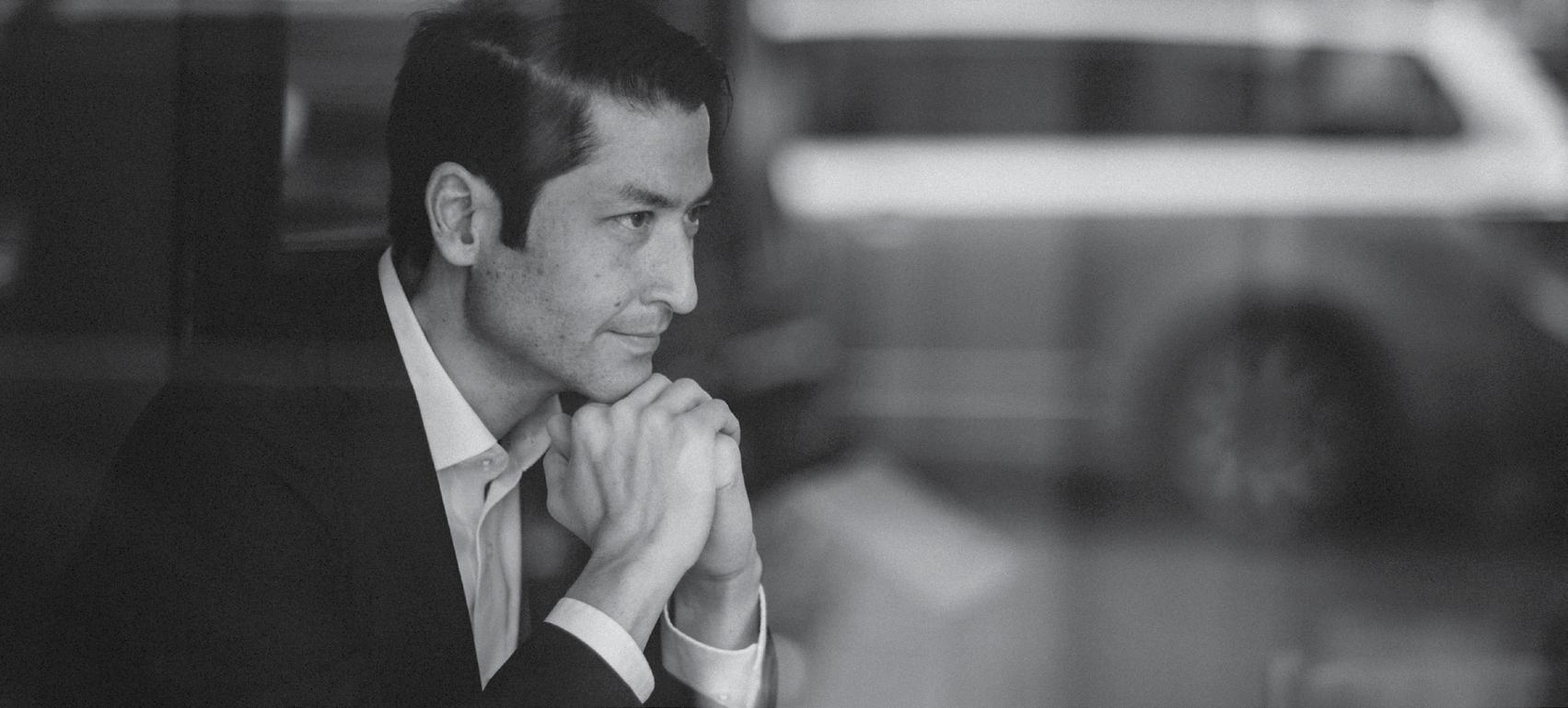
La Jolla Music Society’s Season is supported by The City of San Diego Commission for Arts and Culture, The Lodge at Torrey Pines, ProtoStar Foundation, Vail Memorial Fund, Banc of California, JP Morgan Chase, ResMed Foundation, Bright Events Rentals, Café Coyote, Rancho Coyote Vineyards, Ace Parking, Brenda Baker and Steve Baum, Raffaella and John Belanich, Gordon Brodfuehrer, Ric and Eleanor Charlton, Mary Ellen Clark, Julie and Bert Cornelison, Elaine Galinson and Herbert Solomon, Teresa and Harry Hixson, Joan and Irwin Jacobs, Angel and Fred Kleinbub, Vivian Lim and Joseph Wong, Jeanette Stevens, Debra Turner, Sue and Peter Wagener, and Bebe and Marvin Zigman.
JANÁˇCEK
Concertino for Clarinet, Bassoon, Horn, Two Violins, Viola, and Piano (1854–1928)
Moderato
Più mosso
Con moto
Allegro
Mark Simpson; clarinet ; Eleni Katz, bassoon; Stefan Dohr, horn; Blake Pouliot, Diana Cohen, violins; Masumi Per Rostad, viola; Thomas Adès, piano
SCHUMANN Quintet for Piano and Strings in E-flat Major, Opus 44
Allegro brillante
In modo d’una Marcia
Scherzo: Molto vivace
Allegro, ma non troppo
Roman Rabinovich, piano; Erin Keefe, Alexi Kenney, violins; Masumi Per Rostad, viola; Efe Baltacigil, cello
Performed without intermission.
Program Notes by Eric Bromberger, except where indicated.
Born June 8, 1810, Zwickau, Germany
Died July 29, 1856, Endenich, Germany
Composed: 1849
Approximate Duration: 12 minutes
The Fantasiestücke (or Fantasy Pieces, a title denoting short and expressive pieces without specified form) were originally written for clarinet and piano; Schumann later made arrangements for cello and for violin. This music was composed with incredible speed, being completed in two days: February 11–12, 1849. This was the period of revolution throughout Germany and all of Europe, and Schumann was alternately fired with revolutionary passion and appalled by the breakdown in order—in May of 1849, he and his wife fled Dresden to escape the unrest. Perhaps some of the fervor of this period makes itself felt in the Fantasiestücke; perhaps not. In any case, one should be careful of taking the free-form aspect of fantasies too seriously here—as he often did in his chamber works, Schumann makes subtle links (in this case, rhythmic links) between the movements.
The first movement (“Tender and with expression”) features a soaring cello melody and comes to a quiet close. In the second (“Lively, happy”), the instruments take turns leading. In the outer sections, the piano leads and is joined in mid-phrase by the cello; in the center section the cello dominates. The final piece (“Quick and with fire”) opens with a violent outburst from the cello, which quickly turns lyric. The gentle middle section—haunting, dark, yearning—is Schumann at his finest.
Born March 1, 1971, London, England, United Kingdom
Composed: 2021
Approximate Duration: 13 minutes
I composed these four Märchentänze (“dances from fairytale”) in 2020, originally for violin and piano, then a year later made this orchestral version. The first movement is a fantasy on the folk song "Two Magicians," immortalized by Steeleye Span, about the immemorial generative dance of the sexes. A hushed movement follows, the chant-like tune presented as a round. The third movement, A Skylark for Jane, is an outpouring of birdsong, each individual orchestra member freely echoing the soloist to create an
“exaltation” of skylarks. The final dance begins with an energetic elfin theme, and grows into a writhing dance. Many themes grapple, twining around each other like otters, towards a decisive conclusion.
—Thomas AdèsBorn July 3, 1854, Hukvaldy, Moravia
Died August 12, 1928, Moravska Ostrava, Czechoslovakia
Composed: 1925
Approximate Duration: 17 minutes
Three different events came together to inspire Janáček to compose his Concertino, and all three happened right around his 70th birthday in July 1924. That month Janacek composed his Mládí (“Youth”), a work for wind sextet that got him thinking not only about being young but about how much he enjoyed composing for this sort of large chamber ensemble. Early in November 1924 his opera The Cunning Little Vixen was premièred in Brno. That opera took Janáček into the world of wild animals—it celebrated the natural world and embraced the larger cycles of life. And later that same month, Janáček heard a performance of his The Diary of One Who Vanished by pianist Jan Heřman, and he liked the performance so much that he resolved on the spot to write something for Heřman. To the pianist he wrote: “You played my Diary as I have never yet heard it played . . . Under the wonderful impression . . The main themes for my future concerto came to me while walking. From here to the full working out of them is a long way. Much thinking!”
The “future concerto” that Janáček envisioned for Heřman would turn out to be the Concertino, which he composed in the spring of 1925, as he approached his 71st birthday. The Concertino has been described as “a chamber piano concerto” scored for piano plus clarinet, bassoon, horn, two violins, and viola. That ensemble is in effect a tiny orchestra (it has woodwind, brass, and string sections), but Janáček uses this ensemble in such unexpected ways that the Concertino remains—despite its central piano part—a piece of chamber music.
But there is more to this music than a virtuoso chamber composition. Janáček felt that it was in some way an heir to Mládí, and the youthful spirits of that work made their way into the Concertino: the composer at one point considered calling it Spring. And the natural world of The Cunning Little Vixen appears here as well: Janáček said that each of the four movements was in some way inspired by his own youthful encounter with a wild animal, and he was specific about what
each of those animals was doing in its respective movement. One need not know any of this to enjoy the Concertino, and listeners should not regard the four movements as tone poems, but an awareness of the forces that helped shape this music will enliven our sense of how a supposedly aging composer was able to write such fresh and imaginative music.
Janáček may have seven players on the stage, but in the opening Moderato he uses only two of them: the piano and the horn. Janáček said that this movement was inspired by a youthful memory of blocking a hedgehog from getting into its lair, and he said that the horn’s “grumpy” response to the piano’s firm opening line depicts the animal’s frustration. The piano has a second subject, marked both pianissimo and dolcissimo, and this alternates with the piano’s opening statement.
The second movement, marked Più mosso, is scored only for piano and E-flat clarinet. Janáček commented: “The squirrel was chatty (while jumping) from tree to tree among the branches. But once in the cage, she screeched like my clarinet . . .” This movement is full of rhythmic energy, and the clarinet’s saucy tune seems to have its origin in folk music. The center section is built on trills and swirls, and the opening material returns to round the movement out. At the end comes a surprise: the entire ensemble joins in for the last five measures.
Of the third movement, marked Con moto, Janáček said: “With a bullying expression the stupid bulging eyes of the screech-owl, tawny owl and other critical night-birds stare into the strings of the piano.” This movement too is in ternary form, and its great chords might seem to echo the squawks of owls. At the center comes an extended cadenza for the piano.
Janáček noted that the final movement represented a meeting of all these animals, and he said of the piano here: “Someone has to be the organiser.” This Allegro has been described as a variation-movement, but it takes awhile for the central theme to be announced by the piano. This is the movement that uses all seven instruments most fully, and finally we hear something that approaches an orchestral sonority. The ending is as quick and unexpected as everything else in this surprising music.
Audiences may approach the Concertino in many ways: as a miniature piano concerto, as an evocation of the natural world that was so important to Janáček, or as an example of his late style, in which tiny bits of theme are extended, contracted, and developed in imaginative ways. And through all of it shines the youthful energy of its 70-year-old creator.
Composed: 1842
Approximate Duration: 35 minutes
Robert Schumann established himself as a composer with his pieces for piano and his songs, but in 1841, the year after his marriage to the young Clara Wieck, Schumann wrote for orchestra, and during the winter of 1842 he began to think about chamber music. Clara was gone on a month-long concert tour to Copenhagen in April of that year, and—left behind in Leipzig—the always-fragile Schumann suffered an anxiety attack in her absence (he took refuge, in his words, in “beer and champagne”). But he also used the spring of that year to study the quartets of Haydn, Mozart, and Beethoven. After recognizing what those masters had achieved in their quartets, Schumann felt even more assaulted. His language from that summer betrays his anxiety—so threatened was Schumann that he almost could not say the word “string quartet.” Instead, he said only that he was having “quartet-ish thoughts” and referred to the music he was planning as “quartetessays.” Finally, he overcame his fears, and in June and July of 1842 Schumann quickly composed three string quartets. While there is much attractive music in those quartets, no one would claim that they are idiomatically written for the medium. Schumann did not play a stringed instrument, and those three quartets—however sound their musical logic—often sit uneasily under the hand. But at this point Schumann, still enthusiastic about chamber music, made a fertile decision: he combined the piano—his own instrument—with the string quartet. In the process he created the first great piano quintet—and his finest piece of chamber music.
After struggling to write the three quartets, Schumann found that the Piano Quintet came easily: he made the initial sketches at the end of September and had the score complete by October 12. The first performance, a private reading with Clara at the piano, took place in November. A second performance was scheduled in the Schumann home on December 8, but Clara was sick, and so Mendelssohn replaced her and sightread the piano part; the members of the Gewandhaus Quartet (whose first violinist Ferdinand David would three years later give the first performance of Mendelssohn’s Violin Concerto) were the other performers. That would have been an evening to sit in on, not just for the distinction of the performers but also to watch two composers at work. At the end of the read-through, Mendelssohn suggested several revisions, including replacing the second trio section of the scherzo,
and Schumann followed his advice. Clara, however, was the pianist at the public première at the Gewandhaus in Leipzig on January 8, 1843.
The Piano Quintet may be Schumann’s most successful chamber work, but this music sometimes stretches the notion of the equality of all players that is central to chamber music. Schumann’s quintet has a clear star: the piano is the dominant force in this music—there is hardly a measure when it is not playing—and Schumann uses it in different ways, sometimes setting it against the other four instruments, sometimes using all five in unison, rarely allowing the quartet to play by itself. The addition of his own instrument to the string quartet clearly opened possibilities for Schumann that he did not recognize in the quartet.
The first movement, aptly named Allegro brillante, bursts to life as all five instruments in octaves shout out the opening idea, a theme whose angular outline will shape much of the movement. Piano alone has the singing second subject: Schumann marks this dolce as the piano presents it, then espressivo as viola and cello take it up in turn. This second theme may bring welcome calm, but it is the driving energy of the opening subject that propels the music— much of the development goes to this theme—and the movement builds to nearly symphonic proportions.
The second movement—In modo d’una Marcia—is much in the manner of a funeral march, though Schumann did not himself call it that. The stumbling tread of the march section—in C minor—is interrupted by two episodes: the first a wistful interlude for first violin, the second—Agitato driven by pounding triplets in the piano. Schumann combines his various episodes in the final pages of this movement, which closes quietly in serene C major. The propulsive Scherzo molto vivace runs up and down the scale, and again Schumann provides two interludes: the first feels like an instrumental transcription of one of his songs, while the second powers its way along a steady rush of sixteenthnote perpetual motion.
The last movement is the most complex, for it returns not just to the manner of the opening movement but also to its thematic material and then treats that in new ways. This Allegro, ma non troppo begins in a “wrong” key (G minor) and only gradually makes its way to E-flat major, while its second theme, for first violin, arrives in E major. At the climax of this sonata-form structure, Schumann brings matters to a grand pause, then re-introduces the opening subject of the first movement and develops it fugally, ingeniously using the first theme of the finale as a countersubject. The Quintet comes to its triumphant close on this brilliant writing.
Clara Schumann, perhaps not the most unbiased judge of her husband’s work, was nevertheless exactly right in her estimation of this music. In her diary she described it as “Magnificent—a work filled with energy and freshness.” As a measure of his wife’s affection for the Piano Quintet, Schumann dedicated it to her.
THURSDAY, AUGUST 3, 2023 · 6 PM & 8:30 PM
THE JAI
La Jolla Music Society’s Season is supported by The City of San Diego Commission for Arts and Culture, The Lodge at Torrey Pines, ProtoStar Foundation, Vail Memorial Fund, Banc of California, JP Morgan Chase, ResMed Foundation, Bright Events Rentals, Café Coyote, Rancho Coyote Vineyards, Ace Parking, Brenda Baker and Steve Baum, Raffaella and John Belanich, Gordon
Brodfuehrer, Ric and Eleanor Charlton, Mary Ellen Clark, Julie and Bert Cornelison, Elaine Galinson and Herbert Solomon, Teresa and Harry Hixson, Joan and Irwin
Jacobs, Angel and Fred Kleinbub, Vivian Lim and Joseph Wong, Jeanette Stevens, Debra Turner, Sue and Peter Wagener, and Bebe and Marvin Zigman.
Program to be announced from stage
No intermission.
Mike Gurrola, bass
Roy McCurdy, drums
Bill Cunliffe, piano
Max Tan*, violin
Julia Lee*, cello
*2023 SummerFest Fellowship Artist

PRELUDE · 6:30 PM
THE BAKER-BAUM CONCERT HALL
Quartet Integra performs Brahms’ String Quartet in C Minor, Opus 51, No. 1
Support for the Musical Prelude is provided by:
Gordon Brodfuehrer
FRIDAY, AUGUST 4, 2023 · 7:30 PM
THE BAKER-BAUM CONCERT HALL
La Jolla Music Society’s Season is supported by The City of San Diego Commission for Arts and Culture, The Lodge at Torrey Pines, ProtoStar Foundation, Vail Memorial Fund, Banc of California, JP Morgan Chase, ResMed Foundation, Bright Events Rentals, Café Coyote, Rancho Coyote Vineyards, Ace Parking, Brenda Baker and Steve Baum, Raffaella and John Belanich, Gordon Brodfuehrer, Ric and Eleanor Charlton, Mary Ellen Clark, Julie and Bert Cornelison, Elaine Galinson and Herbert Solomon, Teresa and Harry Hixson, Joan and Irwin Jacobs, Angel and Fred Kleinbub, Vivian Lim and Joseph Wong, Jeanette Stevens, Debra Turner, Sue and Peter Wagener, and Bebe and Marvin Zigman.
J.S. BACH
Wachet auf, ruft uns die Stimme (1685–1750)
Tessa Lark, Alexi Kenney, violins; Efe Baltacigil, cello

OSVALDO The Dreams and Prayers of Isaac the Blind
GOLIJOV Prelude: Calmo, sospero (b.1960) Agitato; Con fuoco; Maestoso; Senza misura, oscillante
Teneramente; Ruvido; Presto
Calmo, sospero; Allegro pesante
Postlude: Lento, liberamente
Mark Simpson, clarinet; Alexi Kenney, Tessa Lark, violins; Maiya Papach, viola; Coleman Itzkoff, cello
INTERMISSION
MENDELSSOHN Piano Trio No.2 in C Minor, Op. 66 (1809–1847)
Allegro energico e con fuoco
Andante espressivo
Scherzo. Molto allegro quasi presto
Finale. Allegro appassionato
Zoltán Fejérvári, piano; Blake Pouliot, violin; Efe Baltacigil, cello
Program Notes by Eric Bromberger, except where indicated.
Born March 31, 1685, Eisenach, Germany
Died July 28, 1750, Leipzig
Composed: 1731
Approximate Duration: 4 minutes
Bach wrote the cantata Wachet auf, ruft uns die Stimme (“Awake, the voices of the watchmen call us”) in the fall of 1731, when he was 46, and it was performed on November 25 of that year in the Thomaskirche in Leipzig. Bach assembled the text of this seven-movement cantata from different sources; it tells—generally—the parable of the ten virgins and concludes with a vision of heaven. This is a chorale cantata, one based on a chorale tune, and for it Bach chose a chorale composed a century earlier by Philipp Nicolai (1556–1608), a Lutheran poet, pastor, and theologian. Bach bases movements one, four, and seven on Nicolai’s chorale and presents it in different ways. The most striking of these comes in the fourth movement, where the tenors sing it to the words “Zion hört die Wächter singen” (“Zion hears the watchmen singing”). The tenors sing the chorale tune as a cantus firmus bassline, and as they sing, the violins and violas offer a countermelody above them. This countermelody is so striking—and so beautiful—that it is often performed by itself, and it has been heard in many different arrangements, ranging from versions for full orchestra to simple keyboard arrangements and countless others. Bach’s melody, endlessly beautiful in itself, flows serenely along its long phrases, sometimes taking unexpected and expressive turns as it goes. It is hard to imagine that music this individual could be an accompaniment to anything, and we should not be surprised that this “accompaniment” is today usually heard just by itself.
At this concert, this music, which has become known as Wachet auf, is heard in an arrangement for two violins and cello.
Born December 5, 1960, La Plata, Argentina
Composed: 1994
Approximate Duration: 33 minutes
Eight centuries ago Isaac the Blind, the great kabbalist rabbi of Provence, dictated a manuscript in which he asserted that all things and events in the universe are product of combinations of the Hebrew alphabet’s letters: “Their root is in a name, for the letters are like branches, which appear in the manner of flickering flames, mobile, and nevertheless linked to the coal.” His conviction still resonates today: don’t we have scientists who believe that the clue to our life and fate is hidden in other codes?
Isaac’s lifelong devotion to his art is as striking as that of string quartets and klezmer musicians. In their search for something that arises from tangible elements but transcends them, they are all reaching a state of communion. Gershom Scholem, the preeminent scholar of Jewish mysticism, says that “Isaac and his disciples do not speak of ecstasy, of a unique act of stepping outside oneself in which human consciousness abolishes itself. Debhequth (communion) is a constant state, nurtured and renewed through meditation.” If communion is not the reason, how else would one explain the strange life that Isaac led, or the decades during which groups of four souls dissolve their individuality into single, higher organisms, called string quartets? How would one explain the chain of klezmer generations that, while blessing births, weddings, and burials, were trying to discover the melody that could be set free from itself and become only air, spirit, ruakh?
The movements of this work sound to me as if written in three of the different languages spoken by the Jewish people throughout our history. This somehow reflects the composition’s epic nature. I hear the prelude and the first movement, the most ancient, in Aramaic; the second movement is in Yiddish, the rich and fragile language of a long exile; the third movement and postlude are in sacred Hebrew.
The prelude and the first movement simultaneously explore two prayers in different ways: The quartet plays the first part of the central prayer of the High Holidays, “We will observe the mighty holiness of this day...”, while the clarinet dreams the motifs from “Our Father, Our King.” The second movement is based on “The Old Klezmer Band,” a traditional dance tune, which is surrounded here by contrasting manifestations of its own halo. The third movement was written before all the others. It is an instrumental version of K’vakarat, a work that I wrote a few
years ago for Kronos and Cantor Misha Alexandrovich. The meaning of the word klezmer—instrument of song—becomes clear when one hears David Krakauer’s interpretation of the cantor’s line. This movement, together with the postlude, bring to conclusion the prayer left open in the first movement: “...Thou pass and record, count and visit, every living soul, appointing the measure of every creature’s life and decreeing its destiny.”
But blindness is as important in this work as dreaming and praying. I had always the intuition that, in order to achieve the highest possible intensity in a performance, musicians should play, metaphorically speaking, “blind.” That is why, I think, all legendary bards in cultures around the world, starting with Homer, are said to be blind. “Blindness” is probably the secret of great string quartets, those who don’t need their eyes to communicate among them, with the music, or the audience. My homage to all of them and Isaac of Provence is this work for blind musicians, so they can play it by heart. Blindness, then, reminded me of how to compose music as it was in the beginning: An art that springs from and relies on our ability to sing and hear, with the power to build castles of sound in our memories.
—Osvaldo GolijovBorn February 3, 1809, Hamburg
Died November 4, 1847, Leipzig
Composed: 1845
Approximate Duration: 30 minutes
Mendelssohn wrote his second and final piano trio in April 1845, just two years before his death at age 38. This trio comes from between the composition of two of Mendelssohn’s best-known works—the Violin Concerto of 1844 and the oratorio Elijah of 1846—and was completed only weeks after the première of the Violin Concerto on March 13, 1845. It is dedicated to the German composerviolinist Ludwig Spohr, whom Mendelssohn had met when he was a boy of 13 and Spohr was 38.
This music is anchored firmly on its stormy outer movements. The markings for these movement are important. Not content to name them simply Allegro, Mendelssohn makes his instructions more specific and dramatic: energico e con fuoco and appassionato. These qualifications are the key to the character of this music— one feels at climactic points that this piano trio is straining to break through the limits of chamber music and to take on the scope and sonority of symphonic music.
The piano immediately announces the dark,
murmuring main theme of the first movement; this idea recurs continually through the movement, either rippling quietly in the background or thundering out fiercely. Violin and cello share the soaring second theme, and the development is dramatic. By contrast, the Andante espressivo brings a world of calm. The piano sings the main theme, a gently rocking chordal melody in 9/8 time, and is soon joined by the strings. The propulsive Scherzo: Molto allegro quasi presto rockets along in dark G minor; a steady rustle of sixteenth-notes underpins the entire movement. The trio section switches to bright G major before the return of the opening material and a sudden close on quick, quiet pizzicato strokes.
The finale gets off to a spirited start with the cello’s lively theme, and unison strings share the broadly ranging second idea. One of the unusual features of this movement is Mendelssohn’s use of the old chorale tune known in English as “Praise God from Whom All Blessings Flow,” first heard quietly in the piano. As the movement nears its climax, the chorale grows in power until—with piano tremolando and multiple-stopped strings—it thunders out boldly.
PRELUDE · 6:30 PM
THE BAKER-BAUM CONCERT HALL
trioJEM performs Beethoven’s Piano Trio in E-flat Major Opus 1, No. 1
Support for the Musical Prelude is provided by:
Gordon Brodfuehrer
SATURDAY, AUGUST 5, 2023 · 7:30 PM
THE BAKER-BAUM CONCERT HALL
BYRD Fantasia No.1 in Four Parts (1543–1623)
DOWLAND Lachrymae Antiquae (1563–1626)
GIBBONS Fantasia à Six (1583–1625)
PURCELL Chacony in G Minor (arr. Britten)
(1659–1695)
Anthony Marwood, Alexi Kenney, violins; Maiya Papach, Itsuki Yamamoto* violas; Coleman Itzkoff, Anri Tsukji*, cellos

THOMAS ADÈS Alchymia US PREMIÈRE
(b.1971) A Sea Change
The Woods So Wild Lachrymae
Divisions on a Lute Song
Mark Simpson, clarinet ; Alexi Kenney, Anthony Marwood, violins; Rebecca Albers, viola; Coleman Itzkoff, cello
La Jolla Music Society’s Season is supported by The City of San Diego Commission for Arts and Culture, The Lodge at Torrey Pines, ProtoStar Foundation, Vail Memorial Fund, Banc of California, JP Morgan Chase, ResMed Foundation, Bright Events Rentals, Café Coyote, Rancho Coyote Vineyards, Ace Parking, Brenda Baker and Steve Baum, Raffaella and John Belanich, Gordon Brodfuehrer, Ric and Eleanor Charlton, Mary Ellen Clark, Julie and Bert Cornelison, Elaine Galinson and Herbert Solomon, Teresa and Harry Hixson, Joan and Irwin Jacobs, Angel and Fred Kleinbub, Vivian Lim and Joseph Wong, Jeanette Stevens, Debra Turner, Sue and Peter Wagener, and Bebe and Marvin Zigman.
SCHUBERT Quintet in A Major for Piano and Strings, D.667 “Trout”
(1797–1828)
Allegro vivace
Andante
Scherzo: Presto
Thema: Andantino
Finale: Allegro giusto
Thomas Adès, piano; Tessa Lark, violin; Maiya Papach, viola; Efe Baltacigil; cello; Timothy Cobb, bass
*2023 SummerFest Fellowship Artist
Program Notes by Eric Bromberger, except where indicated.
Born 1543, Lincoln, United Kingdom
Died July 4, 1623, Stondon Massey, Essex
Composed: 1611
Approximate Duration: 3 minutes
This program opens with music by four of England’s greatest early composers, heard this evening in arrangements for string quartet. William Byrd lived a remarkable life that spanned more than eighty years—born two decades before Shakespeare, he outlived the playwright by almost another decade. Byrd’s life was eventful: he was a devout Roman Catholic at a moment when it was dangerous to be Catholic in England, and though he was under suspicion by the police, he enjoyed the personal protection of Elizabeth I, who granted him the sole right to publish music in London. Byrd trained originally as an organist in Lincoln, but spent much of his career in London, eventually retiring to Essex, where he was involved in a good deal of litigation—he was apparently not a man to walk away from a fight. Byrd is remembered today primarily for his sacred music—he wrote with equanimity for both Anglican and Catholic services—and for his keyboard music.
Byrd also composed for consort of viols. Some of these were songs in which the singer is accompanied by a group of viols, but he also wrote a few fantasias for viol consort.
“Fantasia” is a musical form without fixed form—that title denotes music in which composers are free to follow their own originality rather than adhering to specified forms. The number of players in Byrd’s consorts could vary— some are written for as many as six performers. The Fantasia No. 1 is for four performers and so can easily be arranged for string quartet. This is a gentle piece, only a few minutes long, built largely on imitative counterpoint.
Born 1563, London
Buried February 20, 1626, London
Composed: 1604
Approximate Duration: 5 minutes
Lutenist and singer John Dowland was educated at Oxford and played before Elizabeth I, but—disappointed in his hopes of becoming court lutenist—he made his career largely on the continent. He held positions in Paris, Venice,
Florence, Nuremberg, and Denmark before he returned to England and finally became lutenist to the court of James I. Dowland played and sang at James’ funeral in May 1625 and died early the following year at the age of 63. We remember Dowland today for his lute songs: songs for voice with the accompaniment of lute—Dowland would accompany himself as he sang. Almost all of his lute songs are about love, and while he could celebrate the pleasures of love in these songs, Dowland appears to have been irresistibly drawn to the darker side of love—throughout his songs run the recurrent themes of separation, longing, unworthiness, pain.
Sometime before 1595 Dowland composed a pavan for lute, and in 1600 he published it in an arrangement for voice and lute that sets a dark text, probably by Dowland himself; its original title was Lachrimae: “tears.” The first few lines of that text give some sense of its content:
Flow my teares, fall from your springs
Exil’d for ever; let me mourn
Where night’s black bird her sad infamy sings
There let me live forlorn . . .
In 1604 Dowland came back to that pavan and used it as the basis for his Lachrimae, or Seven Teares Figured in Seven Passionate Pavans. This was a collection of seven movements for a consort of viols, each titled some form of “Tears” (Sighing Tears, Forced Tears, A Lover’s Tears, and so on) and each a variant of that original pavan. The first of the set, Lachrimae antiquae (Ancient Tears), is essentially a transcription of the lute song “Flow My Tears.”
Baptized December 25, 1583, Oxfordshire
Died June 5, 1625, Canterbury
Composed: 1620
Approximate Duration: 3 minutes
After graduating from King’s College, Cambridge, Orlando Gibbons quickly became one of the finest keyboard players (both as virginalist and organist) in England. He became a chamber musician to King James I in 1619 and in 1623 was named organist at Westminster Abbey, a position he held for only two years before his death at age 41. Gibbons composed keyboard music and a large amount of vocal music, including, madrigals, motets, and hymns.
Gibbons also composed about thirty works that he titled Fantasias, scoring them for keyboard or for various consorts of stringed instruments. The title fantasia implies a freedom
from form, and many fantasias did have an improvisatory character. Gibbons’ fantasias, however, are much more strictly constructed and depend for much of their expressive effect on skillful counterpoint, as the various melodic lines interweave and evolve.
Born September 10, 1659, Westminster, London
Died November 21, 1695, Westminster
Composed: 1680
Approximate Duration: 5 minutes
Henry Purcell is considered the first of England’s great composers. Born into a musical family, he sang in the Chapel Royal as a boy, became “composer to the King’s violins” at age 18, and was named the organist at Westminster Abbey in 1679, a position he held until his death in 1695 at the age of 36. A prolific composer, he wrote church music, coronation anthems, incidental music for London theatrical productions, and a large number of songs, instrumental compositions, and keyboard pieces. His one opera, Dido and Aeneas, written for an amateur production at a girls’ school in 1689, is regarded as the first great English opera.
Purcell’s Chaconne in G Minor (or Chacony, as Purcell spelled it) dates from the 1680s, or roughly from the same time as Bach’s birth. Originally published as the sixth of Purcell’s Ten Sonatas in Four Parts, this music is not a sonata in the classical sense (during this period “sonata” meant “sounded” and could refer to any purely instrumental composition). The “four parts” here are first and second violins, viola, and a bass line that might consist of harpsichord, cello, and double bass.
At this concert the Chaconne is performed in an edition for string orchestra that Benjamin Britten prepared in 1948 and revised in 1963. This brief and impassioned work is in fact a strict chaconne, built on a set of variations over a repeating eight-bar ground bass; recent scholarship suggests that Purcell derived this bass line from the song Scocca Pur by his friend, the Italian composer Giovanni Battista Draghi. This ground bass is announced firmly at the beginning and repeats throughout. Above this chordal progression, Purcell gives the higher string voices a sequence of variations remarkable for their invention and their emotional power—this is quite intense music. Purcell also stretches the harmonic language, so that while the Chaconne stays in G minor, it often implies G major, with a great deal of resulting harmonic ambiguity.
Born March 1, 1971, London, England, United Kingdom
Composed: 2021
Approximate Duration: 20 minutes
The clarinet quintet Alchymia is woven from four threads leading out of the alchemical world of Elizabethan London. The movement titles refer to:
William Shakespeare, The Tempest, 1611: The king’s eyes transformed by the sea into pearls.
“The Woods So Wild,” 1612: Tudor popular song transformed by William Byrd into keyboard divisions (variations).
“Lachrymae” (Tears), 1600: John Dowland’s lute-song, which he transformed into viol consort “Fantasias.”
“Divisions on a Lute-song: Wedekind’s Round”: Variations on the playwright Frank Wedekind’s “Lautenlied” (lute-song), which is played by clarinet, imitating a barrel-organ in the London street, in the final scene of Alban Berg’s opera Lulu.
—Thomas AdèsBorn January 31, 1797, Vienna
Died November 19, 1828, Vienna
Composed: 1819
Approximate Duration: 40 minutes
Two events in the year 1817 led to the creation of the “Trout” Quintet, one of the best-loved works in the chamber repertory. The first came in March, when Schubert met the famous baritone Michael Vogl, twenty-nine years his senior. Vogl was one of the leading singers of the Vienna Court Opera, famous for his portrayal of Pizarro in Beethoven’s Fidelio. Vogl recognized the young composer’s genius and became his champion, performing many of his songs, including Die Winterreise. The second event came that August, when Schubert wrote a brief song—Die Forelle (“The Trout”)—that quickly became very popular.
Two years later, in the summer of 1819, Vogl invited Schubert, then 22, to accompany him on a walking trip through Upper Austria to see the country where Vogl had been born. Schubert happily agreed, and the two spent the summer in the town of Steyr, about 90 miles west of Vienna. Schubert was enchanted by the town and countryside, with its mountains, streams, and meadows;
to one of his friends in Vienna he wrote to say that the countryside was “unbelievably beautiful.” He was enthusiastically received by the local townspeople, and one of them—a wealthy merchant and amateur cellist named Sylvester Paumgartner—asked Schubert for a piece of music that he and his friends might play. He made two stipulations: that Schubert write for the players on hand and that the piece be in some way based on Die Forelle, of which Paumgartner was very fond.
And so in a lovely setting in the summer of 1819, Schubert wrote the music that has become known the “Trout” Quintet. It is a quintet for piano and strings, but because he was writing for the available musicians Schubert dropped the second violin and added a string bass. The bass part is not particularly demanding, but the cello part is full of wonderful writing, some of it apparently too difficult for Paumgartner, who struggled with his part at the quintet’s first performance. The addition of a second bassline instrument frees the piano from a purely accompanimental role and allows it to participate fully as a melodic instrument. Schubert exploits this freedom, often setting both the pianist’s hands in the treble clef. All these combine to give the “Trout” Quintet its distinctive sonority, which ranges from the sound of deep stringed instruments to the piano’s silvery high passages.
The “Trout” Quintet is one of those rare pieces of completely “happy” music—one feels that Schubert’s joy in the Austrian countryside has made its way into every measure of this music. It also gives the impression of having been written at great speed, not because of anything glib or superficial in the music, but because it feels spontaneous, as if this music poured easily from Schubert’s pen. In fact, the piece took some time to compose— Schubert drafted it that summer in Steyr but did not complete it until November in Vienna.
The Allegro vivace opens with a fanfare-like arpeggio from the piano that will recur throughout this sonataform movement. The violin has the genial first theme, while the piano introduces the gently-dotted second subject of this movement, which is characterized by some unusual harmonic modulations. The Andante is built on three distinct theme groups, the first and third belonging to the piano. Again, this movement is full of surprising harmonic shifts, and its second theme—introduced as a viola and cello duet—is one of those gorgeous Schubert melodies that seems an endless flow of haunting song. The Scherzo, in standard scherzo-and-trio form, bounds along with much energy and high spirits. Schubert satisfied Paumgartner’s second stipulation by making the Andantino
a set of variations on Die Forelle, and this has given the quintet its nickname. Strings alone play the melody of the song, and the piano enters at the first variation. Schubert’s variations are straightforward—they are melodic rather than structural variations—and the movement concludes with a brief Allegretto section that is really a sixth variation. The good-spirited Allegro giusto finale races along happily on two principal themes, both played initially by the strings. The second of these is itself a subtle variant of the theme— apparently Schubert was having fun basing this entire piece on his famous song in ways that Paumgartner may not have recognized, and alert listeners will detect reminiscences of the song throughout the “Trout” Quintet. There is no true development in this movement—only a fairly literal recapitulation—and one of the sunniest works in the repertory sails happily to its conclusion.
There is no Prelude on August 6.
Support for this program is provided by: Gordon Brodfuehrer
SUNDAY, AUGUST 6, 2023 · 3 PM
THE BAKER-BAUM CONCERT HALL
LISZT Orpheus S.98 (arr. Saint-Saëns) (1811–1886) Blake Pouliot, violin; Julia Lee*, cello; Elliot Wuu*, piano
GLUCK Melodie from Orfeo ed Euridice (1714–1787)
SZYMANOWSKI Myths, Opus 30 (1882–1937) La fontaine d’Arethuse
Narcisse
Dryades et Pan
Tessa Lark, violin; Zoltán Fejérvári, piano
La Jolla Music Society’s Season is supported by The City of San Diego Commission for Arts and Culture, The Lodge at Torrey Pines, ProtoStar Foundation, Vail Memorial Fund, Banc of California, JP Morgan Chase, ResMed Foundation, Bright Events Rentals, Café Coyote, Rancho Coyote Vineyards, Ace Parking, Brenda Baker and Steve Baum, Raffaella and John Belanich, Gordon Brodfuehrer, Ric and Eleanor Charlton, Mary Ellen Clark, Julie and Bert Cornelison, Elaine Galinson and Herbert Solomon, Teresa and Harry Hixson, Joan and Irwin Jacobs, Angel and Fred Kleinbub, Vivian Lim and Joseph Wong, Jeanette Stevens, Debra Turner, Sue and Peter Wagener, and Bebe and Marvin Zigman.
STRAVINSKY
Marche chinoise from Le rossignol
Airs du rossignol from Le rossignol (1882–1971)
Chanson russe from Mavra
Dance russe from Pétrouchka
Anthony Marwood, violin; Thomas Adès, piano
The Rite of Spring for Two Pianos
The Adoration of the Earth
The Sacrifice
Zoltán Fejérvári, Inon Barnatan, pianos
*2023 SummerFest Fellowship Artist

Born October 22, 1811, Raiding, Hungary
Died July 31, 1886, Bayreuth
Composed: 1853
Approximate Duration: 11 minutes
It was Liszt who invented the “sinfonische Dichtung,” or symphonic poem: music that was shaped not by abstract forms but instead by the desire to paint a picture, portray a character or action, or depict some other extramusical event. Liszt’s twelve symphonic poems, composed between 1848 and 1858, helped break music free from classical forms, and they profoundly influenced many later composers. In his great tone poems, the young Richard Strauss set out to achieve a virtually exact depiction of things in music (Strauss once bragged that he could set a glass of beer to music), but Liszt’s tone poems remain more general in their pictorial qualities.
Liszt composed Orpheus in 1853–54, intending to use it as the overture to a production of Gluck’s opera Orfeo ed Euridice in Weimar, but he quickly saw a wider use for this music. For Liszt, Orpheus—the great musician of Greek mythology—was a symbol of the power of music (and perhaps of all art) to bring order to a violent world, and Liszt was thinking specifically of an image of Orpheus playing his lyre to calm savage beasts. When he published the score to Orpheus, Liszt included a forward that explained the attraction of this figure for him:
I once had to conduct a performance of Gluck’s Orpheus. During the rehearsals, I could not prevent my mind wandering . . . to that other Orpheus whose name hovers so majestically and harmoniously over one of the most poetic myths of Greece. I recalled an Etruscan vase in the Louvre collection, which represents the first poetmusician, clothed in a starry robe, his forehead bound with the mystically royal fillet, his lips open for the utterance of divine words and songs, and his lyre resounding under the touch of his long and graceful fingers.
Liszt’s music, though, should not be understood as the effort to transform the portrait on the vase into sound. Rather, he is interested in suggesting a general impression of Orpheus, bringer of beauty, order, and harmony. His symphonic poem is neither violent nor conflicted, but is instead ordered and harmonious, as befits its subject.
Liszt writes a prominent part for two harps, and doubtless these are meant to suggest the sound of Orpheus’ lyre. This is music of sweetness and calm, and in addition to spotlighting the harps, it offers extended solos for violin and cello. The music rises to a noble climax, then falls away to a striking conclusion: a series of quiet string chords, marked dolcissimo, slowly rise higher and higher, each of them answered by a soft woodwind chord. This passage, described by Liszt himself as “as gradually rising like the vapour of incense,” brings Orpheus to its conclusion on a quiet C-major chord.
Liszt and Camille Saint-Saëns were good friends. When the Paris Opera refused to perform Saint-Saëns’ opera Samson et Dalila, it was Liszt who conducted the première in Weimar in 1877, and Liszt also made a tremendous arrangement of Saint-Saëns’ Danse macabre. For his part, Saint-Saëns arranged Liszt’s Orpheus for piano trio in 1875.
Born July 2, 1714, Erasbach, Germany
Died November 15, 1787, Vienna
Composed: 1762
Approximate Duration: 3 minutes
Gluck’s Orfeo ed Euridice, first produced in 1762, is one of the earliest operas to have found a place in the repertory. It tells the famous story of how Orpheus, overcome by grief over the death of his wife, Eurydice, travels into the underworld to bring her back. In Act II, as Orpheus journeys into the underworld, he first encounters its demonic side and is assaulted by the furies, but he passes beyond them to enter the Elysian Fields, where Eurydice awaits him. Here all is beauty, calm, and peace, and Gluck suggests this vision with an orchestral interlude known as Dance of the Blessed Spirits. Fritz Kreisler arranged part of this for violin and piano and published it in 1913 under the title Melodie Gluck’s orchestral interlude is here transformed into perfect violin music as the violin’s expressive, aching melodic line soars high above the murmuring piano accompaniment.
Myths, Opus 30
Born October 6, 1882, Tymoszowska, Poland
Died March 29, 1937, Lausanne, Switzerland
Composed: 1915
Approximate Duration: 20 minutes
World War I forced Szymanowski to remain in his native city of Tymoszowska in Poland, and there he composed prodigiously: the Symphony No. 3, Violin Concerto No. 1, and numerous songs, cantatas, and piano pieces all date from the first years of the war. Now in his early thirties, Szymanowski had only recently thrown off the influence of Wagner and Strauss to forge his own style, a style that grew in large measure from his exploration of Sicily and North Africa and from his new awareness of ancient cultures. Musically, this meant a style characterized by great attention to instrumental color, busy textures, and an expressionism that can verge on intoxicated ecstasy.
Szymanowski composed several works for violin and piano during this period, among them his three Myths, Opus 30 in 1915. Szymanowski had fallen in love with classical antiquity, and each of the three movements—The Fountain of Arethusa, Narcissus, and Dryads and Pan—is based on a different Greek myth. Arethusa was a nymph loved by both Artemis and the river god Alpheus. Bathing in a river, she was forced to flee underwater to the island Ortygia to escape Alpheus; on that island, Artemis transformed her into a fountain, but Alpheus followed, was himself transformed into a river, and so was united with Arethusa at last. Szymanowski makes no attempt to cast this myth in a “classical” style but instead sets The Fountain of Arethusa in a shimmering, post-impressionistic musical language. This is a display-piece for both instruments, from the delicate piano introduction (clearly the sound of the fountain) through the writing for violin, which has a sort of fantastic tonal opulence, soaring high in its range, slipping into passages played entirely in harmonics, and leaping between an extroverted brilliance and a reflective lyricism. The Fountain of Arethusa has become one of Szymanowski’s most popular works.
Narcissus was loved by Echo, but he was so consumed with himself that he rejected her; she in turn caused him to fall in love with his own reflection in a pool, where he withered away and was transformed into a flower. Szymanowski casts his Narcissus in a rondo-like form, with the violin’s principal melody returning in different keys and guises.
Dryads were tree-nymphs (the most famous of them was Eurydice, wife of Orpheus), and Pan the god of fields,
forests, and flocks. Pan pursued the nymph Syrinx, who fled to the river Ladon and prayed to be turned into a reed; her prayer was granted, and Pan cut the reed and from it made his pipes. Szymanowski’s setting of this tale is notable for its brilliant writing for violin: Dryads and Pan offers the violinist a cadenza (rare in chamber music) and features quarter-tones and harmonics used to imitate the sound of Pan’s flute. Szymanowski wrote Myths for the Polish violin virtuoso Paul Kochanski and dedicated it to Kochanksi’s wife Sofia.
Born June 17, 1882, St. Petersburg, Russia
Died April 6, 1971, New York City
Stravinsky composed his Violin Concerto in 1931 for the violinist Samuel Dushkin, and the two began a lifelong friendship. Dushkin was an interesting figure. Born in Poland in 1891, he was brought to the United States as a small child and studied with Auer and Kreisler. He toured Europe and America in the years after World War I and became a champion of new music. Dushkin made a long career as performer, composer, and violin pedagogue before his death in New York City in 1976 at age 84.
Following the success of the Violin Concerto, Stravinsky and Dushkin planned to make a series of joint concert tours, but they needed more music by Stravinsky for violin and piano, and this led them to arrange several of his orchestral and vocal works for violin and piano. Eric Walter White has described their method of collaboration: “Dushkin’s role was to extract an appropriate violin line from the original scores; and Stravinsky then wrote a piano part, which frequently resulted in something widely different from the original composition.” This concert offers a selection of the works Stravinsky and Dushkin arranged for violin and piano.
Composed: 1932
Approximate Duration: 6 minutes
In 1908, while Stravinsky was still studying with Rimsky-Korsakov, he began work on a short opera based on Hans Christian Andersen’s The Emperor and the Nightingale and completed the first act. And then his life changed. Serge Diaghilev asked him to write the music for the Ballets Russes’ production of The Firebird in Paris, and the course of music was changed. Stravinsky went on to compose Pétrushka (1911) and The Rite of Spring (1913). And at that
point the Free Theatre of Moscow approached Stravinsky with a commission to complete Le rossignol (The Nightingale) for a production in 1914. Stravinsky was reluctant. He knew that his musical language had changed irrevocably in the intervening years and that anything he now wrote would sound completely different from the music of Act I. Still, the commission was very generous, and he accepted it. Pierre Monteux conducted the first performance in Paris on May 26, 1914, almost exactly one year after the riot-torn première of The Rite
Le rossignol, which has been described as “a musical fairy tale,” tells a delicate story. A nightingale sings her lovely song to a fisherman, but she is called away by emissaries from the court to sing to the Chinese emperor. She sings in court and is acclaimed, but she is then greeted by a mechanical nightingale, which also sings for the emperor, and in the ensuing commotion the real nightingale slips away. In the final act, the emperor is lying on what seems to be his deathbed, but the nightingale returns, and her song restores him to health.
In 1932 Stravinsky and Dushkin arranged two brief excerpts from the opera for violin and piano. Air du rossignol is given to the solo flute in the opera, and the violin transcription is based on that opulent melodic line. Marche chinoise, the music that accompanies the entrance of the emperor in Act II, is full of chinoiserie, particularly in its pentatonic melodies and (in the original) the use of percussion.
Chanson russe from Mavra
Composed: 1921
Approximate Duration: 4 minutes
During a meeting in London in 1921, Diaghilev suggested that Stravinsky compose an opera buffa based on Pushkin’s verse-story The Little House in Kolomna. The result was Mavra, a 25-minute, one-act opera that was premièred in Paris on June 3, 1922. It was a complete failure, but the music remained important to its composer, who saw it as his effort to break away from the consciously nationalistic Russian school of The Five (Mily Balakirev, Alexander Borodin, César Cui, Modest Mussorgsky, and Nikolai Rimsky-Korsakov) and to align himself with a subtle Russian consciousness: Mavra is dedicated to Pushkin, Glinka, and Tchaikovsky.
In Mavra, the young female lead Parasha solves her mother’s desire for a new cook by bringing home “Mavra,” who is actually her lover Basil dressed as a woman. Her mother is at first delighted, but it all comes to a sudden end when mother and daughter return home to find the new cook shaving. The first music Stravinsky wrote for
Mavra was “Parasha’s Aria,” a love song based on a text that begins “Sweetheart mine.” The opera may have been a failure, but this song proved popular. Stravinsky and Dushkin made the violin-piano transcription somewhat later than their other arrangements—their Chanson russe appears to date from April 1937.
Danse russe from Pétrushka
Composed: 1911
Approximate Duration: 3 minutes
Pétrushka, the second of Stravinsky’s great “Russian” ballets, has as its hero “the immortal and unhappy hero of every fair in all countries.” Set in the Shrovetide Fair of 1830 St. Petersburg, the ballet tells of the conflict between Pétrushka and his master and of Pétrushka’s struggles with two other puppets. Full of wonderful set-pieces for dancers (and wonderful music!), the ballet comes to an eerily ambiguous conclusion.
Danse russe (Russian Dance) comes from the end of the ballet’s First Tableau: the aged magician has just touched his three puppets—Pétrushka, the Ballerina, and the Moor—with his wand, and now the three leap to life and dance joyfully. Stravinsky made several arrangements of the Russian Dance. When Artur Rubinstein requested a work for piano, Stravinsky made a piano transcription of several extended sections from Pétrushka, and the Danse russe was the first movement of that suite (much of this music was given to the piano in the original ballet score, and it made a brilliant piano piece). Stravinsky and Dushkin’s transcription for violin and piano retains that dance’s breathless energy.
Composed: 1911
Approximate Duration: 33 minutes
In the spring of 1910, while completing the orchestration of The Firebird, Igor Stravinsky had the most famous dream in the history of music: “I saw in imagination a solemn pagan rite: wise elders, seated in a circle, watching a young girl dancing herself to death. They were sacrificing her to propitiate the god of spring.” This idea became The Rite of Spring, which Stravinsky began composing in the summer of 1911, immediately after the première of Pétrushka. For help in creating a scenario that would evoke the spirit of pagan Russia, Stravinsky turned to the painter-archaelogist-geologist Nicholas Roerich, who summarized the action:
The first set should transport us to the foot of a sacred hill, in a lush plain, where Slavonic tribes are gathered together to celebrate the spring rites. In this scene there is an old witch, who predicts the future, a marriage by capture, round dances. Then comes the most solemn moment.
The wise elder is brought from the village to imprint his sacred kiss on the new-flowering earth. During this rite the crowd is seized with a mystic terror. After this uprush of terrestrial joy, the second scene sets a celestial mystery before us. Young virgins dance on the sacred hill amid enchanted rocks; they choose the victim they intend to honor. In a moment she will dance her last dance before the ancients clad in bearskins to show that the bear was man’s ancestor. Then the greybeards dedicate the victim to the god Yarilo.
This story of primitive violence and nature-worship in pagan Russia—inspired in part by Stravinsky’s boyhood memories of the thunderous breakup of the ice in St. Petersburg each spring—became a half-hour ballet in two parts, “The Adoration of the Earth” and “The Sacrifice.” In the music, Stravinsky drew on the distant past and fused it with the modern. His themes (many adapted from ancient Lithuanian wedding tunes) are brief, of narrow compass, and based on the constantly changing meters of Russian folk music, yet his harmonic language can be fiercely dissonant and “modern,” particularly in the famous repeating chord in “Dance of the Adolescents,” where he superimposes an E-flat major chord (with added seventh) on top of an F-flat major chord. Even more striking is the rhythmic imagination that animates this score: Stravinsky himself confessed that parts of the concluding “Sacrificial Dance” were so complicated that while he could play them, he could not write them down. And beyond all these, The Rite of Spring is founded on an incredible orchestral sense: from the eerie sound of the high solo bassoon at the beginning through its use of a massive percussion section and such unusual instruments as alto flute and piccolo trumpet (not to mention the eight horns, two tubas, and quadruple woodwind), this score rings with sounds never heard before. The première may have provoked a noisy riot, but at a more civilized level it had an even greater impact: no composer writing after May 29, 1913, would ever be the same.
Stravinsky’s teacher Rimsky-Korsakov once divided composers into two groups—those who could compose away from the piano and those who had to be at one— and he placed Stravinsky in the latter category: Stravinsky needed to hear music as he composed it. But no simple
two-hand version could encompass The Rite of Spring, so Stravinsky wrote it out for piano four-hands; he published this version in 1913, the year of the première (the orchestral score was not published until 1921). Inevitably, the piano version loses much of what makes symphonic performances so exciting: the richly varied instrumental palette and the sheer sonic impact of a huge orchestra. But the original piano version offers unusual insights into this music. Shorn of orchestral color, the simple black-and-white tones of the piano reveal the rhythmic and harmonic complexities of this score with crystalline clarity: here in their purest forms are Stravinsky’s wonderful simultaneous rhythms and pungent polychords. And, beyond these, the keyboard version offers the rare pleasure of watching two virtuoso pianists master the incredible difficulties of a score usually left to a hundred performers.
La Jolla Music Society’s Season is supported by The City of San Diego Commission for Arts and Culture, The Lodge at Torrey Pines, ProtoStar Foundation, Vail Memorial Fund, Banc of California, JP Morgan Chase, ResMed Foundation, Bright Events Rentals, Café Coyote, Rancho Coyote Vineyards, Ace Parking, Brenda Baker and Steve Baum, Raffaella and John Belanich, Gordon Brodfuehrer, Ric and Eleanor Charlton, Mary Ellen Clark, Julie and Bert Cornelison, Elaine Galinson and Herbert Solomon, Teresa and Harry Hixson, Joan and Irwin Jacobs, Angel and Fred Kleinbub, Vivian Lim and Joseph Wong, Jeanette Stevens, Debra Turner, Sue and Peter Wagener, and Bebe and Marvin Zigman.
SUNDAY, AUGUST 6, 2023 · 7 PM
THE JAI
THOMAS ADÈS Arcadiana for String Quartet, Opus 12
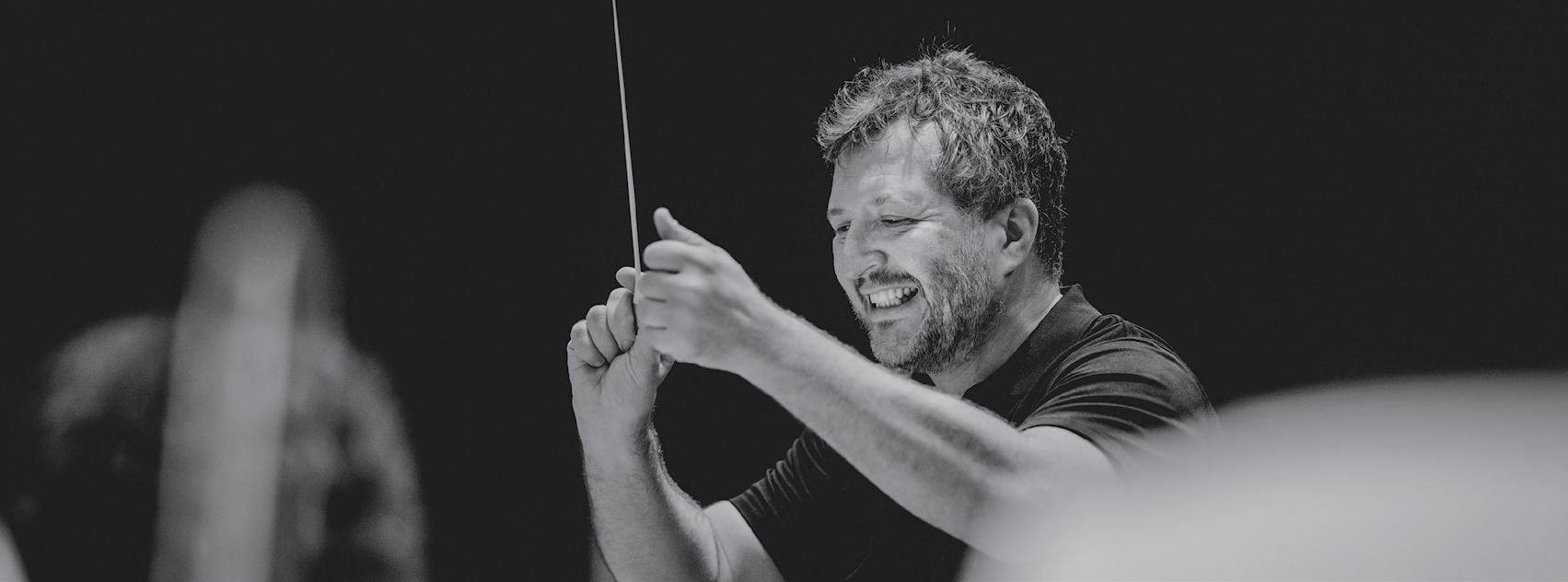
(b.1971)
Venezia notturna
Das klinget so herrlich, das klinget so schön
Auf dem Wasser zu singen
Et . . (tango mortale)
L’Embarquement
O Albion Lethe
C alder Quartet
Benjamin Jacobson, Tereza Stanislav, violins; Jonathan Moershal, viola; Eric Byers, cello
NANCARROW Three Canons for Ursula
(1912–1997)
Canon (5:7)
Canon (6:9:10:15)
Canon (2:3)
Thomas Adès, piano
MARK SIMPSON Lov(escape) US PREMIÈRE
(b.1988) Mark Simpson, clarinet; Inon Barnatan, piano
THOMAS ADÈS Four Berceuses from The Exterminating Angel
Mark Simpson, clarinet; Itsuki Yamamoto*, viola; Thomas Adès, piano
The Four Quarters US PREMIÈRE
Nightfalls
Morning Dew Days
The Twenty-Fifth Hour
C alder Quartet
*2023 SummerFest Fellowship Artist
Performed without intermission.
Born March 1, 1971, London, England, United Kingdom
Composed: 1994
Approximate Duration: 21 minutes
Six of the seven titles which comprise Arcadiana evoke various vanished or vanishing “idylls.” The odd-numbered movements are all aquatic, and would splice if played consecutively. I might be the ballad of some lugubrious gondolier; III takes a title and a figuration from a Schubert Lied; in V a ship is seen swirling away to L’Isle Joyeuse; VII is the River of Oblivion.
The second and sixth movements inhabit pastoral Arcadias, respectively: Mozart’s “Kingdom of Night,” and more local fields. The joker in this pack is the fourth movement, the literal dead centre: Poussin’s tomb bearing the inscription “Even in Arcady am I.”
Arcadiana was commissioned by the Endellion Quartet with funds from the Holst Foundation.
Born October 27, 1912, Texarkana, AR
Died August 10, 1997, Mexico City
Composed: 1988
Approximate Duration: 9 minutes
Conlon Nancarrow studied at the Cincinnati College Conservatory and in Boston with Sessions, Piston, and Slonimsky. He supported himself briefly as a jazz trumpeter, then joined the Abraham Lincoln Brigade to fight in the Spanish Civil War (he paid his way across the Atlantic by playing jazz trumpet on the ship). Returning to the United States after the Loyalist defeat, Nancarrow—who had joined the Communist Party in 1934—faced the loss of his visa because of his political affiliations, and so he moved to Mexico City, where he lived for the rest of his life; he became a Mexican citizen in 1956. Before his departure, Nancarrow had become fascinated with rhythm, particularly with conflicting rhythms and meters. This led him to make an unusual musical decision: he composed almost exclusively for player piano, on which he could achieve a level of rhythmic complexity and accuracy impossible with mortal performers. The core of Nancarrow’s music is his approximately fifty Studies for Player Piano. These have been released on various recordings, and several were choreographed by Merce Cunningham, whose tours helped spread knowledge of what Nancarrow was doing.
Nancarrow’s rhythmic complexity fascinated other
musicians (Copland commented: “You have to hear it to believe it”), and there were a handful of pianists willing to master the complexities of music originally conceived for a mechanical player. Late in his long life, Nancarrow became aware of performers like the Arditti String Quartet and pianist Ursula Oppens, who specialized in modern music, and he began once again to write for live performers. In 1988—when he was 75—Nancarrow wrote his Third String Quartet for the Arditti Quartet and a set of three canons for piano for Ursula Oppens. One of these canons was so complex that Nancarrow held it back, and Oppens performed the others under the title Two Canons for Ursula. The third has been discovered and found to be—for all its complexities—playable, and this evening Thomas Adès performs the complete set.
The first canon is cast in the shape of a great arc. The opening statement—for left hand alone—is already extremely complex rhythmically; it is eventually joined by the right hand at a slightly faster tempo (the ratio is 5:7), builds to a climax, then winds its way back down to the quiet close. The middle canon (this is the one held back because of its complexity) requires the pianist to play four separate lines in the tempo ratio 6:9:10:15. The vigorous final canon, which dances with a playful energy, sets the hands in the ratio 2:3.
—Eric BrombergerBorn September 26, 1988, Liverpool
Composed: 2006
Approximate Duration: 4 minutes
Lov(escape) was written for my semi-final recital for the BBC Young Musician of the Year competition in 2006. The title refers to the relationship between the two gestures that characterise the first idea: the opening is yearning and romantic, whilst the second is more erratic and desperate to escape. They can be seen as both connected and separate, hence the formation of the title.
The first section sees the development of this idea, while the second concentrates solely on the latter, more erratic gesture, displaying the virtuosic capabilities of the clarinet with some extended techniques—including screaming through the instrument, glissandi, and fluttertonguing. In the final section I try to reconcile the differences between the two characters, with wild swoops in both instruments ending in a frantic struggle between the two.
—Mark SimpsonComposed: 2021
Approximate Duration: 11 minutes
See insert for program note.
Composed: 2010
Approximate Duration: 20 minutes
Thomas Adès takes notes seriously. For him they are magnetic: “the two notes in an interval... have a magnetic relationship of attraction or repulsion which creates movement in one direction or another” (in conversation with Tom Service). The composer has to find where the notes want to go, exploring their inherent instability. Adès admires composers who respect their material in this way: Beethoven, Haydn, Janáček, Sibelius. And it is worth taking the “prodigiously talented” (The New York Times) Adès seriously—as an academic (double starred first from King's College, Cambridge), pianist (second in Young Musician of the Year and internationally renowned performer), percussionist, and of course composer. Operas and a wide variety of other vocal, orchestral and chamber music have established him as perhaps the best known British composer of his generation.
The Four Quarters follows Arcadiana (1994) as Adès’ second string quartet. The first quarter, Nightfalls, opens with a texture popular with Adès—very high combined with very low. The two violins alternately scintillate like twinkling stars while the viola and cello growl like the body of the earth settling down for the night: two separate worlds together. A slow violin melody builds through organ-like chords to a climax which then fades back to the scintillating world of the opening. The second movement, Morning Dew scintillates in a different way with technically demanding pizzicato in continually changing, arithmetically daunting time signatures. Days opens with a simple, repeated rhythm (lasting 13 quavers) on a single note. Adès complicates things by writing the rhythm across bars of changing time signature. The second violin persists with the rhythm against growing harmonies from the other instruments until first the viola takes it over and then the whole quartet shouts the rhythm fortissimo, before dying down, but with that rhythm still persisting. The final movement, The TwentyFifth Hour, has a fiendishly complex, eponymous time signature—25 semiquavers to a bar (8+3+8+6)—
which Adès asks to be played “very sweetly, like a march and dancingly, like a song.” Fortunately, we listeners are largely unaware of the dense technical problems facing the performers: Adès’ music engages with fascinating and often beautiful sounds. To paraphrase a remark attributed to quantum mechanic Richard Feynman, “If you think you understand Tom Adès, you don't understand Tom Adès.” The end of the movement returns to the sound world of the work’s opening, resolving all the previous complexities to a simple D major chord combining three very low with two very high notes.
—Chris DarwinTakács Quartet
PRELUDE · 6 PM
THE BAKER-BAUM CONCERT HALL
Quartet Integra performs Smetana’s String Quartet No. 1 in E Minor

“From My Life”
Support for this program is provided by:
Judith Bachner and Eric Lasley
Gordon Brodfuehrer
Joyce and Ted Strauss Family Trust
Join us for a celebration in the Wu Tsai QRT.yrd immediately following the performance. Must be 21 and older with valid I.D.
WEDNESDAY, AUGUST 9, 2023 · 7 PM
THE BAKER-BAUM CONCERT HALL
BEACH Piano Quintet in F-sharp Minor, Opus 67 (1867–1944) Adagio; Allegro moderato
Adagio espressivo
Allegro agitato
Inon Barnatan, piano; Takács Quartet
Edward Dusinberre, Harumi Rhodes, violins; Richard O’Neill, viola; András Fejér, cello
PAUL WIANCKO American Haiku for Viola and Cello (b.1983)
Far Away
In Transit
Home
Midweek Masterworks
La Jolla Music Society’s Season is supported by The City of San Diego Commission for Arts and Culture, The Lodge at Torrey Pines, ProtoStar Foundation, Vail Memorial Fund, Banc of California, JP Morgan Chase, ResMed Foundation, Bright Events Rentals, Café Coyote, Rancho Coyote Vineyards, Ace Parking, Brenda Baker and Steve Baum, Raffaella and John Belanich, Gordon Brodfuehrer, Ric and Eleanor Charlton, Mary Ellen Clark, Julie and Bert Cornelison, Elaine Galinson and Herbert Solomon, Teresa and Harry Hixson, Joan and Irwin Jacobs, Angel and Fred Kleinbub, Vivian Lim and Joseph Wong, Jeanette Stevens, Debra Turner, Sue and Peter Wagener, and Bebe and Marvin Zigman.
Richard O’Neill, viola; Paul Wiancko, cello;
DVO ˇ RÁK String Quartet in F Major, Opus 96 “American” (1841–1904)
Allegro ma non troppo
Lento
Molto vivace
Vivace ma non troppo
Takács Quartet
Performed without intermission.
Program Notes by Eric Bromberger
Born September 5, 1867, Henniker, NH
Died December 27, 1944, New York City
Composed: 1907
Approximate Duration: 27 minutes
Amy Beach deserves to be remembered as more than just America’s first successful woman composer, as she is often categorized. A child prodigy, she appeared as piano soloist with the Boston Symphony Orchestra at 17 and began composing while still a girl. At age 18 she married the Boston surgeon H.H.A. Beach, who—though a cultivated man musically—did not want his wife performing in public. He did, however, encourage her to compose. Beach had no formal training as a composer (which in her day meant European training), and as a composer she was essentially self-taught. Nevertheless, over the next several decades she produced a sequence of successful largescale works. Her Mass in E-flat (1890) was the first work by a woman composer presented by Boston’s Haydn and Handel Society, and her “Gaelic” Symphony (1897) and Piano Concerto (1900) were performed to critical acclaim. Upon the death of her husband in 1910, Beach—then 43—resumed her career has a concert pianist, making a particularly successful series of tours through Europe. She composed throughout her life (her list of opus numbers runs to 152), and she was still active as pianist and composer at the time of her death in 1944 at age 77.
Beach made her career primarily in New England (she is often identified with the Boston school of composers that included Parker, Foote, and Chadwick) and in New York, so it comes as a surprise to learn that she was particularly attracted to California. She visited this state often, performed here on a number of occasions, and sometimes lived here for extended periods. One of her best-known works, the Variations for Flute and String Quartet, was commissioned by the San Francisco Chamber Music Society in 1916. During the Pan-Pacific Exposition of 1915—16, there were two Beach festivals in California, one in San Francisco and the other in San Diego. At the latter she performed at the outdoor Spreckels Organ Pavilion in Balboa Park, and unfortunately it rained that day—a photo survives showing Beach (wearing a large hat) playing while the audience listens from beneath umbrellas.
Beach composed her Piano Quintet in 1907–08, and she was the pianist at its first performance on February 20, 1908, in Boston. The world of music was in ferment
in 1908—in that year Mahler composed Das Lied von der Erde, Schoenberg his Second String Quartet, and Scriabin his Poem of Ecstasy. There is not the slightest trace of these new directions in Beach’s Piano Quintet, which remains firmly rooted in the nineteenth-century musical traditions with which she had grown up. Brahms himself would have felt comfortable with the form and grand sonority of her Piano Quintet, though he might have been surprised by the chromaticism of her writing.
Beach’s Piano Quintet is a concise work: its three movements span only 24 minutes, and there are thematic connections between movements. Much of its big sound comes from Beach’s decision to set the piano against the massed strings, which often play in octaves—that can make for a dramatic situation musically as well as an impressive sound. Some of that sound is heard in the opening moments of the Adagio introduction, though at the Allegro moderato the first violin sings its long, chromatic opening idea over nervous, rippling piano accompaniment. Beach marks the second subject of this sonata-form movement both espressivo and dolcissimo, and an extremely active development treats both themes before the movement comes to a quiet close.
Strings are muted as they lay out the opening idea of the Adagio espressivo, but those mutes come off as this movement rises to several grand climaxes, the first marked appassionato and the second triple forte. Beach titles the finale Allegro agitato, and agitated it certainly is, as it opens with racing runs and a return to the broad sonority of the opening movement. The viola has the long second subject before a fugue-like passage for strings leads to a recall of the music from the slow introduction to the first movement. This builds to a great climax, and a Presto coda drives the quintet to its sonorous close.
Born August 1, 1983, San Clemente, CA
Composed: 2014
Approximate Duration: 9 minutes
Commissioned by Ayane Kozasa and premiered at the S&R Foundation in 2014, Paul Wiancko’s American Haiku is a reflection on the composer’s Japanese American identity and an ode to the evocative concision of haiku. A celebration of detail and color, the piece is a journey laid out in three stages: “Far Away,” “In Transit,” and “Home.”
The composer writes:
Inspired by the evocative concision of the traditional Japanese form of poetry, American Haiku is music that embraces subtle inflection and bright color alike. It is a musical identity crisis of sorts—an unpacking of my musical influences as well as an exploration of the connection between my compositional voice and my Japanese American heritage.
I tried to paint the piece in bright, deep, clearlyintentioned colors—the way great haiku read to me. With art, it’s easy to be vague, and vague can be incredible, but there is a specificity about old haiku (i.e. Basho and Issa) that is addictive. Their poetry points to the depths of the soul even though at face value they read as simple observations. Every character is full of beauty and function. Words have multiple connotations and the phrasing is structured in a way that immediately taps into the psyche. I also love that haiku range from deep and heady to light and funny.
There are no specifically Japanese idioms in American Haiku, though there is a light smattering of pentatonality which seems to occur naturally in my music—my mom and sisters played a lot of traditional koto music when I was a kid and the punctuation and intentionality and tonality of that music sticks with me. In my mind the truly Japanese elements of this piece are the clarity of intention (as in Japanese music and haiku) and the attempt to evoke deep, honest feelings by employing succinctness, harmonically and otherwise.
The American elements are more audible. The jazz, bluegrass, and Appalachian fiddling bits are pretty overt and in most cases rely on the piece’s strong rhythmic personality and timbre of the instrumentation to tie themselves together.
(From a discussion with composer Timothy Mauthe on Feb 7, 2018)
String Quartet in F Major, Opus 96 “American” ANTONÍN
Born September 8, 1841, Mühlhausen, Bohemia
Died May 1, 1904, Prague
Composed: 1893
Approximate Duration: 25 minutes
During his three-year tenure as director of the National Conservatory of Music in New York (1892–95), Dvořák was fascinated by life in the New World, but he missed his family—four of his six children had remained in Bohemia—and his homeland. Dvořák’s secretary in New York City was a young violinist named Josef Jan Kovařík,
who had grown up in the Czech community of Spillville, Iowa. Kovařík invited Dvořák to spend the summer of 1893 in Spillville, and the composer gladly accepted. There, with his wife (and now all his children), Dvořák spent a happy and productive summer, surrounded by familiar language, customs, and food. He was amazed by Iowa’s vast prairies and forests, he played the organ in the Spillville church, he heard native birds, and he watched as local Indians came into the village to sell herbs and dance.
Dvořák also composed that summer. He sketched the String Quartet in F Major in only three days (June 8–10, 1893) and had it complete in fifteen. Dvořák’s comment was concise: “Thank God. It went quickly. I am satisfied.” Early audiences were more than satisfied. The Kneisel Quartet gave the official première in Boston on January 1, 1894, and performed it fifty times over the next several seasons. The quartet quickly acquired the nickname “American.” The source of that nickname is uncertain, but it has become an inescapable part of how we think of this music, and nationalistic Americans were quick to claim that here at last was an authentic American classical music based on American materials. Dvořák would have none of that. He would later denounce any “nonsense about my having made use of original American melodies. I have only composed in the spirit of such American national melodies.” He himself offered a useful introduction to his quartet: “When I wrote this quartet in the Czech community of Spillville in 1893, I wanted to write something for once that was very melodious and straightforward, and dear Papa Haydn kept appearing before my eyes, and that is why it all turned out so simply. And it’s good that it did.”
Part of the charm of this quartet is precisely that it did turn “out so simply” and that it is so “melodious and straightforward.” The Quartet in F Major is full of instantly memorable tunes and boundless energy, and its sunny surface is seldom clouded by harmonic or textural complexities. One might not readily identify “Papa Haydn” as the father of this quartet, but that older master’s cheerful spirits and sophisticated writing for strings are very much part of this music.
It is the viola that leads the way into the opening of the Allegro ma non troppo, and that sharply inflected, risingand-falling theme will give shape to much of the material that follows. A songful second subject in the violin has a rhythmic snap that some have felt to be American in origin, though such a snap is typical of the folk music of many lands. The development concludes with a brief fugal passage derived from the opening viola melody.
Many regard the Lento as the finest movement in the
quartet—and one of the finest slow movements Dvořák ever composed. It is virtually a continuous flow of melody, as the violin’s lamenting theme—marked molto espressivo— sings hauntingly over undulating accompaniment. At the close the cello takes up this theme as the other instruments alternate pizzicato and bowed accompaniment.
The scherzo rips along cheerfully, its main theme sharing the rhythm of the quartet’s opening theme. About twenty measures into this movement, Dvořák gives the first violin a melody he heard a bird singing outside his window in Spillville (this bird was long identified as the scarlet tanager, though recent research suggests that it may have been the red-eyed vireo). The scherzo alternates this cheerful opening section with interludes that are minor-key variants of its opening theme.
The most impressive thing about the rondo-finale, marked Vivace ma non troppo, is its rhythmic energy, in both the themes themselves and the accompanying voices. The rondo theme, introduced immediately by the first violin, is one of those sparkling melodies that are impossible to forget. The central episode in this rondo is a quiet chorale, and some have heard it as a reminiscence of Dvořák’s experience of playing the tiny organ in the church at Spillville. Some of this movement’s interludes recall the shape of themes from earlier movements, and the blazing rush to the close is one of the most exhilarating Dvořák ever wrote.
Many have been quick to argue against the notion that there is anything distinctly “American” about this quartet, claiming instead that it is music composed by a thoroughly Bohemian composer while on vacation in this country. And perhaps they are right. But do we hear the influence of spirituals in the long, plaintive violin melody in the Lento? The rhythms of Indian drums in some of the accompaniment figures of the quartet’s outer movements? The song of an American bird in the scherzo? The gentle remembrance of a church organ in the finale?
Listeners may decide for themselves whether the nickname “American” is fitting for this quartet.
PRELUDE · 6:30 PM
THE JAI
Lecture by Michael Gerdes
Support for this program is provided by:
Judith Bachner and Eric Lasley
FRIDAY, AUGUST 11, 2023 · 7:30 PM
THE BAKER-BAUM CONCERT HALL
SIBELIUS Serenata for Two Violins and Cello, JS169 (1865–1957)
Noah Bendix-Balgley, Max Tan*, violins; Julia Lee*, cello

CHOPIN Sonata in G Minor for Cello and Piano, Opus 65 (1810–1849)
Allegro moderato
Scherzo: Allegro con brio
Largo
Finale: Allegro
Alisa Weilerstein, cello; Inon Barnatan, piano
KLEIN String Trio (1919–1945)
Allegro
Lento: Variations on a Moravian Folksong
Molto Vivace
La Jolla Music Society’s Season is supported by The City of San Diego Commission for Arts and Culture, The Lodge at Torrey Pines, ProtoStar Foundation, Vail Memorial Fund, Banc of California, JP Morgan Chase, ResMed Foundation, Bright Events Rentals, Café Coyote, Rancho Coyote Vineyards, Ace Parking, Brenda Baker and Steve Baum, Raffaella and John Belanich, Gordon Brodfuehrer, Ric and Eleanor Charlton, Mary Ellen Clark, Julie and Bert Cornelison, Elaine Galinson and Herbert Solomon, Teresa and Harry Hixson, Joan and Irwin Jacobs, Angel and Fred Kleinbub, Vivian Lim and Joseph Wong, Jeanette Stevens, Debra Turner, Sue and Peter Wagener, and Bebe and Marvin Zigman.
Noah Bendix-Balgley, violin; Richard O’Neill, viola; Paul Wiancko, cello
BEETHOVEN String Quartet in E Minor, Opus 59, No. 2 (1770–1827)
Allegro
Molto adagio
Allegretto
Presto
Takács Quartet
Edward Dusinberre, Harumi Rhodes, violins; Richard O’Neill, viola; András Fejér, cello
*2023 SummerFest Fellowship Artist
Born December 8, 1865, Hämeenlinna, Finland
Died September 20, 1957, Järvenpää, Finland
Composed: 1887
Approximate Duration: 7 minutes
We think of Sibelius as a composer, but in fact he set out to make his career as a concert violinist. He studied violin at the Helsinki Conservatory, he was good enough to play the Mendelssohn Violin Concerto, and he auditioned for a place in the Vienna Philharmonic while he was studying in that city. His failure to win that audition marked the end of his dream of making his career as a violinist—thereafter, he concentrated only on composition.
Sibelius composed his Serenata for Two Violins and Cello in1887, the year he turned 22. That is an unusual combination of instruments, and in the same year Sibelius wrote a Menuetto and Adagio for the same ensemble. There is no evidence that all these pieces were intended as one work, however, and the Serenata is always performed by itself. Serenata is a term without precise musical meaning. If it originally referred to a work that is sung, the term evolved to denote—generally!—a work of lighter character—a serenata is usually felt to be a more relaxed form of a serenade Perhaps we should understand it to mean a brief, relaxed, and melodic work. That is exactly the sense that Sibelius intends here.
The combination of two high, melodic instruments with one low instrument presents challenges for a composer, not the least of which is establishing a harmonic foundation. Here the cello, playing pizzicato, is often employed to establish that harmonic context while the two violins sing high above it. After a full-throated flourish from all three instruments, the Serenata is episodic in construction, and its opening duet for the violins will return several times. While the Serenata is nicely written for the violins, it demands good performers—some of the writing soars very high before this graceful music glides to its calm conclusion.
Though Sibelius would go on to write very different music as a mature composer, the Serenata reminds us that even as a young man working to master his craft and to find his own voice, he was already an extremely talented composer.
Born February 22, 1810, Zelazowa Wola, Poland
Died October 17, 1849, Paris
Composed: 1845
Approximate Duration: 25 minutes
Chopin’s Cello Sonata (1845–46) dates from the troubled final years of his life; it was in fact his last published work. Chopin wrote little music for instruments other than piano, but he appears to have had a special fondness for the cello, for he wrote three different works for cello and piano.
Composing the Cello Sonata was particularly difficult for a composer unaccustomed to writing for anything but piano. In a letter to his sister, Chopin said: “I write a little and cross out a lot. Sometimes I am pleased with it, sometimes not. I throw it into a corner and pick it up again.” The Cello Sonata has not won a wide following, and one of Chopin’s biographers had gone so far as to describe it as nothing but “immense wildernesses, with only here and there a small flower.”
Yet this interesting and rewarding music shows a littleknown side of Chopin. The sonata is remarkable for the concentration of its material: much of the music of the first movement grows out of the cello’s opening statement, and certain theme-shapes appear in all its movements. Some believe that the Cello Sonata suggests the course Chopin’s music might have taken, had he not died at age 39 of tuberculosis.
The sonata is in four movements. The Allegro moderato opens with a brief introduction by the piano, and when the cello enters it borrows some of the melodic shape of the introduction for its main theme. The mood of this music is mercurial: it is by turns agitated, noble, dramatic, and gentle. The structure here is unusual as well, for Chopin shortens the recapitulation and drives the movement to the two sharp concluding chords. The Scherzo, much lighter in texture, is derived from material in the first movement. It rushes ahead on short phrases that contrast with the long lines of the wonderful trio section: here Chopin’s soaring melody rocks along gracefully before the movement concludes with a brief reprise of the scherzo. The Largo is relatively short (only 27 measures long), but this gorgeous music is the expressive center of the sonata. The cello’s wistful main idea, marked cantabile and dolce, sings gracefully above the piano’s steady accompaniment, grows to a climax, and falls away to the quiet close. The vigorous Finale derives much of its energy from Chopin’s contrast of triplet and dotted rhythms. A solemn march-like passage provides a measure of contrast before this extended movement comes to its close on a più mosso coda.
Born December 6, 1919, Pˇrerov, Czechoslovakia
Died January 27, 1945, Fürstengrube concentration camp, Silesia
Composed: 1944
Approximate Duration: 13 minutes
Gideon Klein studied composition at the Prague Conservatory and musicology and philosophy at Charles University, but his studies were broken off when Czech universities were shut down shortly after the beginning of World War II. For two years, Klein led what amounted to an “underground” life and musical career, but in December 1941, when he was 22, he was arrested and transported to the Nazis’ “model” concentration camp at Terezín (or Theresienstadt). There Klein plunged into work, lecturing, composing, and contributing to the vitality of the remarkable musical community at that camp. But on October 1, 1944, he was transported to Auschwitz and then on to Fürstengrube in the coals mines of Silesia. There he died a few weeks after his 25th birthday and only three months before the camp was liberated.
The String Trio was Klein’s final composition—he completed it at the end of September 1944, just days before he was transferred to Fürstengrube. The Trio has become much better known in an arrangement for string orchestra made in 1990 by Czech composer Vojtěch Saudek (Saudek titled his orchestral version Partita for Strings), but at this concert the music is performed in its original form.
The Trio is in three movements in the expected fast-slowfast sequence, though the slow middle movement dominates the work—it is longer than the two outer movements combined. The opening Allegro rides along a shaft of nonstop energy. This concise sonata-form movement contrasts a perpetual-motion-like opening rush with a second subject reminiscent of the folk music of Eastern Europe. Its energy spent, the movement slips into silence.
Marked Lento, the second movement is a set of variations on the Moravian folksong Ta knezdubská (“The Spire of Knezdub”). That folktune—slow, dark, heavilyinflected—is heard at the beginning, and eight variations follows. Some of these are melodic variations, some harmonic; two are quite fast, one is played pizzicato. But the somber character of the folksong melody remains intact through all the variations, and at the end Klein offers a climactic recall of that theme before the movement concludes quietly. This movement has become well-known in its version for string orchestra, which is sometimes performed separately.
Klein rounds matters off with a Molto vivace that returns
to the manner and mood of the opening movement. Its main subject, which powers its way above steady accompaniment, feels like a folkdance tune, and while matters grow more complex rhythmically as the movement proceeds, the high spirits of the opening prevail and drive the music to a most emphatic close.
Born December 16, 1770, Bonn
Died March 26, 1827, Vienna
Composed: 1806
Approximate Duration: 32 minutes
When Count Andreas Razumovksy, the Russian ambassador to Vienna and chamber music enthusiast, commissioned a set of three string quartets from Beethoven in 1805, he could not possibly have known what he would receive in return. Beethoven had at that time written one set of six quartets (published in 1801), cast very much in the high classical mold as set out by Haydn and Mozart. Doubtless Razumovsky expected something on this order, and he provided Beethoven with some Russian themes and asked that he include one in each of the three quartets.
The three quartets Beethoven wrote in 1806, however, were so completely original that in one stroke they redefined the whole conception of the string quartet. These are massive quartets, both in duration and dramatic scope, and it is no surprise that they alienated virtually everyone who heard them. Only with time did Beethoven’s achievement in this music become clear. Trying to take the measure of this new music, some early critics referred to the Razumovsky quartets as “symphony quartets,” but this is misleading, for the quartets are true chamber music. But it is true that what the Eroica did for the symphony, these quartets did for the string quartet: they opened new vistas, entirely new conceptions of what the string quartet might be and of the power it might unleash.
The first Razumovsky quartet is broad and heroic and the third extroverted and virtuosic, but the second has defied easy characterization. Part of the problem is that in this quartet Beethoven seems to be experimenting with new ideas about themes and harmony. The thematic material of the first movement in particular has baffled many, for it seems almost consciously non-thematic, while harmonically this quartet can be just as elusive. All four movements are in some form of E, but Beethoven refuses to settle into any key for very long, and one key will melt into another (often unexpected) key in just a matter of measures.
Such a description would seem to make the Quartet in
E Minor a nervous work, unsettled in its procedures and unsettling to audiences. But the wonder is that—despite these many original strokes—this music is so unified, so convincing, and at times so achingly beautiful. Simple verbal description cannot begin to provide a measure of this music, but a general description can at least aid listeners along the way to discovering this music for themselves. The two chords that open the Allegro will recur throughout, at quite different dynamic levels and used in quite different ways. The “theme” that follows seems almost a fragment, and Beethoven reduces it even further, isolating rhythmic motifs and developing intervals from this opening statement. This is a big movement, and Beethoven asks for repeats of both the exposition and development (not always observed in performance) before the movement closes on a massive restatement of the opening theme, which suddenly fades into silence.
Beethoven’s friend Carl Czerny said that the composer had been inspired to write the Molto Adagio “when contemplating the starry sky and thinking of the music of the spheres.” Beethoven specifies in the score that “This piece must be played with great feeling,” and after the somewhat nervous first movement the Adagio brings a world of expressive intensity. This massive movement, in sonata form, opens with a prayer-like main theme, but all is not peace—along the way Beethoven punctuates the generally hushed mood with powerful massed chords.
The Allegretto, with its skittering main theme (the pulses are off the beat), feels somewhat playful. In its trio section, Beethoven introduces Razumovsky’s “Russian theme” and then proceeds to subject it to such straitjacketed contrapuntal treatment that some critics have felt that Beethoven is trying to annihilate the theme; Joseph Kerman speaks of the trio as Beethoven’s “revenge” on Razumovsky. The finale begins in the wrong key (C major) and then wobbles uncertainly between C major and E minor throughout. Despite the air of high-spirited dancing in the main theme, this movement too brings stuttering phrases and the treatment of bits of theme, which are sometimes tossed rapidly between the four voices. This most original quartet concludes with a Più Presto coda.
SUNDAY, AUGUST 13, 2023 · 3 PM THE BAKER-BAUM CONCERT HALL
Support for this program is provided by:
Judith Bachner and Eric Lasley
Joyce and Ted Strauss Family Trust
La Jolla Music Society’s Season is supported by The City of San Diego Commission for Arts and Culture, The Lodge at Torrey Pines, ProtoStar Foundation, Vail Memorial Fund, Banc of California, JP Morgan Chase, ResMed Foundation, Bright Events Rentals, Café Coyote, Rancho Coyote Vineyards, Ace Parking, Brenda Baker and Steve Baum, Raffaella and John Belanich, Gordon Brodfuehrer, Ric and Eleanor Charlton, Mary Ellen Clark, Julie and Bert Cornelison, Elaine Galinson and Herbert Solomon, Teresa and Harry Hixson, Joan and Irwin Jacobs, Angel and Fred Kleinbub, Vivian Lim and Joseph Wong, Jeanette Stevens, Debra Turner, Sue and Peter Wagener, and Bebe and Marvin Zigman.
PAUL WIANCKO Closed Universe for Solo Cello, Piano Quartet and Glockenspiel (b.1983) Alisa Weilerstein, cello; Joyce Yang, piano; Geneva Lewis, violin; Teng Li, viola; Paul Wiancko, cello & glockenspiel
DOHNÁNYI Piano Quintet in C Minor, Opus 1 (1877–1960) Allegro
Scherzo: Allegro vivace
Adagio, quasi andante
Finale: Allegro animato; Allegro
Joyce Yang, piano; Takács Quartet
Edward Dusinberre, Harumi Rhodes, violins; Richard O’Neill, viola; András Fejér, cello
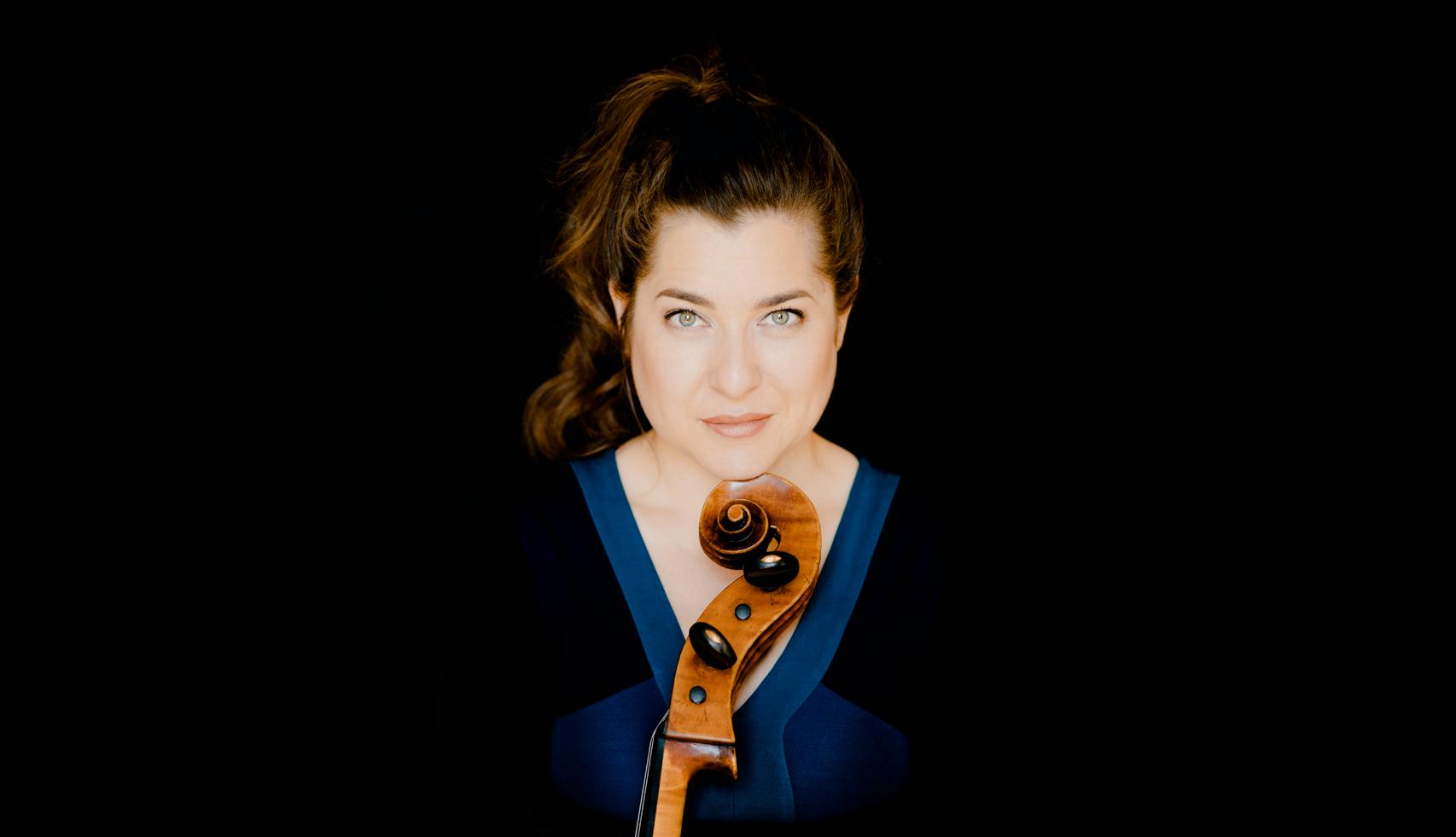
INTERMISSION
SCHUBERT Piano Trio in E-flat Major, D.929 (1797–1828) Allegro
Andante con moto
Scherzo: Allegro moderato
Allegro moderato
Inon Barnatan, piano; Noah Bendix-Balgley, violin; Alisa Weilerstein, cello
Born August 1, 1983, San Clemente, CA
Composed: 2016
Approximate Duration: 7 minutes
In early 2016, I had an acute and debilitating addiction to the news cycle. Increasingly alarming headlines made it difficult to focus on anything creative without first blocking everything out and cocooning myself in a sort of alternate reality. “Closed Universe” was composed almost entirely within those fragile moments, and the music reflects my attempt to find some semblance of beauty and optimism during a time marred by uncertainty and distress. It’s a fantasy. And escapism at its finest.
Cosmologically speaking, the title of the piece refers to a model of the universe in which space is no longer expanding, but slowly contracting, and inevitably ending in “the big crunch.” But don’t think about that right now. Just enjoy the pretty glockenspiel! — Paul Wiancko, 2023
Born July 27, 1877, Pozsony, Hungary
Died February 9, 1960, New York City
Composed: 1895
Approximate Duration: 29 minutes
It is hard to believe that this accomplished music was written by a seventeen-year-old boy. But Ernst von Dohnányi was a prodigy of many talents: he became a composer, a virtuoso pianist, and a conductor (his grandson is Christoph von Dohnányi, former music director of the Cleveland Orchestra). Dohnányi truly was one of those figures whose careers span different eras. Born when Hungary was part of the Austro-Hungarian empire and Liszt and Wagner were still alive, Dohnányi as a boy met Brahms, who encouraged his composition and helped guide his career. Concert tours throughout Europe and the United States established his reputation as a pianist, and later he became a conductor, leading the Budapest Philharmonic Orchestra from 1919 until 1944. Following World War II, Dohnányi settled in the United States, where he taught for years at Florida State University. He died in the year John Kennedy was elected president.
Dohnányi’s music has always hovered right on the edge of genuine popularity. He has had passionate advocates
among performers and critics, and at least one work— Variations on a Nursery Tune—has made it into the standard repertory. But the majority of his output—which includes three operas, two symphonies, four concertos, and a vast amount of piano and chamber music—remains little-known.
Dohnányi’s Piano Quintet in C Minor was published as his Opus 1, though he had written many works before it. The quintet’s first performance took place in Vienna in 1895. That première was in fact arranged by Brahms himself, then only two years from death, and it should come as no surprise that the Piano Quintet shows the strong influence of the older composer, particularly in its romantic richness and a harmonic language quite similar to Brahms’ own.
The quintet is dominated by the stirring opening theme of the first movement, heard immediately in the piano. This very Brahmsian melody—with its characteristic drop of a fourth—will recur in many forms throughout the quintet. Strings present the lyric second theme group, also of Brahmsian spaciousness; Dohnányi marks it dolce. A long development leads to the close on a triumphant restatement of the opening idea, now in C major.
The scherzo is in ABA form: its outer sections hurry along busily, while the trio is Schubert-like in its songfulness. The Adagio, quasi andante takes some of its somber character from the dark color of the lower strings, which often dominate textures here—the viola announces the long opening idea of this ternary-form movement. A more animated middle section in D-flat major soars into the violins’ high registers before the return of the opening material and the quiet close. The finale brings back the mood and manner of the opening movement: the main theme here is closely related to the quintet’s beginning. Much of the writing is for unison strings, and Dohnányi quickly alternates meters, with the music leaping between 5/4 and 6/4 almost by measure. A variation of the opening idea becomes the basis for a brief fugato, and the first movement’s opening theme comes back in all its glory to bring the quintet to a dramatic conclusion.
If imitation is the sincerest form of flattery, Brahms had every reason to feel flattered by this work. But Dohnányi’s Piano Quintet in C Minor is remarkable music in its own right and a stunning achievement by a young man still several years short of his twentieth birthday.
Born January 31, 1797, Vienna
Died November 19, 1828, Vienna
Composed: 1827
Approximate Duration: 43 minutes
The première of the Trio in E-flat Major was one of the few public triumphs in Schubert’s brief life. It took place at a concert of his music given in Vienna on March 26, 1828, one year to the day—coincidentally—after Beethoven had died in that city. Schubert was lucky in his performers on that occasion: the violinist was Joseph Böhm, the cellist Joseph Linke, and the pianist Carl Maria von Bocklet—all three had been associated with Beethoven, who admired their playing. Schubert’s friends had been after him for some time to arrange such a concert, but the shy composer, reluctant to take on the financial risk, had always put it off. The audience, packed with Schubert’s friends, was wildly enthusiastic. The concert even turned a profit, and the composer found himself briefly wealthy—he used some of the money to go hear Paganini, who was appearing then in Vienna. Through the remainder of the year a stream of masterpieces seemed to leap from Schubert’s pen, including the final revision of the Ninth Symphony and the Fantasy in F Minor, as well as the composition of the last three piano sonatas, the Schwanengesang songs, and the Cello Quintet. But that stream would come to a sudden stop in November— eight months after his triumphant concert Schubert was dead at age 31.
The highlight of the March concert had been this trio, written the previous November. Lasting three-quarters of an hour, it is of gigantic proportions for a piano trio, but listeners—charmed by Schubert’s melodies, the wonderful harmonic freedom of his late music, and the trio’s high spirits—would not wish it one instant shorter.
The Allegro opens with its first theme, a powerful unison figure three octaves deep. This theme is only six measures long, but in that brief space Schubert has already modulated from E-flat major to C minor. Almost instantly, a countertheme spins off this main idea, and later in the movement still another theme grows out of this opening idea—it is as if that basic shape is so pregnant and Schubert’s melodic gift so fertile that themes are being born in front of us. The quiet second subject is first heard in the piano over steady strings. The long development moves easily over silvery piano triplets before the concluding cadence, which ingeniously combines both main themes.
The Andante con moto begins with an accompaniment that is brilliant in its understatement—rather than offering
a steady rhythm, Schubert gives the piano an odd little hop, and that asymmetric hop is the difference between routine and inspired writing. Over it, the cello sings the soaring and noble main melody. This opening appears to have had an unusual inspiration: in November 1827, just as he was beginning work on this trio, Schubert heard a recital by the Swedish tenor Isak Albert Berg, and among the Swedish songs sung on that occasion was one whose main themeshape anticipates Schubert’s theme here. The movement rises to a huge climax, marked triple forte, before concluding quietly on the opening theme.
The third movement is marked Scherzo: Allegro moderato, though in a letter to his publisher Schubert referred to it as a “minuet.” While it retains some of the shape of the classical minuet, it is much too fiercely argued to be dance music, and its real identity lies somewhere in that area between scherzo and minuet. Schubert builds the outer sections on canons, while the trio is full of energy. The concluding Allegro moderato is an extended movement, but in its original form it was even longer—Schubert in fact had made cuts even before he sent it to his publisher. The movement flows along agreeably, and in an unusual example of cyclic writing Schubert twice brings back the big cello tune—the so-called “Swedish” theme—from the slow movement. The reappearance of this theme, now varied rhythmically, is one of the most striking moments in this striking music.
PRELUDE · 6 PM
THE BAKER-BAUM CONCERT HALL
trioJEM performs Babajanian’s Piano Trio
Support for this program is provided by: Gordon Brodfuehrer
Vivian Lim and Joseph Wong
Join us for a celebration in the Wu Tsai QRT.yrd immediately following the performance. Must be 21 and older with valid I.D.
WEDNESDAY, AUGUST 16, 2023 · 7 PM
THE BAKER-BAUM CONCERT HALL
DVO ˇ RÁK A Selection of Slavonic Dances for Piano Four-Hands (1841–1904)
Presto in G Minor, Opus 46, No. 8
Poco allegro in A-flat Major, Opus 46, No. 3
Allegretto grazioso in E Minor, Opus 72, No. 2
Allegro vivace in A Major, Opus 46, No. 5
Joyce Yang, Inon Barnatan, piano
Midweek Masterworks
La Jolla Music Society’s Season is supported by The City of San Diego Commission for Arts and Culture, The Lodge at Torrey Pines, ProtoStar Foundation, Vail Memorial Fund, Banc of California, JP Morgan Chase, ResMed Foundation, Bright Events Rentals, Café Coyote, Rancho Coyote Vineyards, Ace Parking, Brenda Baker and Steve Baum, Raffaella and John Belanich, Gordon Brodfuehrer, Ric and Eleanor Charlton, Mary Ellen Clark, Julie and Bert Cornelison, Elaine Galinson and Herbert Solomon, Teresa and Harry Hixson, Joan and Irwin Jacobs, Angel and Fred Kleinbub, Vivian Lim and Joseph Wong, Jeanette Stevens, Debra Turner, Sue and Peter Wagener, and Bebe and Marvin Zigman.
RAVEL
(1875–1937)
Tzigane
Geneva Lewis, violin; Joyce Yang, piano
Piano Quartet in G Minor, Opus 25 (1833–1897)
BRAHMS
Allegro
Intermezzo: Allegro ma non troppo Andante con moto
Rondo alla Zingarese
Inon Barnatan, piano; Tessa Lark, violin; Teng Li, viola; Gabriel Martins, cello
Performed without intermission.

Born September 8, 1841, Mühlhausen, Bohemia
Died May 1, 1904, Prague
Composed: 1878
Approximate Duration: 16 minutes
Success came late to Dvořák. For years he labored in obscurity, supporting himself and his family as an orchestral violist and teacher, and then came the break: his music attracted the attention (and admiration) of Brahms, who alerted his own publisher, Simrock, to the talents of this unknown Bohemian composer. Simrock commissioned a set of Slavonic Dances from Dvořák, suggesting that he model them on Brahms’ own vastly popular Hungarian Dances. Dvořák composed a set of eight dances—originally for piano four-hands—between April and August 1878 and then orchestrated them. They were an instant success and quickly traveled around the world—performances followed in Germany, France, Italy, England, and even distant America. Simrock paid Dvořák only a modest fee for this music, and the publisher did quite well financially on its tremendous success. For his part, Dvořák got something much better than money: he achieved worldwide fame, and the Slavonic Dances were really the music that launched his career. Simrock of course wanted another set of dances, and eight years later Dvořák wrote a further set of eight, which were published as his Opus 72. Those eight years had made a tremendous difference in Dvořák’s career: he asked—and got!—ten times as much for this set as he was paid for the first
This evening’s concert opens with four of Dvořák’s Slavonic Dances, heard in their original version for piano four-hands. It has been noted that Dvořák—unlike Brahms—did not quote actual folk melodies in his dances; instead, he used native dance forms to write his own music. This set opens with one of the most famous dances from Opus 46. No. 8 in G Minor is a furiant, an old Czech dance in which the meter changes constantly. Marked Presto, it bursts to life with a powerful, decisive beginning that quickly leaps between major and minor modes. The brief central episode moves to G major and flows serenely before the return of the opening material and a very abrupt—and exciting— close. No. 3 in A-flat Major is a polka. The polka tune itself is rather sedate on first appearance, but Dvořák quickly fires things up, offering two different episodes along the way. The gentle polka tune makes one final reappearance before the dance races to its close on an exuberant coda.
From the Opus 72 set, No. 2 in E Minor is a starodávný, a three-beat dance also used by Dvořák’s friend Leoš Janáček, who referred to it as “an old-time dance.” Its opening sounds like mournful Romany fiddling—Dvořák stresses that the playing should be molto espressivo; the central episode is poised, and after all this energy the dance comes to a very effective pianissimo close. This collection closes with another dance from the Opus 46 set, No. 5 in A Major. This is a skočná, a hopping dance, and it hops happily along its 2/4 meter. One of the particular pleasures of this dance is that Dvořák sets the right hand of Piano I very high in the instrument’s range, so that much of this dance has a sparkling, silvery sound.
Born March 7, 1875, Ciboure, Basses-Pyrénées
Died December 28, 1937, Paris
Composed: 1922
Approximate Duration: 10 minutes
In the summer of 1922, just as he began his orchestration of Mussorgsky’s Pictures at an Exhibition, Ravel visited England for several concerts of his music, and in London he heard a performance of his brand-new Sonata for Violin and Cello by Jelly d’Aranyi and Hans Kindler. Jelly d’Aranyi must have been a very impressive violinist, for every composer who heard her was swept away by her playing— and by her personality (Bartók was one of the many who fell in love with her). Ravel was so impressed that he stayed after the concert and talked her into playing Romany tunes from her native Hungary for him—and he kept her there until 5 a.m. the next morning, playing for him.
Tzigane probably got its start that night. Inspired by both d’Aranyi’s playing and the fiery Romany tunes, Ravel set out to write a virtuoso showpiece for the violin based on Romany-like melodies (the title Tzigane means simply “Romany”). Its composition was much delayed, however, and Ravel did not complete Tzigane for another two years. Trying to preserve a distinctly Hungarian flavor, he wrote Tzigane for violin with the accompaniment of lutheal, a device which—when attached to a piano—gave the piano a jangling sound typical of the Hungarian cimbalon. The first performance, by Jelly d’Aranyi with piano accompaniment, took place in London on April 26, 1924, and later that year Ravel prepared an orchestral accompaniment. In whatever form it is heard, Tzigane remains an audience favorite.
It is unusual for a French composer to be so drawn to Romany music. Usually it was the composer from central Europe—Liszt, Brahms, Joachim, Hubay—who felt the
charm of this music, but Ravel enters fully into the spirit and creates a virtuoso showpiece redolent of Romany campfires and smoldering dance tunes. Tzigane opens with a long cadenza (nearly half the length of the entire piece) that keeps the violinist solely on the G-string across the span of the entire first page. While Tzigane seems drenched in an authentic Romany spirit, all of its themes are Ravel’s own, composed in the spirit of the tunes he heard d’Aranyi play late that night. Gradually the accompaniment enters, and the piece takes off. Tzigane is quite episodic, and across its blazing second half Ravel demands such techniques from the violinist as artificial harmonics, left-hand pizzicatos, complex multiple-stops, and sustained octave passages. Over the final pages the tempo gradually accelerates until Tzigane rushes to its scorching close, marked Presto.
Born May 7, 1833, Hamburg
Died April 3, 1897, Vienna
Composed: 1857
Approximate Duration: 41 minutes
Like Mozart and Beethoven before him, Brahms did not make the move to Vienna all at once. From his native Hamburg, he paid a number of visits before moving to that fabled city in the early 1860s, when he was in his late twenties. The Piano Quartet in G Minor was among the pieces Brahms used to introduce himself to Vienna. Composed between 1857 and 1861, it had already been performed in Hamburg, with Clara Schumann at the piano. Reaction in Vienna was mixed; some critics were enthusiastic, but one called the quartet “an offense against the laws of style.” Exactly what he meant by that is unclear, for already evident in this music is the wonderful Brahmsian nobility, particularly in the sober, serious first movement. The Quartet in G Minor is also big music—not just in its length, but in its air of gravity. And the wonderful Romany finale is fired by Brahms’ lifelong passion for Hungarian music.
The massive opening Allegro is built on three separate theme-groups, all developed in some detail. The solemn pulse of quarter-notes at the very beginning recurs in a number of guises throughout the movement, which alternates the home key of G minor with lengthy passages in D major. For all its breadth and nobility, this movement often seems turbulent and troubled, and after a lengthy recapitulation it draws to a quiet close that resolves none of its tensions.
Brahms had originally called the second movement a Scherzo, but he changed that name to Intermezzo, reflecting
its gentler, less extroverted nature. This movement brings a sharp change of sound—the strings are muted, and their silvery color and swung rhythms give this movement a mysterious, dark texture, in pleasing contrast to the powerful first movement. The trio section, marked Animato, seems to surge with new energy, though Brahms here retains the rocking 9/8 meter of the outer sections. The Andante con moto returns to the mood of the opening movement, but the center section brings a surprise: Brahms moves into shining C major, and the music marches smartly in the piano as strings provide stinging accents. The sense of a sturdy march is preserved here despite the music’s 3/4 meter rather than the duple meter one expects in a march.
The concluding Rondo alla Zingarese (Rondo in the style of gypsies) is the most striking of the movements. Brahms had first come into contact with Hungarian music at the age of 15, when Hungarian refugees fleeing Russian rule had crossed Germany on their way to America. It was a case of love at first hearing, and this fiery finale, with its quick episodes and sudden tempo shifts, is saturated with Romany music—it should properly be played by performers with flashing earrings and flowing kerchiefs. The basic rondo theme is built on a series of three-bar phrases, and along the way the episodes are by turn sultry, playful, swaying, fiery, languorous. Brahms rips the music to its close with a sizzling coda marked Molto presto
Many have felt that the drama and broad scope of the Quartet in G Minor are more appropriate to the resources of an orchestra than a piano quartet, and in 1937 Arnold Schoenberg—an admirer of Brahms—orchestrated this music. Schoenberg joked that he had created “Brahms’ fifth symphony,” but there is a measure of truth in that remark. For those interested in hearing this music in its orchestral form, it has been frequently recorded and is readily available.
Support for this program is provided by:
Clara Wu Tsai

THURSDAY, AUGUST 17, 2023 · 6 PM & 8:30 PM THE JAI
La Jolla Music Society’s Season is supported by The City of San Diego Commission for Arts and Culture, The Lodge at Torrey Pines, ProtoStar Foundation, Vail Memorial Fund, Banc of California, JP Morgan Chase, ResMed Foundation, Bright Events Rentals, Café Coyote, Rancho Coyote Vineyards, Ace Parking, Brenda Baker and Steve Baum, Raffaella and John Belanich, Gordon Brodfuehrer, Ric and Eleanor Charlton, Mary Ellen Clark, Julie and Bert Cornelison, Elaine Galinson and Herbert Solomon, Teresa and Harry Hixson, Joan and Irwin Jacobs, Angel and Fred Kleinbub, Vivian Lim and Joseph Wong, Jeanette Stevens, Debra Turner, Sue and Peter Wagener, and Bebe and Marvin Zigman.
Program to be announced from stage No intermission.
PRELUDE · 6:30 PM
Interview with Francesca Harper hosted by Molly Puryear


Support for this program is provided by: Clara Wu Tsai
Conceived and written by Marc Bamuthi Joseph
Original music by Sugar Vendil
Choreographed and directed by Francesca Harper
Performed by Wendy Whelan, dance
Marc Bamuthi Joseph, spoken word
Inon Barnatan, piano
Joyce Yang, piano
Geneva Lewis, violin
Gabriel Martins, cello
Sugar Vendil, Composer
John E.D. Bass, Lighting Designer
Elias Gurrola, Costume Designer
Michael John Garcés, Dramaturg
Chisa Yamaguchi, Associate Director, Creative Producer
Tim Stickney, Assistant Choreographer
Inon Barnatan, Music Consultant
Ichun Yeh, Producer
Rika Iino, Executive Producer
Developed and produced by SOZO Creative
Co-commissioned by La Jolla Music Society for SummerFest
La Jolla Music Society’s Season is supported by The City of San Diego Commission for Arts and Culture, The Lodge at Torrey Pines, ProtoStar Foundation, Vail Memorial Fund, Banc of California, JP Morgan Chase, ResMed Foundation, Bright Events Rentals, Café Coyote, Rancho Coyote Vineyards, Ace Parking, Brenda Baker and Steve Baum, Raffaella and John Belanich, Gordon Brodfuehrer, Ric and Eleanor Charlton, Mary Ellen Clark, Julie and Bert Cornelison, Elaine Galinson and Herbert Solomon, Teresa and Harry Hixson, Joan and Irwin Jacobs, Angel and Fred Kleinbub, Vivian Lim and Joseph Wong, Jeanette Stevens, Debra Turner, Sue and Peter Wagener, and Bebe and Marvin Zigman.
Commissioned by Meany Center for the Performing Arts, and co-commissioned by the La Jolla Music Society, Lincoln Center, Chicago Harris Theater and Stanford University, Wharton Center for Performing Arts on the campus of Michigan State University, with funding from SOZO Impact and The MAP Fund supported by the Doris Duke Charitable Foundation, Howard Gilman Foundation, and Mellon Foundation. Additional support provided by The REACH. The poetry by Marc Bamuthi Joseph for Carnival of the Animals, in part, was originally commissioned by the National Gallery of Art. The world premiere of Carnival of the Animals will be held at Meany Center for the Performing Arts, Seattle, WA in April 2024.

An evening-length interdisciplinary work of dance, spoken word, and music, Carnival of the Animals is an intentional response to the January 6 insurrection, navigating the reality of the political jungle by embodying shifting societal values and our relationship to democracy. Choreographed and directed by Francesca Harper and anchored in the words of poet Marc Bamuthi Joseph and the transcendent movement of legendary dancer Wendy Whelan, Carnival of the Animals re-frames Camille SaintSaëns’ classic work as an intricate, interwoven series of contemplations, rooted in the artists’ distinct ability to capture the pulse of our culture.
A reimagining of Saint-Saëns’ original animals and creation of new animals in the political ecosystem 100 years after the publication of the original Carnival of the Animals, this work locates the classical in the present context. Each animal is tethered between order and disorder across a landscape of natural and socio-political arrangement. Harper utilizes Joseph’s writing of these new animals, including butterflies, free birds, goat, and elephant, to create physical poetry, giving life and breadth to the
dynamic visions for hope, examples of resiliency as well as the polarizing experiences of race and gender, and different takes on political people and moments in our recent history.
Weaving Harper’s choreography and Joseph’s text is a dynamic sound world created by composer Sugar Vendil, using a blend of original music, sound design and arrangements of Saint-Saëns’ composition. Harper and Joseph have also collaborated with dramaturg Michael John Garcés to construct a narrative arc, a departure from a concert setting comprising abstract vignettes, to a story that traverses the world of the poet walking through the Capitol Rotunda on January 6th, and the world of the animals in the political jungle. Led by a diverse roster of artists and producers, Carnival aims to “hack” the classical, choreographically, dramaturgically, and musically, to probe the questions: What happens after democracy? What is a new future we must collectively imagine?
This special preview performance marks the first public presentation of the work prior to the world premiere scheduled for April 2024 in Seattle, Washington at the Meany Center for the Performing Arts.
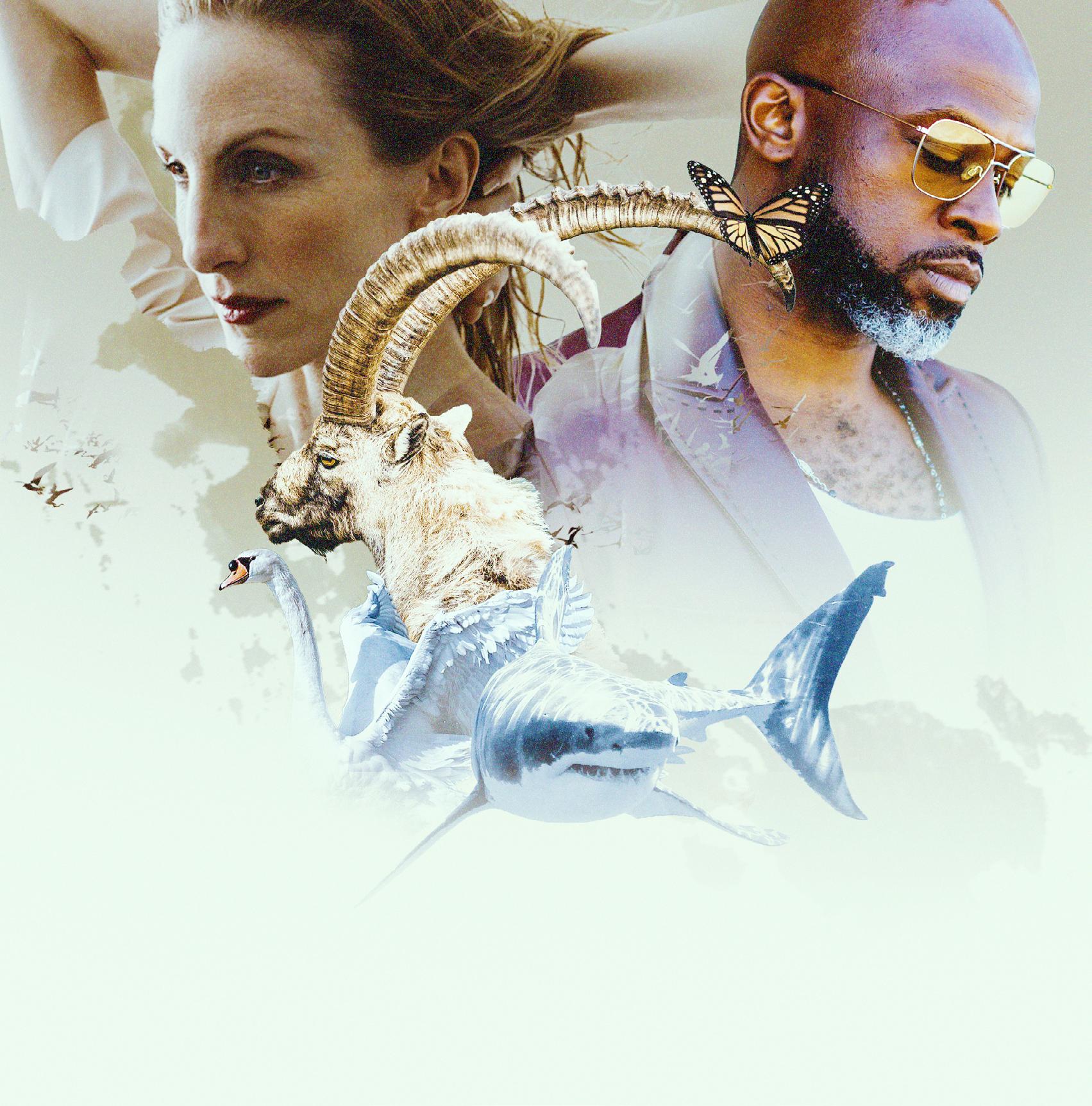
PRELUDE · 6:30 PM THE JAI
Interview with the artists hosted by Allison Boles

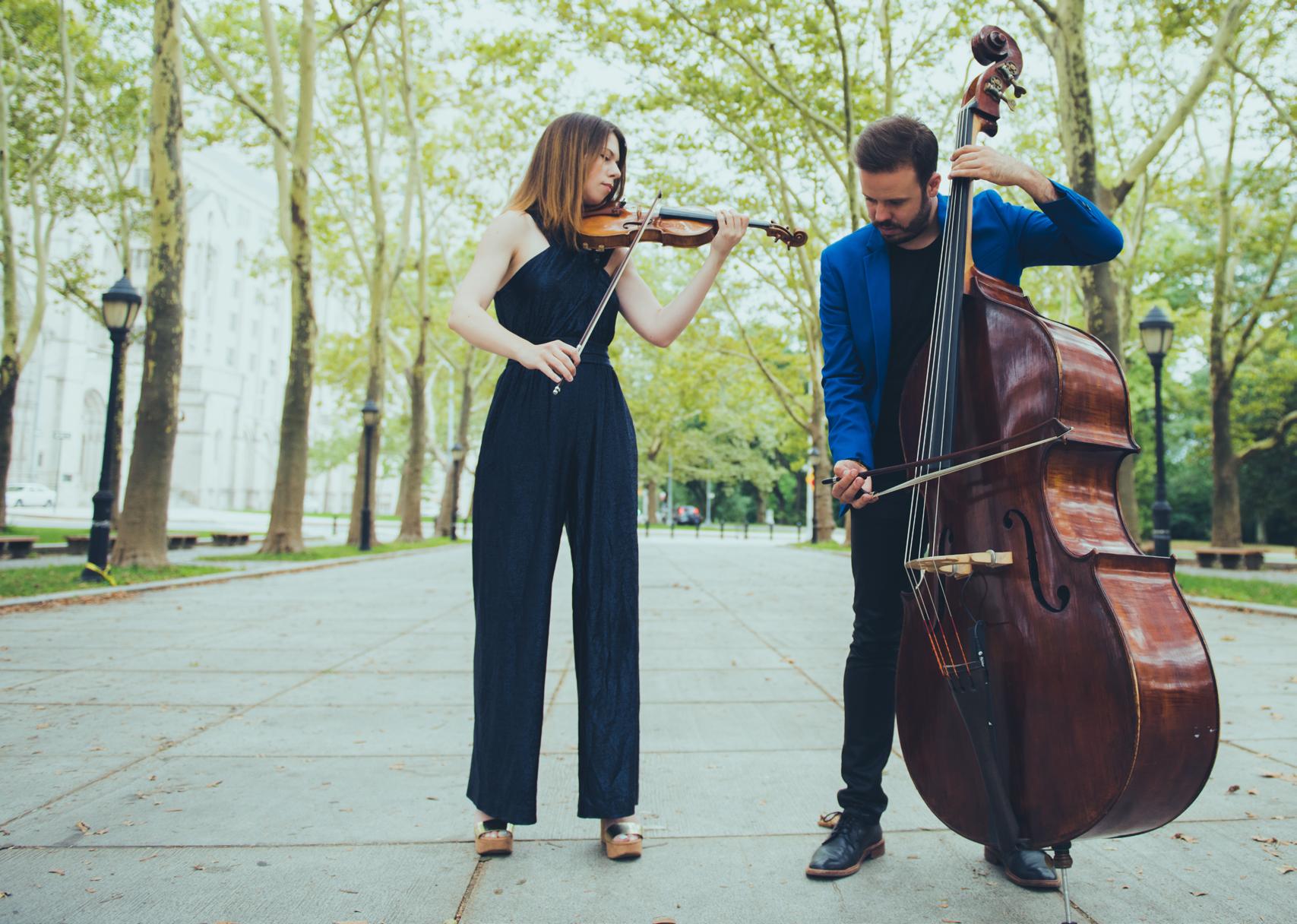
SATURDAY, AUGUST 19, 2023 · 7:30 PM
THE BAKER-BAUM CONCERT HALL

La Jolla Music Society’s Season is supported by The City of San Diego Commission for Arts and Culture, The Lodge at Torrey Pines, ProtoStar Foundation, Vail Memorial Fund, Banc of California, JP Morgan Chase, ResMed Foundation, Bright Events Rentals, Café Coyote, Rancho Coyote Vineyards, Ace Parking, Brenda Baker and Steve Baum, Raffaella and John Belanich, Gordon Brodfuehrer, Ric and Eleanor Charlton, Mary Ellen Clark, Julie and Bert Cornelison, Elaine Galinson and Herbert Solomon, Teresa and Harry Hixson, Joan and Irwin Jacobs, Angel and Fred Kleinbub, Vivian Lim and Joseph Wong, Jeanette Stevens, Debra Turner, Sue and Peter Wagener, and Bebe and Marvin Zigman.
A musical explosion of joy with four creative powerhouses meeting at the intersection of blues, classical music, jazz, and songwriting. The Late Show with Stephen Colbert band leader Louis Cato joins GRAMMY nominees Tessa Lark and clarinetist Mark Dover, along with Broadway-bound composer/bassist Michael Thurber, for never-before heard originals, arrangements, and improvisations that bring seemingly disparate stylistic influences into an organic, unique sonic experience.
Program to be announced from stage.
PRELUDE · 6 PM
THE BAKER-BAUM CONCERT HALL
trioJEM performs Ravel’s Piano Trio in A Minor
Support for this program is provided by: Gordon Brodfuehrer
Jendy Dennis
Join us for a celebration in the Wu Tsai QRT.yrd immediately following the performance. Must be 21 and older with valid I.D.
WEDNESDAY, AUGUST 23, 2023 · 7 PM
THE BAKER-BAUM CONCERT HALL
CHAUSSON Poème, Opus 25 (1855–1899)
Augustin Hadelich, violin; Elliot Wuu*, piano; Quartet Integra*
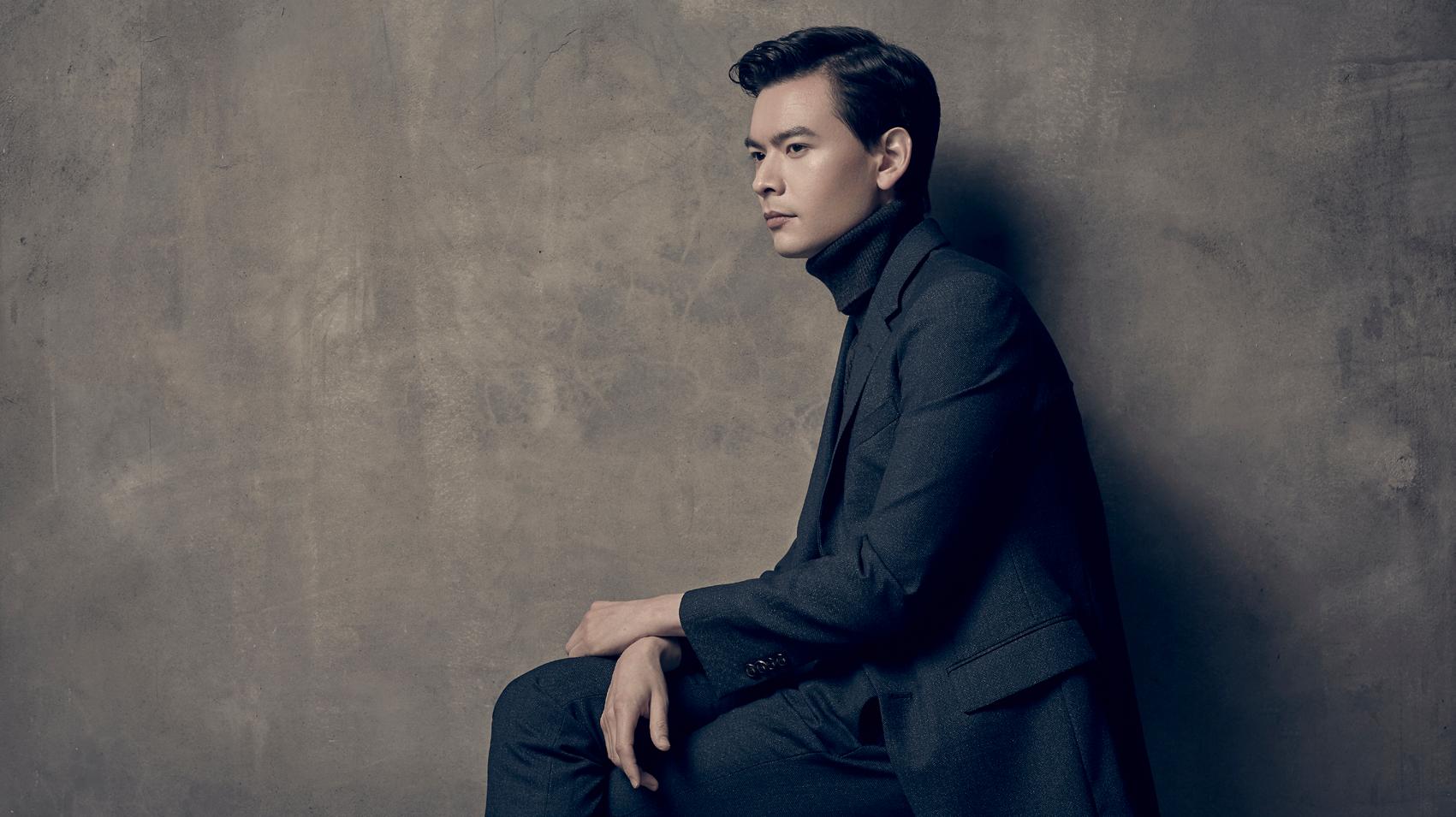
Kyoka Misawa, Rintaro Kikuno, violins; Itsuki Yamamoto, viola; Anri Tsukiji, cello
BRAHMS Trio in A Minor for Clarinet, Cello, and Piano, Opus 114 (1833–1897) Allegro
Adagio
Midweek Masterworks
La Jolla Music Society’s Season is supported by The City of San Diego Commission for Arts and Culture, The Lodge at Torrey Pines, ProtoStar Foundation, Vail Memorial Fund, Banc of California, JP Morgan Chase, ResMed Foundation, Bright Events Rentals, Café Coyote, Rancho Coyote Vineyards, Ace Parking, Brenda Baker and Steve Baum, Raffaella and John Belanich, Gordon Brodfuehrer, Ric and Eleanor Charlton, Mary Ellen Clark, Julie and Bert Cornelison, Elaine Galinson and Herbert Solomon, Teresa and Harry Hixson, Joan and Irwin Jacobs, Angel and Fred Kleinbub, Vivian Lim and Joseph Wong, Jeanette Stevens, Debra Turner, Sue and Peter Wagener, and Bebe and Marvin Zigman.
Andantino grazioso
Allegro
Anthony McGill, clarinet; Clive Greensmith, cello; Conrad Tao, piano
TCHAIKOVSKY Sextet for Strings in D Minor, Opus 70 “Souvenir de Florence” (1840–1893)
Allegro con spirito
Adagio cantabile e con moto
Allegretto moderato
Allegro vivace
Stefan Jackiw, Andrew Wan, violins; Jonathan Vinocour, Matthew Lipman, violas; Julie Albers, Sterling Elliott, cellos
*2023 SummerFest Fellowship Artist
Performed without intermission.
Program Notes by Eric Bromberger
Born January 20, 1855, Paris
Died June 10, 1899, Limay, France
Composed: 1896
Approximate Duration: 16 minutes
Ernest Chausson grew up in an educated and refined family who believed that he should make a career in law. But the lure of music proved too strong, and at age 24—after completing law school—he entered the Paris Conservatory. Perhaps because of this late start, it took Chausson some years to refine his art and develop a personal style, and it was not until his late thirties that he began to produce a series of carefully crafted works, particularly for voice. The promise demonstrated in this music was cut short, however, when Chausson was killed in a bicycle accident at age 44.
A cultivated man, Chausson was particularly attracted to the work of Russian novelist Ivan Turgenev. When he set out to write a piece for the great Belgian violinist Eugene Ysaÿe, Chausson turned to the work of Turgenev for inspiration, choosing a short story called (in its French translation) Le chant de l’amour triomphant. Chausson composed this music in the spring of 1896, though he finally chose a much simpler title, Poème
The Poème is neither a concerto nor a tone poem that sets out to tell Turgenev’s tale in music. Rather, it is a mood-piece—expressive, dark, almost voluptuous in its lush harmonies and melodies—meant to reflect the atmosphere of Turgenev’s tale. The musical form of the Poème is difficult to define: it is episodic, somewhat in the manner of a slow rondo. After the orchestra’s misty introduction, marked Lento e misterioso, the unaccompanied violin lays out the long and graceful main theme, which is repeated by the orchestra. The violin’s music grows more intense and florid, rushing ahead into the contrasting section, marked Animato, where it soars high above the murmuring accompaniment. Chausson alternates these sections before the Poème moves to a quiet close on a return of the opening material. This ending drew particular praise from Debussy who, some years after Chausson’s death, wrote in a review: “Nothing touches more with dreamy sweetness than the end of this Poème, where the music, leaving aside all description and anecdote, becomes the very feeling which inspired its emotion.”
Though the Poème is not consciously a display piece, it is nevertheless quite difficult for the violinist, who must sustain a singing line (often high in the instrument’s register)
and project the complex runs, trills, and arabesques that give this music its distinctive character. Ysaÿe was very fond of the Poème and gave it several performances (both private and public) before the Paris première on April 4, 1897. Chausson had not had much success with critics or audiences, and the response to the Poème caught him by surprise: one his friends told of seeing a look of astonishment on Chausson’s face as he stood backstage listening to the waves of applause that greeted the première: “I can’t get over it,” was all the amazed composer could say. A century later, the Poème remains Chausson’s most famous work, a favorite of audiences and violinists alike.
A
EDITION: Chausson prepared three different versions of the Poème: a version for violin and piano intended for recitals, a version for violin and orchestra intended for concert halls, and then the version performed on this concert. In this one, the violinist is accompanied, unexpectedly, by a piano quintet. This was an ensemble that special appeal for Chausson: it is the instrumentation of his Concert for Violin, Piano, and String Quartet, Opus 21 and his Chanson perpetuelle, Opus 37, which was performed on the second concert of this year’s SummerFest.
Born May 7, 1833, Hamburg
Died April 3, 1897, Vienna
Composed: 1891
Approximate Duration: 27 minutes
In March 1891 Brahms, then almost 58 years old and recently retired as a composer, journeyed to Meiningen in southern Germany. His purpose was pleasure: he wanted to hear the famous ducal orchestra there under its new conductor Fritz Steinbach. Steinbach is remembered even today as one of the most famous of Brahms’ interpreters, but on this trip the composer was much more impressed by another musician. The principal clarinetist of the Meiningen Orchestra was a young man named Richard Mühlfeld, and Brahms was captivated by the rich and mellow sound Mühlfeld could draw from his clarinet and by his musical sensitivity. The aging composer would sit for hours listening to Mühlfeld practice, and the result was inevitable: Brahms came out of his short-lived “retirement” and began to write for the clarinet. That summer, at his favorite retreat, Bad Ischl in the mountains east of Salzburg, he composed two works for Mühlfeld: a trio for clarinet, cello, and piano and a quintet for clarinet and string quartet (two sonatas for the instrument would follow
three summers later). Brahms journeyed back to Meiningen the following November for rehearsals with Mühlfeld and Joseph Joachim’s quartet, and both works received their premières in Berlin on December 12, 1891.
From that instant the Clarinet Quintet has been acclaimed one of Brahms’ greatest works, but the Clarinet Trio has always languished in the shade of the Quintet’s autumnal glow—it remains a connoisseur’s choice rather than a popular favorite. The distinct sonority of the Trio rises from its unusual combination of instruments (one, however, that Beethoven had used), and Brahms makes full use of the rich sound of the cello as well as the mellow sound of Mühlfeld’s clarinet. So smoothly are those sounds intertwined, in fact, that Brahms’ friend Eusebius Mandyczewski wrote to tell the composer that “It is as though the instruments were in love with each other.”
The splendid first movement, marked simply Allegro, begins with the almost stark sound of the solo cello laying out the movement’s noble opening idea, and this theme deserves particular attention. One of the projects Brahms had planned and then abandoned was a Fifth Symphony, and a number of scholars (Sir Donald Francis Tovey among them) believe that the cello theme that opens the Clarinet Trio was originally conceived as the opening theme of the Fifth Symphony. Listeners tantalized by the thought of what such a symphony might have been like may have some sense of that by imagining this noble opening subject played by an entire cello section. This theme grows more animated as it rides over the piano’s spirited triplets, and the chaste second subject restores calm when it too arrives in the cello. The movement is in a generalized sonata form, though the recapitulation is shortened, and it comes to a particularly effective close: Brahms slows the tempo slightly, and clarinet and cello weave delicate strands of sixteenth-notes that answer and swirl around each other and—suddenly and softly—land on the calm final chord.
The Adagio opens with a subdued melody for clarinet that Brahms marks dolce; at a length of only 54 measures, this movement is remarkable for Brahms’ ability to compress his musical experience into so short a span. The Andantino grazioso, in 3/4 meter, hovers on the edge of becoming a waltz; the clarinet’s melody flows and dances gracefully without ever settling firmly into a waltz rhythm. The finale, a sonata-rondo marked Allegro, offers some of the rhythmic subtlety of Brahms’ late music, and listeners may have trouble deciding whether this movement is in duple or triple meter. Such uncertainty was clearly Brahms’ intention: his opening metric indication 2/4(6/8) changes frequently, and there are occasional passages in 9/8. The
music surges with vitality, but Brahms keeps it anchored firmly in the dark A-minor tonality of the opening movement, and this little-known work closes in the same somber sobriety with which it began.
Born May 7, 1840, Votkinsk, Russia
Died November 6, 1893, St. Petersburg
Composed: 1890
Approximate Duration: 30 minutes
Like so many other composers from cold European climates, Tchaikovsky had a special fondness for the countries of southern Europe. Rimsky-Korsakov’s Capriccio Espagnol is an affectionate portrait of Spain, but Tchaikovsky—like Brahms—was particularly attracted to Italy. An exciting visit during the carnival season of 1880 to Rome (where his brother had an apartment) inspired Tchaikovsky’s brilliant Capriccio Italien. And it was to Florence that Tchaikovsky went in 1890 to complete his opera The Queen of Spades
Upon his return to Russia, Tchaikovsky wrote a sextet for strings, which he significantly subtitled “Souvenir de Florence.” His motive appears clear—he wanted to remember in music the sunny climate and friendly atmosphere of that Italian city—and he succeeded. The sextet has none of the gloomy, tortured music that Tchaikovsky wrote in his blackest moods. Instead, suffused with the golden glow of warm nostalgia, it offers some of his most good-natured music.
The choice of string sextet for this music is unusual, particularly for a composer who wrote so little chamber music. The additional voices created all kinds of compositional problems for Tchaikovsky, and he struggled with them. Though the work was completed in 1890 and performed privately then, he revised it thoroughly before its first public performance on December 6, 1892. The proud composer wrote to his brother: “What a sextet—and what a fugue at the end—it’s a pleasure. Awful, how pleased I am with myself!”
The lengthy opening movement, Allegro con spirito, is in extended sonata form, with the first violin announcing both main themes. The surging opening idea gives way to a songful second subject over steady accompaniment, and a long development leads to a dramatic close. The slow movement, Adagio cantabile e con moto, opens with a series of chords, rich layers of sound, before the first violin’s melody rises above pizzicato accompaniment. The movement’s brief midsection rustles ahead with tremolo-like passages
full of dynamic surges and quiet pizzicatos before the opening material returns.
The scherzo, Allegretto moderato, is in ternary form, with the middle—surprisingly—faster than the outer sections. The opening sequence sounds as if it is based on Russian folksong material, while the exhilarating middle section—full of ricochet bowing—flies. The coda leads to a cadence on a giant pizzicato chord. The finale, Allegro vivace, is the shortest of the four movements and again opens with another passage that sounds as if it may have folk origins. The second theme is one of those unmistakable Tchaikovsky tunes, soaring and surging. At the climax of the movement comes the fugato treatment of the first theme of which Tchaikovsky was so proud, and a blazing coda brings the sextet to a conclusion full of sunlight.
PRELUDE · 6:30 PM
THE BAKER-BAUM CONCERT HALL
SCHULHOFF Five Pieces for String Quartet (1894–1942)
Alla Valse Viennese
Alla Serenata
Alla Czeca
Alla Tango milonga
All Tarantella
Andrew Wan, Augustin Hadelich, violins; Jonathan Vinocour, viola; Clive Greensmith, cello
La Jolla Music Society’s Season is supported by The City of San Diego Commission for Arts and Culture, The Lodge at Torrey Pines, ProtoStar Foundation, Vail Memorial Fund, Banc of California, JP Morgan Chase, ResMed Foundation, Bright Events Rentals, Café Coyote, Rancho Coyote Vineyards, Ace Parking, Brenda Baker and Steve Baum, Raffaella and John Belanich, Gordon Brodfuehrer, Ric and Eleanor Charlton, Mary Ellen Clark, Julie and Bert Cornelison, Elaine Galinson and Herbert Solomon, Teresa and Harry Hixson, Joan and Irwin Jacobs, Angel and Fred Kleinbub, Vivian Lim and Joseph Wong, Jeanette Stevens, Debra Turner, Sue and Peter Wagener, and Bebe and Marvin Zigman.
PERKINSON Blue/s Forms (1932–2004)
Plain Blue/s
Just Blue/s
Jettin’ Blue/s
Augustin Hadelich, violin

F. MENDELSSOHN String Quartet in E-flat Major (1805–1848)
Adagio ma non troppo
Allegretto
Romanze
Allegro molto vivace
Augustin Hadelich, Andrew Wan, violins; Matthew Lipman, viola; Julie Albers, cello
MESSIAEN Abîme des oiseaux from Quatuor pour la Fin du Temps (1908–1992)
Anthony McGill, clarinet
JESSIE Peace for Clarinet and Piano
MONTGOMERY Anthony McGill, clarinet; Conrad Tao, piano (b. 1981)
SHOSTAKOVICH Piano Trio No. 2 in E Minor, Opus 67 (1906–1975) Andante; Moderato; Poco più mosso
Allegro con brio
Largo
Allegretto; Adagio
Stefan Jackiw, violin; Sterling Elliott, cello; Conrad Tao, piano
Born June 8, 1894, Prague
Died August 18, 1942, Wülzburg, Bavaria
Composed: 1923
Approximate Duration: 15 minutes
The Five Pieces come from a particularly fertile time in Erwin Schulhoff’s career. Following service in the Austrian Army during World War I, he had made his home in Leipzig for four years during a period of incredible ferment in the world of classical music. In the fall of 1923, Schulhoff returned to his native Prague, and that move seemed to energize his creativity, particularly his interest in writing for string quartet. That December he wrote the Five Pieces for String Quartet, and over the following two years he wrote his two string quartets (as well as a string sextet). The Five Pieces were first performed at an International Society for Contemporary Music concert in Salzburg on August 8, 1924. Schulhoff dedicated the work to Darius Milhaud.
The Five Pieces is a suite of (mostly) dance movements, and each of these dances has a particular national flavor; the movements are quite short, and the Five Pieces may be thought of as a collection of dance miniatures. The title of the opening movement, Alla Valse Viennese, seems to suggest an evocation of the Viennese waltz, but this particular example waltzes rather violently; despite the three-beat rhythmic pattern of the waltz, Schulhoff sets the movement in 4/4. Alla Serenata, the one non-dance movement in the work, features a powerful rhythmic pulse rather than the lyricism one expects from a serenade; Schulhoff enlivens its closing measures with passages that call for both col legno and ponticello bowing. Alla Czeca is a hard-driving dance built on asymmetric meters, and all commentators hear the influence of Bartók and his research into Eastern European folk music on this movement. Longest of the movements, Alla Tango milonga is also the most exotic, full of pulsing, driving energy and sensual tunes. Alla Tarantella dances fiercely along its sharply-accented 6/8 meter. This movement has so much energy that it almost becomes a wild perpetual-motion that races breathlessly to the abrupt conclusion.
Born June 14, 1932, Manhattan
Died March 9, 2004, Chicago
Composed: 1972
Approximate Duration: 9 minutes
Born into a musical family, Coleridge-Taylor Perkinson was named after the Afro-British composer Samuel Coleridge-Taylor (who in turn had been named after the English poet Samuel Taylor Coleridge). The young man showed unusual musical talent, and at age 13 he entered New York’s High School of Music and Art. After graduation, he attended New York University and eventually received his bachelors and masters degrees from the Manhattan School of Music. From there he went on to study conducting at the Berkshire Music Center and at the Salzburg Mozarteum—among his conducting teachers were Dean Dixon and Jonel Perlea. Perkinson had a long and successful career that ranged over many different kinds of music: he was a jazz pianist who performed for several years as a member of the Max Roach Jazz Quartet, he was an arranger for many of the leading vocalists of his era (including Henry Belafonte, Lou Rawls, and Marvin Gaye), he composed scores for dance troupes, and he composed music for films and for television.
But above all else, Perkinson wished to succeed as a composer of classical music. He was one of the cofounders of the Symphony of the New World, the first fully integrated orchestra in the United States, and he served as associate conductor of that orchestra from 1965–70. Among his many compositions are works for orchestra (including two Sinfoniettas for Strings), choral settings, and works for small instrumental ensembles or solo performers.
Some of Perkinson’s best music fuses his passion for classical music with his advocacy of African-American causes. His Lamentations for solo cello, which he described as “the reflection and statement of a people’s crying out,” takes the general form of Bach’s suites for solo cello, while his Blue/s Forms (1972) revisits the blues through the prism of Bach’s music for unaccompanied violin. Like Bach’s solo sonatas, Blue/s Forms features complex double-stopping, an expressive slow movement, and a rapid dance-like finale, all within the context of some very difficult writing for unaccompanied violin. Perkinson dedicated Blue/s Forms to violinist Sanford Allen, who in 1962 had become the first permanent African-American member of the New York Philharmonic; Allen gave the première at Carnegie Hall.
Blue/s Forms is in three brief movements that span only about seven minutes. The opening Plain Blue/s is in 7/4, but with a twist. In a note in the score, Perkinson explains: “The pulse of this movement is (basically) a half-note. The 7/4 indication is actually a measure of four pulses (8/4) with the fourth pulse shortened.” The writing for violin here is very difficult: much of this movement is double-stopped, and the music dances vigorously along its slightly uneven meter to a sudden stop. The quiet and expressive Just Blue/s is muted throughout, while the vigorous finale, Jettin’ Blue/s, takes the general form of a perpetual motion, one full of rhythmic bounce, string-crossings, and nonstop energy.
Born November 14, 1805, Hamburg
Died May 14, 1847, Berlin
Composed: 1834
Approximate Duration: 22 minutes
There is general agreement that the two most prodigiously talented young composers in history were Mozart and Mendelssohn, and there were many parallels between the two. Both were born into families perfectly suited to nurture their talents. Both showed phenomenal talent as small boys. Both began composing as boys, and from the earliest age both had their music performed by professional musicians. Both became virtuoso keyboard performers. In addition, both played the violin and viola and took part in chamber music performances. Both composed voluminously in every genre. Both drove themselves very hard. Both died in their thirties.
But there is uncanny further parallel between the two: both Mozart and Mendelssohn had an older sister whose musical talents rivaled their own. Mozart’s sister Maria Anna, five years his senior, performed as a child with her brother in all the capitals of Europe, where they were put on display by their ambitious father. She also composed (none of her music has survived), but a serious career in music was out of the question for a woman at the end of the eighteenth century: she married in 1784 and grew estranged from her brother—they did not see each other over the final years of his life.
Fanny Mendelssohn, four years older than Felix, had a much closer relation with her brother. Like Felix, she began composing at an early age, and some of her songs were published under her brother’s name. She too was discouraged from making a career in music, and at age 24 she married the painter Wilhelm Hensel and had a son. But music remained a passion for her, and she composed an
orchestral overture, chamber music, works for piano, and a great deal of vocal music (by the end of her life several of these works had been published). Fanny remained extremely close to her brother throughout her life, and her sudden death from a stroke at age 41 so devastated Felix that he collapsed on hearing the news and never really recovered—his own death six months later at age 38 was triggered at least in part by that shock.
Fanny began her String Quartet in E-flat Major during the summer of 1834 and completed it on October 23 of that year, just a few weeks before her 29th birthday. The work was probably performed during the Mendelssohn family’s Sunday musicales in Berlin but was not published. When the manuscript was finally discovered many years later, small parts of it were missing, and editors were able to reconstruct those sections by using music from other parts of the score. The Quartet in E-flat Major was not published until 1986, over a century and a half after its composition.
The quartet is in the expected four movements, though its structure is unusual: it begins with a lyric, understated movement at a slow tempo and concludes with a very fast movement, so the quartet seems to gather force as it proceeds. The Adagio ma non troppo offers smooth, flowing lines at the beginning and a more animated middle section before coming to a quiet close on the return of the opening theme. The Allegretto dances easily along its 6/8 meter—there are some nice touches along the way here, including the rapid alternation of pizzicato and bowed notes and a fugal episode in the development. Gradually the movement’s energy subsides, and it winks out on two quiet pizzicato strokes. The third movement is titled Romanze, an indication of a gentle atmosphere rather than a specific form. First violin leads the way, both at the opening (marked molto cantabile) and in the active central episode. The last movement is quite fast (the marking is Allegro molto vivace), and it has an unusual meter, 12/16, though for practical purposes the music is stressed in 6/8. There is some brilliant writing for all four instruments here, and the first violin soars high above the others voices in the breathless rush to the close.
Born December 10, 1908, Avignon, France
April 27, 1992, Clichy
Composed: 1940
Approximate Duration: 8 minutes
Messiaen was a soldier in the French army when he was captured by the Germans in 1940 and sent to a POW camp in Eastern Europe. There he discovered a violinist, a clarinetist, and a cellist among his fellow prisoners. Messiaen himself played the piano, and for the four of them he wrote a work entitled Quartet for the End of Time (a sensitive German prison commandant supplied manuscript paper and an upright piano). The title comes from the account of the angel in the Apocalypse “who lifts his hand toward the heaven saying ‘There shall be no more time.’” The quartet was first performed at Stalag 8A on January 15, 1941, before 5000 freezing fellow POWs, who doubtless understood what it meant to live in a world without time. Of that occasion Messaien said: “Never have I been listened to with such attention and understanding.”
It would be incorrect, however, to assume that the Quartet for the End of Time was written in response to the seemingly endless existence of prisoners of war. Rather, Messiaen—a devout Catholic—took his inspiration from the Revelation of St. John the Divine in the Apocrypha, specifically from the tenth chapter: “I saw a mighty angel, descending from heaven, clothed in a cloud, having a rainbow on his head. His face was as the sun, his feet as columns of fire. He placed his right foot on the sea and his left foot on the earth, and, supporting himself on the sea and on the earth, he raised his hand towards Heaven and swore by Him who lives forever and ever, saying: There will be no more Time; but on the day of the trumpet of the seventh angel, the mystery of God will be completed.”
The third movement (from a total of eight) is called Abîme des oiseaux (“Abyss of the Birds”), and of it Messaien has said: “The abyss is Time, with its sadnesses and tedium. The birds are the opposite of Time; they are the desire for light, for stars, for rainbows and the jubilant outpouring of song!” Scored for clarinet solo, the movement consists of two kinds of music: the almost static music associated with time and an energetic representation of birdsong. Messaien was particularly interested in birdsong throughout his career, notating and collecting actual birdsongs and using them in his music. In this particular movement the representation of birdsong is not exact—rather it is symbolic of spiritual freedom and exaltation.
Born December 8, 1981, New York City
Composed: 2020
Approximate Duration: 4 minutes
The daughter of theater and musical artists, Jessie Montgomery learned to play the violin as a child and earned her bachelors degree in violin performance from Juilliard and her masters in composition from New York University. She is one of the featured composers of the New York Philharmonic’s Project 19, in which nineteen women composers have been commissioned to write a work in celebration of the Nineteenth Amendment, which gave American women the right to work. Montgomery is currently a Graduate Fellow in composition at Princeton as well as a Professor of Violin and Composition at The New School in New York City. In 2021 she began her tenure as composerin-residence with the Chicago Symphony Orchestra.
Montgomery’s Peace comes from a very particular moment in recent history, the spring of 2020, when it dawned on our collective consciousness that the COVID pandemic was going to isolate and endanger every one of us, and for a very long time. The composer has provided a brief introduction to Peace that makes clear her motivation in writing this music:
Written just a month after the Great Sadness of the first quarantine orders due to COVID-19, facing the shock felt by the whole globe as well as personal crisis, I find myself struggling to define what actually brings me joy. And I’m at a stage of making peace with sadness as it comes and goes like any other emotion. I’m learning to observe sadness for the first time not as a negative emotion, but as a necessary dynamic to the human experience. (Jessie Montgomery, May 12, 2020)
Peace was commissioned by British-American arts administrator Victoria Robey for violinist Elena Urioste and her husband, the pianist Tom Poster, and they premièred it as part of their #UriPosteJukeBox broadcasts. Other musicians were quickly attracted to this music, and clarinetist Anthony McGill asked Montgomery if she would prepare a version for clarinet; she has also arranged Peace for viola. Peace is a brief mood-piece (Montgomery’s performance instruction is Reflective), slow in tempo, subdued in mood but never pitching over into darkness. It is, as the composer suggests, a meditation on sadness and how it is an inevitable part of human life.
Born September 25, 1906, St. Petersburg
Died August 9, 1975, Moscow
Composed: 1944
Approximate Duration: 25 minutes
The Nazi invasion of Russia in 1941 was the greatest catastrophe ever to befall any nation. In four years, twenty million Russians died, and the country sustained damage and suffering that no amount of time could fully repair. Shostakovich, then in his late thirties, reacted to the war with two quite different kinds of music. There was the public Shostakovich, who wrote the “Leningrad” Symphony and marches and songs. Patriotic and optimistic, these made the right noises for the time—and for the Soviet government. But the private Shostakovich recorded his reactions to these years in other music. The Eighth Symphony of 1943 and the Piano Trio in E Minor of 1944 reveal a much less optimistic Shostakovich, one anguished by the war. This was not the kind of music a Soviet government committed to the artistic doctrine of Socialist Realism wanted to hear, and it is no surprise that performances of the Trio were banned for a time or that the Eighth Symphony was singled out for particular censure at the infamous meeting of the Union of Soviet Composers in 1948.
Two particular events in the winter of 1944 appear to have inspired this trio. The first came in February, when Shostakovich’s closest friend, the scholar and critic Ivan Sollertinsky, died (the Trio is dedicated to his memory). The second was the discovery—as the Nazi armies retreated— of atrocities committed against Russian Jews. Shostakovich completed the Trio in the spring and played the piano at its first performance in Leningrad on November 14, 1944.
The very beginning of the Andante—an eerie melody for muted cello, played entirely in harmonics—sets the spare and somber mood of this music. The other voices enter in canon, with the main theme of this sonata-form movement a variation of the opening cello melody. The Allegro con brio opens with fanfare-like figures for the strings. This is one of those hard-driving, almost mechanistic Shostakovich scherzos, and its dancing middle section in G major brings scant relief.
The stunning Largo is a passacaglia. The piano announces eight solemn chords that form the bass-line of the passacaglia, and there follow five repetitions as the strings sing poised, grieving lines above the piano chords. The concluding Allegretto follows without pause. This movement is said to have been inspired by accounts that the Nazis had forced Jews to dance on their graves before
execution. Shostakovich does not try to depict this in his music, but the sinister, grotesque dance for pizzicato violin that opens this movements suggests a vision of horror all its own. Shostakovich makes the connection clear with the second theme, of unmistakably Jewish origin, for piano above pizzicato chords. The close brings back themes from earlier movements—the cello melody from the very beginning and the entire passacaglia theme—and finally the little dance tune breaks down and the music vanishes on quiet pizzicato strokes.
No wonder the Soviet government banned performances of this music! The Trio in E Minor is unsettling music, more apt to leave audiences stunned than cheering, and it is a measure of Shostakovich the artist that he could transform his own anguish into music of such power and beauty.
PRELUDE · 6:30 PM
THE BAKER-BAUM CONCERT HALL
Quartet Integra performs Shostakovich’s String Quartet No. 6 in G Major, Opus 101
Support for this program is provided by: Gordon Brodfuehrer
Brenda and Michael Goldbaum
THE BAKER-BAUM CONCERT HALL
La Jolla Music Society’s Season is supported by The City of San Diego Commission for Arts and Culture, The Lodge at Torrey Pines, ProtoStar Foundation, Vail Memorial Fund, Banc of California, JP Morgan Chase, ResMed Foundation, Bright Events Rentals, Café Coyote, Rancho Coyote Vineyards, Ace Parking, Brenda Baker and Steve Baum, Raffaella and John Belanich, Gordon Brodfuehrer, Ric and Eleanor Charlton, Mary Ellen Clark, Julie and Bert Cornelison, Elaine Galinson and Herbert Solomon, Teresa and Harry Hixson, Joan and Irwin Jacobs, Angel and Fred Kleinbub, Vivian Lim and Joseph Wong, Jeanette Stevens, Debra Turner, Sue and Peter Wagener, and Bebe and Marvin Zigman.
DOHNÁNYI
Serenade in C Major for Violin, Viola, and Cello, Opus 10 (1877–1960)
Marcia
Romanza
Scherzo
Tema con variazioni
Rondo: Finale
Stefan Jackiw, violin; Matthew Lipman; viola; Sterling Elliott, cello
Concerto for Clarinet and Viola in E Minor, Opus 88 (1838–1920)
BRUCH
Andante con moto
Allegro moderato
Allegro molto
Anthony McGill, clarinet; Jonathan Vinocour, viola;

SummerFest String Orchestra
INTERMISSION
MERCURY
Bohemian Rhapsody for Five Cellos and Piano (arr. Barnatan) (1946–1991)
Clive Greensmith, Julie Albers, Sterling Elliott, Anri Tsukiji*, Julia Lee*, cellos; Inon Barnatan, piano
Serenade for Strings in C Major, Opus 48 (1840–1893)
TCHAIKOVSKY
Pezzo in forma di sonatina: Andante non troppo; Allegro moderato
Valse: Moderato. Tempo di valse
Elegie: Larghetto elegiaco
Finale (Tema russo): Andante; Allegro con spirito
SummerFest String Orchestra
SummerFest String Orchestra
Andrew Wan, concertmaster; Stefan Jackiw, Jeff Thayer, Kathryn Hatmaker, Kyoka Misawa*, Rintaro Kikuno*, Max Tan*, violins; Matthew Lipman, Jonathan Vinocour, Chi-Yuan Chen, Itsuki Yamamoto*, violas; Julie Albers, Sterling Elliott, Clive Greensmith, Julia Lee*, Anri Tsukiji*, cellos; Samuel Hager, bass
*2023 SummerFest Fellowship Artist
Program notes by Eric Bromberger
Born July 27, 1877, Pozsony, Hungary
Died February 9, 1960, New York City
Composed: 1902
Approximate Duration: 22 minutes
Music for string trio—violin, viola, and cello—is rare. Taking one violin away from the string quartet presents the composer with a number of problems, especially with harmony, and it is no surprise that composers have shied away from the complex challenges of such a combination of instruments. Late in his brief life Mozart wrote one great string trio, Beethoven wrote five as a young man but never came back to the form, Schubert experimented with two brief trios. In the twentieth century, Hindemith wrote two and Schoenberg one, but the form remains rare.
Dohnányi’s Serenade for Violin, Viola, and Cello dates from 1902, when the 25-year-old composer was touring the world as a virtuoso pianist. Dohnányi did not play a string instrument, which makes the beautifully idiomatic writing for strings in his Serenade all the more remarkable. He balances the three instruments carefully, emphasizes their lyric possibilities, and achieves harmonic interest in a variety of ways, often using the pizzicato cello as a foundation for the two higher voices.
Dohnányi called this five-movement work a Serenade That term originally was used solely for vocal music, but by Mozart’s time it had come to refer to lighter instrumental music intended for enjoyment or diversion, and it is in this sense that Dohnányi employs the term. Such a title should not keep us from taking this music seriously. Good-spirited and carefully crafted, the Serenade has become one of Dohnányi’s most popular works.
The brief opening movement is a stirring march, propelled along its way by the dotted figures that give the main theme its energy. The trio section belongs to the cello before a very brief reprise of the opening march. A lovely viola cantilena opens the Romanza, and here the soaring violin dominates the middle section; the return of the opening material—with violin and viola singing above pizzicato cello accompaniment—is especially effective. The Scherzo is a fugue with the three voices making swirling entrances and the music pressing forward constantly. A lyric trio section gives way to the return of the fugue, which now uses the trio theme as a countermelody.
Longest of the five movements, the Andante con moto is a set of variations. The wistful main theme is heard
immediately, followed by five brief variations, all within the subdued character of the theme. The buoyant Finale is a rondo, based on its energetic opening theme. Near the close, themes from the opening Marcia are briefly reprised before the single concluding chord.
Born January 6, 1838, Cologne
Died October 2, 1920, Berlin
Composed: 1911
Approximate Duration: 25 minutes
Max Bruch’s Concerto for Clarinet and Viola grew out of his affection for two performers. The first was his son Max Felix (1884–1943), who had grown up to become an extremely talented clarinetist. The other was the great Austrian violinist Willy Hess (1859–1939). A student of Joseph Joachim, Hess had been concertmaster of many European orchestras before serving as concertmaster of the Boston Symphony Orchestra from 1904 until 1910. At that point, Max Bruch—then teaching at the Royal Academy of Music in Berlin—arranged to have Hess return to Germany to serve as the Academy’s principal violin instructor. Hess also played the viola, and in 1911 Bruch composed the Concerto for Clarinet and Viola specifically for his friend Hess and his own son Max Felix. Those two gave the première in Wilhelmshaven on March 5, 1912.
In 1911, the year this concerto was composed, the world of music was in almost violent ferment, evolving rapidly in many directions. In that year Stravinsky composed Pétrushka, Schoenberg was working on Pierrot Lunaire, Bartók composed his opera Bluebeard’s Castle, Sibelius wrote his Fourth Symphony, Ives was working on Three Places in New England, and Mahler—who died that year—left his Tenth Symphony unfinished. There is not the faintest hint of any of these new directions in the Concerto for Clarinet and Viola. Bruch, who was 73 at the time of its composition, remained true to the great nineteenth century romantic idiom he had grown up with. For some listeners, this may not be a bad thing, but as we listen to this music composed in 1911, inevitably we are aware that it represents a nostalgic look back to the idiom of the previous century.
Bruch was very attracted to the mid-range sound of the clarinet and viola. Two years earlier, he had composed his Eight Pieces for Clarinet and Viola, and now he wrote a concerto for those two instruments, instruments that do not have the thunderous power of the piano or the piercing sonority of the violin. To accommodate their mid-range sonority, Bruch carefully restrains the orchestra throughout this concerto.
There are moments when it can speak with some strength, but most often the orchestra offers an accompaniment carefully gauged to let the two soloists be heard.
The three-movement concerto is brief (about eighteen minutes), and—curiously—its movements grow faster as it proceeds. Bruch begins not with a powerful sonataform movement but with a much gentler movement, an Andante con moto somewhat in the manner of a rhapsody. Rather than beginning with an orchestral exposition, Bruch introduces his soloists immediately: the viola’s opening flourishes are quickly answered by the clarinet, and this establishes the equal role of the two soloists. The clarinet introduces a gentle second subject (Bruch had a nice melodic gift), and the movement draws to a quiet conclusion. The second movement is marked Allegro moderato, but it does not feel markedly faster than the first. This movement is distinguished by its graceful exchanges between the soloists and by a central episode in which the soloists are accompanied only by pizzicato strings. The orchestra—so carefully restrained to this point—finally erupts at the beginning of the Allegro molto finale with a series of blazing fanfares for brass and timpani. The pace here is quick, and much of the writing for the soloists is on long strands of triplets. Bruch brings matters to an unexpectedly quiet conclusion before the final chord.
Bruch scored the orchestra for a full complement of woodwinds, four horns, two trumpets, timpani, and strings, but at this concert the orchestral part is performed in an arrangement just for strings.
(arr. Inon Barnatan)
Born September 5, 1946, Stone Town, Zanzibar
Died November 24, 1991, Kensington, London
Composed: 1975
Approximate Duration: 6 minutes
Bohemian Rhapsody, introduced by the English rock band Queen in 1975, has been part of our cultural landscape for nearly half a century, but audiences think of it in many different ways. Some think of it in its original form as the song Freddie Mercury wrote for Queen. Others remember the almost surrealistic video Queen made of the song—that was the first real rock video, and it opened the doors to an entirely new industry. Still others will think of Queen’s performance at the Live Aid concert in Wembley Stadium in 1985, a performance that has been called “the greatest live performance in the history of rock music.” And some will think of the 2018 movie Bohemian Rhapsody, in which Remi
Malek won an Academy Award for his portrayal of Mercury. Though it was made famous by Queen and though parts of the song were conceived with the group’s individual members in mind, Bohemian Rhapsody is largely the creation of Freddie Mercury. Mercury wrote the song by combining elements of three songs that he had already written or conceived, and as a result Bohemian Rhapsody falls into several quite different sections: a “ballad” section, a long guitar solo played by Queen’s Brian May, a “mock opera” section, and so on. The sometimes confusing text has been interpreted in many different ways, though that will not matter when the song is performed in a purely instrumental version, as it is on this program. This concert offers Bohemian Rhapsody in a way Freddie Mercury never conceived (but which he probably would have loved): in an arrangement for five cellos and piano by Inon Barnatan.
Born May 7, 1840, Votkinsk
Died November 6, 1893, St. Petersburg
Composed: 1880
Approximate Duration: 29 minutes
In the fall of 1880 Tchaikovsky set to work on two pieces simultaneously. One was the Serenade for Strings, Opus 48 and the other was the 1812 Overture, Opus 49. The composer loved the first of these, but had no use for the second. To his benefactress, Madame von Meck, he wrote: “I have written two long works very rapidly: the festival overture and a Serenade in four movements for string orchestra. The overture will be very noisy. I wrote it without much warmth or enthusiasm; and therefore it has no great artistic value. The Serenade on the contrary, I wrote from an inward impulse: I felt it; and I venture to hope that this work is not without artistic qualities.”
In a way, the two pieces are opposites, for the Serenade lyric, open, relaxed—is everything the bombastic 1812 Overture is not, and it comes as no surprise that Tchaikovsky had such fondness for this music. It got its start, he said, as something in between a string quartet and a symphony and eventually turned into a four-movement serenade for string orchestra.
The opening movement is subtitled Pezzo in forma di sonatina, and Tchaikovsky noted that he intended this music as homage to one of his favorite composers: Mozart. Though Tchaikovsky called his work a serenade and specifically set the first movement in sonatina form— both of which suggest an absence of rigorous formal development—this music is nevertheless beautifully unified.
The powerful descending introduction quickly gives way to the Allegro moderato, based on two subjects: a broadly-swung melody for full orchestra and a sparkling theme for violins. Tchaikovsky brings back the introductory theme to close out the movement.
The second movement is a waltz. Waltzes were a specialty of Tchaikovsky, and this is one of his finest. It gets off to a graceful start, grows more animated as it proceeds, then falls away to wink out on two pizzicato strokes. The third movement, titled Elegie, begins with a quiet melody that soon grows in intensity and beauty. The mood here never becomes anguished—the Serenade remains, for the most part, in major keys—but the depth of feeling with which this Larghetto elegiaco unfolds makes it the emotional center of the entire work. The finale has a wonderful beginning. Very quietly the violins play a melody based on a Russian folk tune, reputedly an old hauling song from the Volga River, and suddenly the main theme bursts out and the movement takes wing. The Allegro con spirito theme is closely related to the introduction of the first movement, and at the end Tchaikovsky deftly combines these two themes to bring one of his friendliest compositions to an exciting close.
Produced by Inon Barnatan and Clara Wu Tsai
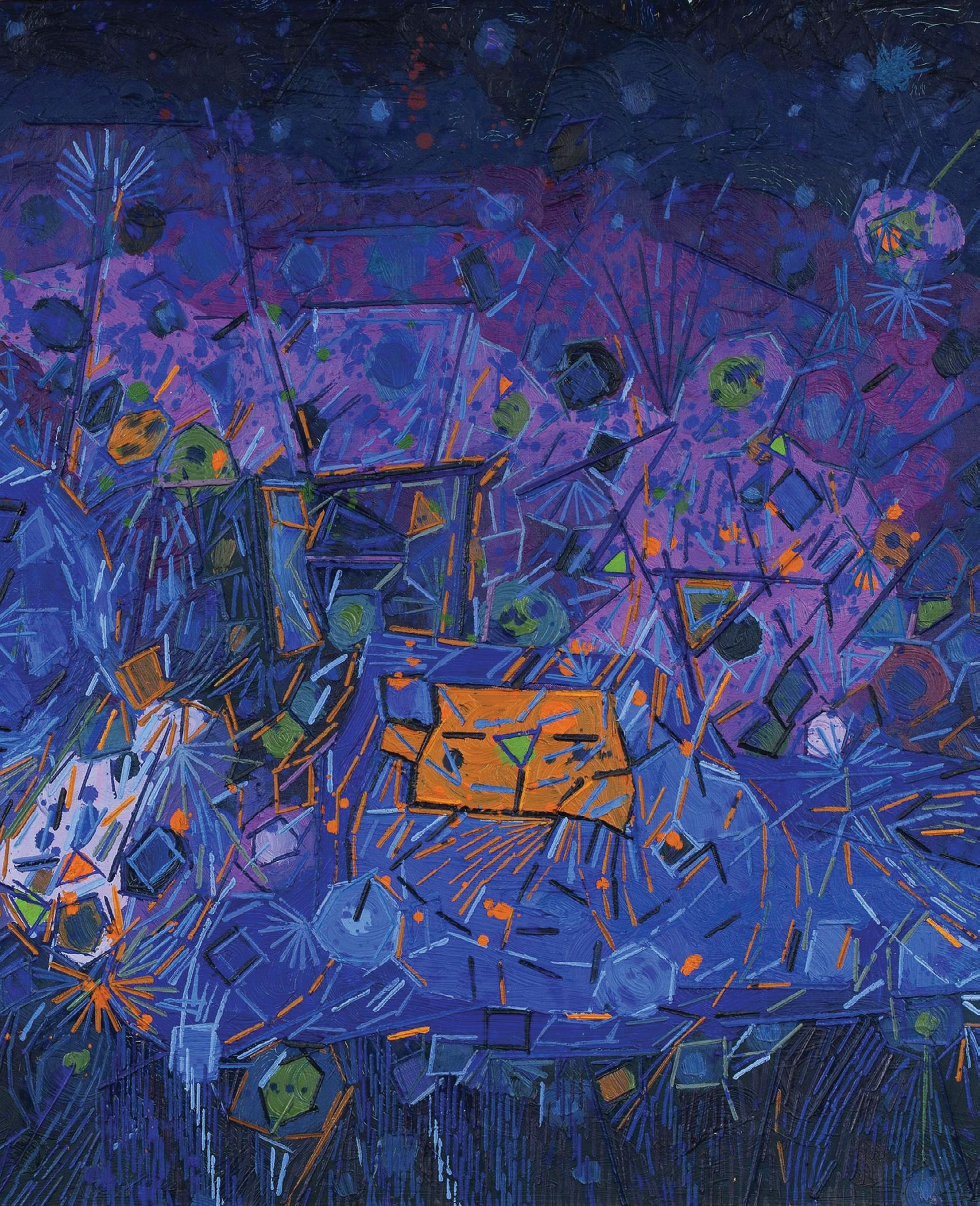
SummerFest 2023 sees the return of the Synergy Initiative, a series co-produced by Inon Barnatan and Clara Wu Tsai, investor and philanthropist, which invites top creators of music, dance, spoken word, and visual arts to collaborate across their different art forms and produce performances that inspire our audiences in unexpected and powerful ways.
Sponsored in part by:
Thursday, August 17
GRAMMY-nominated Louis Cato, an internationally acclaimed multi-instrumentalist, producer, and songwriter who leads the Late Show with Stephen Colbert house band, takes the stage in The JAI for an evening of eclectic jazz-inspired performance with his trio that will launch Synergy Weekend with a bang.



Friday, August 18
Co-commissioned by La Jolla Music Society for SummerFest’s Synergy Initiative, this reimagining of Carnival of the Animals is an evening-length interdisciplinary work of dance, spoken word, and music, an intentional response to the January 6 insurrection, navigating the reality of the political jungle by embodying shifting societal values and our relationship to democracy. Choreographed and directed by Francesca Harper (AIley II) and anchored in the words of poet Marc Bamuthi Joseph (Kennedy Center) and the transcendent movement of legendary New York City Ballet dancer Wendy Whelan, Carnival of the Animals re-frames Camille Saint-Saëns’ classic work as an intricate, interwoven series of contemplations, rooted in the artists’ distinct ability to capture the pulse of our culture. This special preview performance marks the first public presentation of the work prior to the world premiere scheduled for April 2024 in Seattle, Washington at the Meany Center for the Performing Arts.
Saturday, August 19
Highly acclaimed classical violinist and fiddler Tessa Lark collaborates with songwriter, producer and bassist Michael Thurber (formerly of The Late Show with Stephen Colbert), classical and jazz master clarinetist and improviser Mark Dover, and Louis Cato, a GRAMMY-nominated and internationally acclaimed multi-instrumentalist, producer, and songwriter who has played in the house band for The Late Show with Stephen Colbert since the show’s inception in 2015, and was recently named bandleader for the newly renamed Late Show Band.
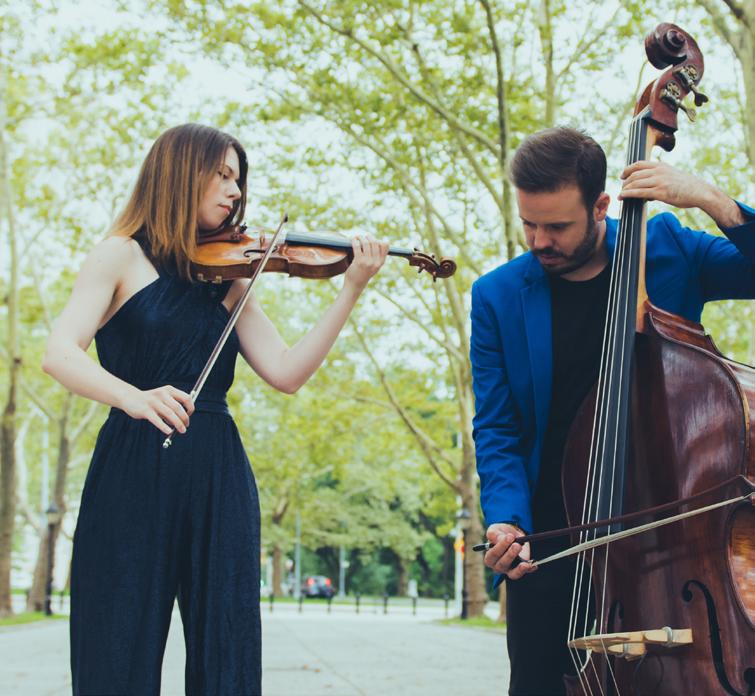
Thomas Adès, composer & piano
English composer
Thomas Adès conducted the premiere of his most recent opera, The Exterminating Angel, at the 2016 Salzburg Festival and then at the Metropolitan Opera in New York and the Royal Opera House, London. He conducted the premiere and revival of his opera The Tempest at the Royal Opera House, and a new production at the Metropolitan Opera, Vienna Staatsoper, and in 2022 at La Scala, Milan. Adès has been the Artistic Partner of the Boston Symphony Orchestra since 2016 and conducts the orchestra every year in Boston and at Tanglewood. As conductor, Adès also appears regularly with the Los Angeles and London Philharmonic orchestras, the Boston, London, BBC, Finnish Radio and City of Birmingham Symphony Orchestras, the Royal Concertgebouworkest, Leipzig Gewandhaus, and the Orchestra of Santa Cecilia, Rome. Recent highlights include conducting The Rake’s Progress at the Royal Opera House and Zürich Opera and debut concerts with the Vienna Philharmonic and Berlin Philharmonic. Adès’ recordings have won awards including the Diapason d’Or de l’année in 2013 and a Best Opera GRAMMY in 2014.

Julie Albers, cello
American cellist
Julie Albers made her major orchestral debut with the Cleveland Orchestra in 1998, and thereafter has performed in recital and with orchestras throughout North America, Europe, Korea, Taiwan, Australia, and New Zealand. In 2001, she won Second Prize in Munich’s Internationalen Musikwettbewerbes der ARD, and was also awarded the Wilhelm-Weichsler-Musikpreis der Stadt Osnabrück. In 2014, Albers was named principal cellist of the Saint Paul Chamber Orchestra. She regularly participates in chamber music festivals around the world, and in 2009 completed a three-year residency with the Chamber Music Society of Lincoln Center Two.


Rebecca Albers joined the Minnesota Orchestra as Assistant Principal Ciola in 2010 and won the position of Principal Viola in 2017. She made her New York debut at Lincoln Center, performing the New York premiere of Samuel Adler’s Viola Concerto with the Juilliard Orchestra. She performs often at such festivals as the Marlboro Music Festival, Seattle Chamber Music Society Summer and Winter Festivals, and Rome Chamber Music Festival. Albers is a member of Accordo, a Twin Cities-based chamber ensemble made up of present and former principal players from the Saint Paul Chamber Orchestra and the Minnesota Orchestra. Rebecca’s sister Julie Albers and her wife, Maiya Papach, are respectively the Principal Cellist and Principal Violist of the Saint Paul Chamber Orchestra, and are also both performing at SummerFest this year.

The Philadelphia Inquirer called cellist Efe Baltacıgil “a highly individualized solo artist” with “gorgeous sound, strong personality, and expressive depth.” Baltacigil won the 2005 Young Concert Artists International Auditions and was awarded the Washington Performing Arts Society Prize. Born in Istanbul, Turkey, Baltacigil received his Artist Diploma and the Jacqueline DuPré Scholarship from The Curtis Institute of Music in Philadelphia.
Equally celebrated as a soloist, curator, and collaborator, Inon Barnatan is a regular soloist with many of the world’s foremost orchestras and conductors, and served as the inaugural Artist-in-Association of the New York Philharmonic for three
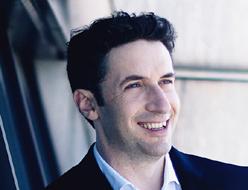
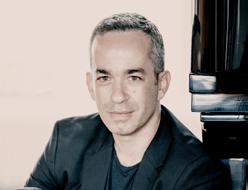
seasons. The recipient of the Avery Fisher Career Grant and Lincoln Center’s Martin E. Segal Award, Barnatan is also a soughtafter recitalist and chamber musician. In recent seasons he played solo recitals at Carnegie’s Zankel Hall and London’s Wigmore Hall and reunited for a European tour with his frequent recital partner, cellist Alisa Weilerstein. He has been music director of SummerFest since 2019.
John E.D. Bass, lighting designer
John E.D. Bass has been lighting the performing arts & architecture in Los Angeles & around the world for over three decades. His last project with Sozo was Love Heals All Wounds with Jon Boogz & Lil Buck. John has designed for & toured with L.A. dance companies Diavolo, Invertigo, & Not Man Apart. Design highlights include Paradise Lost (Stage Raw Award), Diavolo’s Fearful Symmetries & Foreign Bodies with the L.A. Philharmonic Hollywood Bowl. Architectural credits include design team for the Eastern Columbia building in downtown L.A. & Spring, a Claes Oldenburg sculpture in Seoul, Korea. Past tour design highlights include Lilly Singh AT2UI & as Tom Ruzika’s associate on Peter Pan & Camelot. Current tours design credits; Diavolo Architecture in Motion, Daniel Tiger’s Neighborhood for Fred Rogers Co. & Foolers for Penn & Teller. With TheatreDNA John consults architects like Frank Gehry on lighting performance spaces.
Noah Bendix-Balgley, violin
Noah BendixBalgley is First Concertmaster of the Berliner Philharmoniker and tours both as a chamber musician and as a soloist. Earlier this season, he made his concerto debut at Carnegie Hall, performing as the featured soloist of the Berliner Philharmoniker USA tour under the direction of Kirill Petrenko. The season also features debuts with the Baltimore Symphony Orchestra and ProMusica Columbus, as well as a return to the Pittsburgh Symphony Orchestra, where he was concertmaster from 2011 to 2015. Bendix-Balgley has toured with Apollo’s Fire Orchestra; performed the Brahms
Double Concerto with Alisa Weilerstein and the Aspen Music Festival Orchestra; toured with the Stuttgart Chamber Orchestra; and given recitals at the Philharmonie Berlin, Beethoven-Haus Bonn, the National Forum of Music in Wrocław, and the National Concert Hall in Taipei.
Allison Boles, interviewer
Allison Boles, La Jolla Music Society’s Director of Learning and Engagement, joined the nonprofit in 2015 after beginning her career as an instrumental music editor with the Neil A. Kjos Music Company. Boles earned her BA in Music from UC San Diego and her MA in Nonprofit Leadership and Management from the University of San Diego. She serves on the Advisory Council for the Visual and Performing Arts (VAPA) Department of the San Diego Unified School District and as treasurer for the California Music Educators Association-Southern Border Section.
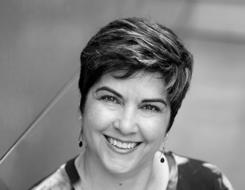
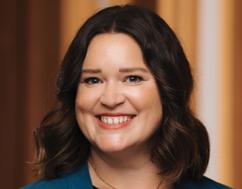
Kristi Brown Montesano, lecturer Chair of the Music History Department at the Colburn Conservatory of Music in Los Angeles, Kristi Brown Montesano is an enthusiastic “public musicologist.” She is an active lecturer for the LA Philharmonic, the Opera League of Los Angeles, the Salon de Musiques series, and Mason House Concerts. Her book, The Women of Mozart’s Operas (UC Press, 2007), offers a detailed study of these fascinating roles; more recent scholarly interests include classical music in film, women in classical music, and opera for children.
Benjamin Jacobson, Tereza Stanislav, violins; Jonathan Moerschel, viola; Eric Byers, cello Winners of the prestigious 2014 Avery Fisher Career

Grant, the Calder Quartet is widely known for the discovery, commissioning, recording and mentoring of some of today’s best emerging composers. In addition to performances of the complete Beethoven and Bartók quartets, the Calder Quartet’s dedication to commissioning new works has given rise to premieres of dozens of string quartets by composers including Peter Eötvös, Andrew Norman, Christopher Rouse, Ted Hearne, and Christopher Cerrone. Recent highlights include performances at Carnegie Hall, Kennedy Center, Disney Hall, Lincoln Center, Metropolitan Museum of Art, Wigmore Hall, Barbican, Salzburg Festival, Frankfurt Alte Oper, Tonhalle Zurich, IRCAM Paris, Hamburg’s Elbphilharmonie, and the Sydney Opera House.
Louis Cato, guitar
Louis Cato is a GRAMMYnominated and internationally acclaimed multiinstrumentalist, producer, and songwriter. He has worked with an array of artists including Bobby McFerrin, Snarky Puppy, Jon Batiste, Q-Tip, and A Tribe Called Quest. His love of music started at age 2 when the purchase of his first drum set evolved into an appreciation of the southern gospel from his native North Carolina and continued into his education at the Berklee College of Music. After two decades of lending his talents to other projects, Cato released his first solo record, Starting Now, in 2017, which he also mixed and produced entirely by himself. He is currently in post-production on his newest album which is due out in the coming year. After playing in the house band for The Late Show with Stephen Colbert since the show’s 2015 inception, Cato was recently named bandleader for the newly renamed “The Late Show Band.”
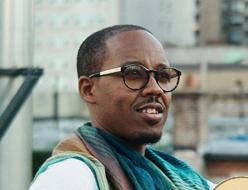
Chi-Yuan Chen, viola

Symphony. Top-prize winner of both the 2000 Fischoff Chamber Music Competition and the 2004 International Paris Viola Competition Ville d’Avray, Chen is recognized as one of the leading violists of his generation. A founding member of the Great Wall String Quartet, Chen tours and gives masterclasses frequently throughout Asian countries. A graduate of New England Conservatory with the highest distinction in performance in both Bachelor and Master degrees, Chen also holds a Doctoral of Musical Arts degree from Stony Brook University in New York.
Timothy Cobb, bass Bassist Timothy Cobb joined the New York Philharmonic as Principal Bass in 2014, after serving as Principal Bass of the Metropolitan Opera Orchestra and Principal Bass of the Mostly Mozart Festival Orchestra since 1989. He has appeared at numerous chamber music festivals worldwide, including the Marlboro Music festival. Cobb serves as bass department chair for The Juilliard School as well as on the faculties of the Manhattan School of Music, Purchase College, and Rutgers University. He is also a distinguished visiting artist for Lynn University in Boca Raton, Florida.

Diana Cohen, violin
Taiwanese violist
Chi-Yuan Chen holds the Karen and Warren Kessler
Chair as Principal Viola of San Diego
Diana Cohen is Concertmaster of the Calgary Philharmonic, and founder and Artistic Director of acclaimed music festival ChamberFest Cleveland. As soloist, she has appeared with numerous orchestras, including Holland Symphony, Rochester Symphony, Lansing, and Grand Rapids, and has performed at Marlboro Music Festival and the Ravinia Festival, and collaborated with renowned artists including Garrick Ohlsson, Mitsuko Uchida, Jonathan Biss, and members of the Guarneri, Juilliard, Miro, Cleveland, and Parker Quartets. She

has toured and recorded with the GRAMMY-winning Orpheus Chamber Orchestra, and performed with the East Coast Chamber Orchestra, Sejong Soloists, The Knights, Cleveland Orchestra, and New York Philharmonic. Cohen has also played regularly with her family: her father, Cleveland Orchestra Principal Clarinetist Franklin Cohen; Alexander Cohen, Principal Timpanist of the Calgary Philharmonic; and her late mother, bassoonist Lynette Diers Cohen.
Sasha Cooke, mezzo-soprano
Two-time GRAMMY Award-winning mezzo-soprano
Sasha Cooke has sung at the Metropolitan Opera, San Francisco Opera, English National Opera, Seattle Opera, Opéra National de Bordeaux, and Gran Teatre del Liceu, among others, and with over 80 symphony orchestras worldwide, frequently in the works of Mahler. This season marks her appointment at the Music Academy of the West as co-director of the Lehrer Vocal Institute. Cooke opened the 2022–23 season with a return to Houston Grand Opera in her role debut as Thirza in the company’s new production of Dame Ethel Smyth’s The Wreckers. Her concert performances in the U.S. and abroad include a debut with Orchestra dell’Accademia Nazionale di Santa Cecilia in Mahler’s Symphony No. 3, conducted by Sir Antonio Pappano, and the Utah Symphony in Mendelssohn’s Elijah, which she later performs with NDR Elbphilharmonie Orchestra led by Alan Gilbert.

Steven Copes, violin
Violinist Steven Copes joined the Saint Paul Chamber Orchestra as Concertmaster in 1998. He appears frequently as soloist with the SPCO, and with the Philharmonia Orchestra of London, the Colorado Symphony, Pro Arte Chamber Orchestra in Boston, the Sao Paolo State Symphony, the Orlando

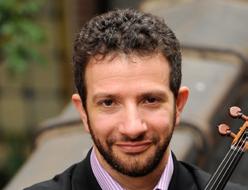
Philharmonic, The Knights, and the Mexico City Philharmonic. Copes gave the world premiere of George Tsontakis’ GRAMMY-nominated Violin Concerto No. 2 in 2003, which won the 2005 Grawemeyer award, and also gave the New York premiere of Lutoslawski’s Subito (1992) for Violin and Piano. He performed John Novacek’s Four Rags with the composer on NPR’s A Prairie Home Companion with Garrison Keillor, and has also appeared on the PBS series Now Hear This. Copes has performed at festivals and concert series such as Aspen, Boston Chamber Music Society, Bravo! Vail, Caramoor, Mainly Mozart, Piccolo Spoleto, Santa Fe, and Seattle Chamber Music Society, among others.
Stefan Dohr, horn
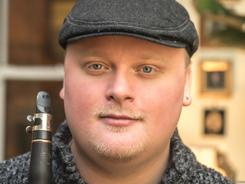
Stefan Dohr, Principal Horn of the Berliner Philharmoniker, has collaborated as a soloist with the world’s leading conductors, including Sir Simon Rattle, Claudio Abbado, Daniel Barenboim, Bernard Haitink, Christian Thielemann, Neeme and Paavo Järvi, and Marc Albrecht. He has performed with orchestras such as the Berliner Philharmoniker, Los Angeles Philharmonic, Deutsche Kammerphilharmonie Bremen, Swedish Radio Symphony Orchestra, Oslo Philharmonic, Orchestre Philharmonique de Radio France, Orquesta Nacional de España, Shanghai Philharmonic Orchestra, NHK Symphony Orchestra, and Osaka Philharmonic Orchestra. Dohr is continually expanding his instrument’s repertoire, commissioning and premiering new pieces by today’s foremost composers.
Los Angeles-based percussionist Dustin Donahue is an advocate for contemporary music, and has commissioned and premiered a large body of solo and chamber music by living composers while continuing to perform music of the 20th-century avant-garde. He
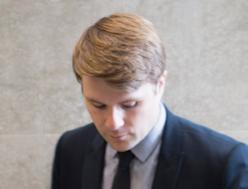
frequently performs with the International Contemporary Ensemble and collaborates with many of southern California’s presenters of contemporary music, such as WasteLAnd, the Ojai Music Festival, Monday Evening Concerts, Jacaranda Music, and San Diego New Music. As a soloist, Dustin has recently performed in Reykjavik and Christchurch, and was featured performing the music of Brian Ferneyhough at Stanford University. He appears on releases for Mode, Decca, Stradivarius, and Populist Records.
Mark Dover, clarinet
GRAMMYnominated clarinetist Mark Dover has served as the clarinetist of Imani Winds since 2016, and has appeared as a soloist with the Atlanta, Baltimore, and Albany symphonies, and the American Composers Orchestra. Dover is also the clarinetist of Manhattan Chamber Players, and has performed with the Detroit Symphony under Leonard Slatkin, the Cleveland Orchestra, The Knights, and many other ensembles throughout the country. Dover is active as a clinician and has given masterclasses at many institutions such as Manhattan School of Music, The University of Michigan School of Music, Theatre, and Dance, University of Texas at Austin. He is a frequent collaborator with Vulfpeck, an American funk band formed in his hometown of Ann Arbor, Michigan, and his duo Port Mande, with pianist/producer Jeremy Jordan, performs original music frequently throughout NewYork.
Sterling Elliott, cello
Cellist Sterling Elliott is a Kovner Fellow at The Juilliard School, pursuing his Masters of Music degree. In the 2021–22 season he appeared with the San Antonio, Richmond, and West Virginia symphony orchestras; the Indianapolis Chamber Orchestra; the Orlando Philharmonic; and the Midland

Symphony. Last summer he debuted with the Los Angeles Philharmonic at the Hollywood Bowl, with further appearances at Chamberfest Cleveland and Music@Menlo. He has performed with the Philadelphia Orchestra with Yannick Nézet-Séguin, the New York Philharmonic with Jeffrey Kahane, the Boston Symphony, the Cleveland Orchestra, and the Detroit Symphony, among others.
Zoltán Fejérvári, piano
Winner of the 2017 Concours Musical International de Montréal and recipient of the prestigious BorlettiBuitoni Trust Fellowship in 2016, Hungarian pianist Zoltán Fejérvári has appeared in recitals at prestigious venues including Carnegie Hall, Canada’s Place des Arts, Gasteig in Munich, Lingotto in Turin, Palau de Música in Valencia, Biblioteca Nacional de Buenos Aires, and Liszt Academy in Budapest. His latest recording, Schumann, was released in May 2020. Highlights of the 2022–23 season include a U.S. tour with Concerto Budapest, as well as performances at Santa Fe Chamber Music Festival, Music for Galway in Ireland, Wigmore Hall, and the Nicholas Yonge Society in the UK. In 2013, Fejérvári’s recording of Liszt’s Malédiction with the Budapest Chamber Symphony was awarded the Grand Prix du Disque. He made his recital debut with La Jolla Music Society in the 2021–22 Winter Season Piano Series.

Michael John Garcés, dramaturg

Michael John Garcés is the Artistic Director of Cornerstone Theater Company, a communityengaged ensemble in Los Angeles where he recently directed Urban Rez by Larissa FastHorse. Other productions at Cornerstone include California: The Tempest by Alison Carey, Plumas Negras by Juliette Carillo and Café Vida by Lisa Loomer. He is a company member at Woolly
Mammoth Theatre in Washington, DC, where his directing credits include Lights Rise on Grace by Chad Bekim and The Convert by Danai Gurira. Other recent productions include The Box by Sarah Shourd at Z Space and District Merchants at The Folger Theatre. Other credits include, in New York, BAM, The Atlantic, The Cherry Lane, INTAR and Repertorio Español; and, regionally, South Coast Repertory, A Contemporary Theatre, Hartford Stage, The Huntington Theatre and The Children’s Theatre. Garces is the recipient of the Alan Schneider Director Award, the Princess Grace Statue Award, a TCG New Generations Grant, the NEA/TCG Career Development Program for Directors Grant, a Van Lier Directing Fellowship, and a Drama League Director’s Residency.
Michael Gerdes, lecturer


Michael Gerdes is Director of Orchestras at San Diego State University, where he conducts the San Diego State Symphony Orchestra, Chamber Orchestra, and Opera Orchestra. He earned his Bachelor of Music degree in Music Education and Bachelor of Arts Degree in Philosophy from Concordia College in Moorhead, Minnesota. Selected by the San Diego Union-Tribune as one of three “Faces to Watch in Classical Music” during his first year as Director of Orchestras, Gerdes is focused on creating a thriving orchestral community at San Diego State University.
Alan Gilbert, conductor & violin
GRAMMY
Award-winning conductor Alan Gilbert has been Chief Conductor of Hamburg’s NDR Elbphilharmonie Orchestra since fall 2019 and Music Director of the Royal Swedish Opera since spring 2021. In 2017, he concluded an eight-year tenure as Music Director of the New York Philharmonic that was widely regarded as transformative. Gilbert regularly appears

with orchestras including the Berlin Philharmonic, Boston Symphony Orchestra, Cleveland Orchestra, Dresden Staatskapelle, Leipzig Gewandhaus Orchestra, London Symphony Orchestra, Philadelphia Orchestra, Orchestre de Paris, Orchestre Philharmonique de Radio France, and Amsterdam’s Royal Concertgebouw Orchestra. He has also conducted operas for the Metropolitan Opera, Los Angeles Opera, Zurich Opera, and Santa Fe Opera, where he served as the inaugural Music Director. Elected to the American Academy of Arts & Sciences in 2014, he has now also been named an Officier de l’Ordre des Arts et des Lettres by the French government.
Vanisha Gould, voice
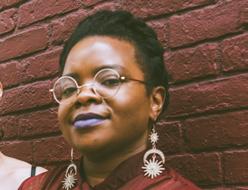
Vanisha Gould came to New York in 2015 from Simi Valley, California. Inspired by artists like Billie Holiday, Sarah Vaughan, Joni Mitchell, Carmen McRae and Ella Fitzgerald, she has successfully curated her own sound as a composer and band leader. Performing originals and music from the Great American Songbook on several groundbreaking stages both in New York and overseas, she aspires to continue sharing her voice with audiences in New York and beyond.
Elias Gurrola, costume designer
Elias Gurrola was born and raised in Miami, Florida, where he gained an early interest in the arts. Following studies at Central St. Martins in London and Parsons New York School for Design, in 2013 he created a line of custom garments for Henri Bendel’s national campaign featuring that season’s accessory collection. That summer, he was flown out to Beijing to compete in Izzue X Tsinghua’s First Annual Fashion Design Award. In Fall 2013 he won the “Technology Award” from Louis Vuitton for his team’s dance costumes in a performance during New York Fashion
Week. After graduating from Parsons in 2014, Elias was asked to show his thesis collection at Pacific Fashion Week in Vladivostok, Russia, where he was interviewed and featured in Russian publications. In 2017 he created costumes for Francesca Harper’s piece “System” which was performed by The Dance Theatre of Harlem nationwide. He has worked in the fashion industry designing for several brands including Anna Sui, Jones New York, and Calvin Klein.
Clive Greensmith, cello
Clive Greensmith was a member of the worldrenowned Tokyo String Quartet from 1999 until 2013, giving more than 100 performances each year in the most prestigious international venues, including New York’s Carnegie Hall, Sydney Opera House, and Berlin Philharmonie. He is Professor of Cello at the Colburn School in Los Angeles. Greensmith performs regularly with the Chamber Music Society of Lincoln Center and is a founding member of the Montrose Trio.
Paul Groves, tenor
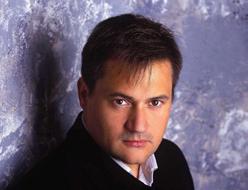
American tenor Paul Groves recently performed La Damnation de Faust in concert with the Shanghai and Beijing Symphonies, and returned to the Metropolitan Opera for his 27th season with the company in performances as Chekalinsky in The Queen of Spades and Tamino in The Magic Flute, and in the world premiere of Tobias Picker’s Awakenings with Opera Theatre of Saint Louis. He has sung with the great opera companies of the world including Lyric Opera of Chicago, San Francisco Opera, LA Opera, Opéra National de Paris, Milan’s La Scala, Madrid’s Teatro Real, Vienna Staatsoper, London’s Royal Opera Covent Garden; the Salzburg Festival, Bayerische Staatsoper, Deutsche Oper Berlin, and Spoleto Festival USA, among others. He regularly performs as soloist in
concerts with the world’s leading orchestras and conductors, including the New York Philharmonic, Carnegie Hall, the San Francisco Symphony, the Philadelphia Orchestra, Los Angeles Philharmonic, the Cleveland Orchestra, the BBC Scottish Symphony Orchestra, and the Caramoor Festival.

Ara Guzelimian is artistic and executive director of the Ojai Festival in California. He served as Provost and Dean of The Juilliard School in New York City from 2007 to 2020, and continues at Juilliard in the role of special advisor to the Office of the President. Prior to that, he was senior director and artistic advisor of Carnegie Hall from 1998 to 2006. In addition, he is a member of the Steering Committee of the Aga Khan Music Awards, the Artistic Committee of the Borletti-Buitoni Trust in London, and a Board member of the Amphion and Pacific Harmony Foundations. Guzelimian is editor of Parallels and Paradoxes: Explorations in Music and Society (Pantheon Books), a collection of dialogues between Daniel Barenboim and Edward Said. In September 2003, he was awarded the title Chevalier des Arts et des Lettres by the French government for his contributions to French music and culture.
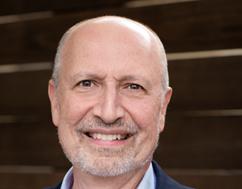
Bassist Samuel Hager has been a member of the San Diego Symphony Orchestra since October of 2006 and during that time has served two seasons as Acting Associate Principal Bass. He has been performing with SummerFest regularly since 2011. Before joining the San Diego Symphony, Hager played one season with the Oregon Symphony, and was a member of the Fort Wayne Philharmonic, Evansville Philharmonic, and Owensboro Symphony. During his time in Los Angeles he worked with the Los Angeles Philharmonic,

Long Beach Symphony and Riverside Philharmonic. Hager performs on a Modern Italian double bass circa 1930, made by Giuseppe Tarantino.
Francesca Harper has choreographed works for both of the Ailey professional companies, Dance Theater of Harlem, Hubbard Street II, and La Balé da Cidade, among others. She has also choreographed works commissioned by The Metropolitan Museum of Art, New Jersey Symphony Orchestra, and her own company, The Francesca Harper Project. Ms. Harper has been a principal dancer with Frankfurt Ballet and a featured performer in Broadway shows. Sought after for her expertise and experience as a consultant for major film and stage productions, Ms. Harper is currently engaged as Executive Producer with Sony Pictures on a series in development. Francesca is the newly appointed artistic director of Ailey II.

Augustin Hadelich, violin
Violinist Augustin Hadelich has performed with every major orchestra in the US, as well as the Bavarian Radio Symphony, Royal Concertgebouw Orchestra, Danish National Orchestra, Hong Kong
Philharmonic, London Philharmonic, NHK Symphony (Tokyo), Rotterdam Philharmonic, and Seoul Philharmonic. He is the winner of a 2016 GRAMMY® Award for his recording of Dutilleux’s Violin Concerto with the Seattle Symphony and Ludovic Morlot. Other releases include Paganini’s 24 Caprices for Warner Classics, Tchaikovsky and Lalo Concertos with the London Philharmonic Orchestra, Sibelius and Adès Concertos with the Royal Liverpool Philharmonic Orchestra, and Mendelssohn and Bartók Concertos with the Norwegian Radio Orchestra.
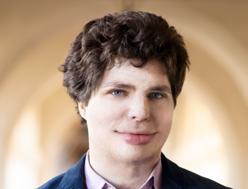

Violinist Kate Hatmaker is the co-founder and executive and artistic director of Art of Elan, a San Diego-based chamber music organization that has been building community through music since 2007, and has been a tenured violinist with the San Diego Symphony since 2006. Hatmaker has been a featured soloist with a wide variety of North American orchestras, including the San Diego Symphony, and has performed at the Vail International Dance Festival and the Ojai Music Festival, among others. She has served on the faculty at the University of California-San Diego and the Coronado School of the Arts, and is a frequent chamber music recitalist, guest clinician, and keynote speaker.
The recipient of a 2021 Avery Fisher Career Grant, cellist


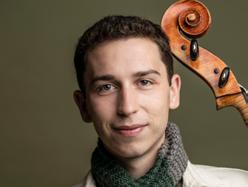
Oliver Herbert has appeared as soloist with the San Francisco Symphony, Chicago Symphony Orchestra, New World Symphony, Buffalo Philharmonic, Warsaw Philharmonic, and Orquesta Sinfónica Nacional de Colombia, among others. He has worked with conductors such as Michael Tilson Thomas, Juanjo Mena, and Alexander Shelley. Current collaborations with composers include premieres of a new solo work by Chelsea Komschlies as well as a piece for cello, percussion, and electronics by Andrew Moses. His recent projects include performances of the complete Bach Cello Suites at Capital Region Classical and the complete Beethoven Cello Sonatas at Guarneri Hall in Chicago. Oliver appears regularly at leading festivals and venues such as the Rheingau Festival, Philadelphia Chamber Music Society, Marlboro, Verbier Festival, ChamberFest Cleveland, Bridgehampton, Caramoor, and the Ravinia Festival.
Sidney Hopson is an orchestral, studio, and solo percussionist from Los Angeles. He performs frequently with the Jacaranda Chamber Ensemble, Los Angeles Master Chorale, Opera Santa Barbara, Southeast Symphony, West LA Symphony, and musicians of the Los Angeles Philharmonic, LA Opera, and London Symphony Orchestras. He has premiered chamber works by John Williams, Philip Glass, John Adams, John Corigliano, Steve Reich, Peter Eötvös, and Kaija Saariaho. Hopson currently serves as director of percussion at the California State Summer School for the Arts, hosted by the California Institute of the Arts. He is also on faculty at the Young Musicians Foundation in Los Angeles.
Rika Iino, executive producer

Rika Iino oversees a trio of Sozo companies: Sozo Artists, a dynamic roster of artists in dance, music, spoken word, new media and film focused on innovation and social justice; Sozo Impact, a non-profit organization dedicated to incubating work by BIPOC artists and producers; and Sozo Vision, a consultancy which partners with institutions to design social impact-facing programs and strategies. Rika’s work as producer/ manager spans two decades and hundreds of live and digital projects with artists and organizations globally. Rika plays an active role in arts advocacy and leadership development across the industry including work with Creative & Independent Producer Alliance, Association for Performing Arts Professionals, and International Society for the Performing Arts. She is the first woman of color to receive the Patrick Hayes Award for transformative leadership in the arts.
Cellist and performer Coleman
Itzkoff stands at the intersection of baroque, classical, and new music, contemporary dance, and experimental theater. Whether premiering works by living composers and performing baroque music on historical instruments in the same concert; delivering monologues in a piece of avant-garde dance theater; or composing, arranging, and recording music for the Amazon film Le Bal des Folles, Itzkoff continues to push the boundaries of what it means to be a musician of the 21st century. He has performed in the great halls and festivals of America and abroad, including recent appearances with the Houston, San Diego, and Cincinnati symphonies. He is a member of several ensembles, including the early music ensembles Ruckus and Twelfth Night, and is a founding member of AMOC, the American Modern Opera Company.
Stefan
Stefan Jackiw is one of America’s foremost violinists, captivating audiences with playing that combines poetry and purity with an impeccable technique. Hailed for playing characterized by “uncommon musical substance” and that is “striking for its intelligence and sensitivity” (Boston Globe), Jackiw has appeared as soloist with the Boston, Chicago, Cleveland, New York, Philadelphia, and San Francisco symphony orchestras, among others.
Marc
Marc Bamuthi Joseph is a 2017 TED Global Fellow, an inaugural recipient of the Guggenheim Social Practice initiative, and an honoree of the United States Artists Rockefeller Fellowship. Bamuthi’s opera libretto, We Shall Not Be Moved, was named one of 2017’s “Best


Classical Music Performances” by The New York Times. His evening-length work created in collaboration with composer Daniel Bernard Roumain, The Just and The Blind, was commissioned by Carnegie Hall and premiered to a sold-out house at Carnegie in March 2019. His upcoming opera, Watch Night, is inspired by the forgiveness exhibited by the congregation of Emanuel AME church in Charleston, and will premiere in New York in fall 2023. Bamuthi also proudly serves as Vice President and Artistic Director of Social Impact at the John F. Kennedy Center for the Performing Arts in Washington, DC. He is in high demand for his creative approach to organizational design, brand development, and community mediation, and has been enlisted as a strategic partner or consultant for companies ranging from Coca-Cola to Carnegie Hall.

Hailed for her virtuosity and vibrant musical spirit, bassoonist

Eleni Katz has established herself as a prominent soloist, chamber musician, and orchestral player. Katz is a winner of the 2022 Concert Artist Guild Competition and has performed with the Saint Paul Chamber Orchestra, the Milwaukee Symphony Orchestra, the Fort Worth Symphony, the Sarasota Orchestra, and as a current member with the New World Symphony. Other recent appearances include a Carnegie Hall Debut with Llewellyn Sanchez- Werner through Young Performers Career Advancement (YPCA) and a 2022 fellowship with the Phoenix Chamber Music Society, Music Academy of the West, and Spoleto Festival USA. Katz was a winner of Yale’s Concerto Competition and was a semifinalist in the Meg Quigley Vivaldi Competition. Her approach to playing the bassoon has been described as “uncannily human” (The Royal Gazette) and she has always believed the bassoon should emulate the organic nature of the human voice.
Violinist Erin Keefe is Concertmaster of the Minnesota Orchestra and on the faculty of the Curtis Institute of Music. Winner of an Avery Fisher Career Grant, the Pro Musicis International Award, and numerous international competitions, she has appeared with important orchestras and given recitals throughout the United States, Europe, and Japan. She has collaborated with artists including the Emerson String Quartet, James Ehnes, Augustin Hadelich, David Finckel, and Wu Han, and has recorded for Naxos, the CMS Studio label, BIS, Onyx, and Deutsche Grammophon. Her festival appearances include Music@Menlo, Mainly Mozart, Music Academy of the West, Ravinia, and more.

Alexi Kenney has soloed with major orchestras in the USA and abroad, and collaborated with the most celebrated musicians of our time. This season he debuted as soloist with the Pittsburgh Symphony, Orchestra de la Suisse Romande, Eugene Symphony, and New Haven Symphony, among others. He also appeared at Wigmore Hall, Philadelphia Chamber Music Society, and with the Chamber Music Society of Lincoln Center. Kenney regularly performs at festivals including Caramoor, Napa Valley, La Jolla, Ojai, Kronberg, Music@ Menlo, Ravinia, and Spoleto, as well as on tour with Musicians from Marlboro and the Chamber Music Society of Lincoln Center.

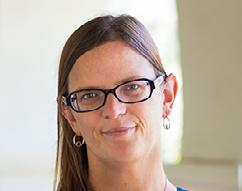
Dr. Karen Koner is associate professor and coordinator of music education at San Diego State University. As a specialist in instrumental music education, she teaches undergraduate courses focusing on K-12 teaching strategies, rehearsal
techniques, lesson planning, and curriculum. Dr. Koner holds a Doctorate of Philosophy in Curriculum and Instruction in Music Education from the University of Maryland, as well as additional degree from the University of Arizona. Her research interests encompass topics related to music teacher education with a specific lens of examining current needs of pre-service music educators in her home state of California, as well as mental health, stress management, and mindfulness techniques of music educators and students. She has presented her research and work internationally and nationally through music education professional conferences in Glasgow, Scotland, Tel Aviv, and throughout the United States. Dr. Koner’s research can be found in journals such as the Update: Applications of Research in Music Education and International Journal of Music Education
Marc Lachat is currently Principal Oboe of the Los Angeles Philharmonic. As a student at the Paris Conservatoire, he won first prize at the Young Musicians’ Autumn Festival and also received the Best Contemporary Performance Prize (2009). He has also won Munich’s ARD competition (2011) and the Prague Spring International Competition in 2013. Lachat was named Principal Oboe for the Monte-Carlo Philharmonic Orchestra in 2009; in 2013, he became Principal Oboe for the Basel Orchestra and, at the request of Sir Roger Norrington, also joined the Zurich Chamber Orchestra. He plays regularly with the Klarthe Quintet and other chamber music groups at festivals throughout France, Italy, and Switzerland, and won the ARD competition with the Klarthe in 2014. He has performed as a solo oboist with eminent conductors including Bernard Haitink, Marek Janowski, François-Xavier Roth, Paavo Järvi, Neeme Järvi, Pierre Boulez, Georges Prêtre, and Lorin Maazel, with leading orchestras including the Royal Concertgebouw Amsterdam, the London Symphony Orchestra, Zurich
Tonhalle Orchestra, the Mahler Chamber Orchestra, l’Orchestre de Paris, and Hessische Rundfunk (Frankfurt).
Tessa Lark, violin

Violinist Tessa Lark, recipient of a 2018 Borletti-Buitoni Trust Fellowship and a 2016 Avery Fisher Career Grant, is one of the most captivating artistic voices of our time. A budding superstar in the classical realm, she is also a highly acclaimed fiddler in the tradition of her native Kentucky. Since making her concerto debut with the Cincinnati Symphony Orchestra at 16, Lark has appeared with dozens of orchestras, festivals, and recital venues including Carnegie Hall, Ravinia, Amsterdam’s Concertgebouw, and Marlboro Music.
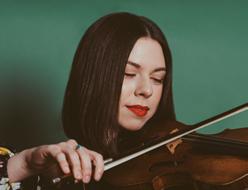
Geneva Lewis, violin
New Zealand-born violinist Geneva Lewis is the recipient of a 2021 Avery Fisher Career Grant and Grand Prize winner of the 2020 Concert Artists Guild Competition. After her solo debut at age 11 with the Pasadena Symphony, she has gone on to perform with orchestras around the world, including recent and forthcoming appearances with Orpheus Chamber Orchestra, Auckland Philharmonia, Sarasota Orchestra, Pensacola Symphony, and Augusta Symphony. She has worked with notable conductors including Nic McGegan, Edwin Outwater, and Michael Feinstein. In recital, recent and upcoming highlights include performances at Wigmore Hall, the Concertgebouw, the Kravis Center, and others. Lewis performs on a violin by Zosimo Bergonzi of Cremona, c. 1770 courtesy of Guarneri Hall NFP and Darnton & Hersh Fine Violins, Chicago.
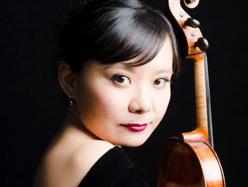
Rose Lombardo, flute
Teng Li was recently appointed
Principal Violist of the Los Angeles Philharmonic after more than a decade as Principal with the Toronto Symphony Orchestra. She regularly participates in the festivals of Marlboro, Santa Fe, Mostly Mozart, Music from Angel Fire, Rome, Moritzburg, and Caramoor. She has performed with the Guarneri Quartet at Carnegie Hall and with the 92nd Street Y Chamber Music Society, and is a member of Lincoln Center’s Chamber Music Society Two program. Li has been featured as soloist with the National Chamber Orchestra, Santa Rosa Symphony, Munich Chamber Orchestra, Haddonfield Symphony, Shanghai Opera Orchestra, among others.
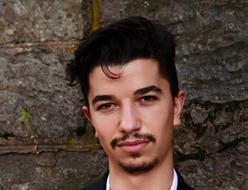
American violist
Matthew Lipman debuted with the Chicago Symphony Orchestra at the Ravinia Festival and with the Chamber Orchestra of Europe at the Rheingau Music Festival in the summer of 2021. Highlights of recent seasons include appearances with the American Symphony Orchestra, Minnesota Orchestra, BBC Philharmonic, and the Academy of St. Martin in the Fields. Lipman has worked with conductors Edward Gardner, Sir Neville Marriner, Osmo Vänskä, and Nicholas McGegan. He performs regularly on tour and at Alice Tully Hall with the Chamber Music Society of Lincoln Center. He performed with fellow violist Tabea Zimmermann at Michael Tilson Thomas’ Viola Visions Festival at the New World Symphony and debuted in recital at Carnegie Hall, Newport Classical, and the Tonhalle in Zurich. Lipman is the recipient of a 2015 Avery Fisher Career Grant, and has won major prizes at international competitions. He performs on a 1700 Matteo Goffriller viola loaned through the generous efforts of the Pine Foundation.
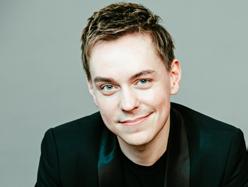
Rose Lombardo was appointed

Principal Flute of the San Diego Symphony in 2011. She has traveled across the globe as an orchestral, chamber, and solo artist, collaborating with some of the finest musicians at venues including Carnegie Hall, Bolshoi Zal at the St. Petersburg Philharmonia, Suntory Hall, Seiji Ozawa Hall, Jordan Hall, and Boston Symphony Hall. She has performed alongside musicians from the Cincinnati Symphony, Chicago Symphony Orchestra, Berlin Philharmonic, Vienna Philharmonic, and Les Arts Florissants, and at Sapporo’s Pacific Music Festival, Spoleto Music Festival USA, and the Sunflower Music Festival in Topeka. Lombardo performs regularly in San Diego with the Art of Élan and San Diego Symphony Chamber Music Series.
Gabriel Martins, cello
Cellist Gabriel Martins has been recognized through an extensive list of accolades including the Concert Artists Guild/Young Classical Artists Trust Grand Prize, the Sphinx Competition Gold Medal, the David Popper International Cello Competition Gold Medal, the Schadt String Competition Gold Medal, the Orford Music Award, and the Prague Spring Czech Music Fund Prize. These successes have led to a number of highprofile debuts including Wigmore, Carnegie, and Merkin halls, 92nd Street Y, the Great Hall of the Moscow Conservatory, Maison Symphonique in Montréal, and the Arkansas, Houston, Indianapolis, Memphis, New Russian State, Omaha, Pacific, Phoenix and São Paulo Symphony Orchestras. Martins plays a composite Francesco Ruggieri cello made in Cremona, c. 1690.
Anthony Marwood, violin
Anthony Marwood enjoys a wideranging international career as soloist, with engagements with orchestras such as Boston Symphony, London Philharmonic, Leipzig Gewandhaus and Sydney Symphony. He is also active as director and chamber musician, including artistic partnerships with Les Violons du Roy in Canada, Norwegian Chamber Orchestra, and Irish Chamber Orchestra. He is co-artistic director of the Peasmarsh Chamber Music Festival in the UK and for many years was the violinist of the Florestan Trio. He is also a prolific recording artist and, among various accolades, won the Instrumentalist Award from the Royal Philharmonic Society. Marwood was appointed an MBE in the Queen’s 2018 New Year’s Honours List.

Anthony McGill, clarinet
Anthony McGill serves as the Principal Clarinet of the New York Philharmonic—its

first AfricanAmerican principal player. McGill is hailed for his “trademark brilliance, penetrating sound, and rich character” (The New York Times), as well as for his “exquisite combination of technical refinement and expressive radiance” (The Baltimore Sun). McGill also serves as an ardent advocate for helping music education reach underserved communities and for addressing issues of diversity, equity, and inclusion in classical music.
Kyle Mendiguchia, trombone
San Diego Symphony bass
trombonist Kyle Mendiguchia was formerly the bass trombonist with the Pacific Symphony, and before that the Naples Philharmonic in Florida. He has served one-year appointments with the New York City Ballet Orchestra, the Utah


Symphony and, before winning the full-time position through audition, the San Diego Symphony. Mendiguchia also served as bass trombonist for the Hollywood Bowl Orchestra and ABT Orchestra in New York City. He has performed with ensembles such as the New York Philharmonic, Metropolitan Opera, Cleveland Orchestra, San Francisco Symphony, Pittsburgh Symphony, Seattle Symphony, Atlanta Symphony, AIMS institute in Graz, Austria and The Verbier Festival orchestra in Verbier, Switzerland.
Maiya Papach, viola
Maiya Papach is Principal Viola of the Saint Paul Chamber Orchestra. A member of the orchestra since 2008, she has made solo appearances with the SPCO in Mozart’s Sinfonia Concertante with concertmaster Steven Copes, solo directed Benjamin Britten’s Lachrymae, and as soloist in Woolrich’s Ulysses Awakes. Papach is a founding member of the International Contemporary Ensemble (ICE), with whom she has performed frequently at Lincoln Center’s Mostly Mozart Festival, New York’s Le Poisson Rouge, Chicago’s Museum of Contemporary Art, and dozens of experimental venues. She has toured extensively in the former Soviet Union with the Da Capo Chamber Players, across North America with Musicians from Marlboro, and has made appearances at Prussia Cove (UK), the Boston Chamber Music Society, the Chesapeake Chamber Music Festival, and Chamber Music Quad Cities.

Julie Smith Phillips, harp

Principal Harpist of the San Diego Symphony since 2007, Julie Smith Phillips was silver medalist in the 2004 USA International Harp Competition and bronze medalist in 2001. She made her National Symphony Orchestra debut in 2003. Phillips’ appearances include multiple performances with the San Diego Symphony, the New World Symphony Orchestra, the West Los Angeles
Symphony, and the Cleveland Institute of Music Orchestra. A founding member of The Myriad Trio, she regularly appears on the San Diego Symphony Chamber Concert Series, Art of Elan, ECHO series, and the San Diego New Music Ensemble. She has performed abroad in Italy, Japan, and Taiwan, and with the Myriad Trio performed a five-city tour in China. Her festival credits include the Bay Chamber, Festival Mozaic, Mainly Mozart, and Tanglewood Music Festivals, the Sun Valley Summer Symphony, National Repertory Orchestra, Spoleto USA Festival, and Japan’s Pacific Music Festival.
Blake Pouliot, violin
Violinist Blake Pouliot has joined the upper echelons of brilliant soloists, establishing himself as a consummate 21st-century artist with the rigor and passion to shine for a lifetime. At only 26 years old, the tenacious violinist has been praised by the Toronto Star as “one of those special talents that comes along once in a lifetime.” Pouliot has twice been featured on CBC’s “30 Hot Canadian Classical Musicians under 30.”
Molly Puryear, interviewer
Molly Puryear brings passion for dance and nonprofit administration to her position as Executive Director of Malashock Dance. Puryear has worked with Malashock Dance since 2006, and previously served in the role of Education Director. She strategically aligns artistic and educational efforts to create a dynamic relationship between programs, the communities they serve, and the organization’s valuable funders. Puryear is committed to serving the San Diego community through the development and administration of vibrant dance programs. She believes that dance is an avenue for personal expression that engages people from all walks of life.
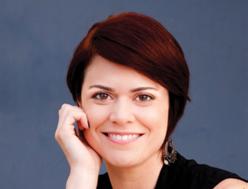
Kyoka Misawa, Rintaro Kikuno, violins; Itsuki Yamamoto, viola; Anri Tsukiji, cello Quartet Integra has been performing since 2015. Its members studied with Kazuhide Isomura and Nobuko Yamazaki at Toho Gakuen School of Music and are currently part of the Chamber Ensemble-in-Residence Program at the Colburn School, where they study with Martin Beaver, Clive Greensmith, and Tatjana Masurenko. Among the quartet’s many awards are Second Prize and the Audience Award at the 2022 ARD International Music Competition; First Prize at the 2021 Bartók World Competition; and First Prize, the Beethoven Prize, and the Grand Prix Award at the 2019 Akiyoshidai Music Competition. They were also awarded the “Banca Monte dei Paschi” prize from Clive Greensmith at the 2021 Accademia Musicale Chigiana, and more awards at the Kirishima International Music Festival. Quartet Integra have performed at the Chigiana Summer Festival, Crans Montana Classics, and Kirishima International Music Festival, among others, and have performed and collaborated with artists including Tsuyoshi Tsutsumi, Kazuhide Isomura, Shigeo Neriki, and Kazuhide Isomura. They are supported by a grant from the Matsuo Foundation.

Roman Rabinovich made his Israel Philharmonic debut under Zubin Mehta aged 10, having immigrated to Israel a year before from Tashkent, Uzbekistan. Winner of the 12th Arthur Rubinstein International Piano Master Competition, Rabinovich has performed throughout Europe and the U.S. in such prestigious venues as Leipzig’s Gewandhaus, Wigmore Hall, the Great Hall of Moscow Conservatory, Cité de la Musique in Paris, and the Kennedy Center. As a soloist he has appeared with the Royal Scottish National Orchestra, Scottish Chamber

Orchestra, Seattle Symphony, Sarasota Orchestra, Meininger Hofkapelle, Orchestre de Chambre de Paris, Prague Symphony, Buffalo Philharmonic, and all the major Israeli orchestras, to name just a few. His recent solo recital engagements have taken him to the International Piano Series at the Queen Elizabeth Hall, Lofoten Piano Festival, Franz Liszt Academy of Music, 92nd St. Y, Vancouver Recital Society, the Washington Performing Arts Society, and Wigmore Hall.
Brandon Ridenour, trumpet
Brandon Ridenour picked up the trumpet in fifth grade band class in Grand Rapids, Michigan. Upon graduating from the Juilliard School, he immediately began touring the world with the Canadian Brass and embarked on a solo career. He is an active composer/ arranger, writing in a wide variety of styles for various instrumentations and artists. Ridenour has worked with a diverse array of musicians including Sting, James Taylor, Marvin Hamlisch, Yo-Yo Ma, Esperanza Spalding, Bruce Cockburn, Caroline Shaw, Vienna Teng, and Joe Jackson, and ensembles such as the New York Philharmonic, International Contemporary Ensemble, the Knights, the Mahler Chamber Orchestra, American Brass Quintet, Publiquartet, and many others. He has been a featured soloist with the National Symphony Orchestra, Los Angeles Philharmonic, Orpheus, Orchestra of St. Luke’s, Indianapolis Symphony Orchestra, and Jacksonville Symphony Orchestra.
Anton Rist, clarinet
Anton Rist was appointed Principal Clarinetist of the Metropolitan Opera Orchestra in 2016. He previously held principal positions with the Princeton and New Haven Symphony Orchestras. In addition, he has performed with the St. Paul Chamber Orchestra, the Grant Park Festival Orchestra, the Orchestra of St. Luke’s, the Louisiana Philharmonic, the

American Ballet Theater, and on several Broadway productions. Rist toured Japan with the New York Symphonic Ensemble, and has performed as a chamber musician throughout Europe and Asia. As a soloist, he has performed with the Mainly Mozart Festival of Orchestras, the Cheyenne Symphony, the Knoxville Symphony, and the Sullivan County Chamber Orchestra. In addition, he has appeared at Festival Mozaic, the St. Barts Music Festival, Bravo! Vail, and is a founding member of the Montserrat Music Festival in the West Indies.
Leah Rosenthal, interviewer
Leah Rosenthal, Artistic Director for La Jolla Music Society, has held positions with some of the most prestigious nonprofit organizations in the country, including the Chicago Symphony Orchestra, the Ravinia Festival, The Recording Academy, and PBS. Rosenthal completed undergraduate studies in voice performance and went on to receive her master’s degree in Arts Management at Columbia College of Chicago.


Alex Ross has been the music critic of The New Yorker since 1996. His first book, The Rest Is Noise: Listening to the Twentieth Century, published in 2007, won a National Book Critics Circle Award and the Guardian First Book Award, and was a finalist for the Pulitzer Prize. An essay collection, Listen to This, appeared in 2010. His third book, Wagnerism: Art and Politics in the Shadow of Music, was published in 2020. Ross has received the George Peabody Medal, an Arts and Letters Award from the American Academy of Arts and Letters, a Guggenheim Fellowship, and a MacArthur Fellowship.

Masumi Per Rostad, viola GRAMMY®
Award-winning Japanese-Norwegian violist Masumi Per Rostad has performed at the most prominent festivals, including Marlboro, Spoleto USA, Music@Menlo, Caramoor, and the Aspen Music Festival. He has collaborated with the St. Lawrence, Ying, Pavel Haas, Miró, Verona, and Emerson string quartets, and recorded on the Cedille, Naxos, Hyperion, Musical Observations, Bridge, and Tzadik record labels. As a member of the Pacifica Quartet, Rostad regularly performed in the world’s greatest halls including Amsterdam’s Concertgebouw, Tokyo’s Suntory Hall, Carnegie Hall, Lincoln Center, Wigmore Hall, Vienna’s Konzerthaus, and the Musikverein, among many others.
Eduardo Ruiz, trumpet

Eduardo Ruiz has been the brass instructor of La Jolla Music Society’s Community Music Center since 2015. Born and raised in San Diego, he has worked hard to bring music to San Diego and its surrounding areas for over 10 years and is currently pursuing a degree in Music Education. He plays trumpet and enjoys composing and arranging.

Sonya Schumann, piano
Sonya Schumann’s recent performances include concerts with the Southeastern Piano Festival, Mainly Mozart, and the San Diego Symphony. Deeply involved in outreach and inclusion work within the arts, she serves as a faculty founder of Keys to Inclusion, a crosscollegiate initiative to expand the standard piano repertoire, elevating works of marginalized composers. Schumann is the chair of AmateurPianists, a nonprofit organization providing performance and learning opportunities for pianists of all

professions, backgrounds, and skill levels. She and her sister, Elizabeth, perform as the Schumann Duo, promoting classical music for children in areas where arts programs and funding are limited. The Schumann Duo’s popular app for iPad and iPhone, “Piano Carnival,” is available for free download on the App Store. She currently teaches at San Diego State University, where she also serves as Piano Coordinator within the Community Music School.

English clarinetist and composer Mark Simpson most recently performed in premieres of Alchymia, a new clarinet quintet by Thomas Adès dedicated to Simpson and the Diotima Quartet, while performances of his own works include his first piano concerto written for Vikingur Ólafsson (commissioned by the London Philharmonic Orchestra, Bergen Philharmonic and Cincinnati Symphony). This spring he performed in several German premieres, including his first opera, Pleasure, at the Theater Erfurt; his orchestral work Israfel with Deutsche Symphonie Orchester Berlin; and Alchymia in the Elbphilharmonie, Hamburg. Recent concerto highlights have included the world premiere of his own Clarinet Concerto with the BBC Philharmonic, Lindberg’s Clarinet Concerto at the BBC Proms, and Nielsen’s Clarinet Concerto with the BBC Symphony Orchestra and the Scottish Chamber Orchestra.

Eric Starr is Studio Artist Teacher, Lecturer of Music, Internship Coordinator, and Faculty Advisor of the Aztec Music Group at the SDSU School of Music and Dance. Off campus, he is trombonist for Westwind Brass, executive director of San Diego New Music, and a Community Engagement Partner with Art of Élan. He has performed with the San Diego Symphony,
Pacific Symphony, San Diego Opera, San Diego Winds, Broadway San Diego, La Jolla Symphony, City Music Cleveland, and the Orquesta Sinfonica UANL in Monterrey, Mexico, as well as the Ojai Music Festival, the Bang On a Can Marathon, La Paz Conservatory of Music (MX), Casa de la Cultura Mexicali, April in Santa Cruz, and the Ventura Chamber Music Festival.
Tim Stickney, assistant choreographer
Tim Stickney began his dance training at the age of 3 and continued at The Gold School in Massachusetts and the Ailey/Fordham B.F.A Program, where he earned his B.F.A in 2014. Tim supplemented his education with summers at Hubbard Street Dance Chicago and The Equus Project in Sweden. In 2012, he became a member of the Francesca Harper Project and in 2013 participated in visual artist Nick Cave’s HEARD NY Installation at Grand Central Station. Tim continues to work with both Francesca Harper and Nick Cave, most recently in 2018 for Cave’s Bessie-Award winning production of The Let Go at the Park Avenue Armory. He has performed the works of choreographers Alvin Ailey, Dwight Rhoden, Ronald K. Brown, Bob Fosse, and Alejandro Cerrudo, to name a few. He has taught a variety of master classes for professional and pre-professional programs across the United States and Canada, including Washington University of St. Louis, Drexel University, and Appalachian State University. Tim was a member of Complexions Contemporary Ballet from 2014 to 2022, and continues as a Rehearsal Assistant with the company. He is also currently a Project Manager and Artist with FHP Collective based in NYC, with notable performances at the Guggenheim and Lincoln Center in 2023.


Edward Dusinberre, Harumi Rhodes, violins; Richard O’Neill, viola; András Fejér, cello

The worldrenowned Takács Quartet is in its 49th season, with a year that includes many performances of a new quartet written for the Takács by Nokuthula Ngwenyama, a co-commission from nine major U.S. concert series. This year sees the release of two Hyperion discs of works by ColeridgeTaylor, Dvořák, and Schubert. The Takács returns to the ensemble’s Hungarian roots by playing cycles of the complete Bartók quartets. As Associate Artists at the Wigmore Hall, London, the quartet will continue its series of four concerts, featuring, among other works, Stephen Hough’s 2021 quartet and piano quintets by Florence Price and Dvořák, the latter pieces part of a concert/recording project with pianist Marc-André Hamelin. Other international destinations include Berlin and Geneva and the Adam International Chamber Music Festival in New Zealand.
Conrad Tao appears worldwide as a pianist and composer, performing as soloist with the Los Angeles Philharmonic, Chicago Symphony, Cleveland Orchestra, New York Philharmonic, and Boston Symphony. His compositions have been performed by orchestras throughout the world; his first large-scale orchestral work, Everything Must Go, received its world premiere with the New York Philharmonic, and its European premiere with the Antwerp Symphony. He is the recipient of the prestigious Avery Fisher Career Grant and was named a Gilmore Young Artist. Recently Tao returned to perform Mozart with the New York Philharmonic, for whom he curated a program for their Artist Spotlight series. Upcoming collaborations include ongoing performances of Counterpoint with dancer Caleb Teicher and Gershwin’s Rhapsody in Blue with Orchestra of St. Luke’s as part
of Paul Taylor Dance Company’s season at Lincoln Center. Tao’s violin concerto, written for Stefan Jackiw, was premiered by the Atlanta Symphony under Robert Spano, and the Baltimore Symphony under Kirill Karabits.

Violinist Jeff Thayer is the concertmaster of the San Diego Symphony Orchestra. He was previously assistant concertmaster of the Atlanta Symphony Orchestra, associate concertmaster of the North Carolina Symphony and concertmaster of the Canton (OH) Symphony Orchestra. Thayer was also formerly on the violin faculty of the Music Academy of the West where he also served as concertmaster for 13 years. He has appeared as soloist with the San Diego Symphony Orchestra, the Atlanta Symphony Orchestra, the Jupiter Symphony, the Canton Symphony Orchestra, the Pierre Monteux School Festival Orchestra, the Cleveland Institute of Music Symphony Orchestra, The Music Academy of the West Festival Orchestra, and the Conservatory Orchestra of Cordoba, among others. His many festival appearances include Interlochen, the Pierre Monteux Festival, Astoria Music Festival, Mainly Mozart Festival, Festival der Zukunft, and the Tibor Varga Festival (Switzerland). Through a generous gift from Joan and Irwin Jacobs and the Jacobs Family Trust, Thayer performs on the 1708 “Bagshawe” Stradivarius.
Michael Thurber, bass
debut scoring Antony and Cleopatra, directed by Academy Award winner Tarell McCraney. He has scored numerous Public Theater productions, including Shakespeare in the Park’s Merry Wives of Windsor, Romeo y Julieta starring Academy Award winner Lupita Nyong’o, and Richard II starring André Holland. As a bassist, he has performed with James Taylor, Willie Nelson, Chris Thile, Lianne La Havis, Cee Lo Green, Yo-Yo Ma, The Zombies, Lin-Manuel Miranda, Jon Batiste, and many others. Currently he tours the world in a duo with GRAMMY-nominated violinist Tessa Lark.
Kaylet Torrez, horn
Songwriter, bassist, and producer
Michael Thurber’s career defies category, from composing scores for The Royal Shakespeare Company and playing bass in The Late Show With Stephen Colbert house band to scoring commercials for Vanity Fair and the BBC and cofounding the hit YouTube channel CDZA (30 million views). As a theater lyricist and composer, Thurber made his international
Kaylet Torrez began her musical studies in Venezuela’s “El Sistema” music program, and from 2004 to 2014, she was a member of the horn section of the Simon Bolivar Symphony Orchestra of Venezuela conducted by Gustavo Dudamel, performing at the Berlin Philharmonie, Royal Albert Hall, the Lucerne Culture and Congress Center, Bonn Beethoven Hall, Walt Disney Concert Hall, Carnegie Hall, and La Scala in Milan, among others. In 2014 she was appointed Principal Horn of the National Symphony Orchestra of Colombia, and in 2015 won a full scholarship to the Colburn School of Music in Los Angeles. Since 2016 Torrez has played with the Los Angeles Philharmonic, London Symphony Orchestra, Chicago Symphony, and San Francisco Symphony, among others. She can also be heard on the soundtracks of films such as The Lion King, Jumanji, Minions, Bumblebee, Predator, and Aquaman, among others. Torrez is currently a member of the Pacific Symphony Orchestra, where she has been Assistant Principal Horn since 2017.
Max Tan, violin; Julia Lee, cello; Elliot Wuu, piano Elliot Wuu, a Young Steinway Artist, was
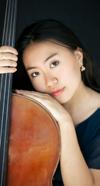
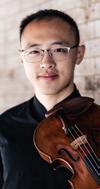




a 2018 Gilmore Young Artist and is a winner of the Salon de Virtuosi 2021 Career Grant. He has won numerous state, national and international competitions and performed across the globe. In 2015, Wuu won First Prize in the Hilton Head International Piano Competition for Young Artists; Second Prize and special Schubert Prize in the International e-Piano Junior Competition; Third Prize and special Mozart Prize in the Cleveland International Piano Competition for the Young Artists; and Second Prize and the Best Performance award of a composition by Russian Composers in the Bösendorfer and Yamaha USASU International Piano Competition. Wuu has performed in major venues in the U.S., France, Italy, Germany, United Kingdom, Poland, Romania and China. He has appeared as soloist with the Lansing Symphony Orchestra, Columbus Indiana Philharmonic, Terre Haute Symphony Orchestra, Symphony Parnassus, and Arad State Philharmonic in Romania, among many others.
Korean American cellist Julia Lee is a first year Master’s student at The Juilliard School, where she studies with Joel Krosnick under a C.V. Starr Scholarship. She has served as Principal Cellist of The Juilliard Orchestra for the last three years and is currently a substitute cellist of The New World Symphony. Lee won First Prize at the Senior Concerto Competition at the FFMC in 2018 and has soloed with the Ocala Symphony and Alachua County Symphony with Elgar’s Cello Concerto. She has participated in Juilliard’s ChamberFest and has spent summers working with the Takács Quartet, Pacifica Quartet, and members of the Juilliard String Quartet at Kneisel Hall, Zukerman Young Artist Program, Aspen Music Festival, and Heifetz Institute. Lee currently plays a Charles JB Collin-Mézin 1884 cello.
Taiwanese American violinist Max Tan is a founding member of the Versoi Ensemble and the River Charles Ensemble at Harvard College. Tan is the recipient of the Richard F. French Award, the Sylff Fellowship, the Kovner Fellowship from The Juilliard School, and the Arthur

Foote Prize from the Harvard Musical Association. He has appeared at festivals including Music@Menlo, Ravinia Steans Music Institute, Pacific Music Festival, and the Perlman Music Program. Recent performances include recitals and chamber music in Taipei, Toronto, Los Angeles, and New York, where he gave the North American premiere of Phylogenie by Japanese composer Misato Mochizuki. Currently a tenured member of the Sarasota Orchestra, Tan previously served as concertmaster of the Boston Philharmonic Youth Orchestra, the Juilliard Orchestra, the Juilliard Chamber Orchestra, and the Harvard–Radcliffe Orchestra, under illustrious conductors such as Alan Gilbert, Esa Pekka-Salonen, Valery Gergiev, Bramwell Tovey, Kent Nagano, and JoAnn Falletta. Tan performs on the ex-Franko 1701 Stradivarius on generous loan from the Megrue Family through The Juilliard School.

Since 2009, Jonathan Vinocour has been the Principal Viola of the San Francisco Symphony. A native of Rochester, New York, Vinocour graduated from Princeton University and the New England Conservatory of Music. He is a regular coach at the New World Symphony in Miami and is on the faculty of the San Francisco Conservatory.
In 2008, Andrew Wan was named concertmaster of the Montreal Symphony Orchestra. As soloist, he has appeared in the US, China, New Zealand, Cuba, Argentina, Brazil, Switzerland, and Canada under conductors such as JeanClaude Casadesus, Maxim Vengerov, Jacques Lacombe, Vasily Petrenko, James DePreist, and Michael Stern. Wan has performed in venues such as Carnegie Hall, Alice Tully Hall, the Kennedy Center, Jordan Hall, and Salle Gaveau with artists such as the Juilliard Quartet, Vadim Repin,

Emanuel Ax, Gil Shaham, Marc-André Hamelin, and Cho-Liang Lin. He has appeared at the St. Prex, Seattle, Edinburgh, Olympic, Agassiz, Aspen, and Orford Music Festivals.
Alisa Weilerstein, cello

Cellist Alisa
Weilerstein was recognized with a MacArthur Fellowship in 2011. An authority on Bach’s music for unaccompanied cello, Weilerstein recently released a best-selling recording of his solo suites on the Pentatone label, streamed them in her innovative #36DaysOfBach project, and deconstructed his beloved G-major prelude in a Vox.com video, viewed almost 1.5 million times. Her discography also includes chart-topping albums and the winner of BBC Music’s Recording of the Year award. As Artistic Partner of the Trondheim Soloists, she regularly tours and records with the Norwegian orchestra. She has premiered and championed important new works by composers including Pascal Dusapin, Osvaldo Golijov, and Matthias Pintscher. Other career milestones include a performance at the White House for President and Mrs. Obama. Diagnosed with type 1 diabetes at nine years old, Weilerstein is a staunch advocate for the T1D community.
Sugar Vendil is a composer, pianist and interdisciplinary artist based in Lenapehoking, known as Brooklyn, NY. A late bloomer, she began making her own work in her mid-30s, after over a decade of primarily performing as a pianist with her chamber ensemble The Nouveau Classical Project (2008-2021), and started dancing in 2020. Her compositions span acoustic and electronic music, and her interdisciplinary practice integrates sound and movement. Vendil’s works germinate from a kinesthetic and improvisatory approach. Vendil was awarded a 2022 NPN Creation Fund grant and 2021 MAP
Fund grant to support Antonym: the opposite of nostalgia, a memoir of a Filipinx American childhood, is co-commissioned by Living Arts Tulsa, High Concept Labs, and National Sawdust. Commissions include “Simple Tasks 2” on Jennifer Koh’s GRAMMY-award winning album Alone Together; a Chamber Music America commission, and Homebaked 2019 for “Unsacred Geometry,” an ACF | Create commission, and a solo piano work for Han Chen’s 2023 Ligeti Etudes-inspired project. She recently scored a short film by Jih-E Peng for Amanda Phingbodipakkiya’s May We Know Our Own Strength and is dancing in choreographer Emily Johnson/ Catalyst’s Being Future Being
Wendy Whelan, dancer
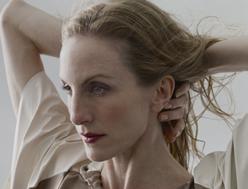
Wendy Whelan is widely considered one of the world’s leading dancers. She spent 30 years at New York City Ballet, performing virtually all the major Balanchine roles, working closely with Jerome Robbins on many of his ballets, and appearing internationally as a guest artist with The Royal Ballet and the Kirov Ballet among others. Whelan has been nominated for an Olivier Award and a Critics Circle Award, and has received the Jerome Robbins Award, a Bessie for Sustained Achievement in Performance, the Dance Magazine Award, and a Doctorate of Arts, honoris causa, from Bellarmine University. She has performed on four continents and has worked with countless other dance legends including Christopher Wheeldon, William Forsythe, Twyla Tharp, Alexei Ratmansky, Jorma Elo, Shen Wei, and Wayne MacGregor. A documentary, Restless Creature: Wendy Whelan, won the Chita Rivera Award for Best Dance Documentary, and speaks to her commitment to nullifying the stigma of aging and to focus instead on empowering women. The film is available on Netflix.
Paul Wiancko, composer and cello

Paul Wiancko regularly collaborates with artists like Max Richter, Chick Corea, Norah Jones, Arcade Fire, and The National. As cellist of the internationally celebrated Kronos Quartet, he regularly appears on the world’s foremost stages, including Carnegie Hall, the Barbican, and the Sydney Opera House. Wiancko is a founding member of the viola and cello duo Ayane & Paul, as well as the quartet-collective Owls. He has shared the stage with prominent artists including Richard Goode, Mitsuko Uchida, Yo-Yo Ma, Terry Riley, Caroline Shaw, and members of the Emerson, Guarneri, St. Lawrence, and JACK quartets. From 2009 to 2011, he was cellist of the Harlem Quartet, with whom he performed and taught throughout the US, Europe, South America, and Africa. He has served as composer-in-residence at Spoleto Festival USA, Music from Angel Fire, Portland Chamber Music Festival, Caramoor, and the Banff Centre, and has composed works for the St. Lawrence, Kronos, Aizuri, Parker, Calder, and Attacca Quartets, yMusic, Alisa Weilerstein, Alexi Kenney, Philadelphia Chamber Music Society, and many others.
William-Olsson has played in the Royal Stockholm Philharmonic Orchestra since 1995. She is one of the founders of both the VITALIS Quartet and the Hanna Quartet, which has toured most European countries. William-Olsson made her U.S. debut as a chamber musician at Weill Recital Hall at Carnegie Hall in New York. She has regularly participated in Konserthuset’s various chamber music concerts. As a soloist, she has performed Haydn’s Cello Concerto in D Major, Shostakovich’s Cello Concerto No. 2, and Martinu’s Cello Concerto No. 1 with the New York Repertory Orchestra, among others. In addition, she was the soloist in

Tan Dun’s Cello Concerto in Beijing with the China National Symphony Orchestra, led by Tan Dun himself—a concerto which she also performed with the Trondheim Symphony Orchestra. William-Olsson regularly works with her husband, conductor, and violinist Alan Gilbert. She plays a Giovanni Grancino cello from 1709.
Born into a multicultural family, Chisa Yamaguchi simultaneously celebrates her passion for tradition and innovation. Her desire to discover, collaborate, and deepen her connection with people, place and planet has taken her to six continents whether embarking on community service projects, undertaking family pilgrimages, or gracing historic stages and theaters as a professional dancer for over a decade. She avidly advocates for interdisciplinary art and collaborative practices as means to dissolve perceived barriers to open emotional and physical pathways to truth, justice, and love. Chisa brings her caring presence, grounded discipline and deep listening to everything she undertakes and creates; she most recently celebrated her stage directorial debut with Lincoln Center’s 2021 Restart Stages Series and continues her role as Creative Producer on several location-aware app experiences across the US in partnership with Sozo artist The Holladay Brothers.
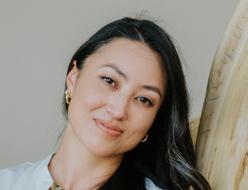
GRAMMY®nominated pianist Joyce Yang won the silver medal at the 2005 Van Cliburn International Piano
Competition—the youngest contestant at 19 years old. In 2006 she made her New York Philharmonic debut at Avery Fisher Hall and on their tour of Asia. Yang received the 2010 Avery Fisher Career Grant and earned her first GRAMMY® nomination for her recording of Franck, Kurtág, Previn & Schumann with violinist

Augustin Hadelich. This season she returns to the stage at Wolf Trap, Grant Park, Aspen, and Sun Valley, and with the New World Symphony, Dallas Symphony, Buffalo Philharmonic, Utah Symphony, and Colorado Symphony, among others.
Lucy Yeghiazaryan, voice
Lucy Yeghiazaryan is an American Armenian vocalist who has become a leading voice in American straightahead jazz by bringing the real richness of her heritage together with her love for the ultimate American artform. She is a recipient of grants from the Doris Duke

Foundation, Chamber Music America and the New York Foundation for the Arts. She has shared the stage with Harold Mabern, Houston Person, Grant Stewart, Terell Stafford, Bernadette Peters, Arto Tuncboyaijian and more. She works in and outside of the United States with regular appearances at Jazz at Lincoln Center, Birdland, Mezzrow, Symphony Space and more. Her debut album, Blue Heaven, was released in 2019 on Cellar Live Records and was followed by the album In Her Words on La Reserve Records in 2021 which was sponsored by The Women’s Fund of NYFA. Her third album, Lonely House, was released in February 2023.
La Jolla Music Society’s Board of Directors and staff celebrate and thank beloved SummerFest Scholar and Program Annotator Eric Bromberger.
With his first set of notes appearing in February 1983, Eric celebrates his 40th anniversary with La Jolla Music Society this year. He has been an integral member of the LJMS family, connecting with artists and audience members alike through intriguing program notes, fascinating lectures, and illuminating interviews during the Winter Season and SummerFest.
and thank you for 40 years of dedication! Congratulations,

BRUCE ADOLPHE
Couple (1999)
David Finckel, cello; Wu Han, piano Oceanophony (2003)
Bruce Adolphe, conductor; Marisela Sager, flute; Frank Renk, clarinet; Ryan Simmons, bassoon; Aiyun Huang, percussion; Marija Stroke, piano; Tereza Stanislav, violin; Richard Belcher, cello; Allan Rickmeier, bass Into a Cloud (2005)
Bruce Adolphe, narrator; Zheng Huang, oboe; Jun Iwasaki, violin; Erin Nolan, viola; Davin Rubicz, cello; Marija Stroke, piano
Zephyronia (2006)
Imani Winds
FRANGHIZ ALI-ZADEH
Sabah (morning/tomorrow/in the future) (2003)
Aleck Karis, piano; Cho-Liang Lin, violin; Felix Fan, cello; Wu Man, pipa
JULIAN ANDERSON
String Quartet No. 2 “300 Weihnachtslieder” (2014)
FLUX Quartet
CLARICE ASSAD
Synchronous (2015)
Liang Wang, oboe; Andrew Wan, Fabiola Kim, violins; Robert Brophy, viola; JeongHyoun “Christine” Lee, cello
SÉRGIO ASSAD
Candido Scarecrow (2014)
The Assad Brothers
DEREK BERMEL
Death with Interruptions (2014)
David Chan, violin; Clive Greensmith, cello; John Novacek, piano
CHEN YI
Ancient Dances (2004)
I. Ox Tail Dance
II. Hu Xuan Dance
David Schifrin, clarinet; Andre-Michel Schub, piano
Night Thoughts (2004)
Catherine Ransom, flute; Keith Robinson, cello; Andre-Michel Schub, piano
STEWART COPELAND
Retail Therapy (2009)
Kyoko Takezawa, violin; Nico Abondolo, bass; Frank Renk, bass clarinet; Stewart Copeland, drums; Joyce Yang, piano
CHICK COREA
String Quartet No. 1, The Adventures of Hippocrates (2004)
Orion String Quartet
MARC-ANDRÉ DALBAVIE
Quartet for Piano and Strings (2012)
Yura Lee, violin; Paul Neubauer, viola; Felix Fan, cello; Jeremy Denk, piano
RICHARD DANIELPOUR
Clarinet Quintet “The Last Jew in Hamadan” (2015)
Burt Hara, clarinet; Verona Quartet
BRETT DEAN
Epitaphs for String Quintet (2010)
Brett Dean, viola; Orion String Quartet
Seven Signal (2019)
Joseph Morris, clarinet; Qian Wu, piano; Liza Ferschtman, violin; Felix Fan, cello
DAVID DEL TREDICI
Bullycide (2013)
Orion Weiss, piano; DaXun Zhang, bass; Shanghai Quartet
GABRIELA LENA FRANK
Contested Eden (2021)
Canto para California in extremis
Attacca Quartet
MARC-ANDRÉ HAMELIN
String Quartet (2016)
Hai-Ye Ni, cello; Marc-Andre Hamelin, piano
JOHN HARBISON
String Quartet (2002)
Orion String Quartet
Crossroads (2013)
Jennifer Johnson Cano, mezzo-soprano; Peggy Pearson, oboe; Linden String Quartet; Nico Abondolo, bass
STEPHEN HARTKE
Sonata for Piano Four-Hands (2014)
Orion Weiss, Anna Polonsky, piano
JOEL HOFFMAN
of Deborah, for Deborah (2015)
Nancy Allen, harp; Cho-Liang Lin, violin; Toby Hoffman, viola; Gary Hoffman, cello
HUANG RUO
Real Loud (2018)
Real Quiet
TOSHI ICHIYANAGI
String Quartet No. 5 (2008)
FLUX Quartet
PIERRE JALBERT
Piano Quintet (2017)
Juho Pohjonen, piano
Rolsoton String Quartet
AARON JAY KERNIS
Perpetual Chaconne (2012)
John Bruce Yeh, clarinet; Calder Quartet
LEON KIRCHNER
String Quartet No. 4 (2006)
Orion String Quartet
DAVID LANG
String Quartet “almost all the time” (2014) FLUX Quartet
LEI LIANG
Vis-à-vis, for Pipa and Percussion (2018) Wu Man, pipa; Steven Schick, percussion
MAGNUS LINDBERG
Konzertstück for Cello and Piano (2006) Anssi Karttunen, cello; Magnus Lindberg, piano
JACQUES LOUSSIER
Divertimento (2008)
Jacques Loussier Trio; SoJin Kim, Shih-Kai Lin, violins; Elzbieta Weyman, viola; Yves Dharamraj, cello; Mark Dresser, bass
JULIAN MILONE
La Muerte del Angel (arr. movement from Piazzolla’s Tango Suite) (2008)
Gil Shaham, Kyoko Takezawa, Cho-Liang Lin, Margaret Batjer, violins; Chris Hanulik, bass
MARC NEIKRUG
Ritual (2007)
Real Quiet
A Song by Mahler (2018)
Jennifer Johnson Cano, mezzo-soprano; Kelly Markgraf, bass-baritone; David Shifrin, clarinet; FLUX Quartet; Doug Fitch, director; Nicholas Houfek, lighting design
MARK O’CONNOR
String Quartet No. 2 “Bluegrass” (2005)
Mark O‘Connor, Cho-Liang Lin, violins; Carol Cook, viola; Natalie Haas, cello
ANDRÉ PREVIN
Vocalise (1996)
Ashley Putnam, soprano; David Finckel, cello
CHRISTOPHER ROUSE
String Quartet No. 3 (2010)
Calder Quartet
KAIJA SAARIAHO
Serenatas (2008)
Real Quiet
ESA-PEKKA SALONEN
Lachen verlernt (Laughing Unlearnt) (2002)
Cho-Liang Lin, violin
PETER SCHICKELE
Spring Ahead Quintet for Clarinet and String Quartet (2015)
Burt Hara, clarinet; Huntington Quartet
LALO SCHIFRIN
Letters from Argentina (2005)
Lalo Schifrin, piano; David Schifrin, clarinet; Cho-Liang Lin, violin; Nestor Marconi, bandoneón; Pablo Aslan, bass; Satoshi Takeishi, percussion
PAUL SCHOENFIELD
Sonata for Violin and Piano (2009)
Cho-Liang Lin, violin; Jon Kimura Parker, piano
GUNTHER SCHULLER
Quintet for Horn and Strings (2009)
Julie Landsman, horn; Miro Quartet
BRIGHT SHENG
Three Fantasies (2006)
Cho-Liang Lin, violin; Andre-Michel Schub, piano
Northen Lights, for Violon, Cello and Piano (2010)
Lynn Harrell, cello; Victor Asuncion, piano
SEAN SHEPHERD
Oboe Quartet (2011)
Liang Wang, oboe; Jennifer Koh, violin; Cynthia Phelps, viola; Felix Fan, cello
String Quartet No. 2 (2015)
FLUX Quartet
HOWARD SHORE
A Palace Upon the Ruins (A Song Cycle) (2014)
Jennifer Johnson Cano, mezzo-soprano; Catherine Ransom
Karoly, flute; Coleman Itzkoff, cello; Andrew Staupe, piano; Julie Smith Phillips, harp; Dustin Donahue, percussion
WAYNE SHORTER
Terra Incognita (2006)
Imani Winds
STEVEN STUCKY
Sonata for Violin and Piano (2013)
Cho-Liang Lin, violin; Jon Kimura Parker, piano
AUGUSTA READ THOMAS
Bells Ring Summer (2000)
David Finckel, cello
CONRAD TAO
Movement II from “All I had forgotten or tried to” (2019)
Stefan Jackiw, violin; Conrad Tao, piano
JOAN TOWER
Big Sky (2000)
Chee-Yun, violin; David Finckel, cello; Wu Han, piano Trio La Jolla (2007) (Renamed Trio CAVANY)
Cho-Liang Lin, violin; Gary Hoffman, cello; Andre-Michel Schub, piano
White Granite (2011)
Margaret Batjer, violin; Paul Neubauer, viola; Joshua Roman, cello; Andre-Michel Schub, piano
GEORGE TSONTAKIS
Stimulus Package (2009)
Real Quiet
CHINARY UNG
AKASA: “Formless Spiral” (2010)
Real Quiet
JOHN WILLIAMS
Quartet La Jolla (2011)
Cho-Liang Lin, violin; Joshua Roman, cello; John Bruce Yeh, clarinet; Deborah Hoffman, harp
CYNTHIA LEE WONG
Piano Quartet (2011)
Joyce Yang, piano; Martin Beaver, violin; Kazuhide Isomura, viola; Felix Fan, cello
XIAOGANG YE
Gardenia for String Quartet and Pipa (2017)
Wu Man, pipa; Miro Quartet
ELLEN TAAFFE ZWILICH
Quintet for Violin, Viola, Cello, Contrabass and Piano (2011)
Kalichstein-Laredo-Robinson Trio; Michael Tree, viola; Harold Robinson, bass Pas de Trois (2016)
Kalichstein-Laredo-Robinson Trio
SYNERGY COMMISSIONS & SPECIAL PROJECTS
Co-produced by Clara Wu Tsai & Inon Barnatan
Intersection (2019)
Cécile McLorin Salvant, voice; Aaron Diehl, Inon Barnatan, pianos
TAMAR MUSKAL
Facing the Automaton (2021)
Steven Schick, percussion; Joseph Morris, clarinet; Brad Balliett, bassoon; David Byrd-Marrow, horn; David Chan, Justin DeFilippis, violins; Jonathan Moreschel, viola; Joshua Roman, cello; David Grossman, bass; Chelsea de Souza, piano
New York Counterpoint (2022)
Film directed by Tristan Cook
Cinematography by Zac Nicholson
Anthony McGill (New York Philharmonic), clarinet; On film: Alec Manassee (The Juilliard School), clarinet & bass clarinet; Ricardo Morales (Chamber Music Society of Lincoln Center), clarinet; Jessica Phillips (The MET Orchestra), clarinet; Victor Goines (Jazz at Lincoln Center Orchestra), clarinet; Jon Manassee (The Juilliard School), clarinet; Carol McGonnell (The Juilliard School), bass clarinet; Kristina Teuschler (Lincoln Center for the Performing Arts), clarinet; Alexander Fiterstein (Chamber Music Society of Lincoln Center), clarinet; Anton Rist (The MET Orchestra), clarinet; Dean LeBlanc (The MET Orchestra), bass clarinet
An Evening of Kurt Weill: Seven Deadly Spins (2022)
Directed by Zack Winokur
Anthony Roth Costanzo, countertenor; Cécile McLorin Salvant, voice; Sullivan Fortner, piano; The Knights with Special Guests; Eric Jacobsen, conductor
Carnival of the Animals (2023)
Conceived and written by Marc Bamuthi Joseph Choreographed and directed by Francesca Harper
Composed by Sugar Vendil
Wendy Whelan, dance; Marc Bamuthi Joseph, spoken word; Joyce Yang, Inon Barnatan, pianos; Geneva Lewis, violin; Gabriel Martins, cello
Photo credits: Cover: Lee Mullican, Electric Night , 1967, oil on canvas, 36 1/4 x 76in. (92.1 x 193cm), Collection Museum of Contemporary Art San Diego, Gift of Ruth Gribin, 2011.31.
Photographer: Pablo Mason — © Estate of Lee Mullican 2023. Courtesy the Estate of Lee Mullican and James Cohan, New York. Pg. 10: I. Barnatan courtesy of artist; Pg. 11: J. Yang © KT Kim; Pg. 12: A. Gilbert © Peter Hundert; Pg. 13: B. Pouliot © Lauren Hurt; Pg. 21: S. Cooke © Stephanie Girard; Pg. 25: M. Per Rostad courtesy of artist; Pg. 29: L. Yeghiazaryan & V. Gould courtesy of artists; Pg. 30: T. Lark © Lauren Desberg; Pg. 33: A. Kenney © Mike Grittani; Pg. 37: Z. Fejérvári courtesy of artist; Pg. 42: T. Adès © Marco Borggreve; Pg. 45: Takács Quartet © Amanda Tipton; Pg. 49: N. Bendix-Balgley © Nikolaj Lund; Pg. 53: A. Weilerstein © Marco Borggreve; Pg. 56: G. Martins © Geneva Lewis; Pg. 59: L. Cato © Colby Groves; Pg. 61: Carnival of the Animals courtesy of artist; Pg. 62: L. Cato © Colby Groves, M. Dover courtesy of artist, T. Lark and M. Thurber courtesy of artists; Pg. 63: S. Jackiw © Sangwook Lee; Pg. 67: A. Hadelich © Suxiao Yang; Pg. 72: A. McGill © Todd Rosenberg; Pg. 77: T. Adès © Marco Borggreve, J. Albers courtesy of artist, R. Albers courtesy of artist, E. Baltacigil courtesy of artist, I. Barnatan courtesy of artist. N. Bendix-Balgley © Nikolaj Lund; Pg. 78: A. Boles © Sam Zausch, K. Brown Montesano courtesy of artist, Calder Quartet courtesy of artist, L. Cato © Colby Groves, C. Chen © Beth Ross Buckley, T. Cobb courtesy of artist, D. Cohen courtesy of artist; Pg. 79: S. Cooke © Stephanie Girard, S. Copes courtesy of artist, S. Dohr © Simon Pauly, D. Donahue courtesy of artist, M. Dover courtesy of artist; Pg. 80: S. Elliott courtesy of artist, Z. Fejérvári courtesy of artist, M. Garcés courtesy of artist, M. Gerdes courtesy of artist, A. Gilbert © Peter Hundert, V. Gould courtesy of artist; Pg. 81: E. Gurrola courtesy of artist, C. Greensmith © Shayne Gray, P. Groves courtesy of artist, A. Guzelimian courtesy of artist, S. Hager courtesy of artist, F. Harper © Nina Wurtzel; Pg. 82: A. Hadelich © Suxiao Yang, K. Hatmaker courtesy of artist, O. Herbert courtesy of artist, S. Hopson courtesy of artist, R. Iino courtesy of artist, C. Itzkoff courtesy of artist; Pg. 83: S. Jackiw © Sangwook Lee, M. Joseph © Bethanie Hines, E. Katz courtesy of artist, E. Keefe courtesy of artist, A. Kenney © Mike Grittani, K. Koner courtesy of artist; Pg. 84: M. Lachat courtesy of artist, T. Lark © Lauren Desberg, G. Lewis © Matthew Holler, T. Li courtesy of artist, M. Lipman courtesy of artist, R. Lombardo courtesy of artist; Pg. 85: G. Martins © G. Lewis, A. Marwood © Felix van Dijk, A. McGill © Todd Rosenberg, K. Mendiguchia courtesy of artist, M. Papach courtesy of artist, J. Phillips courtesy of artist, B. Pouliot © Lauren Hurt; Pg. 86: M. Puryear courtesy of artist, Quartet Integra courtesy of artist, R. Rabinovich © Ryan HK, B. Ridenour courtesy of artist, A. Rist courtesy of artist, L. Rosenthal © Sam Zausch; Pg. 87: A. Ross courtesy of artist, M. Per Rostad courtesy of artist, E. Ruiz courtesy of artist, S. Schumann courtesy of artist, M. Simpson © Chelsey Browne, E. Starr courtesy of artist, T. Stickney courtesy of artist; Pg. 88: Takács Quartet © Amanda Tipton, C. Tao © Brantley Gutierrez, J. Thayer courtesy of artist, M. Thurber courtesy of artist, K. Torrez courtesy of artist; Pg. 89: trioJEM courtesy of artist, J. Vinocour courtesy of artist, A. Wan courtesy of artist, A. Weilerstein © Marco Borggreve; Pg. 90: S. Vendil © Julia Comita, W. Whelan © Nisian Hughes, P. Wiancko © Dario Acosta, K. William-Olsson courtesy of artist, C. Yamaguchi courtesy of artist; Pg. 91: J. Yang © KT Kim, L. Yeghiazaryan courtesy of artist, E. Bromberger © Patricia Bromberger
VIOLIN
Aguilar, Paul 2019*
Ahn, Heejeon 2022*
Allen, Isaac 2010*,’13
Almond, Frank 1988
Anthony, Adele 2001,’03,’05-’06,’18
Arvinder, Eric 2015
Ashikawa, Lori 1988◊
Bae, Angela Jiye 2021*
Banerdt, Rhiannon 2017*
Barnett-Hart, Adam 2007*,’16
Barston, Elisa 1992*◊,’94
Batjer, Margaret 2001-’03,’07-’11,’13,’17-’18
Beaver, Martin 2011,’14,’16
Beilman, Benjamin 2019,’21-’22
Bendix-Balgley, Noah 2023
Biss, Paul 1986-’87
Blumberg, Ilana 1993*◊
Borok, Emanuel 2004
Borup, Hasse 1999*
Bouey, Christina 2017*
Boyd, Aaron 2003*,’16
Cardenes, Andres 1986-’89
Chan, David 1995◊-’97*◊,2001,’04-’05,’07-’11,’13,’15,’17
Chan, Ivan 1998
Chang, Sarah 2007
Chapelle, Corinne 1997*
Chee-Yun 2000,’02,’06-’07,’10,’16-’17
Chen, Jiafeng 2013*
Chen, Robert 1990
Ching, Daniel 2014
Chiu, Lucinda 2018
Cho, Yumi 2007,’09
Choi, Jennie 1997*
Choi, Jennifer 1994*◊
Cohen, Diana 2021, ’23
Copes, Steven 2008, ’23
Cosbey, Catherine 2013*
Coucheron, David 2010*
DeFilippis, Justin 2021*
Derkervorkian, Armen 2017
Deutsch, Lindsay 2006*
Dicterow, Glen 2017
Dolkas, Bridget 2001-’02,’07, 09-’10,’12-’18
Drucker, Eugene 1988-’89, 2000,’17
Ehnes, James 2019-’22
Emes, Catherine 1988◊
Englund, Meri 2013-’14
Fedkenheuer, William 2014
Ferschtman, Liza 2019,’22
Frank, Pamela 1994-’95
Frankel, Joanna 2007*
Frautschi, Jennifer 1990*-’92*◊,’94*◊-’95◊,’14
Frautschi, Laura 1990*-’92*◊
Fried, Miriam 1986-’87, 2006
Freivogel, J 2009*
Fujiwara, Hamao 1992-’94
Fullana, Francisco 2022
Ganatra, Simin 1995◊
Gerard, Mary 1988◊
Georgieva, Mila 1996*◊
Gigante, Julie 2011
Gilbert, Alan 2023
Goldstein, Bram 2010*
Gringolts, Ilya 2001
Gruppman, Igor 1988◊
Gruppman, Vesna 1988◊
Gulli, Franco 1990
Hadelich, Augustin 2010-’13,’15,’19,’21-’23
Harasim, Sonja 2011*
Hatmaker, Kathryn 2012-’19,’22-’23
Hershberger, Amy 1997◊
Horigome, Yuzuko 1991
Hou, Yi-Jia Suzanne 2003*
Hsu, Luke 2016*
Hsu, Shu-Ting 2010
Huang, June 1988◊
Huang, Paul 2016,’18,’21
Hyun, Eileen 1988◊
Hyun, Katie 2012*
Iwasaki, Jun 2005*,’19,’21
Jackiw, Stefan 2019,’21-’23
Jacobson, Benjamin 2009
Jeong, Stephanie 2013
Jiang, Yi-Wen 2003
Josefowicz, Leila 2002,’04,’08
Kaplan, Mark 2001
Kavafian, Ani 1988,’94,’98, 2000,’06
Kavafian, Ida 1998
Keefe, Erin 2019,’22-’23
Kenney, Alexi 2022-’23
Kerr, Alexander 2009,’14
Kikuno, Rintaro 2023*
Kim, Benny 1999
Kim, Fabiola 2015*
Kim, Helen Hwaya 1996*◊-’97*◊
Kim, Michelle 1992◊,’93*◊-’95*◊,’96◊,’08,’12-’13,’15,’17
Kim, SoJin 2008*-’09*
Kim, Young Uck 1990-’91
Kitchen, Nicholas 2010
Koh, Jennifer 2008,’11,’17
Koo, Daniel 2015*
Kraggerud, Henning 2002
Kruspe, Emily 2018*
Kwon, Yoon 2002*,’05,’07,’09
Kwuon, Joan 1996*◊, 2004,’07
Laredo, Jaime 2011
Lark, Tessa 2020-’23
Lee, Bryan 2011*
Lee, Byungchan 2021*
Lee, Gina 1992◊,’93*,’94*◊-95*◊
Lee, Joanna 2017
Lee, Kristin 2014,’16-’17
Lee, Luri 2018*
Lee, Se-Yun 1999*
Lee, Yura 2012,’14,’16-’20
Lewis, Geneva 2023
Lin, Cho-Liang 1989-’93,’95-’99, 2001-’19
Lin, Jasmine 2008
Lin, Shih-Kai 2008*
Ling, Andrew 2010
Link, Joel 2011*
Lippi, Isabella 1993*◊
Lockwood, Kathryn 1993*
Ma, Michael 2009
Martin, Philip 2017*
Martinson, Haldan 1993*◊-’95*◊
Marwood, Anthony 2021,’23
McDermott, Kerry 2003,’07,’15
McDuffie, Robert 1999
McElravy, Sarah 2013*
McIntosh, Andrew 2019
Meyers, Anne Akiko 2005
Midori 2011
Misawa, Kyoka 2023*
Monahan, Nicole 1992◊
Namkung, Yuri 2004*
Nelson, Maureen 2003*
Nightengale, Helen 2005,’07
Niwa, Sae 2009*
Nosky, Aisslinn 2014-’15
Nuttall, Geoff 2021-‘22
O’Connor, Mark 2001,’05,’09
Oland, Frederik 2016
Ong, Jonathan 2016*
Otani, Reiko 1996*◊
Park, Alyssa 2016-’19
Park, Tricia 2003*-’04*
Pauk, Gyorgy 1986-’87,’90
Peskanov, Mark 1990
Phillips, Daniel 1992-’93,’95-’97, 2002,’04
Phillips, Todd 1992-’93, 2002,’04
Place, Annaliesa 1999*
Porter, Simone 2022
Pouliot, Blake 2021-’23
Preucil, Alexandra 2005*
Preucil, William 1999, 2000
Qiang, Xiaoxiao 2011*,’14
Quint, Philippe 2012-’13,’19
Redding, Deborah 1990
Ro, Dorothy 2016*
Robinson, Cathy Meng 1998
Roffman, Sharon 1999*
Roos, Tatjana 2019*
Rosenfeld, Julie 1989-’99
Setzer, Philip 1999, 2000,’03,’15
Shaham, Gil 2001,’03,’05-’06,’08,’11,’16,’18
Shay, Yvonne 2012-’14
Shih, Michael 2003
Shimabara, Sae 1996◊
Sitkovetsky, Dmitry 2015
Skene, Delphine 2022*
Skrocki, Jeanne 2009-’19,’21
Smirnoff, Joel 2004,’07
Sohn, Livia 2021
Southorn, David 2012*
Stanislav, Tereza 2003*,’12,’14
Staples, Sheryl 1990*-’91*,’92◊-’94◊,’95, 2006-’07,’09,‘11,’14,’16
Stein, Eddie 1988◊
Steinhardt, Arnold 2002,’06
Stenzel, Rachel 2019*
Stoyanovich, Sophia 2022*
Sussmann, Arnaud 2014
Swensen, Joseph 1989, 2013
Takezawa, Kyoko 1998-’99,2001,’03,’05-’06,’08-’09,‘11,’15,’18
Tan, Max 2023*
Thayer, Jeff 2005,’23
Tognetti, Richard 2005
Tong, Kristopher 2010
Toyoshima, Yasushi 1997
Tree, Michael 2002
Troback, Sara 2002*,’05
Tursi, Erica 2014*
Ung, Susan 2002
Urioste, Elena 2008*
Ushikubo, Ray 2017
Ushioda, Masuko 1986-’87,’89
Vergara, Josefina 1993*◊,’95◊,97◊
Wan, Andrew 2012,’14-’16,’19,’22
Warsaw-Fan, Arianna 2012*
Weilerstein, Donald 1986
Wilkie, Roger 1991,’97,’17
Wu Jie 2007*
Wu, Tien-Hsin Cindy 2011,’18,’21
Yang, Jisun 2007
Yoo, Hojean 2015*
Yoshida, Ayako 1991*
Yu, Mason 2014*
Zehetmair, Thomas 1988
Zehngut, Jeffrey 2010
Zelickman, Joan 2002
Zhao, Chen 1994*◊
Zhao, Yi 2014*
Zhu, Bei 2006*,’07,’10
Zori, Carmit 1993
Albers, Rebecca 2023
Ando, Fumino 1996*◊
Baillie, Helena 2011
Barston, Elisa 1994
Berg, Robert 1988◊
Biss, Paul 1986-’87
Brooks, Colin 2017*
Brophy, Robert 2003*,’13,’15-’16
Bulbrook, Andrew 2009
Carrettin, Zachary 2011*
Chen, Che-Yen 2005,’07-’10,’12-’13,’15-’16,’18
Chen, Chi-Yuan 2022-’23
Choi, En-Sik 1990*
Choong, Angela 2010*,’19
Cook, Carol 2005
Dean, Brett 2010,’19
Dirks, Karen 1986-’87
DuBois, Susan 1993*,’95*◊
Dunham, James 2007,’09,’12
Dutton, Lawrence 1999, 2003,’15
Frankel, Joanna 2007*
Gilbert, Alan 2003
Gulkis, Susan 1992*
Ho, Shirley 1994*◊,’95*,’96*◊,’97*◊, 2006
Hoffman, Toby 1989-’92,’95-’96,’98, 2000-’01,’11-’12,‘15,’17,’18
Holtzman, Carrie 1988◊
Huang, Hsin-Yun 2008
Husum, Marthe 2015*
Huang, Hsin-Yun 2019
Imai, Nobuko 1986
Isomura, Kazuhide 2011
Jacobson, Pamela 2009
Kam, Ori 2003,’14,’15,’21
Karni, Gilad 1993*◊
Kavafian, Ida 1998
Kennedy, Eva 2019*
Kraggerud, Henning 2002
Lapointe, Pierre 2007*,’16
Largess, John 1994*◊-’96*◊,’14,’17
Lee, Scott 1997*◊, 2002,’04,’07
Lee, Sung Jin 2022*
Lee, Yura 2014,’16-’20,’22
Leung, Hezekiah 2018*
Li, Honggang 2003
Li, Teng 2022-’23
Lin, Wei-Yang Andy 2012*
Lipman, Matthew 2023
Liu, Yun Jie 1990*
Lockwood, Kathryn 1995◊
LoCicero, Joseph 2014*
Longhi, Caterina 2016-’17,’19
Martin, Francesca 1988-’90
Maril, Travis 2009-’14,’16-’19,’21
Moerschel, Jonathan 2009
Molnau, Michael 2012
Motobuchi, Mai 2010
Neubauer, Paul 1992-’96,’98-’99, 2001,’03-’07,’09-’12,’15,’17-’18
Neuman, Larry 1991*
Ngwenyama, Nokuthula 2000
Nilles, AJ 2014
Nolan, Erin 2005*
Norgaard, Asbjorn 2016
Ohyama, Heiichiro 1986-’97, 2004,’06,’08-’09,’11,’14-’16,’18
O’Neill, Richard 2013-’15,’19,’22
Pajaro-van de Stadt, Milena 2011*
Papach, Maiya 2023
Per Rostad, Masumi 2019,’21-’23 Pernela, Ethan 2021 Phelps, Cynthia 1989-’90,’99-2002,’05-’08,’10-’11,’13-’14,’16,’19,’22 Quincey, Brian 1992*◊-’93*◊
Quintal, Sam 2009*
Richburg, Lynne 1992*◊ Rojansky, Abigail 2016*
Runde, Ingrid 1988◊
Sanders, Karen 1988
Strauss, Michael 1991*
Suzuki, Leo 1994*◊,’99*
Tenenbom, Steven 2004
Thomas, Whittney 2005
Toyoshima, Yasushi 1997
Tree, Michael 2001-’02,’08,’11
Ung, Susan 2010
Vernon, Robert 1987-’88
Vinocour, Jonathan 2021-’23
Walther, Geraldine 1993-’95
Weyman, Elzbieta 2008*
Wickert, Eve 2003*
Wilson, Evan N. 2001-’02
Wu, Tien-Hsin Cindy 2017-’18,’21
Wong, Eric 2013*
Yamamoto, Itsuki 2023*
Zannoni, Benjamin 2021*
Zehngut, Gareth 2010
Albers, Julie 2022-’23
Arron, Edward 2017,’19
Baltacigil, Efe 2021-’23
Belcher, Richard 2003*
Braun, Jacob 2008
Brey, Carter 1990-’91,’93,’95-’96,’99-2001,’03-’06,‘08-’10, ’12-’13,’16,’18-’19,’22
Bruskin, Julia 2003*
Byers, Eric 2009
Byun, Andrew 2022*
Campbell, Jay 2021-‘22
Canellakis, Nicholas 2014
Castro-Balbi, Jesus 2002*
Chaplin, Diane 1989-’90
Chien, Chia-Ling 2012,’15-’18
Cho, Eunghee 2021*
Cho, Stella 2015*
Cooper, Kristina 2003
Cottrell, Nathan 2022*
Cox, Alexander 2014*
Crosett, Rainer 2016*
Curtis, Charles 2003,’05,’09
DeMaine, Robert 2017
DeRosa, William 2002
Dharamraj, Yves 2008*
Diaz, Andres 1992,’94,’99, 2000
Drakos, Margo Tatgenhorst 2009-’10
Eddy, Timothy 1993, 2004
Eldan, Amir 2004*
Elliot, Gretchen 1999
Elliott, Sterling 2022-’23
Fan, Felix 1992*◊-’96*◊,’97◊,’98-’99, 2001,’03,‘06-’13,’16,’19
Fiene, Sarah 1999
Fife, Stefanie 1988◊
Finckel, David 1992-’96,’98-2000,’06
Geeting, Joyce 1999
Gelfand, Peter 1999
Gerhardt, Alban 1998
Gindele, Joshua 2014
Greenbaum, Alex 2017-’18
Greensmith, Clive 2015-’23
Haas, Natalie 2005
Hagerty, Warren 2016*
Haimovitz, Matt 1986
Halpern, Joshua 2017*
Hammill, Rowena 1999
Han, Eric 2010*
Handy, Trevor 2011-’12
Harrell, Lynn 2005-’07,’10,’14,’18
Henderson, Rachel 2009*
Herbert, Oliver 2021,’23
Ho, Grace 2017*
Hoebig, Desmond 2010,’12,’14
Hoffman, Gary 1987-’93,’95-’97,’99, 2001,‘03-’04,’06-’07,’10, ’12-’13,’15,’18
Hong, Ben 1990*,2001,’13-’16,’18
Houston, Russell 2021*
Hunt, Shirley 2014
Itzkoff, Coleman 2014*,’23
Iwasaki, Ko 1995
Jacobs-Perkins, Annie 2019*
Janecek, Marie-Stephanie 2007*
Janss, Andrew 2007*
Kabat, Madeleine 2009*
Kalayjian, Ani 2008*
Kang, Kristopher 2010
Karoly, Jonathan 2005,’07
Karttunen, Anssi 2006
Kim, Eric 1998, 2004,’06,’11,’14
Kim, Yeesun 2010
Kirshbaum, Ralph 1986-’89,’91,2001-’04,’07-‘08,’11,’15
Kloetzel, Jennifer 1992*◊-’93*◊
Kostov, Lachezar 2011*
Kubota, Maki 2018
Kudo, Sumire 1995*◊,’96◊,’97, 2006
Langham, Jennifer 1999
Lee, Daniel 2005
Lee, JeongHyoun “Christine” 2015*
Lee, Jiyoung 2013*
Lee, Julia 2023*
Lee, Nina 2022
Leonard, Ronald 1986-’88,’90-’91, 2002
Levenson, Jeffrey 1986-’87
Little, Dane 1988◊
Liu, Yun Jie 1990*
Lo, Jonathan, 2018*
Ma, Yo-Yo 2005
Maisky, Mischa 2016
Marica, Mihai 2012*
Martins, Gabriel 2023
Mollenauer, David 1988◊
Moon, Eileen 2016
Moores, Margaret 1986-’87,’99
Moses, Hannah 2019*
Moser, Johannes 2022
Myers, Peter 2011
Ni, Hai-Ye 2003-’04,’08,’11,’14,’16,’18
Olsen, Kenneth 2019
Ostling, Kristin 1991*
Ou, Carol 1993*◊-’94*◊
Ou, Samuel 1994*◊
Pereira, Daniel 2002
Putnam, Dana 1994*◊
Rejto, Peter 1987,’89
Roman, Joshua 2011-’13,’15,’21
Rosen, Nathaniel 1994
Rubicz, Davin 2005*
Saltzman, David 1999
Samuel, Brent 1996*◊-’97*◊
Sharp, John 2015-’16
Shaw, Camden 2011*
Sherry, Fred 2000,’09
Shulman, Andrew 2010,’15
Sjolin, Fredrik Schoyen 2016
Smith, Ursula 1991*
Smith, Wilhelmina 1990*,’92*◊
Speltz, Brook 2016
Starker, Janos 1999
Sutherland, Wyatt 1999
Swallow, Gabriella 2013
Szanto, Mary 2001
Toettcher, Sebastian 1999
Tsan, Cecilia 1996
Tsukiji, Anri 2023*
Tzavaras, Nicholas 2003
Umansky, Felix 2013*
Vamos, Brandon 1995◊
Wang, Jian 2002,’05,’11,’18
Watkins, Paul 2021
Weilerstein, Alisa 2006-’08,’11,’17,’19-’21,’23
Weiss, Meta 2012*
Wiancko, Paul 2023
William-Olsson, Kajsa 2023
Wirth, Barbara 1999
Yoon, Han Bin 2012
Zeigler, Jeff 1999
Zhang, Yuan 2010*
Zhao, Yao 2009,’18
BASS
Abondolo, Nico 1989-’93,’97◊, 2002–’03,’07,’09,‘11-’19
Aslan, Pablo 2005,’13,’16
Balliett, Doug 2022
Cho, Han Han 2010
Coade, Sarah 1992◊
Cobb, Timothy 2019,’21-’23
Danilow, Marji 1994◊-’95◊,’97◊
Dresser, Mark 2005,’08
Finck, David 1996
Foley, Xavier 2021
Green, Jonathan 1986
Grossman, David 2021
Gurrola, Mike 2023
Haden, Charlie 1995
Hager, Samuel 2011-’18,’23
Hanulik, Christopher 2007-’10,’15
Hermanns, Don 1994◊,’96◊
Hovnanian, Michael 1988◊
Kurtz, Jeremy 2004-’05
Lloyd, Peter 2018
Magnusson, Bob 2001
Manzo, Anthony 2022
Meyer, Edgar 1996
Meza, Oscar 1987
Palma, Donald 2000
Pitts, Timothy 2013-’14
Ranney, Sue 1986
Revis, Eric 2012
Rickmeier, Allan 2001-’03
Robinson, Harold 2011
Thurber, Michael 2020,’23
Turetzky, Bertram 2002
Van Regteren Altena, Quirijn 1999
Wais, Michael 2000-’01
Worn, Richard F. 1993*
Wulff, Susan 2009-’10
Zhang, DaXun 2004,’11,’13-’14,’17-’18
Zory, Matthew 1992◊
Hunt, Shirley 2014
Holmes Morton, Paul 2022
Leopold, Michael 2014
Adès, Thomas 2023
Adolphe, Bruce 2001
Andres, Timo 2019
Asuncion, Victor Santiago 2010
Ax, Emanuel 1990, 2010,’18
Ax, Yoko Nozaki 1990
Barnatan, Inon 2012-’14,’17,’19-’23
Battersby, Edmund 1994
Biss, Jonathan 2006,’13,’19
Blaha, Bernadene 1996-’97
Bolcom, William 2003
Bookstein, Kenneth 1990*
Bronfman, Yefim 1989,’92, 2003,’06,’14,’18
Brown, Alex 2016 Brunetti, Octavio 2013
Chen, Weiyin 2006-’07*
Cole, Naida 2004
Cooper, Imogen 2022
Corea, Chick 2004
Coucheron, Julie 2010
Cuellar, Scott 2017*
Cunliffe, Bill 2023
de Souza, Chelsea 2021*
Denk, Jeremy 2012
Diehl, Aaron, 2019,’21
Fejérvári, Zoltán 2023
Feltsman, Vladimir 2008,’10,’15
Fitzgerald, Kevin 1997
Fleisher, Katherine Jacobson 2008
Fleisher, Leon 2000,’02-’03,’08
Follingstad, Karen 1986-’87
Fortner, Sullivan 2022
France, Hal 2001
Francois, Jean-Charles 1987
Goldstein, Gila 1993*
Golub, David 1986-’93,’95-’97
Graffman, Gary 1999
Haefliger, Andreas 2009,’11
Hamelin, Marc-André 2011,’16,’22
Harris, John Mark 2002
Hewitt, Angela 2005
Hewitt, Anthony 1991*
Higuma, Riko 2003*-’04*
Hsiao, Ching-Wen 2004*
Hsu, Julia 2015
Huang, Helen 2001,’06,’09
Jablonski, Peter 2008
Jian, Li 2003
Julien, Christie 1997*
Kahane, Gabriel 2012
Kahane, Jeffrey 1986-’89,2002,’04,’06,’12-’13
Kalichstein, Joseph 1998, 2006-07,’10,’13,’15
Kalish, Gilbert 1998-’99
Karis, Aleck 2003
Kern, Olga 2011,’17
Kern, Vladislav 2011
Kodama, Mari 2012
Kogan, Richard 2014
Kramer, Henry 2012*
Kuerti, Anton 1986
Laredo, Ruth 1994
Lee, Jeewon 2008*
Levinson, Max 1990*-’91*,’94-’95◊,’97, 2000,’06
Li, George 2019
Li, Ying 2019*
Licad, Cecile 1998, 2005,’07
Lifschitz, Konstantin 2000
Lin, Gloria 2002*
Lin, Steven 2013*
Lindberg, Magnus 2006
Ling, Jahja 2004
Litton, Andrew 2004
McDermott, Anne-Marie 2007-’09
Montero, Gabriela 2010
Murphy, Kevin 2002,’07
Mustonen, Olli 2017
Naughton, Christina 2017
Naughton, Michelle 2017
Neikrug, Marc 2007
Newman, Anthony 2001-’02,’07,’10,’13
Noda, Ken 2008-’10,’12,’14,’18
Novacek, John 1992*, 2002,’08-’10,’12,’14-’18
O’Riley, Christopher 1999, 2000,’02,’06,’10
Ohlsson, Garrick 2003,’08,’22
Orloff, Edith 1986-’88
Park, Jeongwon 1995*
Parker, Jon Kimura 2002,’06,’09,’12-’13,’16-’18
Piemontesi, Francesco 2022
Pohjonen, Juho 2016,’18
Polonsky, Anna 2014
Pressler, Menahem 1998, 2009
Previn, Andre 1987,’90-’92,’96
Rabinovich, Roman 2021,’23
Russo, Andrew 2007
Schifrin, Lalo 2005
Schub, Andre-Michel 1990-’91,2001,’04-’07,’11
Schumann, Sonya 2023
Serkin, Peter 2015
Shaham, Orli 2009
Sheng, Bright 1993
Staupe, Andrew 2014*
Stepanova, Liza 2009*
Strokes, Marija 2003,’05
Tao, Conrad 2019,’23
Taylor, Christopher 2008
Taylor, Ted 2007
Tramma, Marzia 1996*
Trifonov, Daniil 2013,’21
Vonsattel, Gilles 2017-’18
Wang, Wynona Yinuo 2022*
Watts, Andre 2005
Weilerstein, Vivian Hornik 1986
Weiss, Orion 2007-’10,’13-’14,’18
Woo, Alan 2015*
Wosner, Shai 2005-’08,’16-’18
Wu Han 1992-’96,’98-2000,’06
Wu, Qian 2019
Wuu, Elliot 2023*
Yrjola, Maria 2002
Yang, Joyce 2008-’11,’13,’15,’18,’22-’23
Zhang, Haochen 2017
Ziegler, Pablo 2012
Barnatan, Inon 2019
Beattie, Michael 2013-’14
Chong, Tina 2019
Fowler, Colin 2019
Koman, Hollace 1992◊-’94◊,’96
Kroll, Mark 1991
Luedecke, Alison 2019
Mabee, Patricia 2007,’14-’15
McGegan, Nicholas 2011,’19
McIntosh, Kathleen 1997◊
Newman, Anthony 2001-’02,’04-’05,’07,’09,’12-’13
Novacek, John 1992◊
Valenzuela, Ruben 2022
Zearott, Michael 1987-’88◊
Zhang, Angie 2022
Beattie, Michael 2014
Newman, Anthony 2002,’10,’14
Del Curto, Hector 2013
Marconi, Nestor 2005
FLUTE
Anderson, Arpi C. 1994*
Bursill-Hall, Damian 1986-’89
Ellerbroek, Clay 2002
Giles, Anne Diener 1990
Heide, Henrik 2019
Karoly, Catherine Ransom 2001-’02,’04-’05,’07-’09,’11-’18,’21
Lombardo, Rose 2019,’21,’23
McGill, Demarre 2007-’08,’10
Martchev, Pamela Vliek 2011-’18,’21
O’Connor, Tara Helen 1997
Piccinini, Marina 1991
Sager, Marisela 2002-’04
Tipton, Janice 1997,’99, 2002-’03
Wincenc, Carol 1990,’92,’94, 2000
Petri, Michala 2012
OBOE
Avril, Franck 2008
Barrett, Susan 2003
Boyd, Thomas 1988
Davis, Jonathan 2014-’15
DeAlmeida, Cynthia 1996
Enkells-Green, Elizabeth 1986
Ghez, Ariana 2013
Gilad, Kimaree 1997
Griffiths, Laura 2016-’19
Horn, Stuart 1997
Hove, Carolyn 1991
Huang, Zheng 2004-’06
Hughes, Nathan 2017,’21
Janusch, J. Scott 2001-’02
Kuszyk, Marion Arthur 2002
Lachat, Marc 2023
Lynch, Mary 2021
Michel, Peggy 1996◊
Overturf, Andrea 2009-’15,’17
Parry, Dwight 2007
Paulsen, Scott 1996◊
Pearson, Peggy 2013
Rapp, Orion 2007
Reed, Electra 2002
Reed, Leslie 1993,’95
Resnick, Lelie 2014-’15
Reuter, Gerard 1989-’90
Smith, James Austin 2019
Vogel, Allan 1987-’89,’91-’95,’97-’99, 2008-’10
Wang, Liang 2011-’12,’14-’16,’18
Whelan, Eileen 1994*
Wickes, Lara 2009-’11,’19
Woodhams, Richard 2003-’04,’07,’09
Hove, Carolyn 1991
Calcara, Tad 1994*
Dover, Mark 2023
D’Rivera, Paquito 2016
Hara, Burt 2003,’05,’07,’11-’16
Lechusza, Alan 2004
Levee, Lorin 2005-’07
Liebowitz, Marian 1986
Livengood, Lee 1991*,’93*
McGill, Anthony 2017-’19,’21-’23
Moffitt, James 2011
Morris, Joseph 2019,’21
Palmer, Todd Darren 1999
Peck, David 1986-’90
Reilly, Teresa 2004,’14,’16,’18
Renk, Frank 1993,’97, 2003-’04,’08-’09,’19
Renk, Sheryl L. 1993-’95, 2001-’02,’04,’08,’11-’13,’17
Risk, Anton 2023
Rosengren, Hakan 1995
Shankar, Jay 2021
Shifrin, David 1986-’87,’92-’93,’96-’98, 2000,’04-’05,’13,’21
Simpson, Mark 2023
Vänskä, Osmo 2019,’22
Yeh, John Bruce 2001-’02,’04,’08-’14,’16,’18,’22 Zelickman, Robert 2002–’04
Howard, David 1990
Renk, Frank 2002,’08-’09
Renk, Sheryl 2002
Yeh, John Bruce 2002
Balliett, Brad 2019,’21-‘22 Buncke, Keith 2016-’18
Farmer, Judith 1997,’99
Fast, Arlen 1993
Goeres, Nancy 1996
Grego, Michele 1991,’94-’95
Katz, Eleni 2023
Mandell, Peter 1993
Martchev, Valentin E. 2004-’05,’07-’09,’11-’15,’19
Michel, Dennis 1986-’90,’92-’95 Nielubowski, Norbert 1991
Simmons, Ryan 2001-’04,’08,’11-’13,’16-’18 Zamora, Leyla 2009,’14-’15,’17
Savedoff, Allen 2013
Zamora, Leyla 2008,’17
Marsalis, Branford 2012
Rewoldt, Todd 2007
Sundfor, Paul 2004
Bain, Andrew 2014
Byrd-Marrow, David 2021-‘22
Dohr, Stefan 2023
Drake, Susanna 1996◊ Folsom, Jerry 1987
Grant, Alan 2003
Gref, Warren 1986,’93, 2001-’02,’04,’07-’10
Hart, Dylan 2018,’21
Jaber, Benjamin 2012-’13
Landsman, Julie 1994-’95◊,’97,2009
Lorge, John 1990,’93,’95◊,2004 McCoy, Mike 2011,’15-’17,’19
Montone, Jennifer 2005,’16-’17,’21
Popejoy, Keith 2002-’04,’07-’11,’13-’15,’17,’19
Ralske, Erik 2012,’18
Ruske, Eric 2013-’14
Skye, Tricia 2009,’11,’17
Thayer, Julie 2013
Todd, Richard 1988-’89,’92-’94,’99, 2004,’07-’09,’11
Toombs, Barry 2002
Torrez, Kaylet 2023
Balsom, Alison 2014
Bensdorf, Ethan 2021
Lindemann, Jens 2022
Marotta, Jennifer 2016-’18
Nowak, Ray 2009-’12,’14
Owens, Bill 2010-’11
Perkins, Barry 2004,’09
Price, Calvin 1993,’95,’97
Reynolds, John 2021
Ridenour, Brandon 2023
Ruiz, Eduardo 2021,’23
Shinogle, Ellen 2022
Stevens, Thomas 1991
Washburn, David 2002-’04,’07,’09-’10,’12-’14,’16-’18
Wilds, John 2001
Buchman, Heather 1993
Gordon, Richard 2004
Hoffman, Mike 2001
Mendiguchia, Kyle 2023
Miller, James 2002
Panos, Alexander J. 2002
Reusch, Sean 2012,’14
Starr, Eric 2022-’23
Trumbore, Rachel 2021
Aguilar, Gustavo 2006
Copeland, Stewart 2009
Cossin, David 2006-’07,’09-’10,’12
Derr, Eric 2021
Donahue, Dustin 2012-’14,’19,’21-’23
Dreiman, Perry 1993
Esler, Rob 2006
Ginter, Jason 2009-’12,’18-’19
Hopson, Sidney 2023
Huang, Aiyun 2002-’03,’16
Mack, Tyler 1993
McCurdy, Roy 2023
Nestor, Ryan 2018
Nichols, Don 2006
Palter, Morris 2004
Pfiffner, Pat 2012
Plank, Jim 1995◊
Rhoten, Markus 2013
Schick, Steven 1997, 2002-’04,’06,’13,’15,’18,’21
Smith, Bonnie Whiting 2012
Stuart, Greg 2006
Szanto, Jonathan 2001
Takeishi, Satoshi 2005,’13
Yeh, Molly 2014,’16
Allen, Nancy 2005,’15
Hays, Marian Rian 1986-’87
Hoffman, Deborah 1990,2001,’10-’12
Kibbey, Bridget 2022
Smith-Phillips, Julie 2021,’23
Sterling, Sheila 2002-’03,’07
Wu Man 2003,’10,’15,’17-’18
Jewell, Joe 2003
Cato, Louis 2023
Isbin, Sharon 2003
Johnson, Art 2001
Kahane, Gabriel 2012
Mackey, Steven 2001
Romero, Celin 2001
Romero, Pepe 2001
Sprague, Peter 2001
Viapiano, Paul 2003
Johnson, Derek 2019
Chen, Yuanlin 2012
Boone, Sherri 2002
Bryant, Stephen 2012
Burdette, Kevin 2006
Cairns, Christine 1990
Cano, Jennifer Johnson 2013-’14,’21
Cooke, Sasha 2009,’23
Costanzo, Anthony Roth 2022
Dix, Marjorie Elinor 2003
Duncan, Tyler 2019
Ferguson, William 2006
Fischer, Nora 2019
Gould, Vanisha 2023
Groves, Paul 2023
Hall, Cecelia 2014
Hellekant, Charlotte 2010
Holiday, John 2019
Hong, Haeran 2012-’13
Huang, Ying 2007,’12
Hughs, Evan 2013
Kahane, Gabriel 2012
Kim, Young Bok 2006
Kuznetsova, Dina 2006
Leonard, Isabel 2006
Lindsey, Kate 2007
Markgraf, Kelly 2010,’21
McNair, Sylvia 2001,’07
Molomot, Mark 2006
Morris, Joan 2003
Mumford, Tamara 2008,’18
Murphy, Heidi Grant 2002,’04,’07
Paz, Guadalupe 2021
Pershall, David 2019
Petrova, Lyubov 2015,’17-’18
Phillips, Susanna 2019
Plantamura, Carol 1987
Plenk, Matthew 2013
Putnam, Ashley 1996
Salvant, Cécile McLorin 2019,’22
Saffer, Lisa 1993
Trakas, Chris 2002
Trebnik, Andrea 2000
Trischler, Robin 2019,’22
Wolfson, Sarah 2006
Yeghiazaryan, Lucy 2023
Zetlan, Jennifer 2019
Zhang, Jianyi 2003
Adolphe, Bruce 2001
Eichenthal, Gail 1988-’89
Ellsworth, Eleanor 2009
Goldman, Kit 1988
Joseph, Marc Bamuthi 2023
McNair, Sylvia 2007
Mark Pinter 2018
Rubinstein, John 1997, 2002
York, Michael 2009
Adolphe, Bruce 2001
Beattie, Michael 2013
Conlon, James 2016-’17
Edmons, Jeff 2010-’13,’16-’17
Gilbert, Alan 2003,’23
Hermanns, Carl 1994-’95
Huang Ruo 2008
Jacobsen, Eric 2021
Kahane, Jeffrey 2006
Kapilow, Robert 2002,’04
Laredo, Jamie 2011
Leppard, Raymond 2013
Lin, Cho-Liang 2011
Ling, Jahja 2006,’09
Litton, Andrew 2004
McGegan, Nicholas 2011,’19
Mackey, Steven 2008
Mickelthwate, Alexander 2007
Nagano, Kent 1993,’12
Neikrug, Marc 1997
Newman, Anthony’09-’10
Ohyama, Heiichiro 1988,’90-’97, 2006,’09,’11,’16
Previn, Andre 1990-’91
Salonen, Esa-Pekka 2002
Schick, Steven 2008-’09
Slatkin, Leonard 2014
Swensen, Joseph 2013
Tan Dun 2003,’12
Vanska, Osmo 2019
Zinman, David 2017-’18
Aaron Diehl Trio 2021
Aestas Trio 2022*
Amelia Piano Trio 2000*
American String Quartet 2007
Amphion String Quartet 2012*
Andre Previn Jazz Trio 1991
Arioso Wind Quintet 1993
Arcadian Academy 2013
Assad Brothers 2011,’14
Attacca Quartet 2021
Australian Chamber Orchestra 2005
Avalon String Quartet 2000*
Balourdet String Quartet 2021*
Beacon Street Trio 2016*
Bettina String Quartet 1996*
BodyVox 2007
Borromeo String Quartet 2000-’01,’10,’15
Brentano Quartet 2019
Calder Quartet 2005,’09-’10,’12,’21,’23
Calidore String Quartet 2021
Callisto Quartet 2019*
Cambridge Trio 2018*
Cécile McLorin Salvant 2022
Colorado String Quartet 1989-’90
Coolidge String Quartet 1999*
Dance Heginbotham 2022
Danish String Quartet 2016
Dover Quartet 2022
Eclat Quartet 2011*
Ehnes Quartet 2019
Emerson String Quartet 2018
Enso String Quartet 2001*,’03*
Escher String Quartet 2007*,’15-’16
Firebird Quartet 1998*
FLUX Quartet 2014,’16,’18,’21
Formosa Quartet 2008
Gemini Trio 1998*
Goffriller Piano Trio 1999*
Hausmann Quartet 2010*
Huntington Quartet 2015*
Igudesman & Joo 2012
Imani Winds 2006
International Sejong Soloists 2006
Jacques Loussier Trio 2008
Jasper String Quartet 2009*
Kalichstein-Laredo-Robinson Trio 2002,’11,’17
KahaneSwensenBrey 2013
Kings Return 2021
La Jolla Symphony 2008-’09
Late Night with Leonard Bernstein 2018
Linden String Quartet 2013*
Louis Cato Trio 2023
Lucy Yeghiazaryan & Vanisha Gould 2023
Malashock Dance 2002
Mark Morris Dance Group 2019
Miami String Quartet 1998,2003-’04
Miró Quartet 2009,’14,’17,’19,’22
Montrose Trio, The 2016
Newbury Trio 2012*
New Orford String Quartet 2018
Old City String Quartet 2011*
Omer Quartet 2014*
Orion String Quartet 1992-’93,2002,’04,’06,’10
Ornati String Quartet 2000*
Pablo Ziegler Classical Tango Quartet 2012
Pacifica Quartet 1995*
Pegasus Trio 2014*
Pelia Quartet 2022*
Phaedrus Quartet 2001*
John Pizzarelli Trio 2018
Quartet Integra 2023*
Real Quiet 2007-’10
red fish blue fish 2004,’08-’09,’15,’19
Regina Carter Quartet 2017
Ridge String Quartet 1991
Rioult 2008
Rodin Trio 2017*
Rolston String Quartet 2018*
SACRA/PROFANA 2013
San Diego Chamber Orchestra 1987-’88
San Diego Master Chorale 2012,’18
San Diego Symphony 1990, 2004
SDYS’ International Youth Symphony 2010-’13,’16-’17
Shanghai Quartet 2003,’07,’13
Silk Road Ensemble 2005
Sonora String Quartet 2008*
St. Lawrence String Quartet 1999
SummerFest Ensembles 1988,’92-’97
Sycamore Trio 2015*
Takács Quartet 2023
The Knights 2022
Time for Three 2015-’16
Tokyo String Quartet 2008,’11,’12
Trio Agape 1998*
Trio Clara 2019*
Trio Syzygy 2021*
Trio Vivo 2013*
trioJEM 2023*
Turtle Island String Quartet 1998
Ulysses Quartet 2017*
Vega String Quartet 2001*
Verona Quartet 2016*
Wayne Shorter Quartet 2006
Westwind Brass 1994-’95,’97
Xando Quartet 1999*
Zukerman Trio 2016
Adams, John 2002
Adès, Thomas 2023
Adolphe, Bruce 1998-2003,2005-’06
Ali-Zadeh, Franghiz 2003
Anderson, Julian 2014
Assad, Clarice 2015
Assad, Sergio 2014
Bermel, Derek 2015
Bolcom, William 2003
Chen Yi 2004
Copeland, Stewart 2009
Corea, Chick 2004
Dalbavie, Marc-Andre 2012
Dean, Brett 2010
Del Tredici, David 2013
Dutton, Brent 1997
Frank, Gabriela Lena 2021
Golijov, Osvaldo 1999
Hamelin, Marc-Andre 2016
Harbison, John 2002,’13
Hartke, Stephen 2014
Hoffman, Joel 2015
Huang Ruo 2008
Kahane, Gabriel 2012
Kapilow, Robert 2002,’04
Kirchner, Leon 2006
Lang, David 2019
Lindberg, Magnus 2006
Loussier, Jacques 2008
Mackey, Steven 2001,’08
Meyer, Edgar 1996
Neikrug, Marc 1997,’07,’21
O’Connor, Mark 2001,’05,’09
Powell, Mel 1989
Previn, Andre 1990,’96
Rouse, Christopher 2005,’10
Salonen, Esa-Pekka 2002
Schoenfield, Paul 2009
Schifrin, Lalo 2005
Schuller, Gunther 2009
Shaw, Caroline 2022
Sheng, Bright 1993, 2004,’06,’10
Shepherd, Sean 2011,’16
Shorter, Wayne 2006
Stucky, Steven 2013
Tan Dun 2003,’12
Thomas, Augusta Read 2000
Tower, Joan 2000,’07,’11
Tsontakis, George 2009
Ung, Chinary 2003,’10
Wong, Cynthia Lee 2011
Ye, Xiaogang 2017
Zigman, Aaron 2021
Zwilich, Ellen Taaffe 2011
Greene, Allyson 2005-’06
Harper, Francesca 2023
Heginbotham, John 2022
Malashock, John 1994, 2002
Whelan, Wendy 2023
Winokur, Zack 2022
Bromberger, Eric 2014-’18
Kogan, Richard 2014
Pollack, Howard 2013 Reveles, Nicolas 2016
Taruskin, Richard 2015
Sam Zygmuntowicz 2018
Adamson, Robert, M.D. 2001
Adolphe, Bruce 1999
Agus, Ayke 2003
Allison, John 2000
Amos, David 1994
Barnatan, Inon 2023
Bell, Diane 2001
Beres, Tiffany Wai-Ying 2017
Boles, Allison 2017-’20,’23
Brandfonbrener, Alice G. 2002
Bromberger, Eric 1988-’96,’98-2009,’11-’13,’19-‘21
Brooks, Geoffrey 1988
Brown Montesano, Kristi 2019,’22-’23
Cassedy, Steve 2007-’10,’12-’14,’16
Chapman, Alan 1988
Child, Fred 2001-’06
Davies, Hugh 2000
DeLay, Dorothy 2001
Drexler, Dave 2022
Eichenthal, Gail 1987
Epstein, Steven 2001
Erwine, Dan 2000-’01
Fay, Laurel 1991
Feldman, Michael 1999-2000
Fiorentino, Dan 2003
Flaster, Michael 2001
Gatehouse, Adam 2000
Gerdes, Michael 2022-’23
Guzelimian, Ara 1987,’89-’90,2023
Hampton, Jamey 2007
Hanor, Stephanie 2003
Harris, L. John 2001
Helzer, Rick 2006
Hermanns, Carl 1997
Hughes, Robert John 2019,’21
Koner, Karen 2023
Lamont, Lee 2002
Liang, Lei 2017
Longenecker, Martha W. 2003
Malashock, John 2000
Mehta, Nuvi 2010,’16-’17
Mello, Scott 2022
Mobley, Mark 2001-’03
Morel, Rene 2000
Noda, Ken 2000
O’Connor, Sandra Day 2004
Overton, Marcus 2000-’01,2004-’18
Paige, Aaron 2021
Pak, Jung-Ho 2001
Perl, Neale 2000-’01
Prichard, Laura 2021
Puryear, Molly 2023
Quill, Shauna 2005
Reveles, Nicolas 1994-’95,’99,2000,’11,’13-’14,‘18-’19,’21
Roden, Steve 2007
Rodewald, Albert 1990
Roe, Benjamin K. 2001,’04-’05,’10
Rosenthal, Leah Z. 2010-’23
Roland, Ashley 2007
Ross, Alex 2019,’21-’23
Ruggiero, Dianna 2011
Russell, Claudia 2008,’18
Salzman, Mark 2001
Sanroman, Lucia 2007
Scher, Valerie 2000-’01
Schick, Steven 2010,’21
Schomer, Paul 2001
Schultz, Eric 2003-’04
Shaheen, Ronald 2007-’08
Silver, Jacquelyne 1994,’96-’97
Smith, Ken 2000
Stein, Leonard 1992
Steinberg, Russell 2007-’11
Stevens, Jane R. 1991
Stokes, Cynthia 2011
Sullivan, Jack 2000
Sutro, Dirk 2001-’04
Teachout, Terry 2000
Valenzuela, Ruben 2012
Varga, George 2004
Walens, Stanley 2007,’11
Walker, Jennifer 2022
Wallace, Helen 2000
Willett, John 1991
Winter, Robert 1987, 2000
Yeung, Angela 2008
Youens, Susan 2012
Yung, Gordon, M.D. 2001
VISUAL ARTIST-IN-RESIDENCE
Cook, Tristan 2019-’23
Chihuly, Dale 2000^
Curry, Stephen P. 2001 #
Engle, Madelynne 1996
Farber, Manny 1997
Fitch, Doug 2019,’21
Fonseca, Caio 1998-’99^,’19
Ohyama, Gail 1986-’95
Roden, Steve 2007 #
Rodig, Lutz 2019
Rozin, Daniel 2021
Scanga, Italo 2000^
Smithey, Zack 2019
Zamora, Michelle 2019
SUMMERFEST MUSIC & ARTISTIC DIRECTORS
Inon Barnatan 2019-’23
Lin, Cho-Liang 2001-’18
Finckel, David and Wu Han 1998-2000
Ohyama, Heiichiro 1986-’97
◊ SummerFest Ensembles
* Fellowship Artists, Workshop participant ^ in collaboration with the University Art Gallery, UC San Diego
# in collaboration with the Museum of Contemporary Art, San Diego
Newcomers to SummerFest
H. Peter Wagener – Chair
Vivian Lim – Vice Chair
Bert Cornelison – Treasurer
Sharon Cohen – Secretary
Steve Baum
Mary Ann Beyster
Eleanor Y. Charlton
Ric Charlton
Mary Ellen Clark
Ellise Coit
Ann Parode Dynes
Jennifer Eve
Debby Fishburn
Stephen Gamp
John Hesselink
Susan Hoehn
Sue Major
Richard A. Norling
Arman Oruc
Peggy Preuss
Tom Rasmussen
Sylvia Ré
Sheryl Scarano
Marge Schmale
Jeanette Stevens
Stephanie Stone
Debra Turner
Lise Wilson
Bebe L. Zigman
Brenda Baker
Stephen Baum
Joy Frieman, Ph.D.
Irwin M. Jacobs
Joan K. Jacobs
Lois Kohn (1924—2010)
Helene K. Kruger (1916—2019)
Conrad Prebys (1933—2016)
Ellen Revelle (1910—2009)
Leigh P. Ryan, Esq.
Dolly Woo
*Listing as of July 1, 2023
Todd R. Schultz – President & CEO | Leah Rosenthal – Artistic Director | Inon Barnatan – SummerFest Music Director
Karin Burns – Director of Finance
Brady Stender – Finance & Administration Manager
Breanne Self – Finance & Administrative Assistant
Grace Smith – Artistic Programming Manager
Carly Cummings – Artistic Programming Coordinator
John Tessmer – Artist Liaison
Jade Lewenhaupt – Artist Liaison
Jian Wang – SummerFest Music Librarian
Eric Bromberger – Program Annotator
LEARNING & ENGAGEMENT
Allison Boles – Director of Learning & Engagement
Carly D’Amato – Learning & Engagement Coordinator
Serafin Paredes – Community Music Center Director
Xiomara Pastenes – Community Music Center Administrative Assistant
Community Music Center Instructors:
Noila Carrazana, Nick Carrillo, Marcus Cortez, Ian Lawrence, Eduardo
Ruiz, Juan Sanchez, Rebeca Tamez
Ferdinand Gasang – Director of Development
Camille McPherson – Individual Giving and Grants Officer
Annie Delleman – Development Coordinator
VENUE SALES & EVENTS
Nicole Slavik – Venue Sales & Events Director
Juliet Zimmer – Venue Sales Manager
Calvin Caldua – Event Manager
Stephanie Thompson – Communications & Public Relations Director
David Silva – Marketing Manager
Cristal Salow – Data & Marketing Analysis Manager
Mariel Pillado – Graphic Designer
Marsi Bennion – Box Office & Guest Services Manager
Patrick Mayuyu – Box Office & Guest Services Assistant Manager
Kaitlin Barron – Box Office & Guest Services Lead Associate
Sam Gilbert – Box Office & Guest Services Associate
Mitch Cook – Box Office & Guest Services Associate
Shaun Davis – House Manager
OPERATIONS & PRODUCTION
Tom Jones – Director of Production & Technology
Jamie Coyne – Production Manager
Tom Mehan – Facilities Manager
Ryn Schroeder – Production Coordinator
Thomas Thomas – Technical Director
Colin Dickson – Facilities Coordinator
Yoni Hirshfield – Technical Coordinator
Kim Chevallier – Security Supervisor
Jonnel Domilos – Piano Technician
SUMMERFEST PRODUCTION STAFF
Jamie Coyne – Production Manager
Ryn Schroeder – Production Coordinator
Sam Bedford – Production Stage Manager
Bailie Molsberry – Assistant Stage Manager
Lauren Cernik-Price – Assistant Stage Manager
Benjamin Maas – Recording Engineer
Ella Markus – Recording Assistant
Loretto (Lori) Lopez – Recording Assistant
Tristan Cook – Filmmaker–in–Residence
Additional stagehands provided by I.A.T.S.E. Local 122

Recitals · Chamber Music · Amplified Concerts · Dance · Film · Theater Conferences · Lectures
Receptions · Fundraisers · Weddings and more...
THE BAKER-BAUM CONCERT HALL: An intimate 513-seat performance space with superb acoustics ideally suited for chamber music and classical recitals. Its design incorporates state-of-the-art technology and adjustable acoustics, making it a world-class space for amplified concerts, film, dance, theater, lectures, and more.

THE JAI: A 2,000-square-foot performance space with a contemporary look. Thanks to its flexible lighting, audio, and video system capabilities, this space can be configured for many types of events.
THE ATKINSON ROOM: An ideal room for meetings or lectures, with audiovisual capabilities. The space can be rented in conjunction with The Baker-Baum Concert Hall and The JAI.
For more information please email VenueServices@TheConrad.org
The wonderful array of musical activity that La Jolla Music Society offers would not be possible without support from its family of donors. Your contributions help bridge the gap between income from ticket sales and the total cost to present the finest musicians and the best chamber music repertoire in San Diego. Your generosity also supports our programs in local schools and throughout the community.
FESTIVAL FOUNDING UNDERWRITERS
Brenda Baker and Steve Baum

SYNERGY INITIATIVE UNDERWRITER
Clara Wu Tsai
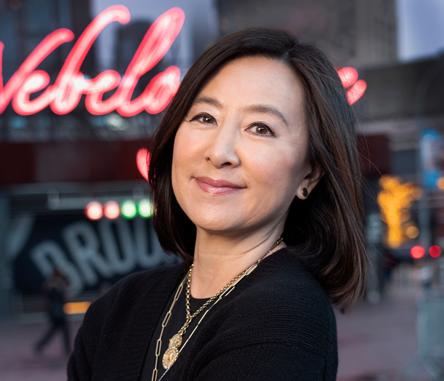
SUMMERFEST MUSIC DIRECTOR UNDERWRITERS
Raffaella and John Belanich
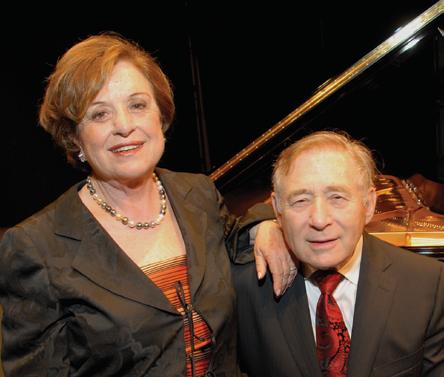
In addition to our Underwriters, the following pages pay tribute to all of our partners who make it possible to share the magic of the performing arts with our community.
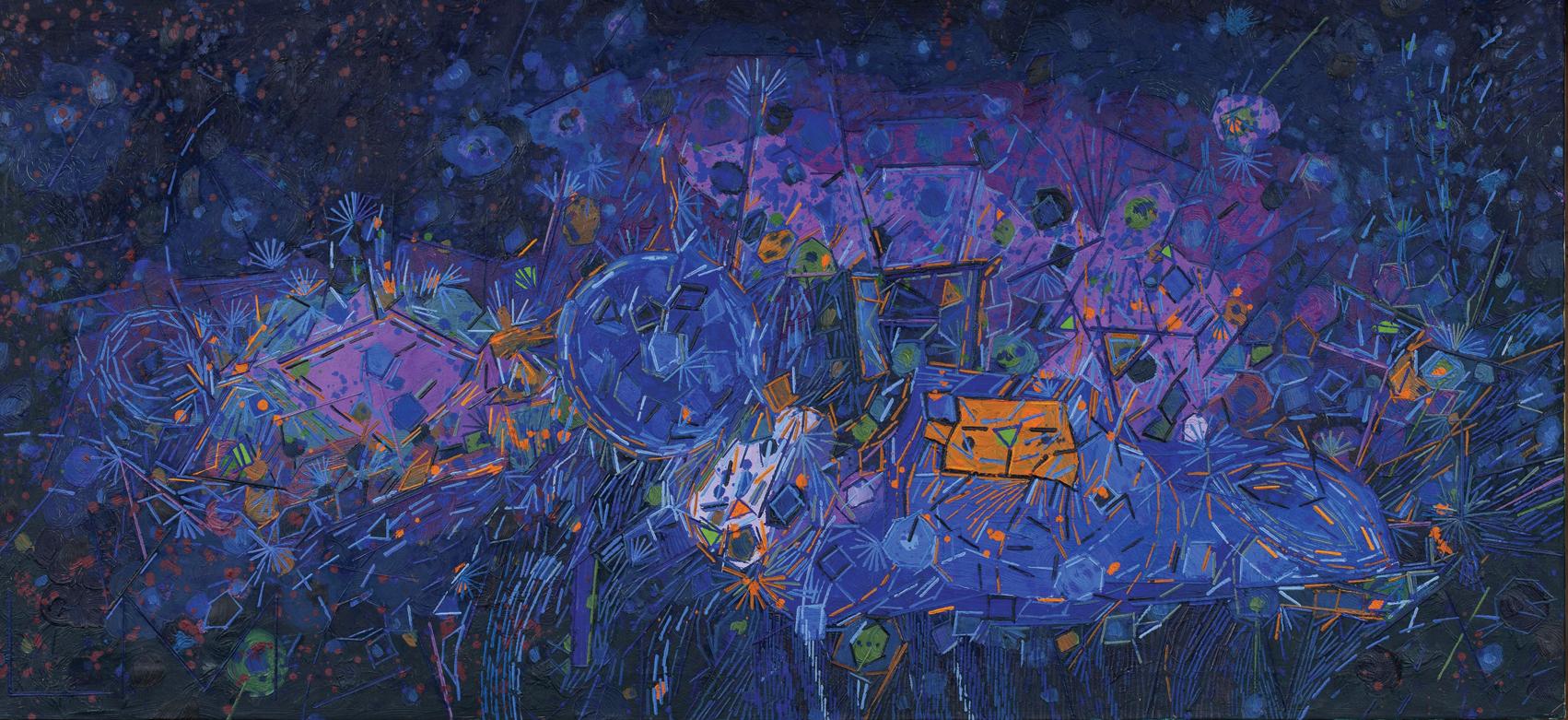
SummerFest Chair
Maureen Shiftan
Gala Chairs
Eleanor Y. Charlton
Sue Wagener
Artist Hosting Committee
Brenda Baker
Vivian Lim
Sheryl Scarano
Maureen Shiftan
Sue Wagener
Dolly Woo
Festival Founding Underwriters
Brenda Baker and Steve Baum
The Synergy Initiative Producers
Inon Barnatan
Clara Wu Tsai
SummerFest Music Director Underwriters
Raffaella and John Belanich
Medallion Society and Festival Sponsors
Judith Bachner and Eric Lasley
Brenda Baker and Steve Baum
Raffaella and John Belanich
Mary Ann Beyster
Bob and Ginny Black
Karen and James Brailean
Lisa Braun-Glazer and Jeff Glazer
Gordon Brodfuehrer
Eleanor and Ric Charlton
Mary Ellen Clark
Julie and Bert Cornelison
Jendy Dennis Endowment Fund
Martha and Ed Dennis
Silvija and Brian Devine
Barbara Enberg
Sue and Chris Fan
Joy Frieman
Wendy Frieman
Pam and Hal Fuson
Elaine Galinson and Herbert Solomon
Peg and Buzz Peg Gitelson
Lehn and Richard Goetz
Brenda and Michael Goldbaum
Margaret Stevens Grossman and Michael S. Grossman
John Hesselink
Teresa and Harry Hixson
Joan and Irwin Jacobs
Theresa Jarvis
Jo Kiernan and Bjorn Bjerede
Helen and Keith Kim
Angelina and Fred Kleinbub
Dorothea Laub
Vivian Lim and Joseph Wong
Viviana and Enrique Lombrozo
Kathleen and Ken Lundgren
Elaine and Doug Muchmore
Arlene and Louis Navias
Susan Shirk and Sam Popkin
Peggy and Peter Preuss
Sylvia and Steven Ré
Catherine Rivier
Stacy and Don Rosenberg
Leigh P. Ryan
Sheryl and Bob Scarano
Marge and Neal Schmale
Maureen and Tom Shiftan
Jeanette Stevens
Gloria and Rodney Stone
Joyce and Ted Strauss Family Trust
Haeyoung Kong Tang
Debra Turner
Susan and Richard Ulevitch
Sue and Peter Wagener
Abby and Ray Weiss
Dolly and Victor Woo
Clara Wu Tsai
Anna and Edward Yeung
Bebe and Marvin Zigman
Anonymous (2)
Festival Hosts
Mary Ann Beyster
Alicia and Rocky Booth
Lisa Braun-Glazer and Jeff Glazer
Mary Ellen Clark
Julie and Bert Cornelison
Ann Craig
Martha and Ed Dennis
Sylvia and Brian Devine
Barbara Enberg
Sue and Chris Fan
Lehn and Ritch Goetz
Cindy and Tom Goodman
Patricia Heestand
John Hesselink
Diane and John Kane
Karen Kohlberg
Vivian Lim and Joseph Wong
Susan Minnicks
Elaine and Doug Muchmore
Garna Muller
Sylvia and Steven Ré
Stacy and Don Rosenberg
Rimma and Jay Rosenberg
Arlene and Peter Sacks
Sheryl and Bob Scarano
Clifford Schireson and John Venekamp
Marge and Neal Schmale
Maureen and Tom Shiftan
Susan Shirk and Samuel Popkin
Elizabeth Taft
Haeyoung Kong Tang
Susan and Richard Ulevitch
Diana Vines and John Maulgen
Sue and Peter Wagener
Abby and Ray Weiss
Lise Wilson and Steve Strauss
Dolly and Victor Woo
Susan and Gavin Zau
Listing as of July 1, 2023
La Jolla Music Society depends on contributed income for more than 60% of its annual budget. We are grateful to all of our contributors who share our enthusiams and passion for the arts. Every donor is a valued partner and they make it possible for one of San Diego’s premier music organization to present year-round.
It is our honor to recognize the following donors.
($250,000 and above)
Brenda Baker and Steve Baum
The City of San Diego Commission for Arts and Culture
Joan and Irwin Jacobs
The Conrad Prebys Foundation
ANGEL
($100,000 - $249,999)
Raffaella and John Belanich
Mary Ellen Clark
Dorothea Laub
Debra Turner
Clara Wu Tsai and Joseph Tsai
BENEFACTOR
($50,000-$99,999)
Mary Ann Beyster
Ric and Eleanor Charlton
Peter Cooper and Erik Matwijkow
Julie and Bert Cornelison
Silvija and Brian Devine
Lehn and Richard Goetz
Elaine Galinson and Herbert Solomon
Angelina and Fredrick Kleinbub
Vivian Lim and Joseph Wong
Marge and Neal Schmale
Joyce and Ted Strauss Family Trust
Sue and Peter Wagener
Anna and Edward Yeung
Bebe and Marvin Zigman
($25,000 - $49,999)
Anonymous
Ann Parode Dynes and Robert Dynes
Barbara Enberg
Ingrid and Ted Friedmann
Jeanne Herberger
John Hesselink
Inamori Foundation
JP Morgan Chase
The Lodge at Torrey Pines
Viviana and Enrique Lombrozo
Sue and John Major
Arlene and Lou Navias
Jeanne and Rick Norling
Peggy and Peter Preuss
Steven and Sylvia Ré
Sheryl and Bob Scarano
Jeanette Stevens
Haeyoung Tang
Vail Memorial Fund
($15,000 - $24,999)
Anonymous (2)
Alison Alpert
Judith Bachner and Dr. Eric L. Lasley
Banc of California | Stephen Gamp
Jim Beyster
Gordon Brodfuehrer
Katherine and Dane Chapin
Cafe Coyote and Rancho Coyote Wines
Sharon L. Cohen
Ellise and Michael Coit
Jendy Dennis Endowment Fund
Martha and Ed Dennis
Nina and Robert Doede
Jennifer and Kurt Eve
Monica Fimbres
Debby and Wain Fishburn
Pam and Hal Fuson
Brenda and Michael Goldbaum
Teresa and Harry Hixson
Susan and Bill Hoehn
Helen and Keith Kim
Las Patronas
Monarch Cottage
Arman Oruc and Dagmar Smek
ProtoStar Foundation
Thomas Rasmussen and Clayton Lewis
Patty Rome
Stacy and Don Rosenberg
Leigh P. Ryan
Noni and Drew Senyei
Maureen and Thomas Shiftan
Stephanie and Nick Stone
Lise Wilson and Steve Strauss
($10,000 - $14,999)
Anonymous
Jeffrey Barnouw
Scott Benson
Marla Bingham and Gary Gallagher
Bjorn Bjerede and Jo Kiernan
Boys and Girls Foundation
Goldman Sachs
Raymond Chinn
Valerie and Harry Cooper
Una Davis and Jack McGrory
Jill Esterbrooks and James Robbins
Sue and Chris Fan
Joy Frieman
Wendy Frieman
Margaret Stevens Grossman and Michael Grossman
ResMed Foundation
Mao and Doctor Bob Shillman
Susan Shirk and Samuel Popkin
Dr. Seuss Foundation
Elizabeth Taft
Abby and Ray Weiss
Dolly and Victor Woo
($5,000 - $9,999)
Anonymous (3)
Julie and Edgar Berner
Ginny and Bob Black
Karen and Jim Brailean
Lisa and David Casey
Li-Rong Lilly Cheng
Grace and David Cherashore
George and Tallie Dennis
Debbe Deverill
The Hon. Diana Lady Dougan
JWDA Architects
Peter Farrell
Diane and Elliot Feuerstein
Beverly Frederick and Alan Springer
Sarah and Mike Garrison
Buzz and Peg Gitelson
Lisa Braun Glazer and Jeff Glazer
Molly and Thomas Grieco
Richard Harris and Sonya Celeste-Harris
Pati Heestand
Norma Hidalgo-Del Rio
Barbara and Paul Hirshman
Elisa and Rick Jaime
Theresa Jarvis
Barbara Kjos
Lois Lasry
Carol Lazier and Jay Merritt
Sylvia Liwerant
Kathleen and Ken Lundgren
Marilyn and Stephen Miles
Cynthia and George Mitchell Foundation
Elaine and Doug Muchmore
Joyce and Ron Nelson
Virginia Oliver
Shelby and Courtland Palmer
Marina and Rafael Pastor
Linda Platt
Catherine Rivier
Kathleen Roche-Tansey and David Tansey
Thalassa Journeys LLC
Clifford Schireson and John Venekamp
Todd R. Schultz
Reesey and David Shaw
Gerald and Susan Slavet
Gloria and Rod Stone
Susan and Richard Ulevitch
Ayse Underhill
Lynne and David Weinberg
Jo and Howard Weiner
Shara Williams and Benjamin Brand
Mary and Joseph Witztum
Katrina Wu
($2,500 - $4,999)
Dede and Mike Alpert
Emily and Barry Berkov
California Bank and Trust | Jathan Segur
Carolyn Bertussi
Jerry and Bernice Blake
Isabel and Stuart Brown
Janice and Nelson Byrne
Charles Schwab | Derek Anthony
June Chocheles
Carrie Greenstein
Cheryl Hintzen-Gaines and Ira Gaines
Jerri-Ann and Gary Jacobs
Elisa and Rick Jaime
Susan and David Kabakoff
Nancy Linke
Diana and Eli Lombrozo
Maggie and Paul Meyer
Gail and Edward Miller
Daphne Nan Muchnic
Robert and Allison Price
Carol Randolph and Robert Caplan
Eva and Doug Richman
Colette Carson Royston and Ivor Royston
Jean Sullivan and David Nassif
Ronald Wakefield
Western States Arts Federation
Lisa Widmier
Armi and Al Williams
($1,000 - $2,499)
Anonymous
Judith Adler
Arleene Antin and Leonard Ozerkis
Mike Belanich
Joan Jordan Bernstein
William Boggs
Center for World Music
Anthony Chong and Annette Nguyen Chong
Marilyn Colby
Ann Craig
Peggy Cravens
D’Addario Foundation
Lu Dai
Caroline DeMar
Renée and James Dunford
Richard Forsyth
Girard Foundation
Lynn Gorguze and Scott Peters
Warren Green
Andrea Harris
Linda Howard
Laura and Geoffrey Hueter
Dwight Kellogg
Sallay and Tae Kim
Melvin Knyper
Jain Malkin
Eileen A. Mason
Michael Masser
Margaret McKeown and Peter Cowhey
Ted McKinney
Susan and Doug McLeod
William Miller and Ida Houby
Sandra Miner
Norman Needel
Ursula Pfeffer
William Pitts and Mary Sophos
Sandra Redman
Marilies Schoepflin
Doreen and Myron Schonbrun
Anne and Ronald Simon
William Smith and Carol Harter
David Snyder
Jean Sullivan
Daniel Swain
Yvonne Vaucher
Mary Walshok
Erika Walter
Patricia and Christopher Weil
Cynthia Weiler
Carol Young
Howard and Christy Zatkin
Xiaomei Zhang
Bart Ziegler
($500 - $999)
Anonymous (2)
K Andrew Achterkirchen
John Bailey
Terence Balagia
Christopher Beach and Wesley Fata
James W. Burns
Joseph Calvino
Dr. Kathleen Charla
Elizabeth Clarquist
Eric Cohen and Bill Coltellaro
Caroline DeMar
Rick and Linda Dicker
James Emerson
Ferdinand Marcus Gasang
Mary Gegax
Martha and David Gilmer
Jeff and Patt Hall
Nabil Hanna
Kara Hanning
Carol Harter and William Smith
Paul and George Hauer
Laura and Geoffrey Hueter
Nancy Hong and Ardem Patapoutian
Joanne Hutchinson
Nancy Kossan
Kathleen Kovacs
Jane and Steven Lahre
Lewis Leicher
Charles Letourneau
Ruth and Ronald Leonardi
Elizabeth Lucas
Linda and Michael Mann
Lynn and Charles McPherson
Virginia Meyer
Esther Nahama
Andrea Oster
SD Project Heart Beat
Sigrid Pate and Glenn Butler
William Purves and Don Schmidt
Jennifer Reilly
Esther Rodriguez
Teri Rodriguez
Denise Selati
Tom Son and Eunmi Lee
Annemarie and Leland Sprinkle
Robin Stark
Anne Turhollow
Karen L Valentino
Victor A. Van Lint
Paul Viani
Suhaila White
LaShawn Williams
Symphorosa Williams
Desiree M. Wilson
Marty and Olivia Winkler
Susan and Gavin Zau
($250 - $499)
Anonymous
Robin Allgren
Kristin Alpert
Bruce H. Athon
Sue Andreasen
Hiroko Baba
Mary Lonsdale Baker
Inon Barnatan and Jason Feldman
Laura Birns
Scott Brinkerhoff
Marc Brown
Roanna Canete
Michael Casey
Jugo Cassirer
Kathy Chambery
Kimberly Chevallier
Linda Christensen and Gonzalo Ballon-Landa
Tiffany Chow
Candy Coleman
Amy Corton
Courtney Coyle and Steven McDonald
Jeane Erley
Robert C. Fahey
Stephen Feldman
Derek Floyd
L. Michael Foley
Beverly Fremont
Clare Friedman
Bruce Galanter
Morris and Phyllis Gold
Margie and Paul Grossman
Phyllis and Gordon Harris
Rodger Heglar
Matthew Herman
Linda and Ed Janon
David K. Jordan
Michael Kalichman
Zoe and Eric Kleinbub
Patricia M. Lending
Robin J Lipman
Vonnie Madigan
Robert L. Mazalewski
Christopher Moore
Pamela and Martin Morris
Kylie Murphy
Joani Nelson
Renee Packer
Marty and David Pendarvis
Carol Plantamura
Gary P. Poon
Ellen M. Quandahl
Laura A. Romero
Barbara Rosen
Cynthia Rosenthal
Jon M. Rosenthal
Leah Rosenthal and Matthew Geaman
Anne Rudolph
James F. Sallis
Hannah Schlachet
Marjorie Hansen Shaevitz
Bob Stefanko
Lee Talner
N.B. Varlotta
Monica Valdez
Colleen Vasquez
Jian Wang
Joyce Williams
Ian A. Wilson
Sandra Zarcades
Bill Ziebron
This list is current as of July 1, 2023. We regret any errors.
Please contact Annie Delleman at ADelleman@TheConrad.org or 858.526.3445 to make a correction.
Our gratitude to these Medallion Society Pillars founding members who have made significant four-year commitments that will help us better serve all of the San Diego region. The Conrad can be a catalyst to bring thousands of adults and children together through a common appreciation of the performing arts, which enhance the artistic fabric of our community.

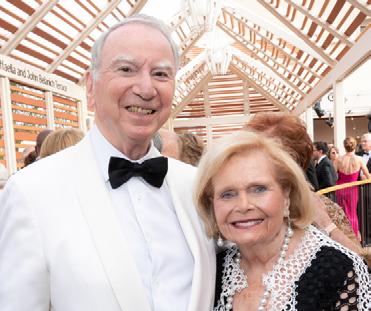








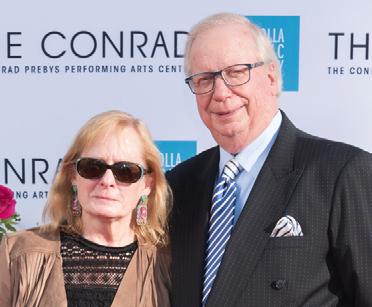
Thank you to these Pillars in the community.

Brenda Baker and Steve Baum
Joan and Irwin Jacobs
Raffaella and John Belanich
Mary Ellen Clark
Dorothea Laub
Debra Turner
Julie and Bert Cornelison
Silvija and Brian Devine
Elaine Galinson and Herbert
Solomon
Angelina and Fred Kleinbub
Vivian Lim and Joseph Wong
Sue and Peter Wagener
Barbara Enberg
Arlene and Louis Navias
Pam and Hal Fuson
Peggy and Peter Preuss
Anna and Edward Yeung
John Hesselink
Keith and Helen Kim
Bebe and Marvin Zigman
TOPAZ
Anonymous
Joan Jordan Bernstein
Mary Ann Beyster
Virginia and Robert Black
Dr. James C. and Karen A. Brailean
Buzz and Peg Gitelson
Drs. Lisa Braun-Glazer and Jeff Glazer
Margaret Stevens Grossman and Michael Grossman
Theresa Jarvis
Kathleen and Ken Lundgren
Elaine and Doug Muchmore
Don and Stacy Rosenberg
Leigh P. Ryan
Sheryl and Bob Scarano
Neal and Marge Schmale
Jeanette Stevens
Gloria and Rodney Stone
Susan and Richard Ulevitch
Shara Williams and Benjamin Brand
Dolly and Victor Woo
Elaine Galinson and Herbert Solomon
Marvin and Bebe Zigman
Marla Bingham and Gary Gallagher
Jeanette Stevens
Carolyn Bertussi
We are honored to have this extraordinary group of friends who have made multi-year commitments to La Jolla Music Society, ensuring that the artistic quality and vision we bring to the community continues to grow.
We are grateful for each patron for their passion and support of our dance programs.
Anonymous (2)
Brenda Baker and Steve Baum
June L. Bengston*
Joan Jordan Bernstein
Bjorn Bjerede and Jo Kiernan
Dr. James C. and Karen A. Brailean
Gordon Brodfuehrer
Wendy Brody*
Barbara Buskin*
Trevor Callan
Geoff and Shem Clow
Anne and Robert Conn
George and Cari Damoose*
Teresa and Merle Fischlowitz
Lynda Fox*
Ted and Ingrid Friedmann
Joy and Ed* Frieman
Sally Fuller
Maxwell H. and Muriel S. Gluck*
Dr. Trude Hollander*
Eric Lasley
Theodora Lewis
Joani Nelson
Maria and Dr. Philippe Prokocimer
Bill Purves
Darren and Bree Reinig
Jay W. Richen*
Leigh P. Ryan
Jack and Joan Salb*
Johanna Schiavoni
Pat Shank
Drs. Joseph and Gloria Shurman
Karen and Christopher Sickels
Todd R. Schultz
Jeanette Stevens
Joyce and Ted Strauss*
Elizabeth and Joseph* Taft
Norma Jo Thomas
Dr. Yvonne E. Vaucher
Lucy and Ruprecht von Buttlar
Ronald Wakefield
John B. and Cathy Weil
Carolyn Yorston-Wellcome* and H. Barden Wellcome*
Karl and Joan Zeisler
Josephine Zolin
It is easy to make a bequest to La Jolla Music Society, and no amount is too small to make a difference.
Here is a sample of language that can be incorporated into your will:
“I hereby give ___% of my estate (or specific assets) to La Jolla Music Society, Tax ID 27-3147181, 7600 Fay Avenue, La Jolla, CA 92037, for its artistic programs (or education, SummerFest, general operating, or where needed most).
The Legacy Society recognizes those generous individuals who have chosen to provide for La Jolla Music Society’s future. Members have remembered La Jolla Music Society in their estate plans in many ways—through their wills, retirement gifts, life income plans, and many other creative planned giving arrangements. We thank them for their vision and hope you will join this very special group of friends. If you have included LJMS in your estate plans, please let us know so we may recognize you.
*In memoriam
Boys and Girls Foundation
The Catalyst Foundation:
The Hon. Diana Lady Dougan
The Clark Family Trust
Enberg Family Charitable Foundation
The Fidelity Charitable Gift Fund:
The Carroll Family Fund
Drs. Edward & Martha Dennis Fund
Sue & Chris Fan
Don & Stacy Rosenberg
Shillman Charitable Trust
Inamori Foundation

The Jewish Community Foundation:
Jendy Dennis Endowment Fund
Diane & Elliot Feuerstein Fund
Galinson Family Fund
Joan & Irwin Jacobs Fund
Theodora F. Lewis Fund
Liwerant Family Fund
The Allison & Robert Price Family Foundation Fund
Cynthia and George Mitchell Foundation
Muchnic Foundation
The Conrad Prebys Foundation
ProtoStar Foundation
ResMed Foundation
Rancho Santa Fe Foundation:
The Susan & John Major Fund
The Oliphant Fund
The San Diego Foundation:
The Beyster Family Foundation Fund
The M.A. Beyster Fund II
The Karen A. & James C. Brailean Fund
The Hom Family Fund
The Scarano Family Fund
The Shiftan Family Fund
Dr. Seuss Foundation
Schwab Fund for Charitable Giving:

Ted McKinney & Frank Palmerino Fund
The Shillman Foundation
The Haeyoung Kong Tang Foundation
Vail Memorial Fund
Thomas and Nell Waltz Family Foundation
The John H. Warner Jr. and Helga M. Warner Foundation
In Memory of George Damoose, from: Ferdinand Gasang
Margie and Paul Grossman
Mary Manak
Martin and Pamela Morris
in Honor of Joy Frieman, from: Ferdinand Gasang
Sylvia Geffen
Susan & Richard Ulevitch
In Honor of OJ Heestand, from: Scott Benson
In Honor of Susan and Bill Hoehn's 50th Anniversary, from: Martha & Ed Dennis
In Memory of George Katz, from: Barbara and Paul Hirshman
In Memory of Teddie Lewis, from: Ferdinand Gasang
Dolly and Victor Woo
In Honor of Leah Rosenthal, from: Bart Ziegler
In Memory of Joanne Snider: Ferdinand Gasang
Jud, Lee Ann, and Tyler Groshong
Glenn Mosier
Kevin Persaon and Stephen Murphy
Renee Roth
Reissa Schrager-Cole and Hilary Cole
Kerry Symonds
Dolly and Victor Woo
In Honor of Jeanette Stevens: Derek Floyd






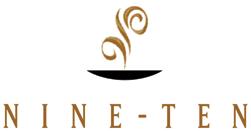


















For more than 50 years, La Jolla Music Society has nurtured a love of music by keeping one vision in mind: To present diverse programs of great music performed by the best musicians in the world. Today, that vision has reached beyond the intimate beauty of the chamber music ensemble and into new and diverse offerings such as orchestras, jazz ensembles, dance companies, renowned speakers, and robust education programs.
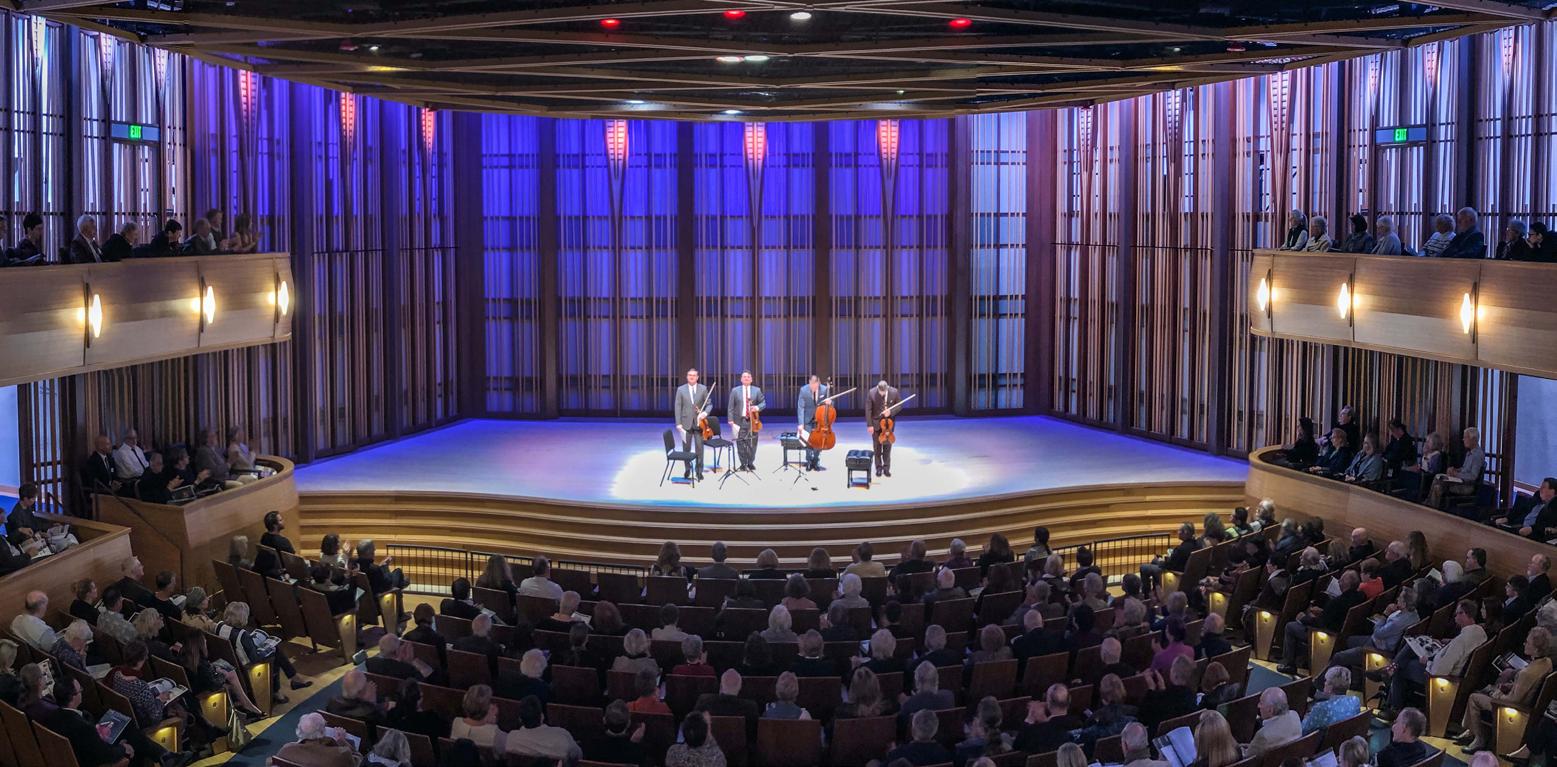
This impressive growth has been carefully conducted by an active and highly committed volunteer board of directors and dedicated staff. But most importantly, La Jolla Music Society’s progress has been sustained by the generosity of the community and ticket buyers.
TheConrad.org/donate

To make a donation by phone or if you have are interested in sponsoring concert, an artistic or learning & engagement program, please contact Ferdinand Gasang, Director of Development, at 858.526.3426 or FGasang@TheConrad.org
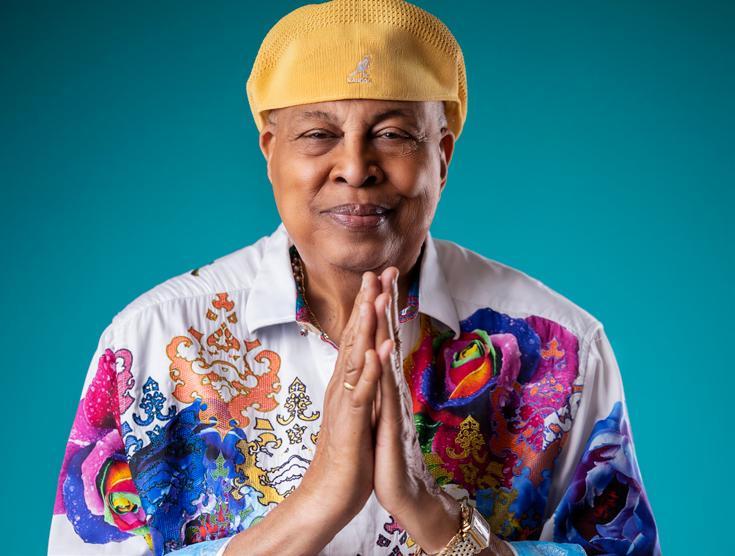

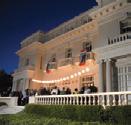
CALIFORNIA
Cabrillo Festival of Contemporary Music
cabrillomusic.org
Santa Cruz, CA
July 30-August 13
Carmel Bach Festival
bachfestival.org
Carmel, CA
July 15-29
La Jolla Music Society SummerFest
TheConrad.org
La Jolla, CA
July 28-August 26
Mainly Mozart All-Star Orchestra Festival

mainlymozart.org
San Diego, CA
June 15-24
Music@Menlo musicatmenlo.org
Atherton, CA
July 14-August 5
COLORADO
Aspen Music Festival and School

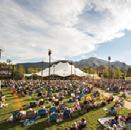


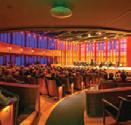
aspenmusicfestival.com
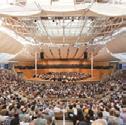

Aspen, CO
June 29-August 20
Bravo! Vail Music Festival
bravovail.org
Vail, CO
June 22-August 3
Colorado Music Festival
coloradomusicfestival.org
Boulder, CO
June 29-August 6
Strings Music Festival
stringsmusicfestival.com
Steamboat Springs, CO
June 24-August 23
IDAHO
Sun Valley Music Festival
svmusicfestival.org
Sun Valley, ID
July 30-August 24
Santa Fe Chamber Music Festival
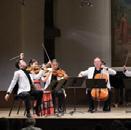
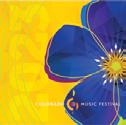


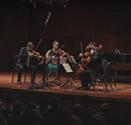
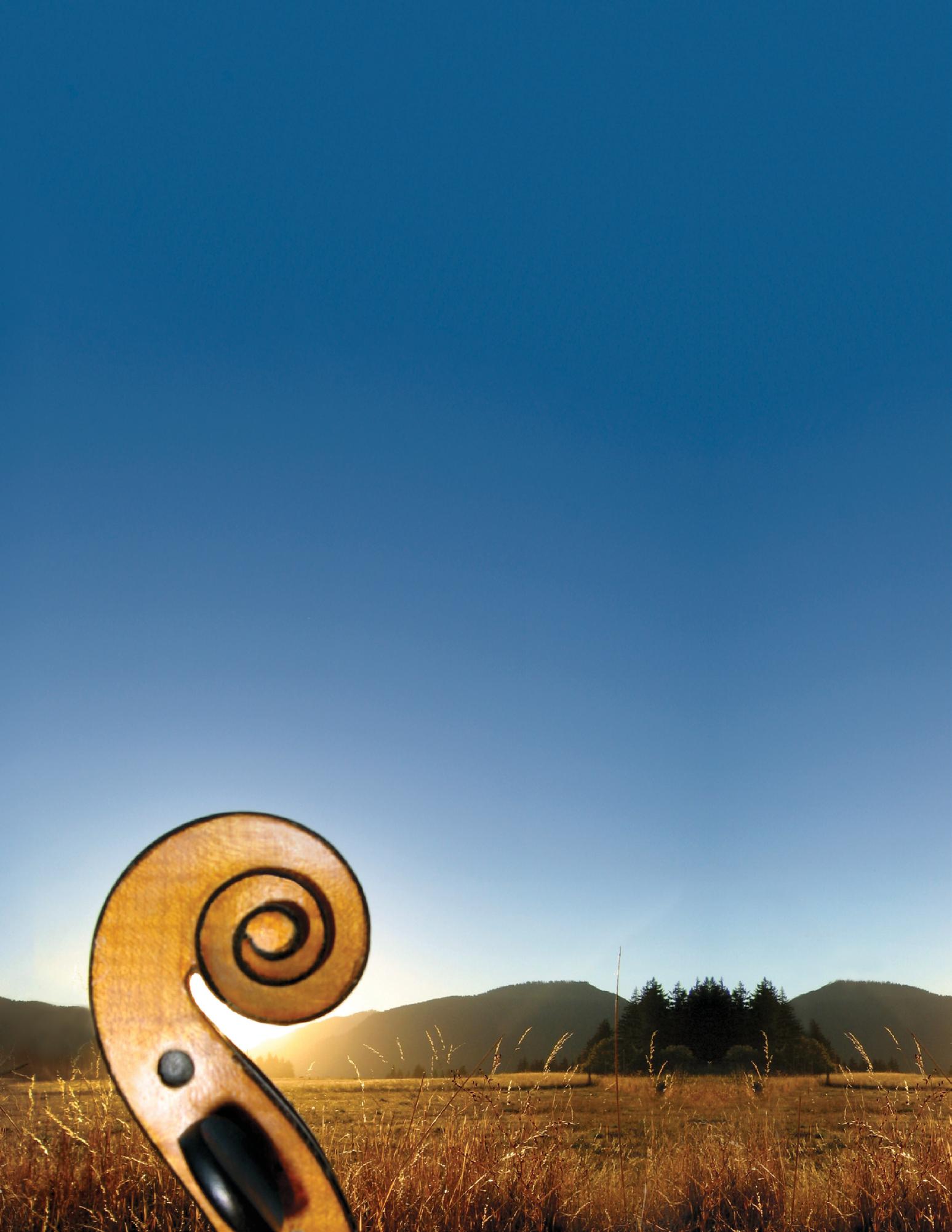
santafechambermusic.org
Santa Fe, NM
July 16-August 21
OREGON
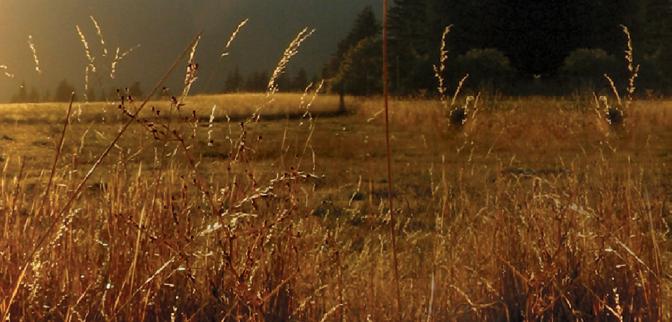
Chamber Music
Northwest Summer Festival

cmnw.org
Portland, OR
June 24-July 29
Oregon Bach Festival
oregonbachfestival.org
Eugene, OR
June 30-July 16
WASHINGTON
Seattle Chamber Music Society
Summer Festival
seattlechambermusic.org
Seattle, WA
July 3-29
WYOMING
Grand Teton
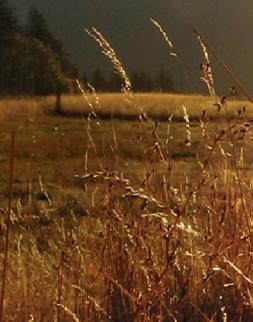
Music Festival
gtmf.org
Jackson, WY
June 30-August 19

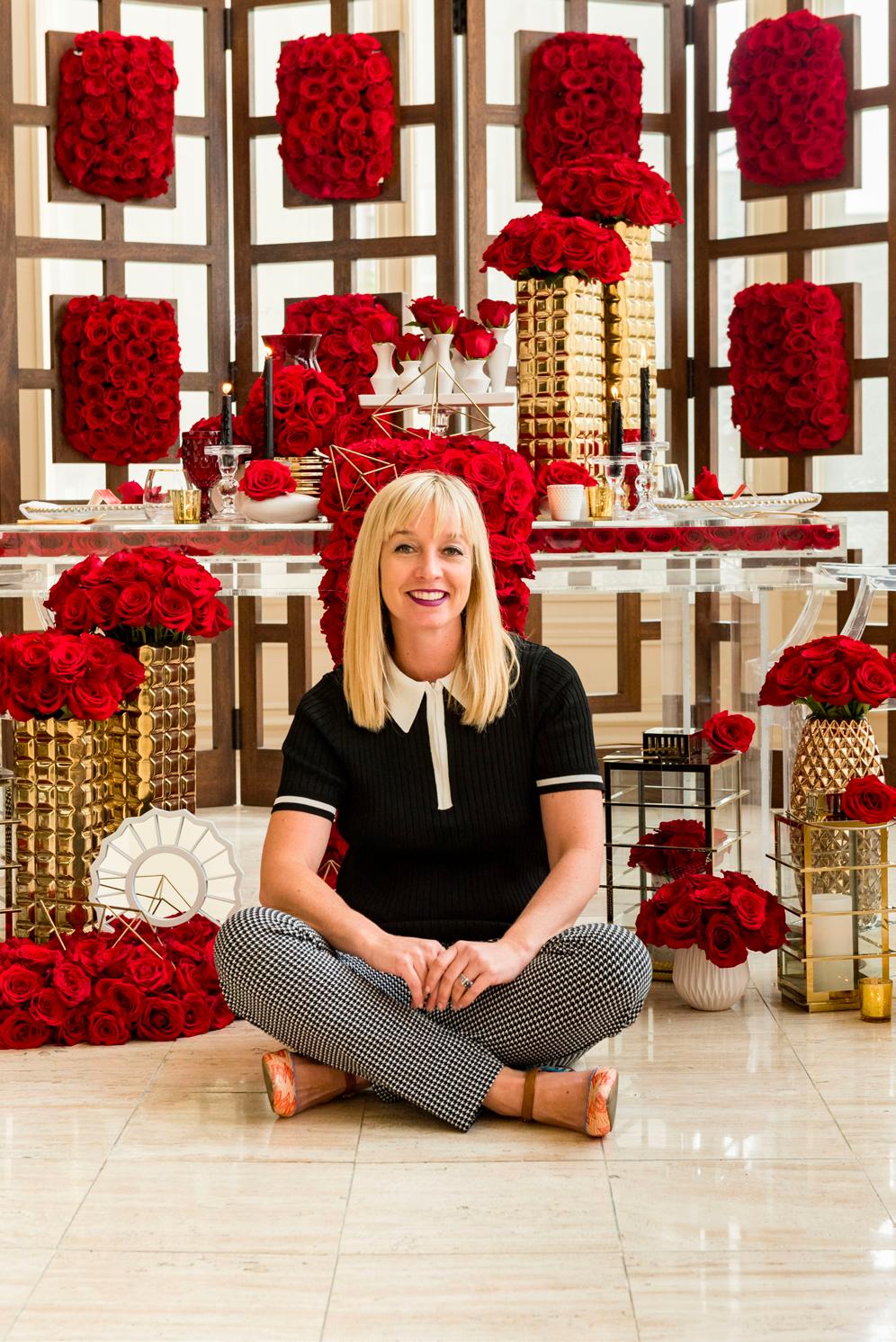




Every day, business owners, entrepreneurs, executives and community leaders are being empowered by Banc of California to reach their dreams and strengthen our economy. With more than $10 billion in assets and over 30 banking locations throughout the state, we are large enough to meet your banking needs, yet small enough to serve you well.
Learn more about how we’re empowering California through its diverse businesses, entrepreneurs and communities at bancofcal.com
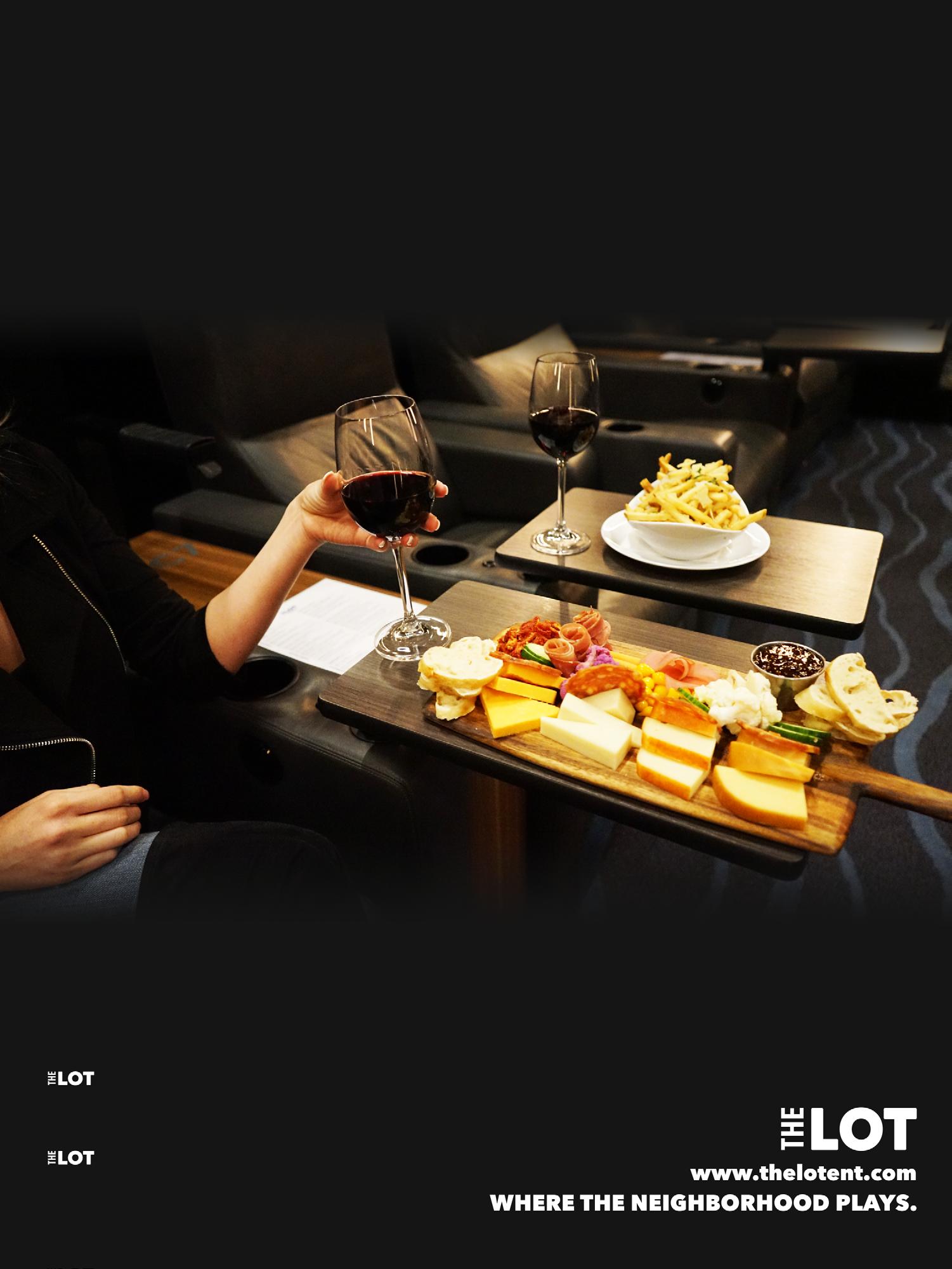









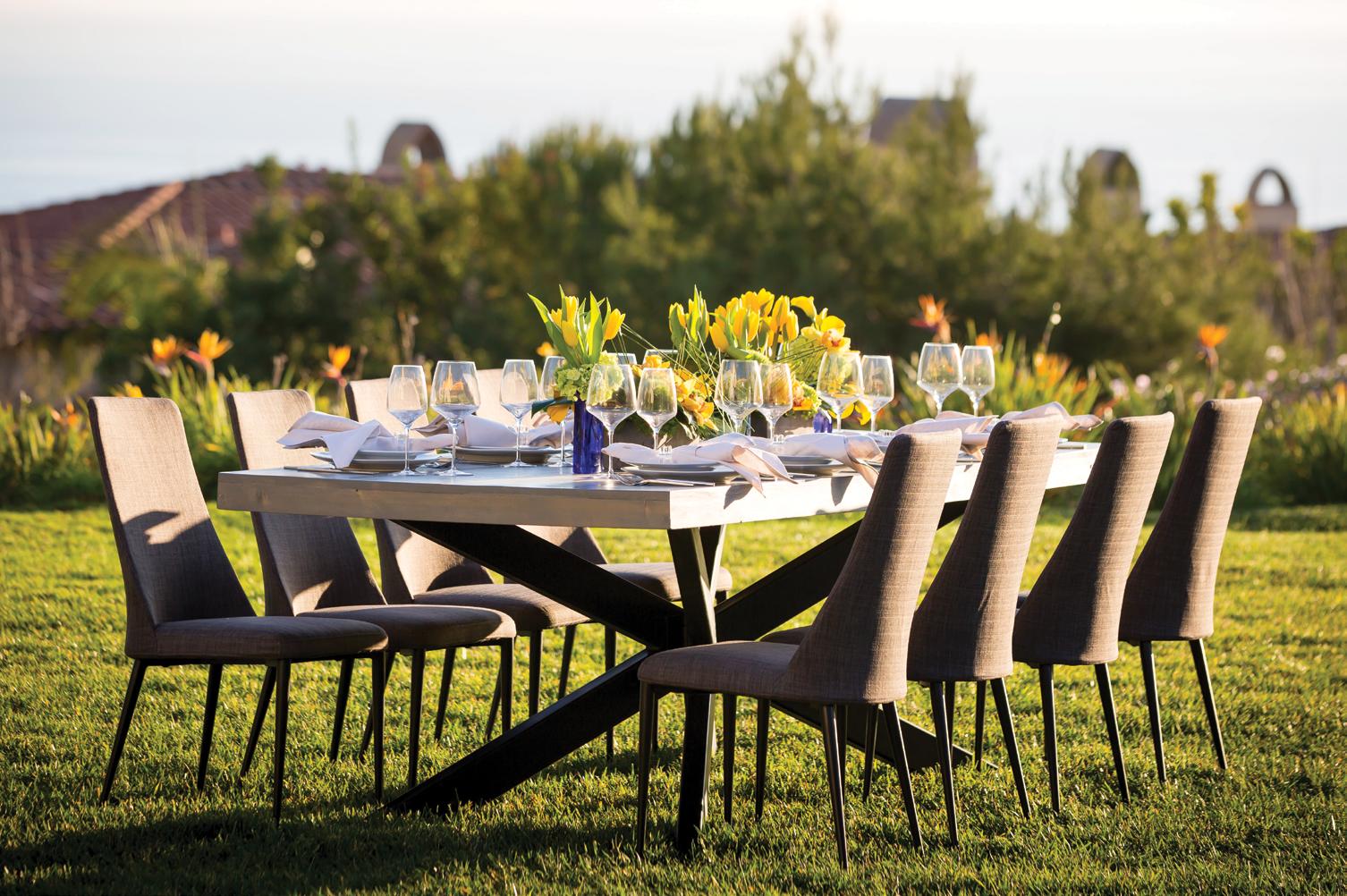
ResMed Foundation is pleased to support your excellent programs in musical arts education.
Board of Trustees
Edward A. Dennis, PhD Chairman
Mary F. Berglund, PhD Treasurer
Peter C. Farrell, PhD, DSc Secretary
Charles G. Cochrane, MD
Michael P. Coppola, MD
Anthony DeMaria, MD
Sir Neil Douglas, MD, DSc, FRCPE
Klaus Schindhelm, BE PhD
Jonathan Schwartz, MD
Kristi Burlingame Executive Director

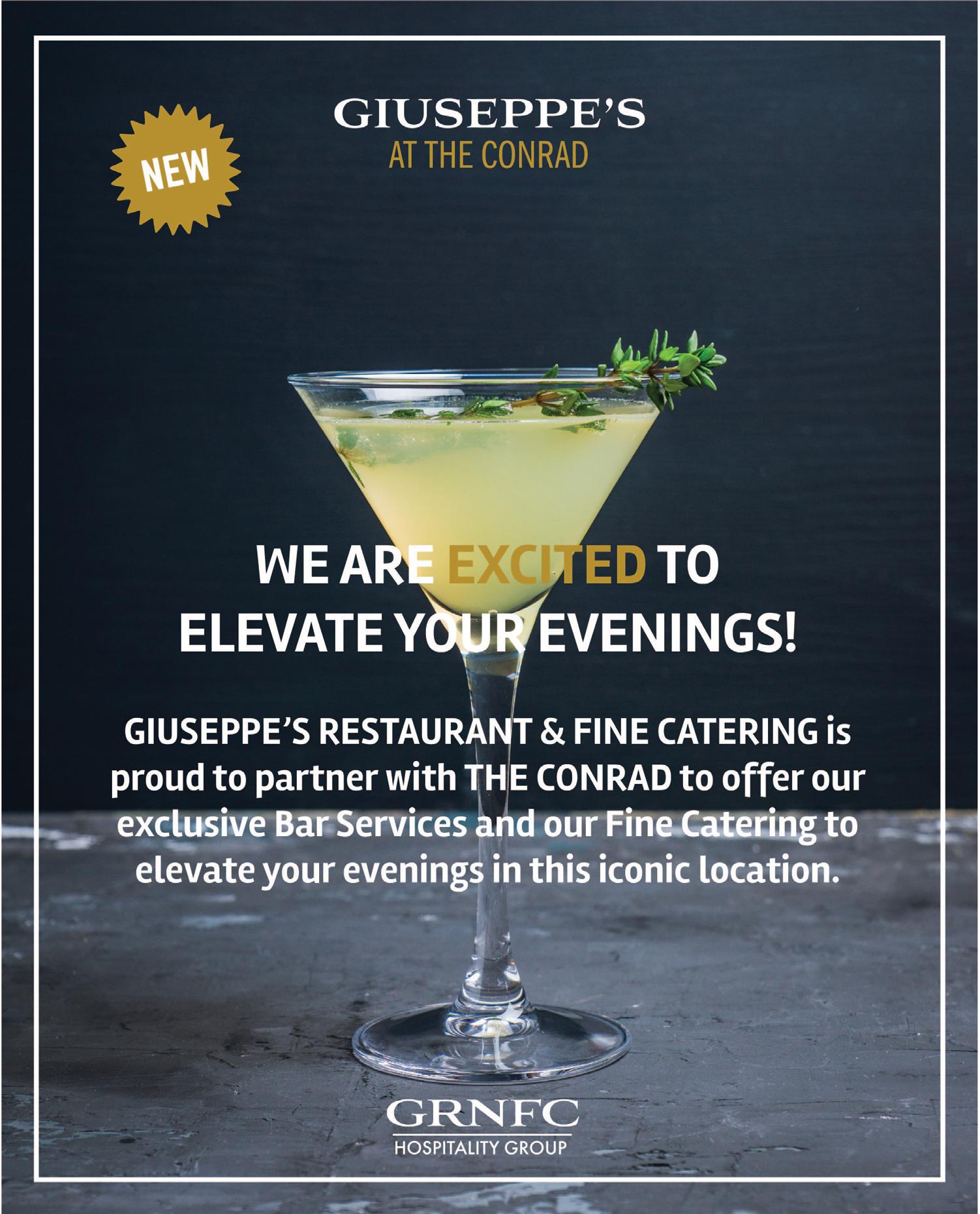
OCTOBER
ISATA KANNEH-MASON, piano
SATURDAY, OCTOBER 7, 2023 • 7:30 PM
Piano Series
THIBAUDET/BATIASHVILI/CAPUÇON TRIO*
FRIDAY, OCTOBER 13, 2023 • 7:30 PM
Revelle Chamber Music Series
MARIACHI HERENCIA DE MÉXICO & MARISOL
“LA MARISOUL” HERNÁNDEZ*
SUNDAY, OCTOBER 15, 2023 • 3 PM
Global Roots Series
SPECIAL EVENT: LILA DOWNS
DOS CORAZONES
SUNDAY, OCTOBER 22, 2023 7 PM
Balboa Theatre
BANDA MAGDA*
FRIDAY, OCTOBER 27, 2023 • 6 PM & 8:30 PM
Concerts @ The JAI
NOVEMBER
TURN IT OUT W/ TILER PECK & FRIENDS*
WEDNESDAY, NOVEMBER 1, 2023 • 7:30 PM
Dance Series
Civic Theatre
SILKROAD ENSEMBLE WITH RHIANNON GIDDENS*
AMERICAN RAILROAD
FRIDAY, NOVEMBER 10, 2023 7:30 PM
Global Roots Series
Balboa Theatre
SPECIAL FAMILY EVENT: COCO LIVE-TO-FILM CONCERT*
SATURDAY, NOVEMBER 11, 2023 • 3:30 PM & 7:30 PM
ALISA WEILERSTEIN
FRAGMENTS II
THURSDAY, NOVEMBER 16, 2023 • 7:30 PM
ProtoStar Innovative Series
Co-presented with the San Diego Symphony
MAO FUJITA*, piano
SUNDAY, NOVEMBER 19, 2023 3 PM
Discovery Series
FLOR DE TOLOACHE*
THURSDAY, NOVEMBER 30, 2023 6 PM & 8:30 PM
Concerts @ The JAI
MICHELE CAFAGGI — THE MAGIC OF BUBBLES*
SATURDAY, DECEMBER 2, 2023 • 10 AM & 11:30 AM
ConRAD Kids Series
The JAI
SEONG-JIN CHO, piano
SUNDAY, DECEMBER 3, 2023 • 3 PM
Piano Series
DAVINA AND THE VAGABONDS HOLIDAY SHOW
WEDNESDAY, DECEMBER 6, 2023 • 6 PM & 8:30 PM
Concerts @ The JAI
MATTHEW WHITAKER QUARTET*
SUNDAY, DECEMBER 10, 2023 • 5 PM & 7:30 PM
Concerts @ The JAI
JANUARY
SEAN MASON QUARTET*
SUNDAY, JANUARY 14, 2024 • 5 PM & 7:30 PM
Concerts @ The JAI
PETER HILLARY*
70 Years of Everest
THURSDAY, JANUARY 18, 2024 • 7:30 PM
Speaker Series
TATIANA EVA-MARIE & AVALON JAZZ BAND*
FRIDAY, JANUARY 19, 2024 • 6 PM & 8:30 PM
Concerts @ The JAI
TONY SIQI YUN*, piano
SUNDAY, JANUARY 21, 2024 • 3 PM
Discovery Series
LUCAS & ARTHUR JUSSEN*
THURSDAY, JANUARY 25, 2024 • 7:30 PM
Piano Series
LAKECIA BENJAMIN AND PHOENIX
SUNDAY, JANUARY 28, 2024 • 5 PM & 7:30 PM
Concerts @ The JAI
FEBRUARY
LES BALLETS TROCKADERO DE MONTE CARLO*
50TH ANNIVERSARY
FRIDAY, FEBRUARY 2, 2024 7:30 PM
Dance Series
Balboa Theatre
BALOURDET QUARTET
SUNDAY, FEBRUARY 4, 2024 3 PM
Discovery Series
BLUE NOTE 85TH ANNIVERSARY TOUR
SATURDAY, FEBRUARY 10, 2024 • 7:30 PM
Jazz Series
CONNECT TO THE CONRAD
RENÉE FLEMING*, soprano & INON BARNATAN, piano
ARTIST-IN-RESIDENCE
WEDNESDAY, FEBRUARY 14, 2024 7:30 PM
Recital Series
Co-presented by San Diego Opera
AROD QUARTET
SATURDAY, FEBRUARY 17, 2024 • 7:30 PM
Revelle Chamber Music Series
AMBROSE AKINMUSIRE TRIO*
FRIDAY, FEBRUARY 23, 2024 • 6 PM & 8:30 PM
Concerts @ The JAI
ANDY MANN*
Making Waves
THURSDAY, FEBRUARY 29, 2024 7:30 PM
Speaker Series
MARCH
LAWRENCE BROWNLEE, tenor
SATURDAY, MARCH 2, 2024 • 7:30 PM
Recital Series
Co-presented by San Diego Opera
MARIA IOUDENITCH*, violin & KENNETH BROBERG*,
piano
SUNDAY, MARCH 3, 2024 3 PM
Discovery Series
KRONOS QUARTET & SAM GREEN A THOUSAND THOUGHTS
FRIDAY, MARCH 8, 2024 7:30 PM
ProtoStar Innovative Series
KINGS RETURN
SATURDAY, MARCH 9, 2024 • 6 PM & 8:30 PM
Concerts @ The JAI
MEOW MEOW*
SUNDAY, MARCH 10, 2024 • 6 P.M & 8:30 PM
The JAI
BRANFORD MARSALIS QUARTET
THURSDAY, MARCH 14, 2024 • 7:30 PM
Jazz Series
ALPHABET ROCKERS*
SATURDAY, MARCH 16, 2024 • 3 PM
ConRAD Kids Series
NRITYAGRAM DANCE ENSEMBLE*
WEDNESDAY, MARCH 20, 2024 • 7:30 PM
THURSDAY, MARCH 21, 2024 • 7:30 PM
Dance Series
LADYSMITH BLACK MAMBAZO
FRIDAY, MARCH 22, 2024 • 7:30 PM
Global Roots Series
RAY CHEN, violin & JULIO ELIZALDE, piano*
THURSDAY, MARCH 28, 2024 • 7:30 PM
Recital Series
APRIL
JAKUB JOZEF ORLINSKI* WITH IL POMO D’ORO
BEYOND
SUNDAY, APRIL 7, 2024 3 PM
Revelle Chamber Music Series
QUATUOR ÉBÈNE*
FRIDAY, APRIL 12, 2024 • 7:30 PM
Revelle Chamber Music Series
ABEL SELAOCOE & MANCHESTER COLLECTIVE*
SIROCCO
SUNDAY, APRIL 14, 2024 • 7 PM
ProtoStar Innovative Series
JAZZ PIANO FESTIVAL
HERBIE HANCOCK
THURSDAY, APRIL 18, 2024 • 7:30 PM
Balboa Theatre
DAYRAMIR GONZALEZ* & HABANA ENTRANCÉ*
FRIDAY, APRIL 19, 2024 7:30 PM
Concerts @ The JAI
HIROMI’S SONICWONDER*
SATURDAY, APRIL 20, 2024 • 7:30 PM
HIROMI: THE PIANO QUINTET
FEATURING PUBLIQUARTET*
SUNDAY, APRIL 21, 2024 3 PM
ProtoStar Innovative Series
YEFIM BRONFMAN, piano
FRIDAY, APRIL 26, 2024 • 7:30 PM
Piano Series
MAY
KAKI KING*
SATURDAY, MAY 4, 2024 10 AM & 11:30 AM
ConRAD Kids Series
The JAI
JUNCTION TRIO
CONRAD TAO, piano; STEFAN JACKIW, violin; JAY CAMPBELL, cello
SUNDAY, MAY 5, 2024 • 3 PM
Revelle Chamber Music Series
BALLETS JAZZ MONTRÉAL*
DANCE ME
WEDNESDAY, MAY 15, 2024 • 7:30 PM
Dance Series
Civic Theatre
PABLO FERRÁNDEZ*, cello
THURSDAY, MAY 16, 2024 • 7:30 PM
Recital Series
CHARLES MCPHERSON & FRIENDS
Featuring John Beasley and The Next Generation
SATURDAY, MAY 18, 2024 • 6 PM & 8:30 PM
Concerts @ The JAI
JIJI*, guitar
SUNDAY, MAY 19, 2024 • 3 PM
Discovery Series
TERRY VIRTS* How to Astronaut
THURSDAY, MAY 23, 2024 • 7:30 PM
Speaker Series
BRUCE LIU*, piano
FRIDAY, MAY 31, 2024 • 7:30 PM
Piano Series
JUNE LARRY & JOE*
SATURDAY, JUNE 1, 2024 • 6 PM & 8:30 PM
Concerts @ The JAI
CHRIS THILE
FRIDAY, JUNE 7, 2024 • 7:30 PM
Global Series
THE CHARLES MCPHERSON QUINTET*
SUNDAY, JUNE 9, 2024 • 5 PM & 7:30 PM
The JAI